In order to view this website correctly, you will need to have JavaScript enabled in your browser.
Skip to main content.
- Travel Trade & Press
- School Trips
- Business Events
GO TOKYO The Official Tokyo Travel Guide
New & Now
Tokyo Area Guide
Things to Do
- Plan Your Trip
- Choose Language 日本語 ENGLISH 中文(简体) 中文(繁體/正體) 한글 ภาษาไทย DEUTSCH ITALIANO ESPAÑOL FRANÇAIS
Share this page
- X (Twitter)
- My Favorites
- All New & Now options
- New & Trending
- Spring Guide
- Summer Guide
- Autumn Guide
- Winter Guide
- Places The Locals Go
- Stories & Guides
- Another Tokyo
- All Things to Do
- Attractions
- Food & Drink
- Onsen & Bathhouses
- Art & Design
- Anime & Manga
- Time Trip Tokyo
- Walks & Tours

Tokyo Event Calendar
- All Tips to Plan Your Trip
- Accommodations
- Getting to Tokyo
- Getting Around
- Airport & Cruise Terminal Access
- Customs & Manners
- Weather & Geography
Visa & Immigration
- Tokyo at a Discount
- Tours of Tokyo
- TOKYO Brochures
- PDF Maps & Guides
Tourist Information Centers
- Online Tourist Guide
My Tokyo Guide
See something interesting? Click on the heart button in the article to add a page from this site to My Favorites.
Popular Keywords
- Guide Service
Advanced Search
- From open calendar
- To open calendar
- All Stories & Guides
Select Language
- ESPAÑOL
- FRANÇAIS
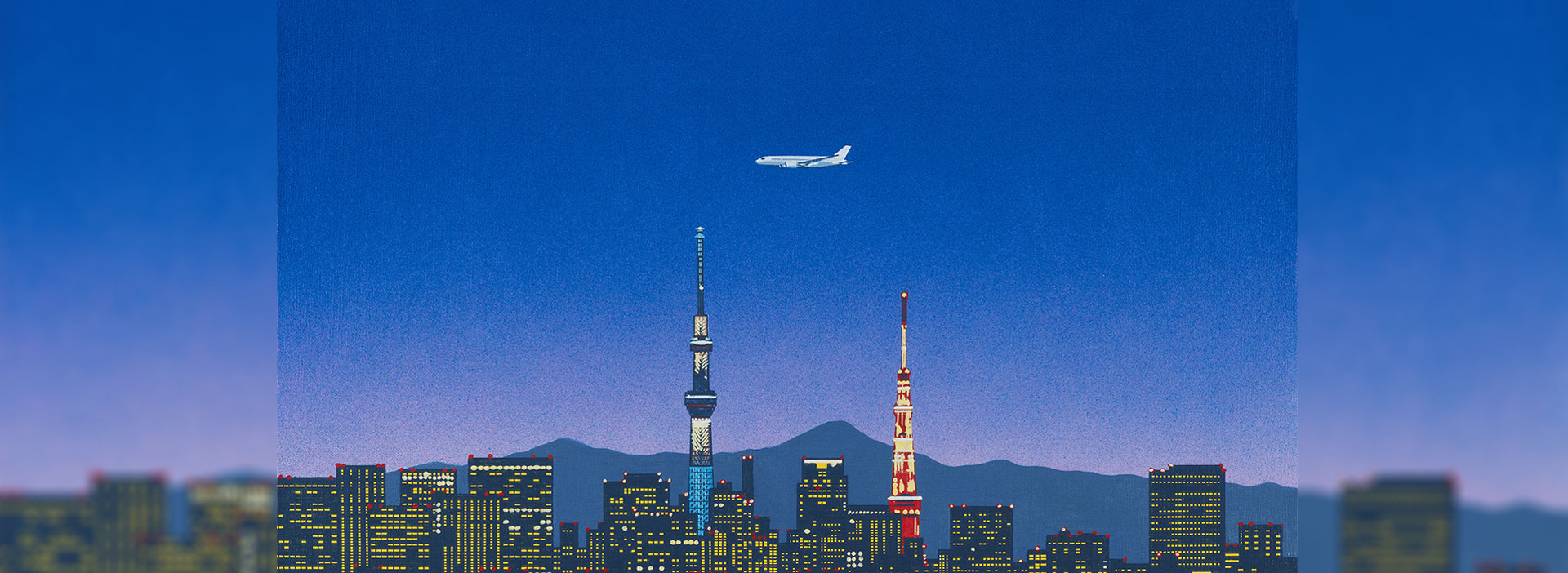
Main content starts here.
Explore By Interest
Cheap Tickets & IC Cards
The best time to visit Tokyo
Public Holidays
Arriving in Tokyo can be both a thrilling and bewildering experience—especially if it's your first visit. In order to get around as smoothly as possible, make sure to familiarize yourself with the basics. Follow the links below to find out how to get a Travel IC card, which is the easiest method to pay for transit in the city. We also cover the best ways to get connected to the internet, including pocket Wi-Fi and travel sim cards. Also check out our tips on how to save while shopping, what to do in an emergency, what to pack for each season, and a great deal more.
Useful information
Manners & Culture
Weather (When to Visit)
Money in Tokyo
Luggage & Storage
Useful Apps
Wi-Fi & Connectivity
Accessibility
Health & Safety
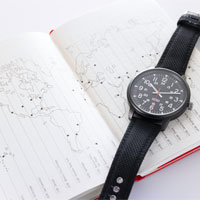
Tokyo is nine hours ahead of GMT, with no daylight saving time. In summer it's light out until around 19:30, but in the winter the nights draw in around 17:00.
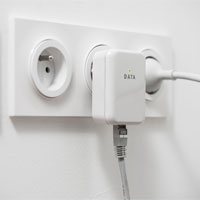
Power Plug & Electricity
The voltage in Japan is 100V and the frequency is 50-60 Hz. The socket is type A, with two flat holes. Using foreign electric appliances will require a frequency converter and plug adaptor.
Tourist Information & Guides
Japanese Prefectural Tourism Promotion Corner
Tokyo Tourist Information Center - Online Tourist Guide
Tokyo Volunteer Guides
Popular Area
Seasonal guide.
- Visit Tokyo >
- About This Site
- Font Size and Color
Copyright © Tokyo Convention & Visitors Bureau. All rights reserved.
Best Time to Visit
Weather & Climate
Neighborhoods to Know
Best Hotels
Narita International Airport Guide
Haneda Airport Guide
Public Transportation
48 Hours in Tokyo
Day Trips From Tokyo
Top Things to Do
Free Things to Do
Things to Do With Kids
Best Parks in Tokyo
Beaches Near Tokyo
Shopping in Tokyo
Top Markets to Visit
Food to Try in Tokyo
Tokyo's Top Restaurants
Nightlife in Tokyo
Your Trip to Tokyo: The Complete Guide
Marco Bottigelli / Getty Images
Jamie Hergenrader is the Commerce Director of the Travel Group at Dotdash Meredith where she leads the content strategy of product reviews and recommendations for the company's travel brands. She joined the company in 2018 and has nearly a decade of experience writing and editing for travel and lifestyle publications.
Japan has seen a steep increase in tourism during the past few years (close to 32 million people visited the country in 2018) , and Tokyo is one of the top destinations for those making the trip. Home to centuries of rich history, a world-renowned food scene, and diverse collection of neighborhoods to explore, it’s no wonder this metropolis is on travelers’ radar. Use this guide to plan your ultimate trip to this bucket list destination.
Planning Your Trip
- Best Time to Visit: The spring is a beautiful time to see cherry blossoms blooming around the city, which typically happens in March and April.
- Language: Japanese
- Currency: Yen (110 yen equals about $1)
- Getting Around: Tokyo has an extensive transit network with local subways and regional trains that can take you anywhere you need to go.
- Travel Tip: Many businesses in Tokyo are cash only with only 20 percent of payments being cashless. Not all ATMs take foreign cards, but the ones inside 7-Eleven stores do, so pop inside any location to pick up some cash. (Consider taking out large amounts each time to avoid multiple ATM trips and fees.)
Things to Do
Simply wandering around the neighborhoods of Tokyo —from the bright lights of Shinjuku to the arcades of Akihabara and the shop-lined streets of Harajuku—is one of the best things you can do to stumble upon great sights, get a sense of the people and culture, and get a lay of the land.
Experience Japan’s incredible food scene beyond meal times. Take a sushi-making class at the Tokyo Sushi Academy, attend a sake tasting to sample varieties of the brewed beverage, and visit the famous tuna auction at Toyosu Market on Odaiba Island ( apply here in advance to be able to attend).
Visit the temples and shrines in the city. Senso-ji, Tokyo’s most iconic and oldest temple, dates back to the seventh century and is located right in the midst of the city’s hustle and bustle, offering a stark contrast between old and new Tokyo. The Meiji Shrine offers a more peaceful atmosphere adjacent to the sprawling Yoyogi Park.
Go shopping. For all things quirky and cute ( “kawaii ” in Japanese), head to Takeshita Street in Harajuku; for high-end fashion, you’ll find designer stores and high-end boutiques (and world-class architecture) in Omotesando; and shop for any and all electronics in Akihabara.
Attend a sumo match , Japan’s national sport. Going to a tournament would be the best experience, but if your visit isn’t timed right for that, you can also try to watch a practice session. The easiest way is to book a group tour .
Get tickets for a baseball game to cheer on the home team, the Tigers, at the Tokyo Dome in the neighborhood of Bunkyo. Baseball is one of the most popular sports in Japan, but it’s a different experience than you might be used to in the U.S. You might notice that cheering happens in a somewhat organized fashion, so look to the locals for when to show your spirit. And when you need a bite, head to one of the vendors for a bento box of delicious bites (quite an upgrade from a chicken bucket and a beer you might be used to).
Plan more of your itinerary with our guides of the best things to do in the city , free things to do , and how to spend 48 hours in Tokyo .
What to Eat and Drink
Tokyo is known as one of the world’s top dining destinations, and rightfully so. While in Tokyo, you should try sushi, ramen, and other well-known Japanese dishes , but you can also experience a sampling of dishes from other regions of Japan. When ordering sushi, order “omakase” at least once, which is the chef’s hand-picked selection, something that can typically be pretty expensive to do outside of Japan. (Sushi chefs train for up to 10 years to perfect the art of this precise dish, so you know you’re getting the top quality and presentation.) And be sure to order Japanese pancakes—the dense, thick, flapjacks you’ve likely seen on Instagram—at least once on your trip, and then walk off the sugar coma while you explore.
If you’re a tea drinker, you’ll be spoiled in Tokyo—anywhere you go will have tea available, and matcha is everywhere in the form of tea and matcha-flavored sweets, such as ice cream, cookies, and more. For something a little stronger, Japan is known for sake, but the country is also making a name for itself in the whiskey scene. The country’s most famous and oldest distillery is Yamazaki.
Tip: When you’re roaming the streets of Tokyo, you’ll walk past restaurant after restaurant packed with people, but be sure to look up—many establishments are located on the second, third, or even higher floors of buildings. There are usually signs on the ground level directing you to the options above.
Learn more about the dining scene with our guide to the best restaurants in Tokyo .
Where to Stay
Tokyo's neighborhoods each offer a distinct vibe for visitors, from chill and laid back to electric and lively.
Shinjuku: Mostly known for its nightlife, including the Kabuki-cho (red light district) and Memory Lane , this area is also very convenient for getting around the city. Shinjuku Station is huge, offers service to several subway lines and trains, and also has several restaurants and shops.
Ginza: If you love to shop, this is the neighborhood for you, with several high-end stores, famous department stores, and the country’s largest Uniqlo. It’s also close to Tokyo Station, another major transit hub, and the Imperial Palace, which is worth a visit.
Harajuku: For a more eclectic vibe, stay in Harajuku. Walk down Takeshita Street, a colorful pedestrian walkway lined with stores and cosplay shops and visit the Owl Cafe, and then head away from the quirkiness for a bit to visit the Meiji Shrine.
Ueno: For more relaxed and cultural surroundings, book a stay in this neighborhood, which is home to a large park (a nice break from city days) and also several museums, including the Tokyo National Museum, the National Museum of Nature and Science, the Tokyo Metropolitan Art Museum, and the Museum of Western Art.
Find out more about the best neighborhoods and also the top hotels to stay at in Tokyo .
Getting There
There are two main airports that international travelers use to fly into Tokyo.
- Narita International Airport : This is the main international airport for those arriving or leaving from Tokyo. It’s a little further outside of Tokyo in the Chiba prefecture, but it’s easily accessible by train. The Narita Express train is one of two Japanese trains that can easily accommodate large luggage.
- Haneda Airport : Although it offers fewer long-haul international flights than Narita, the number of carriers has increased in the past few years, so it’s worth looking into, as this is the closest airport to Tokyo’s city center (about 30 minutes by train).
Tip: Many hotels in Tokyo and other Japanese cities offer a luggage transfer service. For a fee (varies by weight but usually about $20 per bag), you can have your luggage shipped from your current hotel to your next hotel or to an airport so that you don’t need to carry it around with you, which is ideal for long stays with multiple or heavier bags. It usually takes one day, so be sure to keep a smaller bag of essentials with you in the meantime.
Culture and Customs
- Tipping is not customary in Tokyo, and in some cases, can actually be considered offensive.
- Tokyo has a highly efficient and organized culture and way of life, which is especially evident in the transit system . Trains run seamlessly and on time; the stations are clearly marked, including directing pedestrian traffic; and if you’re traveling during rush hour, you might see professional train pushers whose job is to push commuters into the train to fit all the people inside while still keeping the trains on schedule.
- The proper way to greet someone is by bowing, which can range from a slight dip of your head to bending from your waist. (The extent of your bow correlates to the person you are greeting, with the former being for casual interactions and the latter being used in more formal situations to show greater respect.)
- People in Tokyo are very friendly and approachable! But if you do encounter a language barrier, the Google Translate app is very useful in facilitating conversation with locals (and also translating signs and menus in Japanese). You can download the app (and the Japanese language on the app) before your trip so that it will work while you’re offline.
Money-Saving Tips
- When you land at Narita or Haneda, you can purchase a discounted transit ticket combo that is good for your ride from the airport to the city center and also to use on the Tokyo subway for a certain amount of time (varies by airport). Find out about ticket combo options from Narita at the website here , and Haneda train and ticket pricing can be found here .
- If you do purchase a Japan Rail Pass (JR) to explore the country, that is also valid on some subway lines within Tokyo. Look for “JR” to see what’s included.
- Take advantage of tax refunds while shopping. When you show your passport, you can pay the tax-free price for items. They’ll seal your items (they can’t be opened until you leave Japan), and give you a receipt that you may need to show at the airport before your flight.
Learn more about cheap and free activities in Tokyo with our guide .
JTB Tourism Research & Consulting Co. "Japan-bound Statistics." May 13, 2020.
Japan National Tourism Organization. "Withdrawing Cash and Paying Cashless As a Tourist in Tokyo." November 16, 2019.
Japan Rail Pass. "Train travel in Japan: a complete guide." February 8, 2019.
The Top 18 Things to Do in Tokyo
48 Hours in Tokyo: The Perfect Itinerary
15 Must-Try Dishes in Tokyo
Kyoto Guide: Planning Your Trip
The 10 Best Places to Shop in Tokyo
The Top 15 Free Things to Do in Tokyo
Every Neighborhood to Know in Tokyo
The Top 9 Markets to Visit in Tokyo
18 Best Things to Do in Japan in Summer
Seoul Guide: Planning Your Trip
Tokyo Haneda Airport Guide
Your Trip to Madrid: The Complete Guide
How to Travel From Narita Airport to Tokyo by Train, Bus, and Car
Your Trip to Montreal: The Complete Guide
The Complete Guide to the Tokyo Olympics
- Work with Me
- Start a Blog
- Yearly Roundups
- 101 in 1001 Goals
- how to start a travel blog
- tips for new bloggers
- write me a guest post!
- Work With Me
A Passion and A Passport
Proving Travel is Possible with a Full-Time 9-5
3 Days in Tokyo: The Perfect Tokyo Itinerary
last Updated: November 29, 2023 japan tokyo
FYI: Affiliate links may be sprinkled throughout the awesome, free content you see below. I’ll receive a small commission when you purchase from my links (at no extra cost to you), which I’ll totally blow on adult things like boba tea and avocado toast. As always, thanks for the support.
Headed to Japan and looking to fill your time with 3 days in Tokyo?! You’re in luck, my matcha-loving, sushi-searching friend. This Tokyo itinerary has got exactly what you need to help plan your trip!
Tokyo is a sprawling city that connects modernity with deep Japanese tradition, which shines through in its rich history, fascinating attractions, and cosmopolitan neighborhoods. From its mouth-watering food to its beautiful architecture and parks, the Japanese capital city truly has something for any kind of traveler.
I spent a perfect 10 days in Japan last cherry blossom season ( full itinerary here ), and we’re hoping to head back to Tokyo for an extended long weekend this year! Basically to eat everything and then some, but we don’t need to talk about my indulgent, over-the-top food habits (like traveling 15 hours via air for some vending machine ramen).

As an international flight hub for several airlines, Tokyo is the perfect place to visit en route to another destination, or simply on its own! If you’ve got 3 days in Tokyo to explore, you can see most of the city’s highlights. Buckle up for this detailed itinerary which will explain what to do in Tokyo in 3 days, with all the details you need to know to plan your trip there.
Note : This Tokyo itinerary is jam-packed with activities for the ultra-adventurous traveler. However, if you’re looking for a more laid-back schedule (no judgment here!), don’t feel like you need to do everything I’ve listed. Use this detailed Tokyo travel blog as a foundation, then prioritize the activities that sound most interesting to you!
Read Next: COMPLETE 10 Day Japan Itinerary (Perfect for first-timers to the country)
Pre-Travel Guide to Tokyo
When to visit tokyo.
Tokyo is truly a year-round destination – each season boasts something different and exciting for visitors to the city. However, not all seasons are created equal. Winters in Tokyo can be dark and cold, while summers are sweltering hot and humid. Spring and autumn are often very mild and temperate, with the best weather occurring between March and May, and then again from October to December.
Personally, I’d recommend traveling to Tokyo during these months for the mild weather, perfect for wandering around on foot and experiencing the city’s open-air attractions.
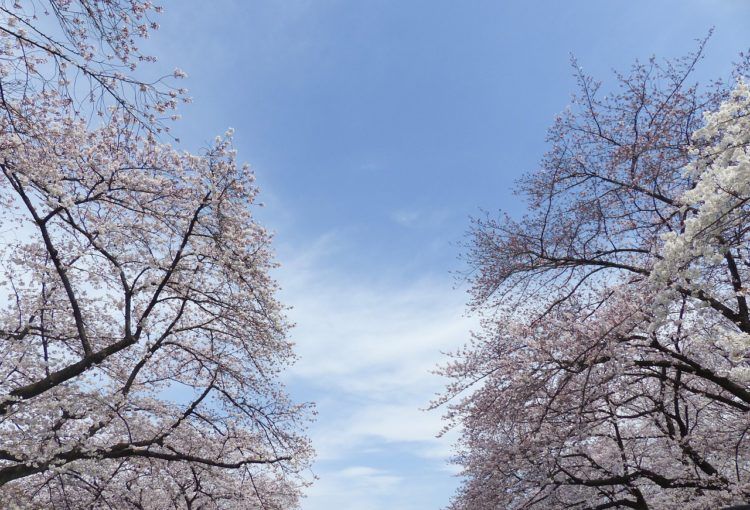
If you’re flexible on dates, one of the most beautiful times of year to visit Tokyo is during the annual blooming of the cherry blossoms. During the early spring, the cherry trees light up many areas of the city in white and pink blooms, and it’s truly a spectacle! While the city is often more crowded with tourists during this time of year, the cherry blossoms are certainly a once-in-a-lifetime thing to see. You can check predictions for the peak cherry blossom seasons this year here .
If you’d prefer to visit in the end of the year, you can opt to time your visit with the fall foliage, during which the city’s trees turn bright red, orange, and yellow.
Read Next: When to Visit Japan (Month by Month)
How to Get Around Tokyo
One thing to know about traveling in Tokyo is that taxis can be extremely expensive. We’re talking about potentially hundreds of dollars to get across the city. Uber operates in Tokyo as well, but it’s often just as expensive (if not more) as the taxis. Taxis are typically a safe transportation option for tourists, but the costs can add up super quickly and you usually need to pay in cash.
Luckily for budget travelers, Tokyo has a world-renowned public transportation system that’s easy to use even as a tourist. On the metro, you can pay by the ride (typically 170 to 310 JPY each way) or buy an unlimited multi-day pass (600 yen per day – recommended if you’ll be using the metro to get around).
In general, the metro maps have English translations and each stop is announced on the metro’s speakers in both Japanese and English. From both Narita (NRT) and Haneda (HND) airports, you can take a direct airport train into the city center for a much more reasonable price than the taxis.
Where to Stay in Tokyo
Finding accommodation in Tokyo can be a little challenging. The good news? Accommodation is easy to find, as there are tons of choices. The bad news? Hotels are typically small, sometimes cramped, and relatively expensive, especially if you wait until the last minute to book.
Tokyo is a massive city, so it’s important to choose your location carefully. No matter where you choose to stay, be sure to book a place that’s within walking distance to a central train station so you can easily and affordably get around from place to place.
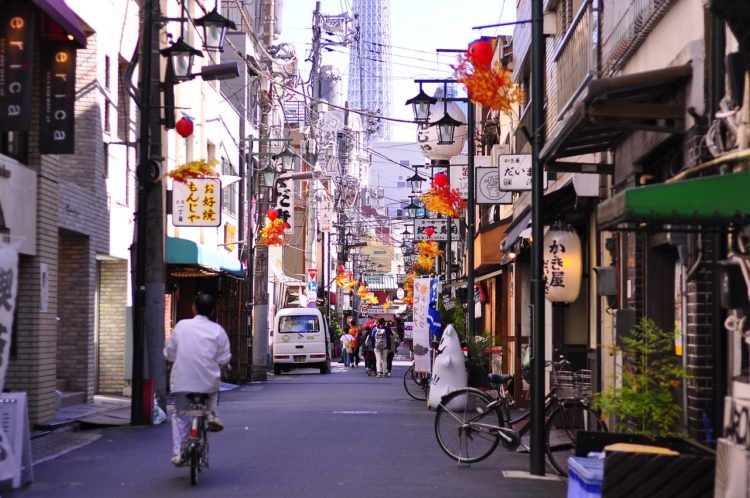
There are three centrally-located neighborhoods I’d recommend staying in: Shibuya, Shinjuku, and Ginza.
Where to Stay in Shibuya:
Shibuya is a metropolitan area home to the always-crowded “Times Square” of Tokyo, Shibuya Crossing (more on this later). Here, you’ll find suit-clad businesspeople, selfie-taking tourists, and hurried locals in a hodgepodge of energy, lights, and modern buildings.
- Splurge : Shibuya Stream Excel Hotel Tokyu
- Budget : Mustard Hotel Shibuya
- Hostel : Turn Table Hostel
Where to Stay in Shinjuku:
Shinjuku is another lively neighborhood, home to incredible green spaces and hole-in-the-wall eats and nightlife. You can find alleys full of lanterns and tiny bars, or wander through the giant Gyoen Garden.
- Splurge : Keio Plaza Hotel Premier Grand
- Budget : The Knot Tokyo Shinjuku
- Hostel : Nine Hours Shinjuku – North
Where to Stay in Ginza:
And, for the shoppers out there, Ginza boasts some of the city’s best boutiques and shopping malls. On weekends, Ginza’s streets are closed to cars for the perfect walking wonderland.
- Splurge : Millennium Mitsui Garden Hotel Ginza
- Budget : The Square Hotel Ginza
- Hostel : Bed & Breakfast Renga
Language and Currency in Tokyo
While Japanese people are generally very polite and helpful, few people speak English fluently. It’s much easier to find assistance via English speakers in more frequently touristed areas or in your hotel. However, as with any foreign country, I recommend learning a few words in Japanese before you arrive.
USEFUL JAPANESE PHRASES:
- Hello/Good Afternoon: konnichiwa
- Good bye: sayonara
- Delicious: oishi
- Thank you: arigatō
- Please: kudasai
- Where’s the toilet: benjo wa doko desu ka?
- Does anyone speak English? Eigo no hanaseru hito wa imasen ka

The currency in Tokyo is the Japanese Yen (JPY). You can either exchange money at designated exchange kiosks around the city, or take money directly from a bank ATM (there are several scattered around most Tokyo neighborhoods). I prefer to use an ATM whenever possible as they typically provide better exchange rates.
I was super surprised, but I found Japan to be mostly a cash society, so expect your credit card to get rejected at some places and be sure to carry enough Yen with you. If you’re coming from the US, an easy way to figure out USD to JPY is to move the decimal point two spots to the right >> 100Y = approximately $1USD. Just for quick reference, 10,000Y = approx 100USD.
And finally, what you originally came here for, a super detailed 3 day Japan itinerary! Get planning, my friends!
3 Days in Tokyo Itinerary
Day 1: west side (modern tokyo).
Between shiny buildings and busy streets, the first day of your Tokyo itinerary will take you to some of the more modern, cosmopolitan areas of the city: Shibuya, Harajuku, and Shinjuku. If you’re planning on spending more than 3 days in Tokyo, you can split this up into a couple of days for a more relaxed schedule!
Morning: Shibuya
Start the morning off in Shibuya, which you can easily access by metro. With its tall, shiny buildings, Shibuya is a major business hub in Tokyo, home to some of the city’s major corporations. It’s also a fantastic place to get a feel for the modern, rapidly expanding cosmopolitan side of the city, whether at the bustling Shibuya Station or overlooking the crowds in Shibuya Crossing.

- Shibuya Crossing: Head to Shibuya Crossing (especially during rush hour), which is known as the “Times Square” of Tokyo, to watch the city’s busiest intersection come to life. Amidst flashing LED signs and huge billboard ads, you can see several pedestrian lanes of people crossing at the exact same time. Join in on the fun on the streets, or head to Starbucks for your morning cup of joe and a bird’s eye view of the chaotic pedestrian crossing.
- Hachiko Statue: Shibuya’s Hachiko Statue might melt your heart, especially if you’re an animal lover. This statue was built to remember the incredibly faithful Akita dog who waited every day at the Shibuya train station for his owner. Even after the owner’s death, Hachiko continued to show up every day for years without fail at the station! Now, at the Shibuya Station, you can see a statue of Hachiko that was built as a tribute to his unconditional loyalty.
- Tokyu Hands: If you’re looking for a place to stop and shop for some souvenirs, Tokyu Hands is a giant department store in Shibuya where you can find some of Japan’s best and most unique items. They focus on handmade items and crafts, and you can find a lot of things here in that same creative vein.
Afternoon: Harajuku
When I think of Harajuku, there’s really only one word that comes to mind: stylish. Here, you can spot some of the city’s most unique and colorful fashions, amidst a sea of boutique shops and cute cafes. Harajuku is also located right next to the Meiji Shrine and surrounding park, which is a beautiful area to disconnect from the noise and haste of the city (you’ll need it after spending the morning in Shibuya!).
- Meiji Shrine: Located next to Harajuku’s metro station, the Meiji Shrine and surrounding Yoyogi Park are a peaceful respite from the otherwise lively areas of Tokyo you’ll visit today. The shrine was dedicated to Emperor Meiji in 1920, and was rebuilt after being destroyed during WWII. Today, visitors can enter the shrine area and learn about its traditions and history, including the hand washing station and the wishing tablets, also known as ema.
View this post on Instagram A post shared by J (@jermstravels) on Jan 24, 2019 at 4:06pm PST
- Omotesando and Takeshita Dori shopping streets: Harajuku’s fashions and designs aren’t exclusively for locals; you can actually buy a lot of these colorful, crazy items you see in this neighborhood to take home with you. Head to Omotesando and Takeshita Dori shopping streets to window-shop and browse some of the local boutiques…or simply people-watch the ultra-chic, colorfully-dressed locals that seem to frequent the area.
View this post on Instagram A post shared by ? ? ? ? ? ? ♀ (@goldiegrace) on Jan 16, 2019 at 4:05am PST
- Try some street food: Despite being home to some beautiful (and expensive) boutiques, there’s actually plenty of great street food in the Harajuku area to try. One of my favorites was the crepes, which you can find in street kiosks lining the main walking street. However, if you’d fancy something else, there are several other kiosks selling both savory and sweet treats.
View this post on Instagram A post shared by Charlotte Foodies ? (@foodie_muse) on Jun 3, 2017 at 3:18pm PDT
- Harry’s Hedgehog Café: Yes, you read that right: this is a real cafe where you can actually play with tiny hedgehogs. The cute animal lover in me is grinning just writing this (*cue squeal*). For a small fee, you can put on a pair of thick gloves and hold/play with these miniature hedgehogs. The cafe staff stands by at each table to ensure the well-being and safety of the hedgehogs during your visit.
View this post on Instagram A post shared by ?Shelly Jimenez (@shellyjimenez) on Nov 28, 2018 at 12:58am PST
- Kawaii Monster Cafe: In Japanese, the word kawaii means “cute” or “adorable” and that’s definitely the gist of this trippy, colorful Harajuku-based cafe. Filled with psychedelic decorations and some out-of-this world color schemes, the Kawaii Monster Cafe is a super Instagrammable place that’s full of visual stimulation. There’s definitely no shortage of wackiness (or strangeness) here! To enter, there’s a 500 JPY entrance fee and each person is required to order at least one entree and a drink, but it’s generally reasonably priced.
View this post on Instagram A post shared by KAWAII MONSTER CAFE (@kawaiimonstercafe) on Jan 22, 2019 at 11:07pm PST
- Observe the costumes: While wandering around Harajuku, keep an eye out for traditional Harajuku Girls dressed in their elaborate costumes and anime, especially if one of your 3 days in Tokyo happens to be a Sunday.
Evening: Shinjuku
After leaving colorful Harajuku, you might find Shinjuku to be a welcome change to your Tokyo itinerary for the evening. This nearby neighborhood is equally modern and traditional. One minute, you’re surrounded by tall buildings and the next, you’re ducking through tiny food stalls in a narrow, lantern-laden alleyway or breathing in fresh air at a traditional Japanese garden.

- Shinjuku Gyoen Garden: As one of the largest green spaces in the city of Tokyo, you can’t miss Gyoen Garden, especially if you love the outdoors. This massive park is home to several different kinds of Japanese gardens, with trails that connect different areas of the park. Additionally, it’s a gorgeous place to see Tokyo’s cherry blossoms in the springtime, or fall foliage towards the end of the year.
- Tokyo Metropolitan Government Building: Around sunset or at night, you can head to the observation deck of the Tokyo Metropolitan Government Building to see some of the most spectacular panoramic views of Tokyo. I loved going when the sun went down to see the sparkling city lights below. The best part is it’s totally free to go up there!
- Robot Restaurant: One of the most popular Shinjuku hotspots is the Robot Restaurant. Although it’s a wildly popular hyper-tacky tourist attraction, we chose not to go after reading tons of mixed reviews, but it’s up to you! Note that the food is something left to be desired, so you’ll wanna plan to eat before or after (and Piss Alley is a great choice).
View this post on Instagram A post shared by robotrestaurant (@robotrestaurant) on Jan 14, 2019 at 3:09am PST
- Piss Alley (Omoide Yokocho): Despite its off-putting name, Piss Alley is one of the coolest places to visit in Shinjuku. A tiny, narrow alley lined with lanterns and full of people, Piss Alley is home to tiny bars, food stalls, and restaurants that serve up some of the best food in the area. Historically, it was a hidden street for drinking and other illicit activities, and is still a symbol of some of the older traditions of the city.
View this post on Instagram A post shared by Joyce ? Vancouver (@juicybb) on Jan 21, 2019 at 7:32pm PST
Day 2: East Side (Traditional Tokyo)
On the second day of your 3 days in Tokyo, you’ll head to some of the city’s historic areas, exploring traditional shrines and temples, wandering through some of the city’s older neighborhoods, and ending the day in one of the strangest and coolest parts of town.
Morning: Asakusa
As one of Tokyo’s most well-preserved old neighborhoods, Asakusa is a place to see the charms of “old Tokyo” and experience a very different vibe than the urban shuffle in Shibuya and Shinjuku. There are several old temples and streets with market stalls in the Asakusa area, waiting to be explored by the adventurous tourist.

- Sensoji Temple: The Sensoji Temple is Tokyo’s oldest temple and one of the most iconic. Its entryway is marked by a signature large red lantern. With its beautiful red frame and green rooftops, it’s worth taking some time in the morning to explore the grounds and the temple itself. Get up early and head to Asakusa to avoid the large crowds that gather here during the day.
- Nakamise Dori Street: Just outside of the Sensoji Temple lies one of Tokyo’s most historically significant shopping streets. Here, you can find all kinds of Japanese goods and homewares, as well as many souvenir shops. Take some time to walk through this street during your visit to Asakusa to people-watch and see some of the beautiful handicrafts from Tokyo locals.
During Cherry Blossom Season: Sumida Park
Like I’ve mentioned earlier in this Tokyo travel blog post, spring is the most amazing time to come to Tokyo. Located near the Asakusa train station is Sumida Park, one of the best and most beautiful parks in Tokyo to see the cherry blossoms in the springtime. There are over 700 cherry trees in this riverside park! If you’re lucky enough to be in Tokyo during the full bloom, head to Sumida Park while you’re in the Asakusa area.

Afternoon: Ueno
Another traditional Tokyo neighborhood, Ueno is most well-known for its shrines, gardens, and museums. You can spend the afternoon in this part of the city, strolling through the streets or trails and learning more about Tokyo’s fascinating history.

- Ueno Park/Gardens: Ueno Park is a large metropolitan park in the Ueno area, which is home to lovely walking trails and over 1,000 cherry blossom trees that bloom in the springtime. It’s also a popular place for locals to hang out. There are also a handful of shrines and temples in the park that you can check out while you’re there.
- Tokyo National Museum: Within Ueno Park, there are several museums and a zoo. You could spend an entire day exploring them all, but if I had to pick just one, I’d recommend going to the Tokyo National Museum. Packed full of interesting information, the Tokyo National Museum is a collection of important historical and traditional Japanese items that span the country’s history. Entrance is 620 JPY.
Evening: Akihabara District
In the late afternoon, head to the Akihabara District, which became famous in Tokyo for its focus on anime and manga culture and its several electronics/gaming shops. There are literally streets and streets of electronics shops in this part of town, which provides a fascinating backdrop for this very unique corner of Tokyo.
- Electric Town: Like I mentioned earlier, Akihabara District started off as a center for electronics sales. Dozens and dozens of tiny electronics shops sprang up in groups, many of which are still in business today. In addition to the tiny electronics stores, you can also visit Yodobashi Akiba, a gigantic electronics department store in the neighborhood that sells everything from cameras to computers to sound equipment and more.
- Game Centers: There’s literally an entire pocket of the Akihabara District that’s completely dedicated to game centers, or arcades. There are dozens you can visit and play games in, but my favorite is Super Potato Retro Shop, which has a bunch of throwback retro games you can play in a cozy environment on the 5th floor.
- Maid and Gundam Cafes: One of the strangest things you can experience in Akihabara is the Maid and/or Gundam Cafes. Exactly as they sound, these are small restaurants where the waiters/waitresses dress up as maids and butlers and cater to your every wish, including but not limited to playing games, taking Instagram selfies, and serving too-cute drinks and desserts.
Day 3: Sushi Breakfast and Shopping
You really can’t have a 3 day Tokyo itinerary without a day of food and shopping, right?! Well, this is that day. I’ve included a bunch of different options for you on this third day of your Tokyo itinerary, so you can choose what you want to do based on what you want to buy, eat, or see!
Early Morning: Toyosu Fish Market
I’m sure you’ve heard about the ever-so-popular and quite famous Tsukiji Market. However, in late 2018, the famous Tokyo establishment, the Tsukiji Fish Market, shut its doors for the last and final time. The market itself moved to a different location, now titled the Toyosu Fish Market, but don’t you worry – it’s open for visitors!
View this post on Instagram A post shared by TK (@otorochutoro) on Dec 6, 2018 at 11:29pm PST
At this new location, you can still find some of the freshest sushi around, and a daily 4:30 AM tuna auction (if you’re willing to get up that early). I recommend heading over in the early morning (around 4 for the tuna auction, or later if you just want to walk around and explore/eat). Grab some sushi at the Toyosu Fish Market for breakfast, as that’s the time of day when it’s the freshest.
Morning: teamLab Borderless Art Museum and Ginza
- teamLab Borderless Art Museum: Of all the places on this Tokyo itinerary, I think this art museum might be one of the most fascinating. A digital art museum, the teamLab Borderless Art Museum is an interactive and immersive art experience that has the visitor moving through different rooms of color, light, psychedelic patterns, and moving projected images. It’s a really unique art experience, and I’d recommend it even if you’re the type of person who won’t go near an art museum.
View this post on Instagram A post shared by I am a day and night dreamer (@sn00pyee) on Jan 24, 2019 at 4:06pm PST
- Shopping in Ginza: After the teamLab experience, head to Ginza for some shopping (or window-shopping, if you’re on a budget). Two of the must-see shopping streets in the Ginza area include Chuo-dori Street and Harumi-Dori. If you’re in Ginza, you can’t miss these streets; they are lined with shops and cafes and eventually intersect. While in Ginza, don’t forget to check out the Kabukiza Theatre, which has regular Japanese fine arts performances and is just a really beautiful building in general.
Afternoon: Imperial Palace and East Garden
The Imperial Palace and its surrounding greenery are an important part of Tokyo’s history and culture, and are definitely worth a visit during your 3 days in Tokyo. The castle on the grounds was originally the Edo Castle, but after changing hands many times, was ultimately destroyed. In its place lies part of the original foundation in the East Garden.
Late Afternoon/Evening: Roppongi
An ultra-modern area for shopping nightlife, the upscale neighborhood of Roppongi is home to several buildings and attractions that are best visited in the late afternoon or evening, so you can appreciate the modern, well-lit complexes and designs of this dazzling place.
- Roppongi Hills: This is a sizeable and famous high rise development complex situated in the middle of the neighborhood. It’s like a miniature city within a city, with its own skyline, eating areas, and more.
- Mori Art Museum: Housed in a modern glass building, the Mori Art Museum is home to lots of contemporary art in a variety of genres and mediums. In my opinion, it’s worth it to visit the museum for the building alone!
- Tokyo Midtown Complex: The Tokyo Midtown Complex is a huge, high-end shopping and dining complex with tons of areas to walk around, shop, and grab dinner.
- Mori Tower: If you didn’t get a chance to go to the Tokyo Metropolitan Government Building on day 1 (or you just love city views!), you can see another fabulous bird’s eye view of Tokyo from the 52nd floor or the rooftop Sky Deck of the Mori Tower. The views from up here are best at night, when the city begins to light up.
EXTRA! Day 4: Take a Day Trip
Okay, okay, I know this was supposed to be a 3 day Tokyo itinerary, but the reality is that it would be a total shame if you didn’t take the time to explore the surrounding areas of Tokyo if you have a bit more time in the city.
While this guide tells you what to do in Tokyo in 3 days, I felt that it was important to add an option for those of you wanting to see a little bit more of Japan during your time here. So, if you do find yourself with 4 days in Tokyo (or a little bit of extra time in your schedule) you can take one (or more!) of these nearby day trips.
Read Next: Top Day Trips from Tokyo
- Distance from Tokyo: 42.6 miles/68.5 km
- Main things to do: Temples (Hokokuji, Hasedera, others), Great Buddha, Hachimangu Shrine, hiking

Kamakura is a Japanese town that boasts stunning examples of traditional architecture in its religious sites, including several temples and shrines. Historically, it was the origin of Japan’s samurai government and an important cultural hub for the country’s development.
In addition to well-maintained historic sites, it’s also home to stunning nature areas that you can visit and enjoy, even if you’re only visiting Kamakura for the day.
By far, the most hassle-free way to take a day trip to Kamakura is by organized tour, especially if you only have 4 days in Tokyo and don’t want to be stuck in your hotel trip planning. You can book a day-long trip to Kamakura like this one that includes transportation and a local guide (which is awesome given the town’s incredible historical sites).
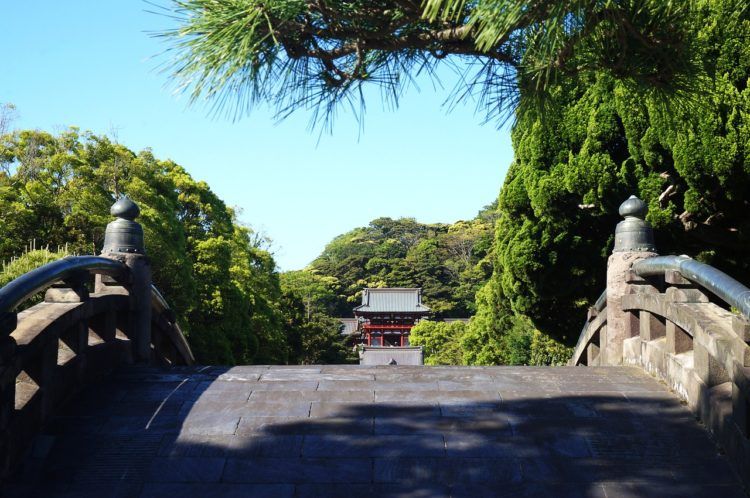
However, if you want to DIY your day trip, the easiest way to get to Kamakura from Tokyo is by train. The easy-to-use JR trains connect both the Tokyo Station and the Shinjuku Station to Kamakura directly. If you’re going by train, the trip takes about 1.5-2 hours one way and costs 920 JPY.
Once in town, head to the Giant Buddha (or Kamakura Daibutsu (Kōtoku-in) ), one of Kamakura’s most famous landmarks. Then, explore a few of the city’s temples, like the Hokokuji or Hasedera temples , which are beautiful examples of traditional Japanese temples. You can also visit the Hachimangu Shrine , which is the most culturally and historically important Shinto shrine in all of Kamakura. If you’re interested in getting some fresh air, hit some of the nearby hiking/walking trails into the outskirts of the town.
It’s best to visit Kamakura during the spring and fall, as the weather will be mildest during these months and you’ll be spending a lot of time outside.
- Distance from Tokyo: 92.5 miles/148.9 km
- Main things to do: Shinkyo Bridge, Three Buddha Hall, Five-Story Pagoda, shrines, landscapes & scenery
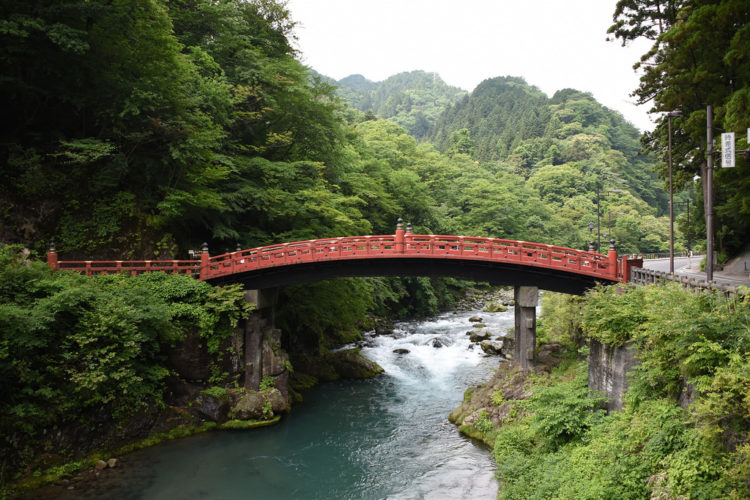
Located in the mountains about 2.5 hours from Tokyo by train, Nikko is an 8th century Japanese town with several picturesque, forested shrines and temples. With its perfect location right near Lake Chuzenji, you can get a taste of history and culture as well as beautiful landscapes and outdoor exposure.
Again, as Nikko is a decent distance (almost 100 miles) from Tokyo, it’s easiest to book a guided day tour to minimize the hassle of figuring out the transportation and activities for the day. Day tours like this one offer a really great value, and they organize everything for you. However, if you’d rather plan your own independent day trip, you can get to Nikko by train from Tokyo.

While in Nikko, you have to visit some of the many shrines and temples in the area. Three Buddha Hall and the Five-Story Pagoda are two especially photogenic ones, but there are several shrines dotted throughout the city – many of which are surrounded by wooded areas – that you can visit. Additionally, don’t miss the incredibly beautiful Shinkyo Bridge .
When you finally feel like you’ve seen enough of the local shrines and temples, you can also explore the nearby Lake Chuzenji or Kanmangafuchi , where the 70 mysterious Jizo statues are located. There’s a legend that the number of statues changes every time you count them…but you’ll just have to visit for yourself to find out if it’s true.
It’s best to visit Nikko during the fall, where the foliage colors consume the greenery of the forest and turn the entire town and surrounding area bring yellow, orange, and red.
- Distance from Tokyo: 57.2 miles/92.1 km
- Main things to do: Views of Mount Fuji over Lake Ashinoko, Hakone Onsen, Hakone Shrine, Owakudani Crater
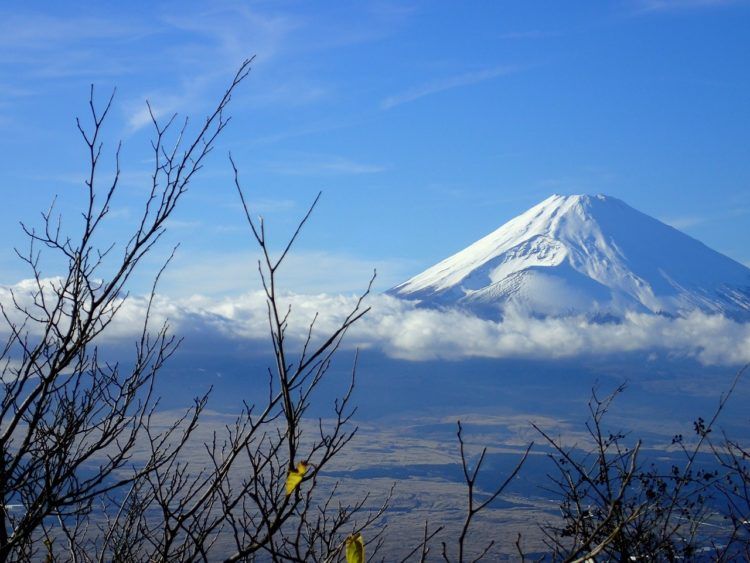
Located just over an hour from Tokyo, Hakone is one of the most visually beautiful day trips from Tokyo, boasting stunning views of Mount Fuji amidst forested shrines and landmarks. A short train ride from Tokyo’s city center, Hakone is a perfect day trip you can go on to get a bit more peace and quiet; I’d recommend this one if you love the outdoors and you only have 4 days in Tokyo.
There are several day tours from Tokyo that you can book (like this one or this one ) which will organize your transportation and logistics for a day trip to Hakone. With limited time in Tokyo, it’s easiest just to book a tour. However, you can also hop on a train from Tokyo and explore Hakone on your own (but since I found the trains to be somewhat confusing with local and direct trains and had difficulty figuring out which was which, I’d just take a tour if I were you.)
In Hakone, you’ll have the chance to visit a lot of quiet, secluded shrines and even a relaxing traditional Japanese bath! First, on clear days, you can head to Lake Ashinoko to see amazing views of the conical Mount Fuji, which in the colder months is capped with snow. You can take a boat ride around the lake or just take in the sights from the shore.
After that, visit the Hakone Shrine , a forested shrine with bold red structures. Afterward, you can take a cable car over Owakudani Crater , a crater formed by the last volcanic eruption in the area where they make miracle eggs that are said to add 7 years to your life! You can end your day at the Hakone Onsen , a traditional Japanese bath house with warm water to relax your body and round out your trip with a uniquely Japanese onsen experience.
So there you have it, a complete and packed 3 day Tokyo itinerary! As I mentioned earlier, if you want a more relaxing experience, pick and choose a few activities for each day instead of cramming it all in and rushing from place to place (like me).
Other Japan articles you may like:
Best Time to Visit Japan
Japan Bucket List: Where to Visit
Complete 10 Day Japan Itinerary
Tokyo Bucket List and Itinerary Inspiration
Day Trips from Tokyo
25+ Things to do in Kyoto
Day Trips from Kyoto
Things to do in Harajuku
When are you planning to visit Japan and how will you be spending your 3 days in Tokyo?!
Images via Nikko 1 / 2
Leave a Reply Cancel reply
Your email address will not be published. Required fields are marked *
Save my name, email, and website in this browser for the next time I comment.
You may also love...

Subscribe To The Newsletter
FOR TRAVEL INSPO and FUN
No spam, only fun!
Favorite Destinations

- About Jessica
- How to Plan a Trip
- Fave Travel Companies
- Shop My Faves
Destinations
- World Travel
- San Francisco
- Northern California
- Southern California
- Central Coast
Truly Tokyo
A Tokyo Travel Guide
Tokyo Itineraries
Make the most of your time in Tokyo with my carefully planned itineraries for trips from 1 to 5 days. Or use one of my special interest Tokyo itineraries. And don't miss my Tokyo-Kyoto combination itineraries.

Tokyo Itineraries - 1 to 5 Days
- 1-Day Tokyo Itinerary Even one day is enough to get a taste of this incredible world city. In this itinerary, I'll show you how to make the very best of a short stay in Tokyo.
- Must See 1-Day Tokyo Itinerary So you only have one day in Tokyo? This must-see 1-day Tokyo itinerary allows you to get a taste of the city and see the real highlights without tiring yourself out.
- 2-Day Tokyo Itinerary Two days is enough to see both sides of Tokyo: the traditional and the modern. This itinerary is the perfect way to make the most of two days in this incredible city.
- 3-Day Tokyo Itinerary Three days is the perfect amount of time to spend in Tokyo. My three-day Tokyo itinerary is the best way to get the most out of your time in this incredible city.
- 4-Day Tokyo Itinerary Four days in Tokyo gives you enough time to see the city and make one day trip out of the city. My four-day Tokyo itinerary is the best way to make use of four days in this incredible city.
- 5-Day Tokyo Itinerary Five days in Tokyo allows for an awesome experience of the city and time for a daytrip out of the city. My five-day Tokyo itinerary is the best way to make use of five days in this incredible city.

Special Interest Itineraries For Tokyo
- Tokyo Foodie Itinerary This one-day eating itinerary takes you through some of the highlights of Tokyo’s vast culinary scene. It includes the famed Tsukiji Market, fabulous snacks, the best pizza in Tokyo, and glorious Japanese beef.
- Two-Day Tokyo Cherry Blossom Itinerary Even though Tokyo is a large city with no shortage of cherry trees, tourists and locals alike tend to gravitate to the same few spots. Here are a few tips to make the most of your time in Tokyo, and enjoy the cherry blossoms without stressing out.
- Two-Day Tokyo Fall Foliage Itinerary See the best of the Tokyo Fall Foliage with our two-day Tokyo Fall Foliage Itinerary which lets you maximise your time to see the Tokyo autumn colors.
- Tokyo Shrine and Temple Itinerary While Tokyo's shrines and temples don't compare to those of Kyoto, there are some great ones in the city. Here's a one-day itinerary based on Tokyo's temples and shrines.
- Tokyo Fuji Visit Itinerary Whether you want to climb the mountain or just get a view, here is all the information you need.
- Tokyo Nature Lovers Itinerary Tokyo has a surprising number of parks and gardens. This itinerary is carefully crafted to allow you to visit the best of them in one day.
- Tokyo Shopping Itinerary Tokyo is one of the world's best shopping cities. The shops and the service are world famous. Here are my picks for what and where to buy in Tokyo.
- Tokyo Itineraries With Children Tokyo is a great place to travel with children: It's safe, clean and there are lots of kid-friendly attractions. This itinerary is the perfect 1-day itinerary for those traveling with children.
- Tokyo Art Lover's Itinerary In Tokyo, art lovers are spoiled for choice: There are just so many good museums and galleries to choose from. This 1-Day Art Lovers Itinerary is the best way to see the four best museums in Tokyo without tiring yourself out.
Check Hotel Availability
Destination, check-in date, check-out date.

Tokyo-Kyoto Itineraries
- Tokyo-Kyoto 1-Week Itinerary If you have only one week in Japan, then Tokyo and Kyoto are the two places you should visit. These cities will give you the best experience of modern and traditional Japan. Here's the ideal one-week Tokyo-Kyoto itinerary.
- Tokyo-Kyoto 10-Day Itinerary If you have 10 days in Japan, then spending the entire time in Tokyo and Kyoto is a good idea. A day trip from Kyoto to Nara allows you to add a third city. Here is the perfect Tokyo-Kyoto 10-day itinerary.
Visiting Osaka?
I've created several Osaka itineraries , Osaka-Kyoto itineraries and Osaka-Kyoto-Tokyo itineraries on InsideOsaka.com , my online travel guide to Osaka. It's a companion website to Truly Tokyo.
Japan Itineraries:
To fully plan your trip to Japan, see my comprehensive Japan itineraries which guide you to the best locations and map out each day for you.
- Japan Itineraries Overview
- 1 Week Japan Itinerary: Tokyo and Kyoto
- 10 Day Japan Itinerary: Tokyo, Kyoto and Kanazawa
- 10 Day Japan Itinerary: Tokyo, Kyoto and Takayama
- 2 Week Japan Itinerary: The Grand Tour
- 7 to 10 Day Japan Itinerary: Kyoto, Osaka, Nara and Hiroshima
- Japan With Children Itinerary
Tokyo Vacation Checklist
- For all the essentials in a brief overview, see my First Time In Tokyo guide
- Check Tokyo accommodation availability and pricing on Booking.com and Agoda.com - often you can book with no upfront payment and free cancellation
- Need tips on where to stay? See my one page guide Where To Stay In Tokyo
- You can buy shinkansen (bullet train) tickets online from Klook - popular routes include Tokyo to Kyoto , Tokyo to Osaka and Tokyo to Hiroshima
- You can buy a Japan SIM card online for collection on arrival at Tokyo Narita or Haneda airports. Or rent an unlimited data pocket wifi router
- See my comprehensive Packing List For Japan
- Compare airline flight prices and timings for the best Japan flight deals . Check my guides to arriving at Narita Airport and at Haneda Airport .
- If you're visiting more than one city, you might save money with a Japan Rail Pass – see if it's worth it for you
- A prepaid Welcome Suica card makes travelling around Tokyo much easier - here's how
- World Nomads offers simple and flexible travel insurance. Buy at home or while traveling and claim online from anywhere in the world
Tokyo District Map

- Imperial Palace Area
- Tokyo Station
- Shimbashi Shiodome Hamamatsucho Shinagawa
- Akihabara Kanda
- Roppongi Akasaka
- Harajuku Aoyama
- Ebisu Daikanyama Meguro
Disclosure: trulytokyo.com is a participant in the Amazon Services LLC Associates Program, an affiliate advertising program designed to provide a means for sites to earn advertising fees by advertising and linking to amazon.com and amazon.co.uk. World Nomads provides travel insurance for travellers in over 100 countries. As an affiliate, we receive a fee when you get a quote from World Nomads using this link. We do not represent World Nomads. This is information only and not a recommendation to buy travel insurance.

Navigate forward to interact with the calendar and select a date. Press the question mark key to get the keyboard shortcuts for changing dates.
Navigate backward to interact with the calendar and select a date. Press the question mark key to get the keyboard shortcuts for changing dates.
Tokyo Trip Planner
Top destinations in tokyo.

Top attractions in Tokyo

Other notable attractions

Top searches in Tokyo
Popular road trips from tokyo, all road trips from tokyo.
- Tokyo to Kyoto drive
- Tokyo to Osaka drive
- Tokyo to Nikko drive
- Tokyo to Seoul drive
- Tokyo to Nagoya drive
- Tokyo to Kanazawa drive
- Tokyo to Fujikawaguchiko-machi drive
- Tokyo to Matsumoto drive
- Tokyo to Hiroshima drive
- Tokyo to Sapporo drive
- Tokyo to Karuizawa-machi drive
- Tokyo to Takayama drive
- Tokyo to Ito drive
- Tokyo to Shizuoka drive
- Tokyo to Sendai drive
- Tokyo to Hakodate drive
- Tokyo to Nagano drive
- Tokyo to Hamamatsu drive
- Tokyo to Fukuoka drive
- Tokyo to Busan drive
- Tokyo to Ise drive
- Tokyo to Nasu-machi drive
- Tokyo to Nagasaki drive
- Tokyo to Hokuto drive
- Tokyo to Himeji drive
- Tokyo to Kobe drive
- Tokyo to Niigata drive
- Tokyo to Mito drive
- Tokyo to Toyama drive
- Tokyo to Chichibu drive
Explore nearby places
All related maps of tokyo.
- Map of Tokyo
- Map of Chiyoda
- Map of Chuo
- Map of Minato
- Map of Bunkyo
- Map of Taito
- Map of Sumida
- Map of Shinjuku
- Map of Koto
- Map of Shibuya
- Map of Shinagawa
- Map of Arakawa
- Map of Meguro
- Map of Toshima
- Map of Kita
- Map of Nakano
- Map of Itabashi
- Map of Setagaya
- Map of Edogawa
- Map of Adachi
- Map of Katsushika
- Map of Suginami
- Map of Nerima
- Map of Urayasu
- Map of Kawaguchi
- Map of Toda
- Map of Ichikawa
- Map of Soka
- Map of Matsudo
- Map of Komae
Tokyo throughout the year
- Tokyo in January
- Tokyo in February
- Tokyo in March
- Tokyo in April
- Tokyo in May
- Tokyo in June
- Tokyo in July
- Tokyo in August
- Tokyo in September
- Tokyo in October
- Tokyo in November
- Tokyo in December
Looking for day-by-day itineraries in Tokyo?
Get inspired for your trip to Tokyo with our curated itineraries that are jam-packed with popular attractions everyday! Check them out here:
- 1-Day Tokyo Itinerary
- 2-Day Tokyo Itinerary
- 3-Day Tokyo Itinerary
- 4-Day Tokyo Itinerary
- 5-Day Tokyo Itinerary
Q&A about Tokyo
Weather in tokyo, add places from guides with 1 click, collaborate with friends in real time, import flight and hotel reservations, expense tracking and splitting, checklists for anything, get personalized suggestions.
4.9 on App Store, 4.7 on Google Play

A Fun 7 Day Tokyo Itinerary: Complete 1 Week in Tokyo Guide
Without a doubt, Tokyo is one of my favourite cities I’ve ever visited. The unique blend of ultra-modern and traditional, the exhilarating experiences and of course, the incredible food are just some of the reasons I keep coming back to Tokyo again and again.
After my recent fifth visit to Tokyo, I can truly attest that there is no shortage of remarkable things to do, see and eat in Tokyo. Packing it all into a Tokyo 1 week itinerary is still a challenge, as each visit I find something new and fun to do every time!
Whether it’s your first time in Tokyo or a return visit, this comprehensive 7 days itinerary in Tokyo offers a perfect blend of iconic sights, lesser-known gems and amazing food experiences to ensure a memorable one week in Tokyo.
Table of Contents
Quick Overview: Itinerary for Tokyo 7 Days
Tokyo is a sprawling metropolis that covers over 2,000 square kilometres. This itinerary has been designed to cover specific sections of the city and groups attractions on each day to reduce travel time and backtracking.
Here’s a summary breakdown of this Tokyo Itinerary:
- Day 1: Harajuku and Shibuya
Day 2: Gotokuji Temple, Shimokitazawa and Shinjuku
Day 3: asakusa & akihabara.
- Day 4: Tsukiji Market, TeamLab Planets & Ginza
- Day 5: Hie Shrine, Imperial Palace, Tokyo Station & Ikebukuro
- Day 6: Disneyland or DisneySea
Day 7: Day Trip to Mount Fuji
Useful resources & tips for first timers.
Before getting into the details of this Tokyo 7 days itinerary, here are a few quick tips and useful things to know for first-timers in Tokyo.
- Cash: Japan is a very cash-reliant society. On my most recent trip in April 2023, we were pleased to see that many more places accept cards (most likely a result of COVID-19 accelerating change for businesses). However, there are still many small bars, restaurants and even shops that might only take cash. We use the 7/11 ATMs to withdraw cash, as there is no international ATM fee and they accept most foreign cards. Plus, they are super accessible as there are 7/11’s everywhere!
- Suica: Make sure to grab a Suica (prepaid transport card) for use on the subways, trains and buses across Tokyo. It saves you so much time not having to purchase paper tickets as you’ll be relying on the subway system a lot! (more of this soon).
Note: Due to a chip shortage, physical cards are no longer being issued. You have two options for alternatives. Firstly, Apple users can easily add a free Suica to Apple iPhones (unfortunately this doesn’t work for foreign Android devices just yet). Here are the instructions for doing this for Apple users. Tourists can still purchase the Welcome Suica card upon arrival at either of Tokyo’s airports. More information on Welcome Suica here . Alternatively, you can purchase an unlimited-use metro card (more information on this below in the Getting Around Tokyo section).
- eSims: I recommend getting phone data while in Japan as you will be relying on Google Maps a LOT! Pocket wifi rental used to be a popular option for getting phone data in Japan. I’ve tried pocket wifi , purchasing a tourist prepaid sim that you collect at the airport and on my most recent trip, an eSim that I set up at home before I even leave. Of the three options, using an eSim is my preferred option for convenience and was very easy to set up on my iPhone. Check out eSIM plans & pricing for Japan here .
- Airports: Tokyo has two international airports, Haneda and Narita. If you have a choice, try to fly into Haneda as it is a lot closer to downtown Tokyo. However, the majority of flights do fly into Narita, which is still very accessible to get to/from with public transport – it just takes longer and is more expensive.
- Queues: Queuing is very much a part of culture in Japan – you know a restaurant is good when there is a queue! Especially for ramen restaurants, the queues move quickly so don’t despair if you see a giant line.
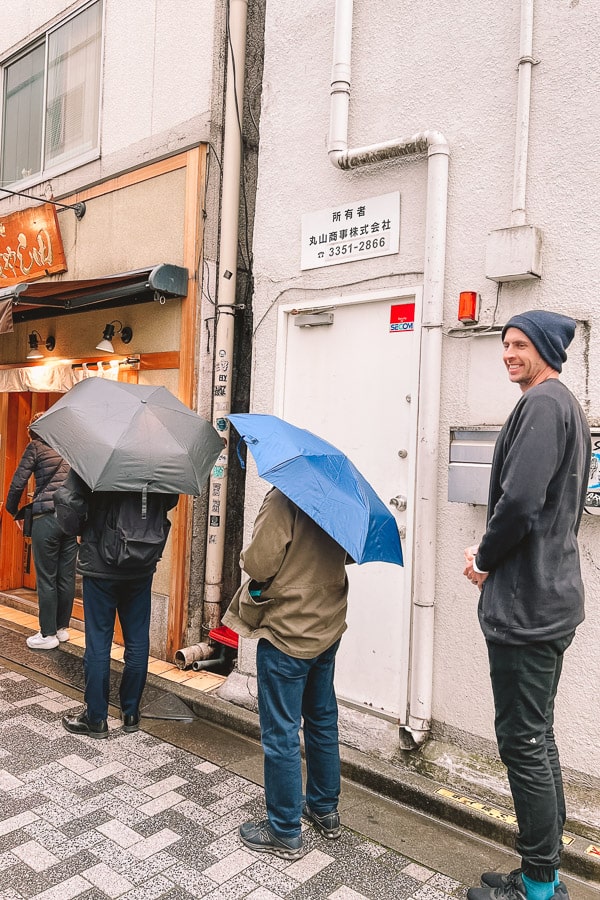
- Convenience Stores: one of my favourite things about Japanese culture is the convenience stores (konbini). You’ll see a 7/11, Lawsons or Family Mart on just above every corner, and these well-stocked shops sell fantastic ready-to-eat meals. We’ve had many onigiri (rice triangle sandwiches) for breakfast from the konbini, as well as great takeaway dinners on those days when we are just too exhausted to go out after exploring the city all day. The quality and range are excellent, and trying random new Japanese snacks from the local konbini is a personal tradition of mine!
- Book tickets in advance: For many popular tourist attractions, such as TeamLab Planets, Disneyland and ShibuyaSky, you need to purchase tickets in advance. In my 1 week Tokyo itinerary below, I include links to these to help make booking tickets in advance a breeze. For many of the attractions, it is easiest to book through a 3rd party like Klook or GetYourGuide . If you aren’t familiar with Klook, they are a large tour company with a strong Asian presence (and Japan in particular). Because of their size, they often offer discounted tickets to many of the popular experiences in Tokyo, so I recommend using them for most of your tickets and tours in Japan.
- JR Pass: You do NOT need a JR Pass to get around Tokyo – it would be a terrible waste of money if you did! Consider getting a JR Pass for long-distance Shinkansen rides, although with the 2023 price increase, JR Passes no longer offer as much value to tourists as they used to.
- Google Translate: I highly recommend downloading Google Translate on your phone. Many restaurants do not have an English menu, so we found ourselves using Google Translate almost daily – you can take a photo of a menu or sign in Japanese and it quickly translates it to English.
How to Get Around Tokyo
Tokyo’s vast metro and public transportation system can be pretty overwhelming and confusing. Luckily, Google Maps makes getting around in Tokyo (and Japan in general) a breeze.
All the schedules are synced with Google Maps, telling you real-time information on train times, prices, connections and transfers and even the best carriage to board to be closest to your planned station exit!
This is why I highly recommend getting an eSim, or at the very least pocket WiFi to help make getting around Tokyo easy.
The Suica card is a useful tool to save time on buying paper tickets, however, recent chip shortages have made getting these a bit trickier.
Apple iPhone users can easily add digital cards to their phones, but Android users for the meantime will need to purchase a WelcomeSuica card at the airport upon arrival or consider getting a subway pass.
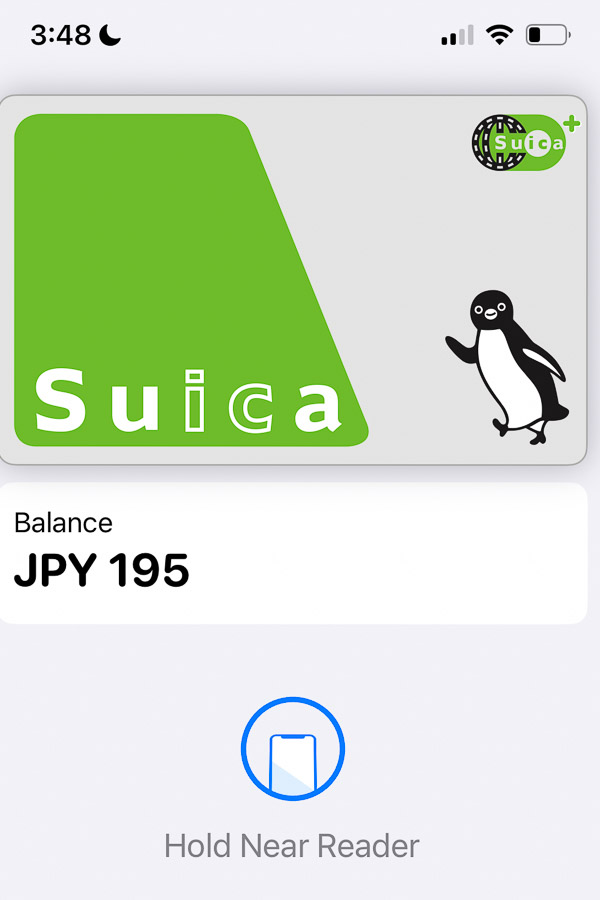
Even if you have a Suica, the subway pass can still be good value if you are making lots of trips on the subway in a certain period. Travel conveniently around Tokyo through Tokyo Metro and Toei Subway lines for 1-3 days with this Unlimited Pass .
While I recommend using the subway to get around Tokyo, if you’d prefer to keep things simple, Hop-On Hop-Off buses are plentiful around the main attractions in Tokyo.
Where to Stay in Tokyo
Generally, I recommend staying in or near Shinjuku (west side of Tokyo), or in the central area of Tokyo Station. However, as long as you are within walking distance of one or two subway stations/lines you will be fine!
I’ve suggested a few accommodation options below for different budgets in these areas.
Accommodation in or near Shinjuku (West Tokyo):
- Budget – Kimi Ryokan : I almost don’t want to share this in case it gets too popular, but Kimi Ryokan in Ikebukuro is my go-to budget accommodation in Tokyo. With traditional tatami mat bedding, this guesthouse is extremely clean, has shared bathrooms and lovely common areas.
- Mid-Range – Hotel Sunroute Plaza Shinjuku : You can’t beat the location of this centrally located hotel a short walk from Shinjuku Station. I prefer this hotel to similar-priced hotels in the busier Kabukicho nightlife area.
- Luxury – Park Hyatt Tokyo : We had a splurge night here to celebrate my husband’s birthday – the hotel’s New York Grill and Bar on the 52nd floor was featured in the movie Lost in Translation
Accommodation in or near Central Tokyo:
- Budget – the b ochanomizu : We stayed in this basic but clean hotel in Kanda, which was within walking distance to Akihabara and close to the subway. The rooms are small but modern and functional.
- Mid-Range – Via Inn Prime Nihonbashi Ningyocho : I was pleasantly surprised by the size of the rooms in this new, modern hotel. The location was within walking distance of two different subway lines.
- Luxury – The Gate Hotel : This trendy hotel is in the heart of Ginza, within walking distance to Tokyo Station and the Imperial Palace.
Explore all accommodation options in Tokyo
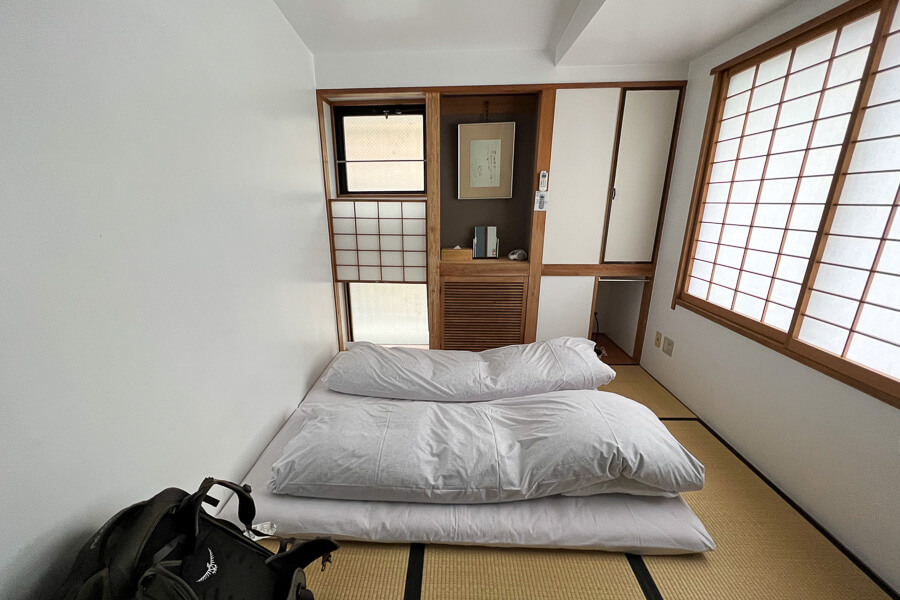
Tokyo Itinerary 7 Days
One week in tokyo itinerary map.
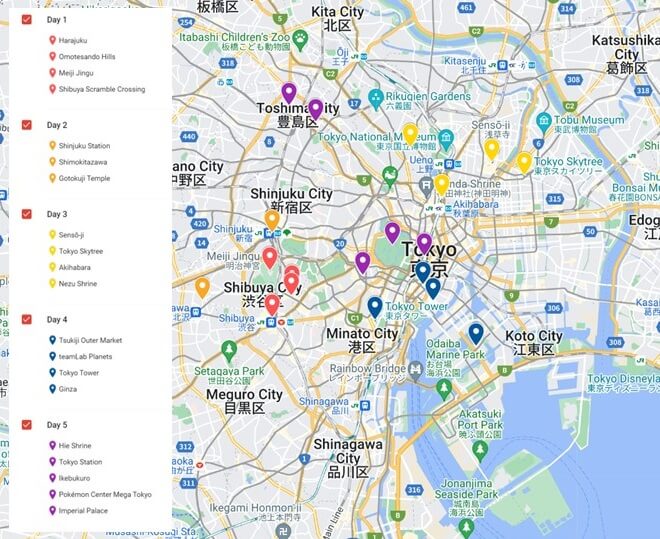
Day 1: Harajuku and Shibuya
Welcome to Tokyo! Begin your Tokyo 7 Day itinerary by immersing yourself in the vibrant, colourful and quirky streets of the Harajuku district.
Conveniently located on the Yamanote line, when you get off the subway at Harajuku Station you’ll find yourself at the top of the main street of Harajuku, Takeshita Street .
This bustling street is lined with hip fashion boutiques, crepe stands, food shops, themed cafes and more. You’ll likely see young people dressed in quirky and unique street fashion, including some very kawaii (cute) outfits or punk hip-hop styles.
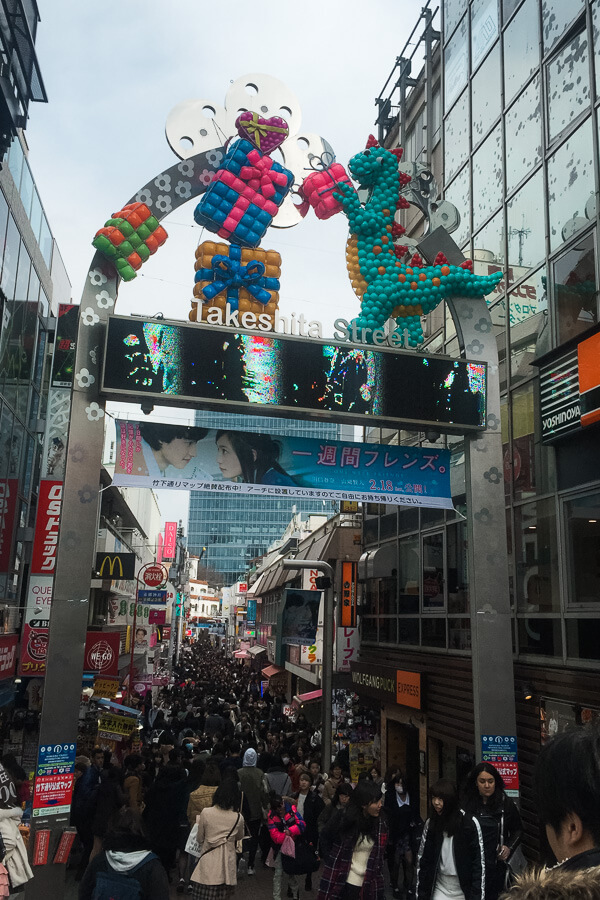
It can be overwhelming, particularly if you visit on the weekend!
My recommendation is to walk down Takeshita Street first before it gets too crowded, and then head to the quieter Omotesando Hills area. The Omotesando Hills consists of manicured streets with trendy boutiques and hip cafes, and is likened to the “Beverley Hills of Tokyo.”
Walk to Tokyu Plaza Omotesando, and make sure to check out the mirror entrance for a cool photo spot! You’ll also pass by Kinji Used Clothing, a massive second-hand clothing store that is a favourite of mine for high-quality, affordable used clothing.
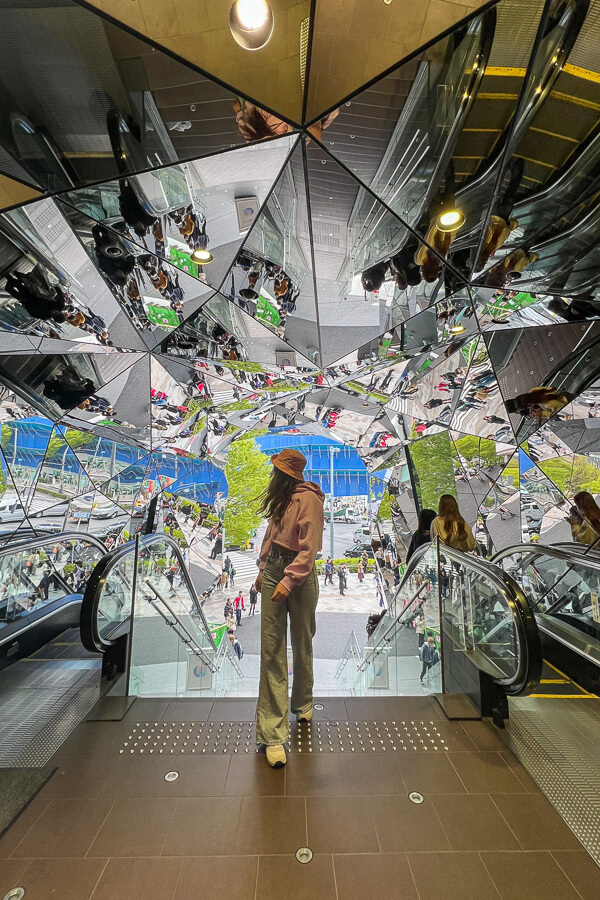
Continue exploring the trendy shopping streets – Cat Street is relatively quiet when compared to Takeshita Street, and you’ll find many trendy clothing stores and cute cafes.
If you need a snack stop or lunch, around the corner you’ll find Harajuku Gyozaro , a popular restaurant that specialises in dumplings. You’ll often see a line out the front (not an uncommon sight in Japan), but it moves quickly and is worth it!
Cross over the Jingumae Pedestrian Bridge .
In these picturesque streets, you’ll find Koffee Mameya, a cult specialty coffee store as well as the popular Tonkatsu Maisen Aoyama – one of the best-regarded tonkatsu (breaded pork cutlet) restaurants in the city.
We once got here before it opened for the chance to try their “Tokyo X” black pig pork katsu which is so exclusive it is only served to 5 customers a day! While it was delicious, I’m not sure we noticed enough of a difference to be worth the extra price.
If you need a coffee stop, another of our favourites in the area is Streamer Coffee Company . They have two coffee locations, but the one north of Omotesando is unique in its design with its multi-storied, narrow building made out of shipping containers.
Meiji Jingu Shrine
Cross the train line and meander towards the Meiji Jingu Shrine .
Open every day of the year, entrance to Meiji Jingu is free. You’ll pass the wall of sake barrels before passing under a large torii gate and entering the shrine. Nestled amongst nature, a visit to this 100-year-old shrine is a peaceful and tranquil experience compared to the hustle and bustle of the streets of Harajuku.
Open: Daily (times vary, check here ) Entrance: Free
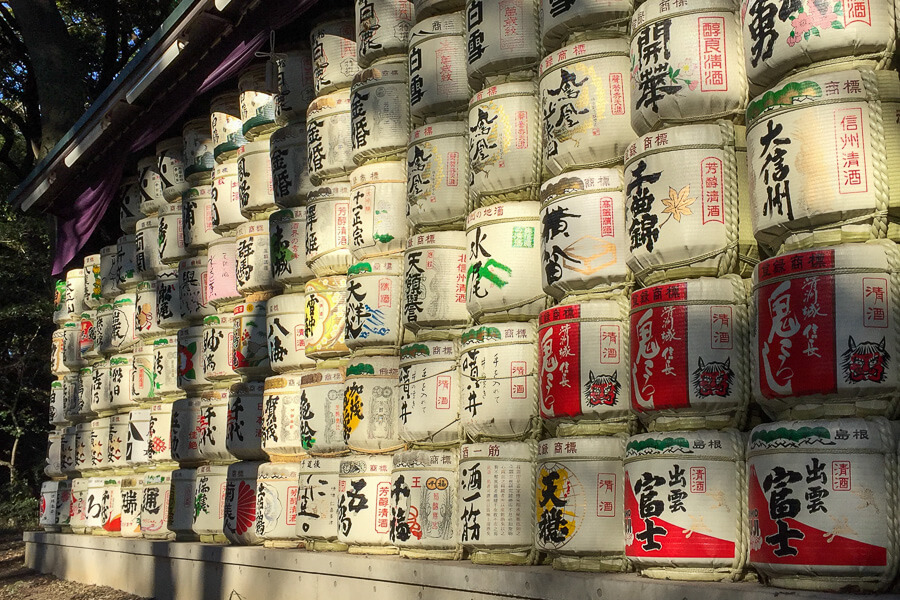
Shibuya
Walk or catch the subway one stop to Shibuya Station, spending the rest of your afternoon and evening exploring this iconic hub of Tokyo.
Near the station, make sure to stop by the Hachiko statue , the heartwarming memorial of the loyal dog who waited for his owner by the station each day – even after his death. These days, it’s used as a meeting point for groups of friends before exploring or dining in Shibuya.
Right next to the station and the Hachiko statue is the world-famous Shibuya Scramble Crossing, which is considered the world’s busiest pedestrian crossing – an estimated over 2.4 million people cross Shibuya every day ! An estimated 2,500 – 3,000 people are crossing this particular spot at a time.
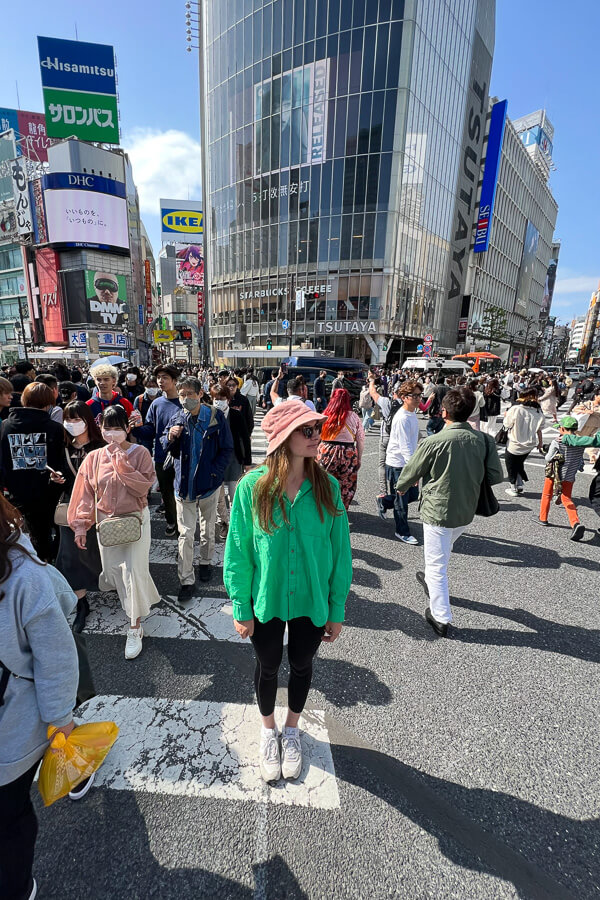
The crossing is best viewed from above – on our first visit, we headed to the Starbucks across the road and sipped on lattes while watching the thousands cross below.
On our most recent visit, we bought tickets to the new Shibuya Sky attraction. This popular spot offers insane 360-degree views of Shibuya and the endless sprawl metropolitan sprawl of Tokyo from an open-air observation deck on the rooftop of the Shibuya Scramble Square (47 floors high!).
Tickets are available 4 weeks in advance, and sunset sessions book out very quickly. So make sure to book your ticket ahead of time here.
Open: Daily 10am – 10.30pm Entrance: ¥2200 – purchase online tickets easily with Klook (bookings available 4 weeks in advance)
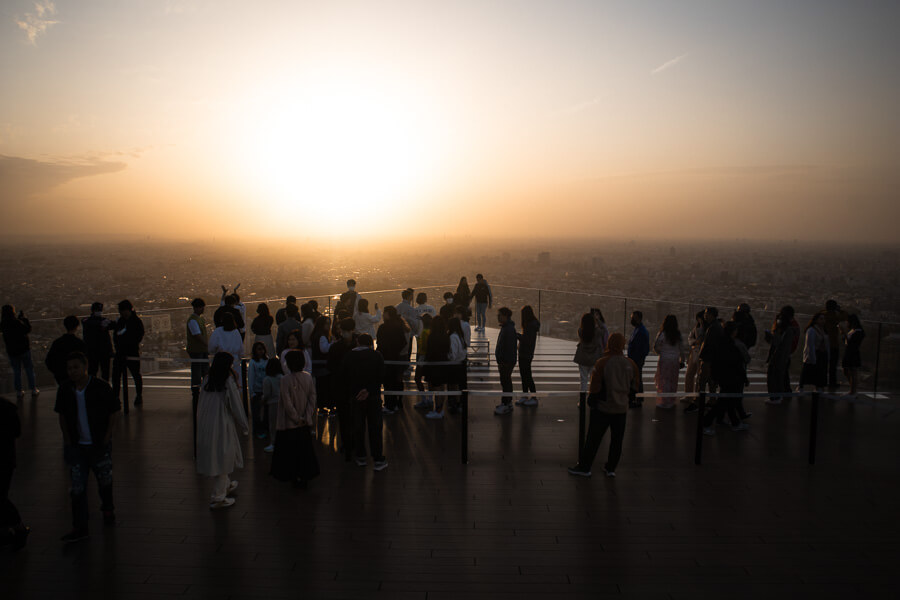
For food, we wandered the Dogenzaka-dori and found a small izakaya in a basement. You’ll find lots of spots like this, or head to the ever-popular Ichiran ramen restaurant chain for a must-try bowl of noodles.
For a local perspective, explore Shibuya with a local guide – you’ll visit some lesser-known spots while learning about the history, sights and local recommendations from your guide.
Gotokuji Temple
Start your second day in Tokyo by catching the Odakyu Line to Gotokuji Station. From here, it is a 15-minute walk through the local neighbourhood to Gotokuji Temple, otherwise known as the Lucky Cat Shrine .
Open: Daily 6am-5pm Entrance: Free
This Buddhist temple doesn’t appear to be anything unique until you get to a small section in the back corner which is filled with hundreds (if not thousands) of Maneki Neko lucky cat figurines. As cat lovers and big Japanese culture fans, this was a must-visit attraction for us!
This is definitely an underrated and lesser touristed attraction in Tokyo, we loved walking through the temple grounds, admiring all the maneki neko statues and taking photos around the temple and grounds.
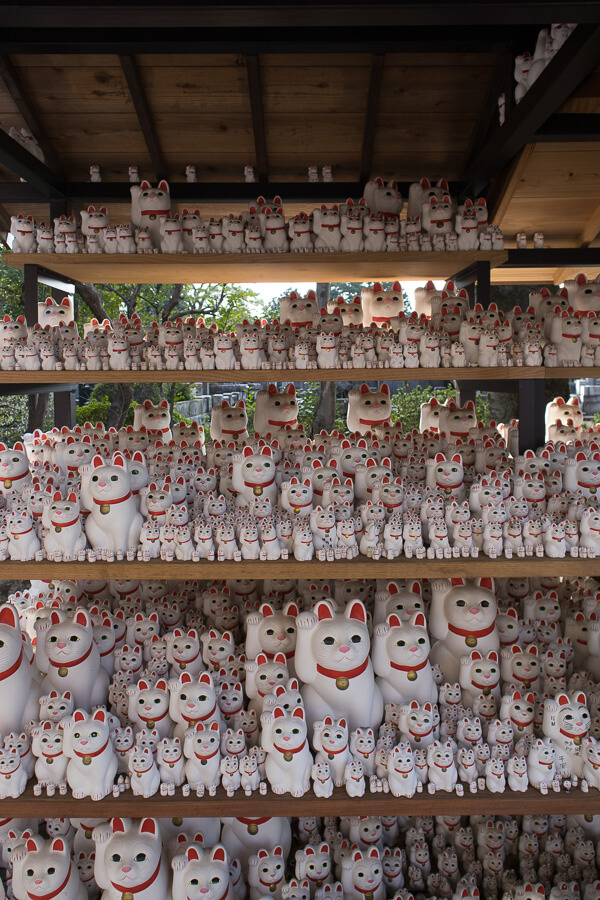
Shimokitazawa
After a visit to the Gotokuji Temple, it was easy to jump back on the Odakyu Line at Gotokuji Station and travel one stop to Shimo-Kitazawa Station.
Shimokitazawa is a trendy neighbourhood best known for its large range of vintage and second-hand clothing boutiques. The stores are generally more upmarket and include vintage designer items and one-of-a-kind items.
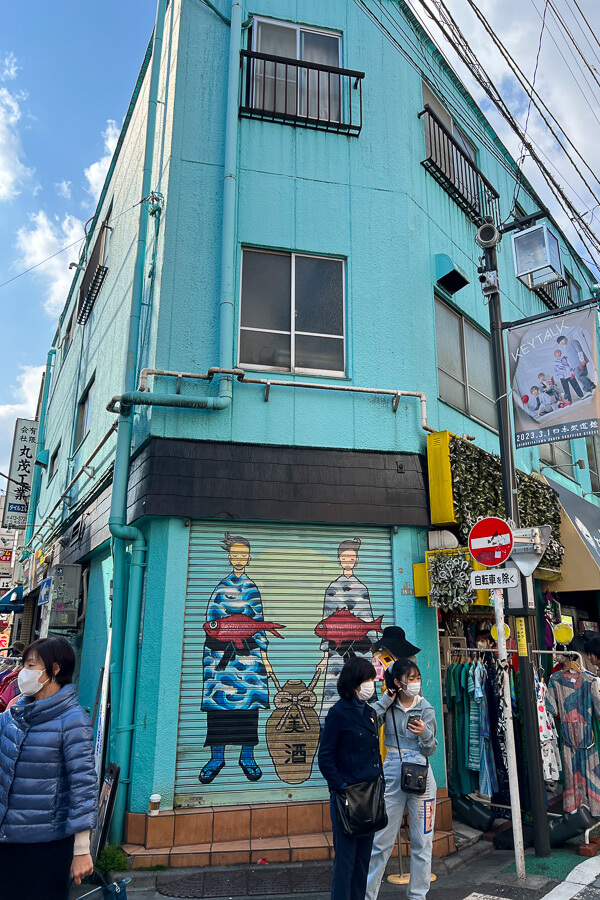
There are also many cosy, hip cafes, and many specialty coffee stores (perfect for the coffee-lovers like us!). We enjoyed a unique coffee experience at the trendy, minimalistic-designed Ogawa Coffee Laboratory .
You choose your beans at the counter from a large list based on your flavour and roast preferences, before watching your coffee be prepared in front of you. We also tried their house specialty, square scones.
You’ll find the largest concentration of vintage stores in the area north of the station, whereas east of the station is more boutiques and quirky stores. You’ll find you can easily spend a few hours wandering the streets and browsing the boutiques.
Spend the rest of your afternoon and evening exploring the bright lights of Shinjuku.
If you need a break from the fast-paced city vibes, Shinjuku Gyoen National Garden is stunning, especially when we visited during cherry blossom season .
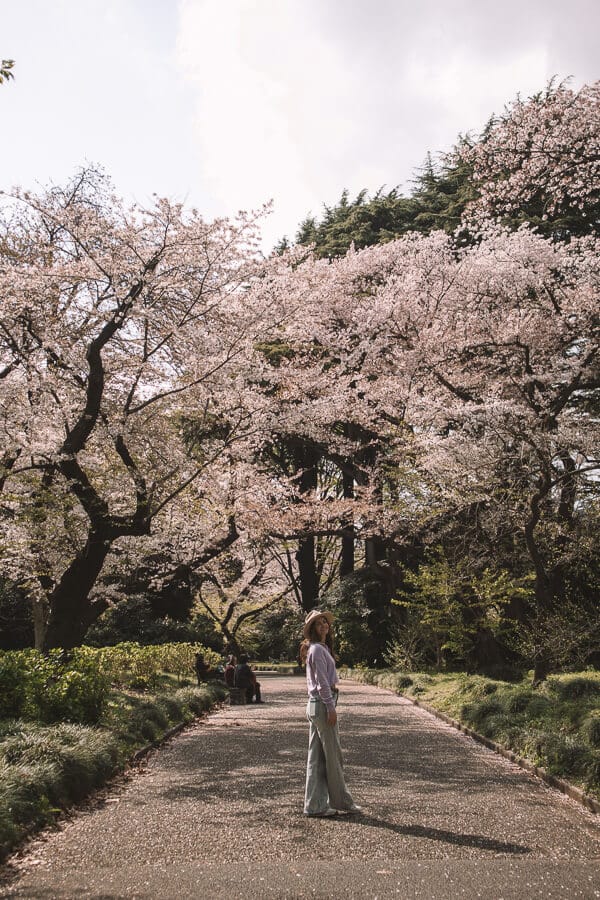
With over 144-acres of expansive grassed areas, serene lakes, tranquil greenhouses and landscaped Japanese gardens. Great to visit in spring (cherry blossoms) or autumn (autumn colours).
Open: Daily except for Mondays. Special opening times apply in April and November Entrance: ¥500
Shinjuku is another shopping haven – we went to our first Don Quijote here in Shinjuku.
Don Quijote is an overwhelming and somewhat chaotic shopping experience, but also a haven for tourists wanting to get unique Japanese snacks, gifts or nick-nacks. I also love the affordable Japanese skincare here!
If you need a coffee break and rest stop, the pudding at All Seasons Coffee blew our mind!
My favourite things to do in Shinjuku at night include eating, drinking and visiting the massive game arcades. A favourite dinner spot for tourists and locals alike is the Standing Sushi Bar to the west of Shinjuku at Uogashi Nihon-ichi. We come here every time we visit Tokyo and it never disappoints!
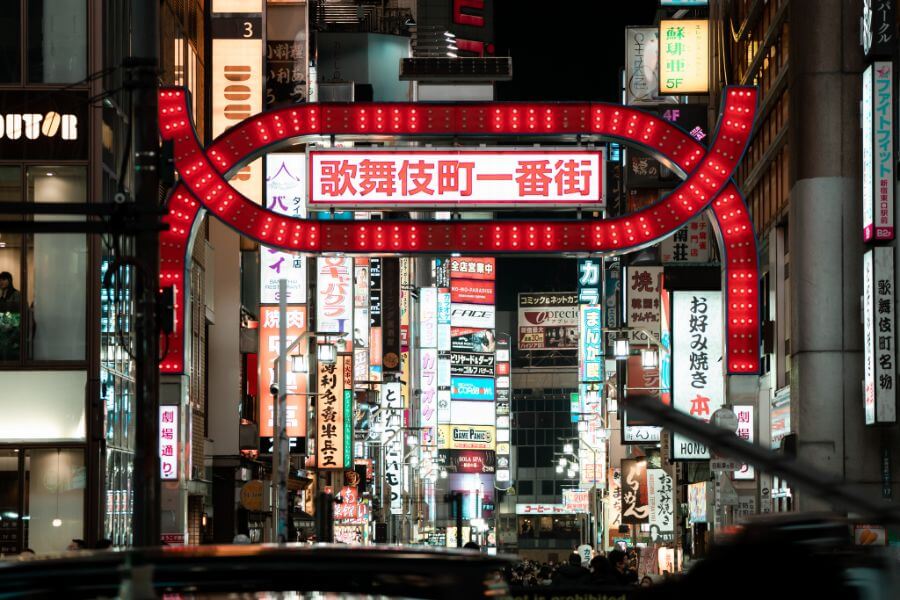
You’ll find a large SEGA game arcade around the corner, making it a great spot for some after-dinner entertainment.
On our most recent Tokyo trip in 2023, I discovered an amazing sake bar in Shinjuku hidden away on the upper floor of a nondescript building. We learnt so much about the different styles of sake at Yata Yata while taking in the bright lights of Shinjuku for the window on the 10th floor – highly recommend!
Shinjuku is also home to a few sake markets . At these popular bars, you pay a fixed price for all-you-can-drink sake that you serve yourself. You can buy a few snacks from the bar, or bring your own food from the local convenience store. This is our favourite way to try new and different sake styles!
Reserve your sake market experience in advance here .
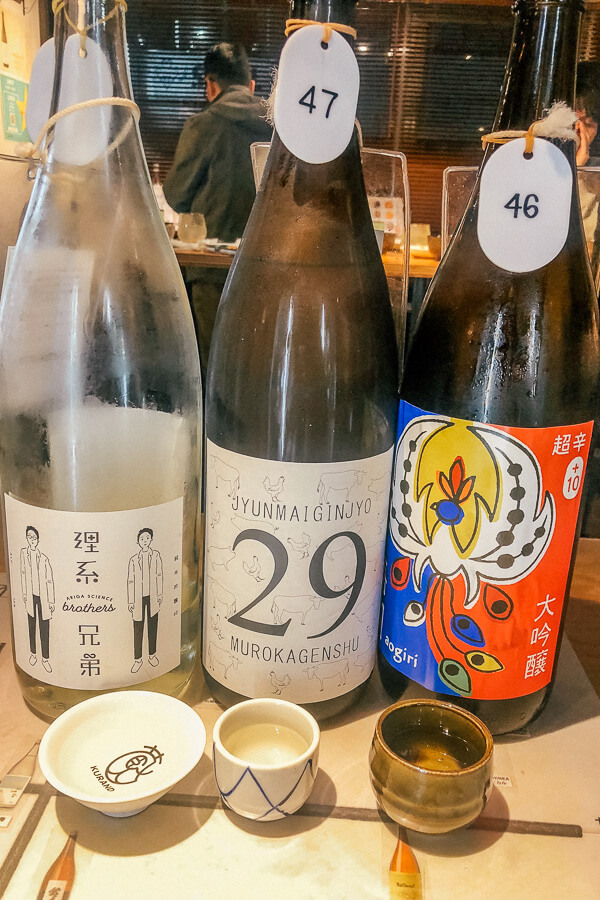
It’s also worth strolling the Kabukicho red-light district – you’ll know you are in the right place when you see the giant Godzilla head peeking over the top of Toho Cinema and Hotel Gracery!
We came here on our very first visit to Japan in 2013 to visit the famous Robot Restaurant, which unfortunately closed during COVID.
Nearby you’ll discover the Shinjuku Golden Gai , a maze-like area of small alleyways with little bars and local izakayas scattered around.
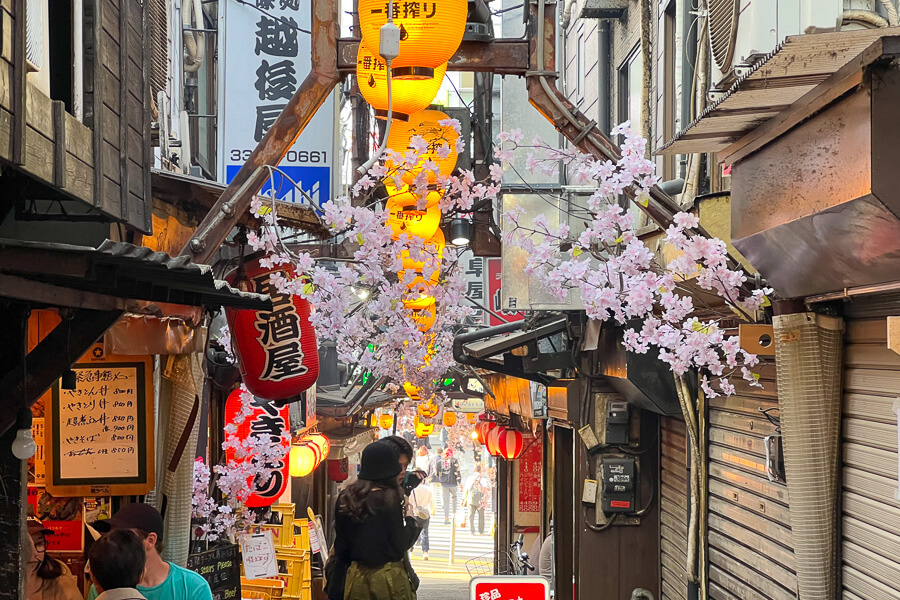
Another popular izakaya street is found near the train tracks at Omoide Yokocho – or Piss Alley as it is affectionately known! This small alleyway comprises local eateries where you sit shoulder to shoulder with Japanese businessmen, eating grilled skewers of meat and drinking beer.
Lastly, don’t miss the famous Shinjuku 3D cat billboard ! I stood here for at least 15 minutes watching the lifelike animated cat on the giant billboard above. You’ll find it around the corner from Omoide Yokocho here .
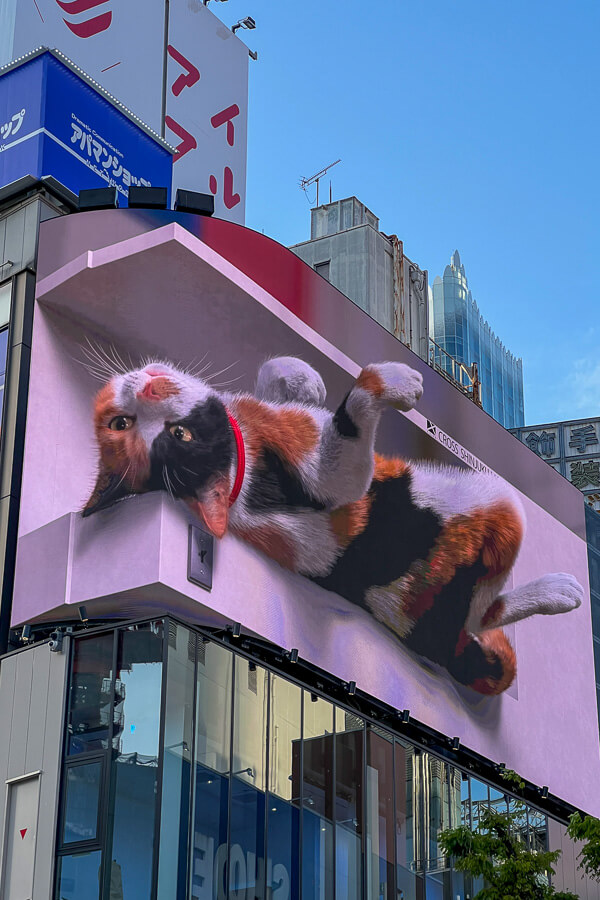
Asakusa, Senso-ji and Tokyo Skytree
In the morning, make your way to the traditional Asakusa district and one of Tokyo’s most famous temples, Senso-ji. As one of the main tourist areas in Tokyo, this area gets busy! So it’s a good activity to do earlier in the day, although many of the shops won’t open until 10am.
You’ll begin by stepping through the large Kaminarimon lantern gate, marking the entrance to Senso-ji temple and leading into Nakamise Shopping Street.

This bustling street is lined with numerous souvenir shops, food stalls and other treats. Sample local food while browsing the different shops, but please note that in Japan it is considered rude to walk and eat (you might see signs asking you to stand outside the food vendors to eat in many food markets around the country).
Continuing along the street, you’ll soon reach Senso-ji – Tokyo’s oldest Buddhist temple.
Open: Daily 6am – 5pm Entrance: Free
Explore Asakusa on an informative rickshaw tour . Pass temples and shrines, explore quirky neighbourhoods, venture through Sumida Park and traverse historic streets with a local guide.
If you’re interested in visiting a cat cafe, near Senso-ji you’ll find a great ethical option at Cat Cafe Asakusa Neko-en . Here, the cats are all rescues and available for adoption. Please re-consider visiting any other animal cafes, particularly exotic animal cafes such as owl cafes or hedgehog cafes – these aren’t ethical or sustainable places.
After exploring the temple grounds, you can head to the Tokyo Skytree . Until the opening of Shibuya Sky, Tokyo Skytree was the most popular observation deck in Tokyo!
Standing at 634 metres tall, it is Tokyo and Japan’s tallest tower! It has the highest observation decks in Japan – the lower deck (Tembo Deck, 350 metres) and upper deck (Tembo Galleria, 450 metres). Unlike Shibuya Sky, both decks are enclosed and protected from inclement weather.
It is recommended to buy tickets in advance, to avoid long queues for tickets (particularly on weekends).You can buy a ticket just for the lower Tembo Deck, or a combined ticket for both the Tembo Deck and Tembo Galleria. Prices are cheaper for tickets bought before the day of visit. You can check prices and book here.
Open: Daily (opening times vary, usually from 10am – 9pm but check first) Entrance: Varies based on ticket type – official prices start from ¥1800 but you can usually get cheaper tickets during non-peak periods by booking in advance with Klook .
Akihabara
Akihabara is one of my favourite places in Tokyo. The minute I step out of the train station and onto the vibrant streets, surrounded by flashing neon billboards on every possible building surface, I always get the biggest buzz.
Akihabara Electric Town, or “Aki” as it is affectionately called, is famous for its electronic shops and pop culture fans. Here you will find all kinds of electronics and gadgets, Japanese pop culture anime including anime, manga, video games and toys, maid cafes and other themed restaurants as well as many video arcades and game centres.
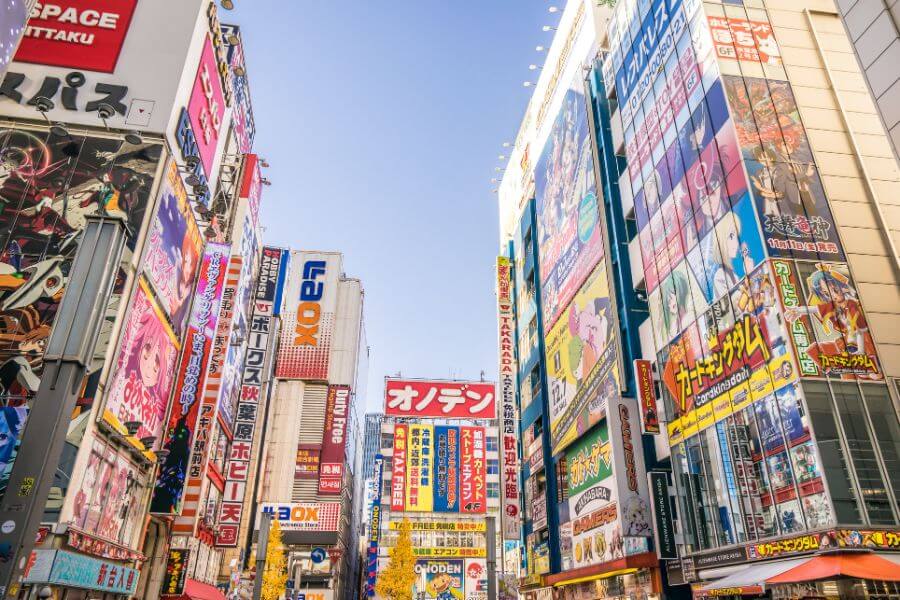
Spend most of your time here exploring the many, many stores. Some of my favourites include Mandarake, Super Potato and Book Off. Akihabara is also the place in Tokyo to visit a cosplay maid cafe. You can pre-book this experience here.
For a fun activity, zoom around the streets of Akihabara on this go-kart tour . 1 or 2-hour experiences are available, and you’ll need to bring an International driver’s licence.
Get more information on this highly-rated memorable experience .
For lunch, we decided to try the Akihabara location of Gyukatsu Motomura . This bustling restaurant was one of my favourites on our most recent trip. The concept here is beef katsu, but you cook it yourself on a stone plate to your liking. It comes as a set meal with rice, miso soup, cabbage and a few sauces, and it was the tastiest katsu I’ve EVER had!
We had to line up for nearly 30 minutes even at 2pm, but it was SO worth it!
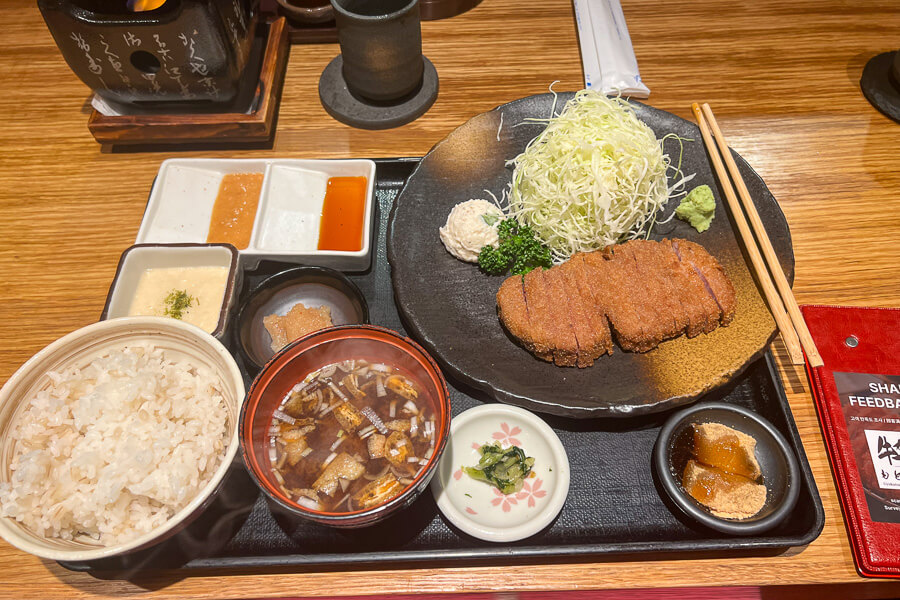
If you are looking for a nearby dinner spot, we had a great local izakaya experience at Darumasakaba in Kanda.
We were the only foreigners in this downstairs restaurant packed with locals, but the friendly owner found us a seat at the bar, and with his help and Google translate we worked our way through the menu in Japanese. One of those nights that was an experience we won’t forget anytime soon!
Bonus: Nezu Shrine
If you have daylight time remaining, a short train ride away will take you to Nezu Shrine . This is one of Tokyo’s underrated gems, off the beaten path for the majority of tourists when we last visited.
At Nezu shrine, you can wander through numerous orange torii gates leading to a small, tranquil shrine, reminiscent of the popular Fushimi Inari in Kyoto.
Open: Daily 5am – 6pm Entrance: Free
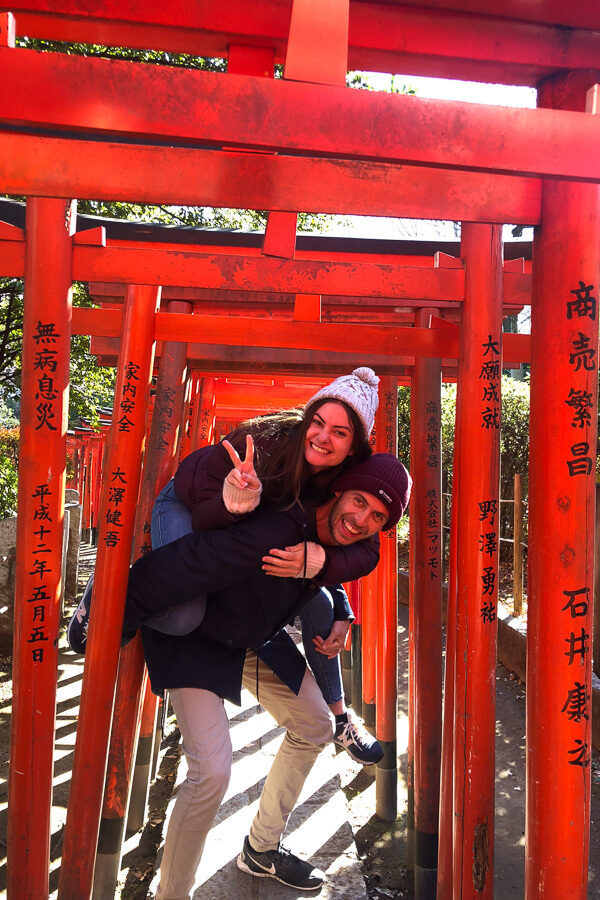
Day 4: Tsukiji Market, TeamLab Planets & Ginza
Tsukiji market.
A quintessential Tokyo experience I highly recommend is passing up on a hotel breakfast one morning in favour of a fresh sushi breakfast instead at Tsukiji Outer Market.
Tsukiji, the biggest fish market in the world, moved its wholesale operations to the new Toyosu Market in 2018. However, the iconic Tsukiji Outer Market, consisting of restaurants and small market stalls, remains in its original location in the Chuo City district.
Here you can sample some of the freshest sushi and seafood in the world for breakfast.
On my most recent visit in April 2023, we enjoyed fresh tuna and salmon donburi (rice bowl) at Tsukiji Donburi Ichiba . This tiny shop has counter seating for just 5 customers at a time, making it an intimate affair.
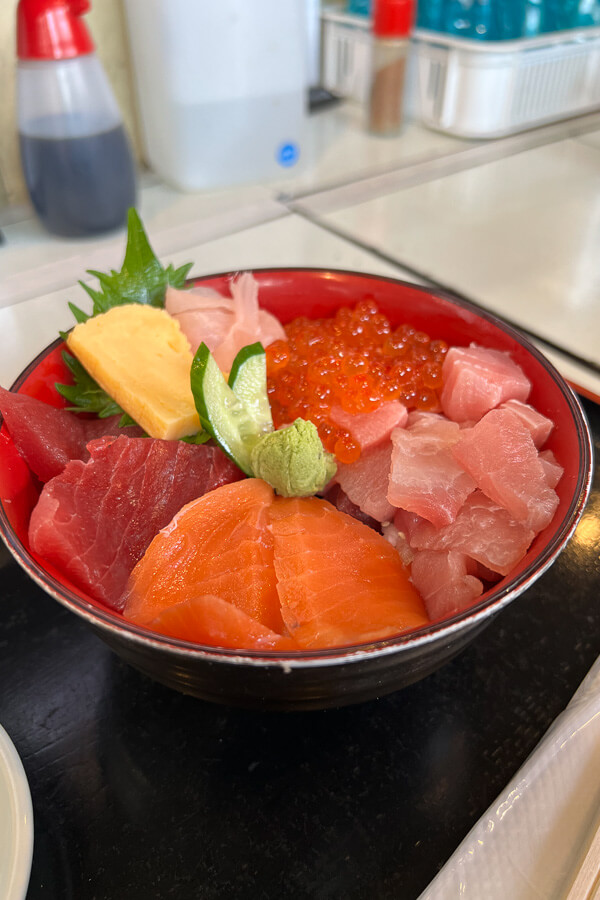
Popular sushi restaurants at Tsukiji Markets include Tsumugi, Tsukijiro, Motodane and Sushizanmai (a chain store across Tokyo, but this is their Main Branch). You’re also guaranteed to find a perpetual queue lining up outside Sushi Dai.
You can also try a variety of snacks from the various market stalls – we tried tomago (egg) on a stick, grilled unagi (eel), delightful strawberry mochi and my all-time favourite, delicious taiyaki (steaming hot custard-filled pastries in the shape of a fish) served by a lovely old lady at Tsukiji Sanokiya.
I’m drooling just thinking about those taiyaki – they were the best we had during our one month trip to Japan!
Wander the markets at your own pace, or join a local guide on a food tour .
TeamLab Planets
After eating way too many delicious things, we caught the bus a short ride down the road to TeamLab Planets. This was my second visit to a TeamLab exhibition, after visiting TeamLab Borderless a few years ago.
The TeamLab interactive displays are truly mesmerising and a work of art, so it’s highly worth visiting one of their displays.
At the time of writing in November 2023, TeamLab have exhibitions in Tokyo at TeamLab Planets and in Osaka at TeamLab Botanical Garden. In February 2024, TeamLab Borderless is due to reopen at a new location in Azabudai Hills.
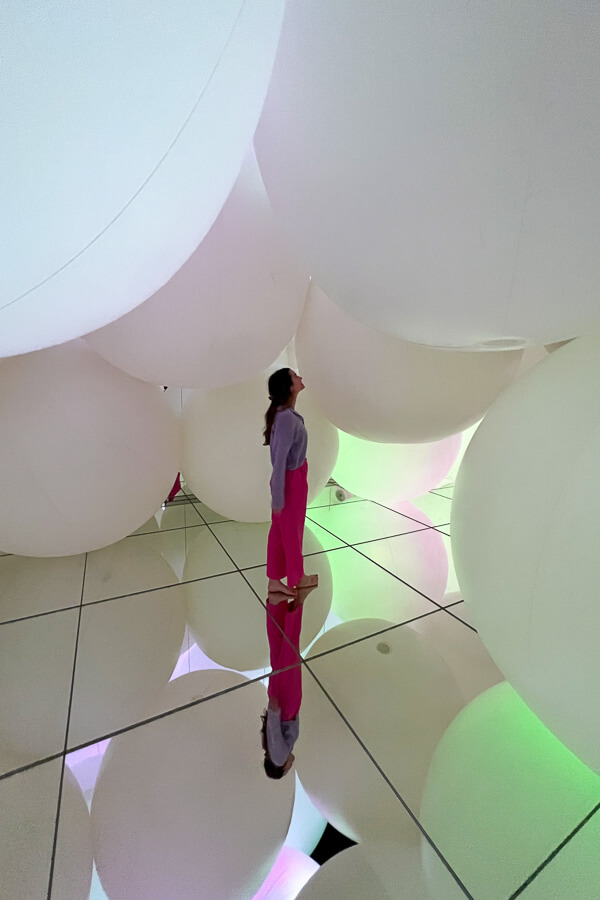
At TeamLab Planets , you walk through water, rooms full of sparkling floor-to-ceiling lights and giant colourful balls, and sit beneath a garden of flowers. It’s a surreal experience, and worth visiting at least one of the TeamLab exhibitions while in Japan.
You will need to book a specific time slot for your visit, and tickets sell out in advance – so make sure to book at least a few weeks ahead! I found it easier to book with GetYourGuide , as it was easier to select time slots, however, Klook also has tickets for sale.
Open: Daily 9am – 10pm Entrance: ¥3,800 – timed entry tickets need to be purchased in advance
Make your way to the high-end, glamorous shopping district of Ginza.
Considered the mecca of luxury shopping in Tokyo, we spent most of our time wandering around the posh streets and admiring the lavish store displays. Make sure to walk past the Bulgari flagship store to see the glittering serpent wrapped around the building.
Other fun things to do in Ginza include visiting the Art Aquarium Museum (a museum of goldfish!), visit UNIQLO’s biggest flagship shop or watch a kabuki play and the Kabukiza Theatre.
After window browsing or shopping up a storm, you can try Michelin Bib Gourmand rated tempura at Tempura Abe Honten – but be prepared to queue! Another recommended spot is Ginza Hanadaikon, which serves delicious wagyu beef.
Day 5: Hie Shrine, Imperial Palace, Tokyo Station & Ikebukuro
Start your day with a morning visit to Hie Shrine , another spot in Tokyo with the famed orange torii gates.
The entrance to Hie Shrine is impressive, with a large torii gate standing tall before the long flight of steps leading to the top of the hill. Here you will find the Hie-jinja shrine, a guardian shrine of the Imperial Palace (which you’ll also be visiting later today).
On the western entrance, you’ll find a tunnel of torii gates lining the steps leading to the back of the temple.
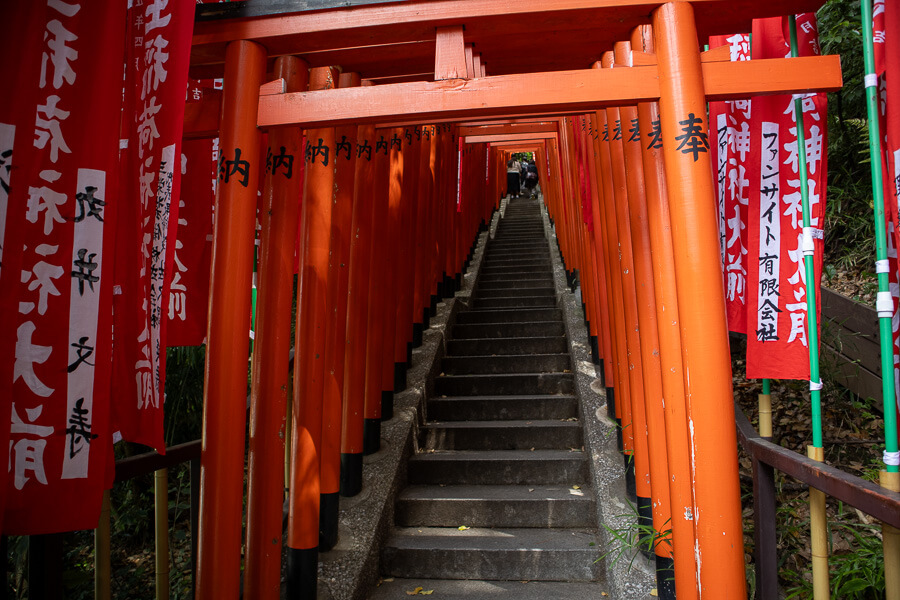
Imperial Palace Gardens
Hop on the Chiyoda line at nearby Kokkai-gijidomae Station and travel 3 stops to Nijubashimae Station. You’ll surface at the entrance of the Kokyo Gaien National Garden plaza and views of the Imperial Palace.
Located on the site of the former Edo Castle, the Imperial Palace is home to the Emperor of Japan. The palace is surrounded by impressive gardens, massive moats and towering stone walls.
The inner grounds and palace are closed to tourists, but you can explore the expansive and picturesque East Gardens for free most days of the week.
Open: Generally 9am-5pm but varies seasonally. Closed Mondays and Fridays. Check official opening times and dates here Entrance: Free
Tokyo Station
The next attraction on your Tokyo itinerary for today is the massive Tokyo Station . Much more than just a train station, Tokyo Station is a historic landmark and bustling hub of shops, restaurants and more.
Walk from the East Gardens to the Marunouchi Square entrance of the station. Admire the classical red-brick facade that has been carefully restored to its original state, standing out from its neighbours of modern skyscrapers.

Head underground and explore the maze-like streets below the station. Tokyo Station has unique themed sections. Make sure to visit Character Street, with shops selling Japanese anime goods, including a small Pokemon store.
Grab lunch from one of the many restaurants on Ramen Street, where you can find all kinds of ramen styles from across Japan.
Ikebukuro
Spend the rest of your day exploring Ikebukuro , which I best describe as a smaller but still vibrant version of Shinjuku. On our last two trips to Tokyo, we stayed in Ikebukuro at one of our favourite budget accommodations in Tokyo, Kimi Ryokan.
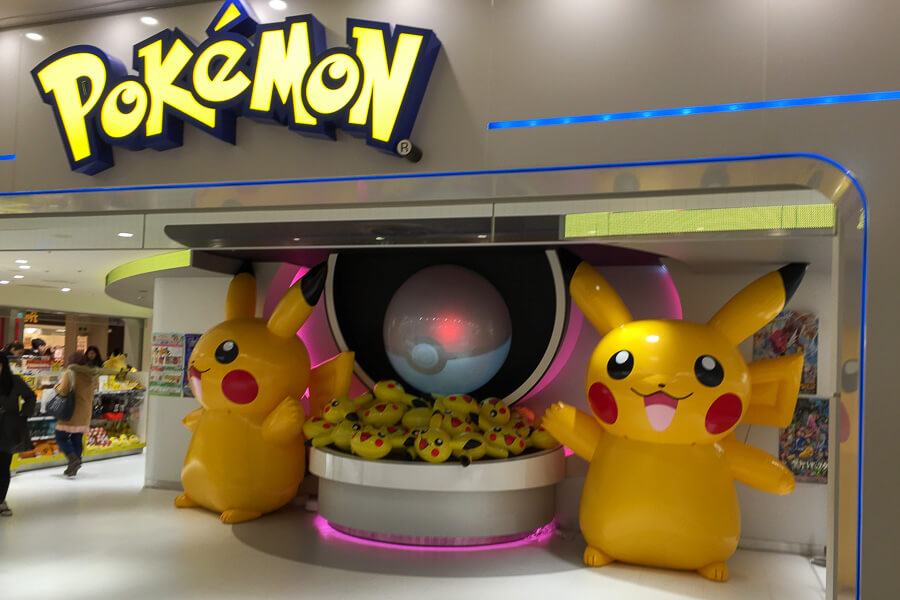
In Ikebukuro, you’ll find many electronic stores and department stores, some great coffee shops (like Mermaid Coffee Roasters) and brilliant ramen restaurants (hello, Kikanbos).
Head to Sunshine City Mall, home of the mega Pokemon Center, and the world’s largest gashapon (gacha gacha) capsule toy store at Gashapon Ikebukuro.
Day 6: Experience the Magic of Disneyland or DisneySea
Get ready for a magical day at Tokyo Disneyland ! This was the first Disney theme park outside of the United States when it opened in 1983. Today, Tokyo Disneyland has seven different themed worlds.
Tokyo Disneyland is easily accessed through public transport. Get off at JR Maihama Station on the JR Keiyo/Musashino Line and jump on the Disney-themed monorail to arrive at Tokyo Disneyland Station.
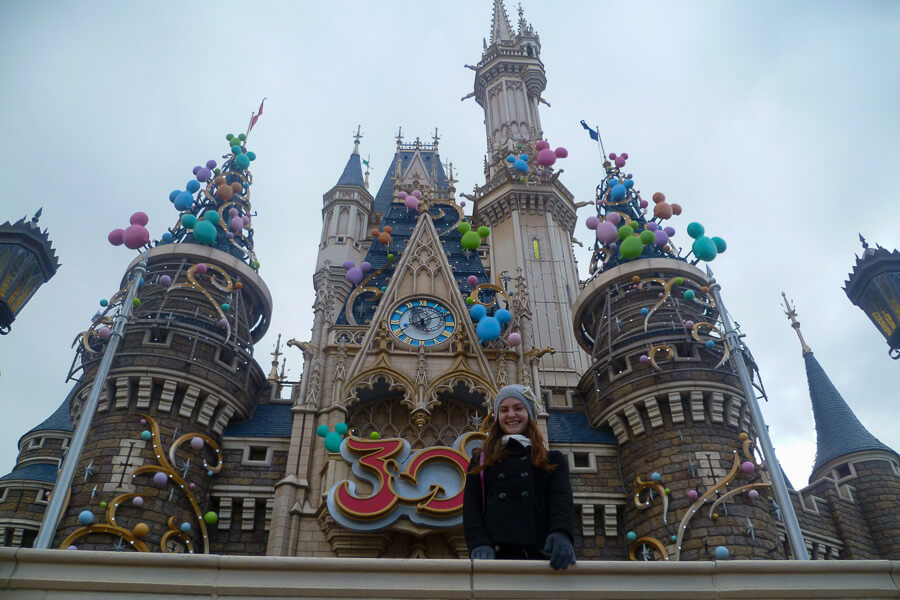
Tokyo is also home to the only DisneySea in the world!! On our second visit to Tokyo, we chose to spend the day at DisneySea after doing Disneyland on our first trip. DisneySea was spectacular, and many argue that its rides are better than Disneyland
I think if you haven’t been to Disneyland anywhere else before, you should stick with Disneyland Tokyo, otherwise seriously consider visiting DisneySea while in Tokyo as it is arguably the better theme park, and you can’t visit one anywhere else in the world!
- 1 Day Pass (Disneyland or DisneySea)
- 2 Day Pass (Disneyland, DisneySea or both)
Open: Daily, usually from 8am to 10pm Entrance: From ¥8,900
There are some incredible day trips from Tokyo that you should consider adding to your 7 days in Tokyo itinerary.
Hakone is a picturesque hot spring town that is a lovely day or overnight trip from Tokyo. It’s worth spending a night at a traditional ryokan if your schedule and budget permits, otherwise a day trip is a great way to soak in the incredible scenery and unique attractions in this mountainous area.
I visited Hakone on my very first trip to Japan in 2013. It is possible to do a self-guided tour of Hakone using the Hakone Freepass. We followed the popular Hakone Round Course itinerary which takes you through a loop of Hakone’s main attractions using a range of different modes of transport.
We caught the Hakone Ropeway where we crossed over the Owakudani Valley, famous for its volcanic activity and sulphur vents. You can even get views of Mt Fuji on a clear day! From here, you jump on a scenic boat cruise across Lake Ashi, where you’ll spot the large red torii gate of the Hakone Shrine on the lake’s edge.
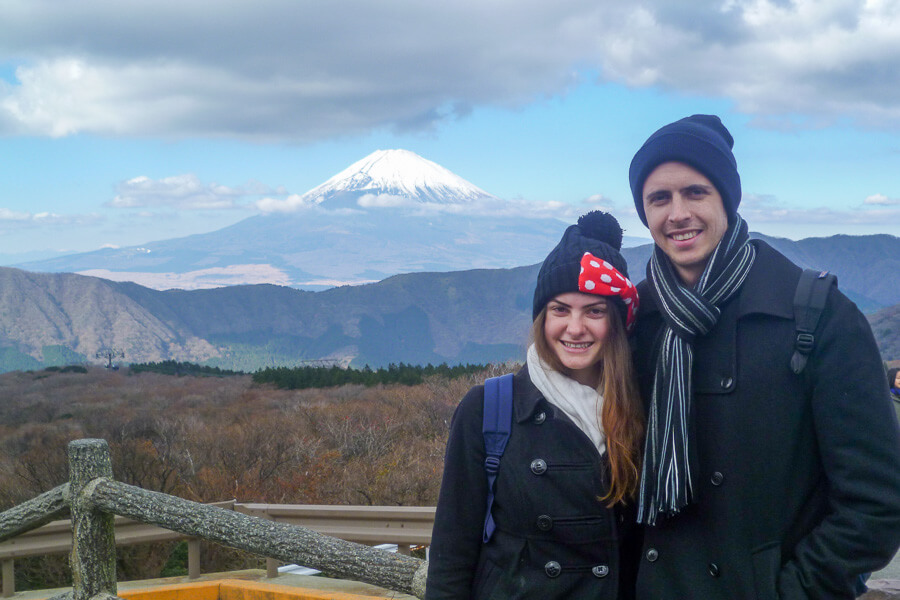
You can easily purchase a Hakone Freepass online which includes unlimited public transport (including the boat cruise across Lake Ashi). This 2-day pass is worthwhile even for a day trip if you are doing the full loop course in one day as a day trip from Tokyo.
If you prefer to join a guided tour with convenient bus transport included, consider this Hakone One Day Trip from Tokyo .
It includes a visit to the panoramic Mt Fuji Fifth Station, shopping at Gotemba Premium Outlets, riding the Hakone Ropeway, exploring the Owakudani Valley and a scenic cruise across Lake Ashi.
Lake Kawaguchi (Fuji Five Lakes area)
I recommend spending a few nights in Fuji Five Lakes if possible, otherwise to visit the best viewpoints of Mt Fuji , a day trip to Lake Kawaguchi is the way to go!
To visit Lake Kawaguchi on a day trip, joining an organised bus tour is the easiest and most convenient way to do so. Public transport in Lake Kawaguchi is limited and the main sights are spread across the town, making it hard to get to without your own transport in a day.
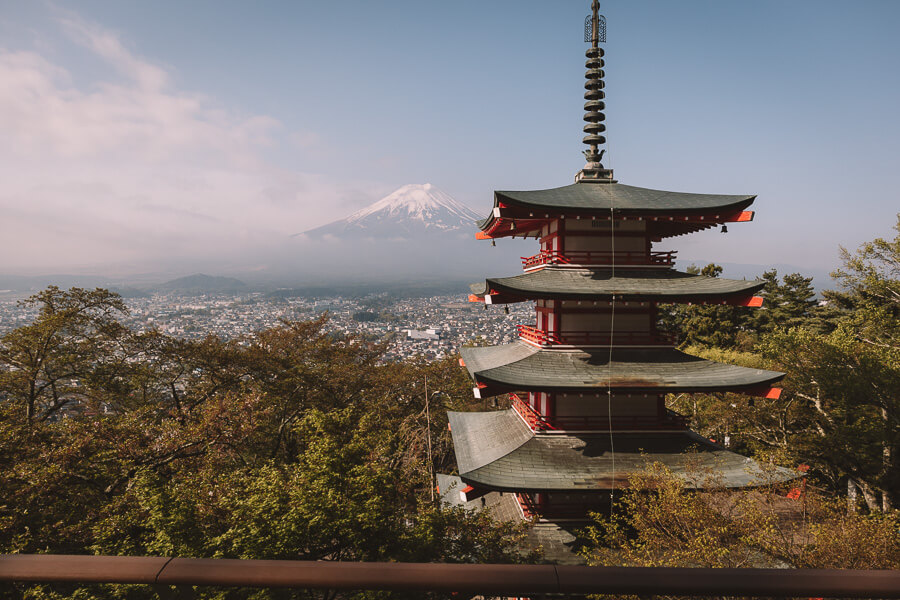
This tour takes you to the best Mt Fuji viewpoints in Kawaguchiko, including the beautiful Chureito Pagoda , Oishi Park and a visit to a traditional village on an easy and affordable day trip from Tokyo.
Another very popular Mt Fuji tour is the Mt Fuji Classic Route Day Tour .
This tour includes a stop at the Mt Fuji 5th Station, a visit to Oshino Hakkai, a series of pools thought to have been formed by erupting Mt Fuji and a shopping trip to Gotemba Premium Outlets, one of Japan’s largest outlets.
Final Thoughts – 7 Day Itinerary Tokyo
That wraps up this itinerary for Tokyo, 7 days of exploring the vibrant, cultural and quirky neighbourhoods that make up the sprawling metropolitan oasis that is uniquely Tokyo.
Whether it’s your first time exploring Tokyo, or even your fifth like me, this 7 days Tokyo itinerary will ensure there is never a dull moment!
If you have any questions about this 1 week in Tokyo itinerary, please feel free to include them in the comments below. Don’t forget to check out my other Japan guides to help plan your trip!
Plan your Japan adventures :
- 15 Things to Know Before Visiting Japan for the First Time
- 30 Unmissable Experiences for Your Japan Bucket List
- A Perfect 4 Weeks in Japan Itinerary: Ultimate Travel Guide
- How to Easily Visit the Chureito Pagoda from Tokyo
- An Exciting 4 Days in Osaka Itinerary for First-Timers
- 2 Days in Takayama: Discover Traditional Japan
- Koyasan Temple Stay: Essential Travel Guide & Tips
- Exploring Fuji Five Lakes: 3 Days in Kawaguchiko Guide
- 10 Most Mesmerising Views of Mt Fuji from Kawaguchuiko
- Cool Stuff to Buy in Japan: 20 Souvenirs Actually Worth Buying
TRAVEL PLANNING RESOURCES My tried and tested recommendations to make your next trip easier
🛡️ Travel Insurance: For my fellow Aussies, I use CoverMore for domestic and overseas travel insurance and they've been great to deal with. Travel with peace of mind knowing you're covered for unexpected events, ensuring a worry-free journey.
🌐 Stay Connected: After trying an eSim for the first time when travelling Japan & Europe for over 4 months in 2023, I'm officially converted! Thanks to Airalo , gone are the days of needing to physically swap plastic sim cards every time you enter a new country. Stay connected wherever you go by easily and affordably purchasing an eSim for all your travel destinations.
🚗 Easy Car Rental : Enjoy hassle-free car rentals on DiscoverCars with a wide range of options, competitive prices, and excellent customer service. I often find it's cheaper than booking direct, and I can compare a large range of suppliers to make sure I'm getting the best price.
💱 Access Local Currency: I've been using Wise in my business and on my travels to save on currency exchange and it's been a game changer! Wise provide a transparent and cost-effective way to access and manage local currency, with minimal fees and the best exchange rates compared to the traditional travel cards which sneakily charge extra fees and usually give you a poor exchange rate. Find out more here .
🏨 Accommodation: I book all my accommodation through booking.com . Discover their vast selection of accommodations worldwide, with great deals and flexible booking options. Plus, if you join their Genius Loyalty program, you get special benefits and discounts on selected stays.
🌟 Attractions & Tours: GetYourGuide is my preferred platform as they make it super easy to compare different tours, book experiences and get the best prices for tours across the world. I've downloaded their mobile app to have all my bookings in one place to easily pull up details when I've got multiple tours booked.
📸If you're wondering what I've used to capture the photos in this article, you can see what's in my camera bag here .
☕ Finally, if you found this free guide useful, you can buy me a coffee to say thanks :)
Just a quick note to let you know this post may contain affiliate links . At no extra cost to you, I receive a small commission on purchases made through these links. By doing so, you are supporting this blog and allowing me to continue providing you with free high-quality travel guides. Thank you!
4 thoughts on “A Fun 7 Day Tokyo Itinerary: Complete 1 Week in Tokyo Guide”
Hi, your post is very informative and I liked that you included some budget friendly options. We’re planning a 7 day trip to Tokyo in August for 3 people. I wanna ask how much is your recommended budget? Thanks in advance!
Hi Trixie! In April 2023, we averaged AUD $183 per person per day for our 4 weeks in Japan, including accommodation. You can see the detailed breakdown here: https://tessomewhere.com/4-weeks-in-japan-itinerary/#1_Month_in_Japan_Cost
If you are staying in Tokyo and not travelling to the cities, your cost might be a bit lower due not to catching the shinkansen. We tend to spend a lot on eating out too, and not as much on activities 🙂
Hi, your post is really helpful and very informative. I’m planning to visit Tokyo in December. I wanna ask if the itinerary will be the same like one you post here? Thanks in advance!
Thanks! Yes, you can follow a similar itinerary. December is a great time to visit, it will be very festive with lots of Christmas light displays and themed displays in shops etc 🙂 Just remember to check for public holidays etc when planning your itinerary (especially for visits to places like Disneyland etc as these will be even busier than normal)
Leave a Comment Cancel reply
Save my name, email, and website in this browser for the next time I comment.
- Skip to main content
- Skip to primary sidebar

Destinations
- Plan Your Trip
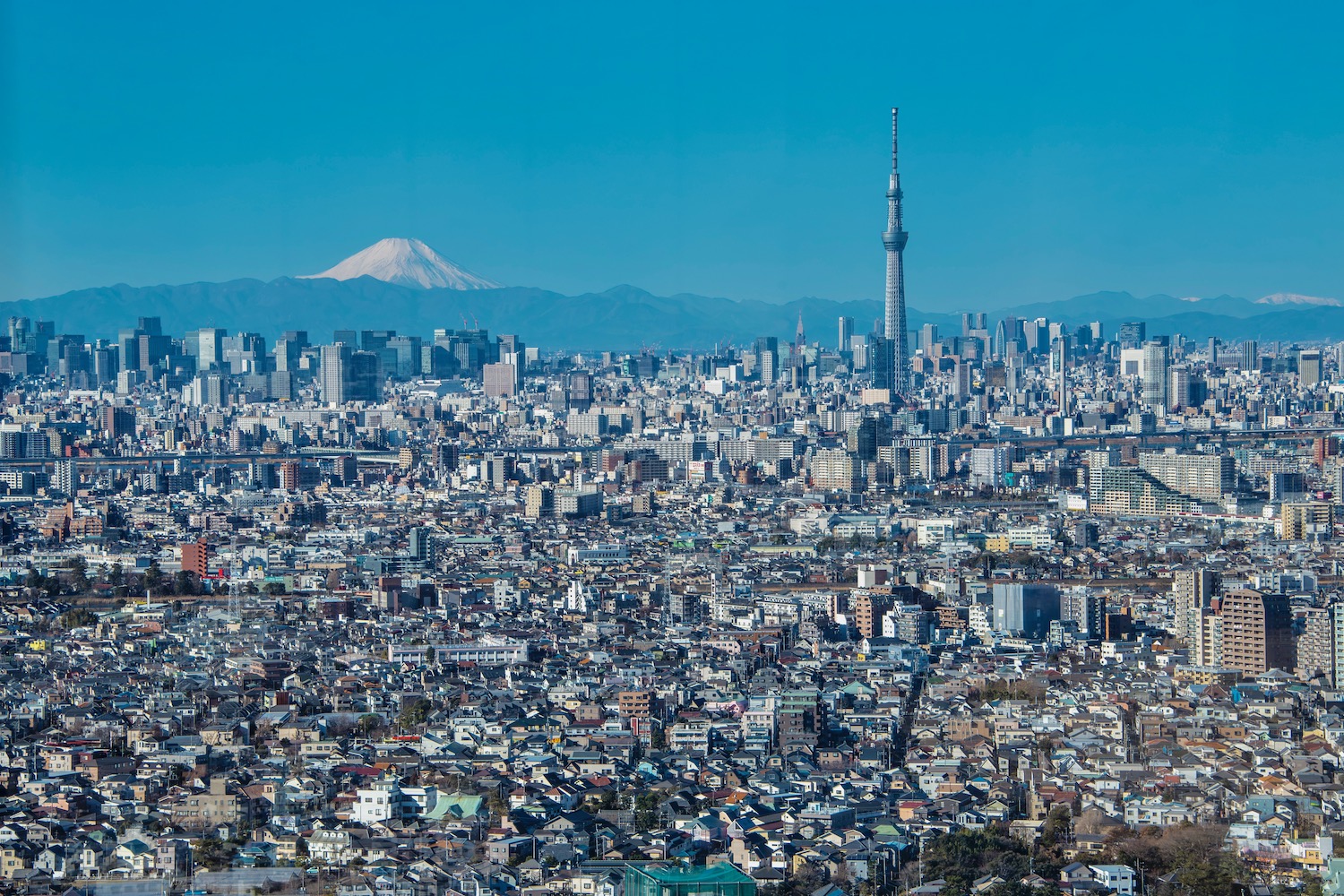
Tokyo Starts Here
Finding the right Tokyo travel guide can be the most stressful part of planning travel to Japan . This makes sense, of course—Tokyo is one of the largest cities in the world; it’s where your trip to Japan will likely begin and end. The stakes are high.
At the same time, when you break Tokyo down—it’s less one massive city, and more a constellation of medium-sized ones—it becomes much more manageable, digestible and understandable. Dare I say it’s actually a very easy and logical place to travel?
Well, if you’ve ever tried to find your way out of Shinjuku Station, you’ll know that isn’t necessarily true. Still, I think you’ll leave this page much more confident than you were when you arrived.
Where to Stay in Tokyo
Before I dig into specific things to do in Tokyo, let’s talk about an essential ingredient to your success: Staying somewhere close to where you want to be. If you feel equally enthusiastic about seeing all parts of Tokyo, a centrally-located hotel such as APA Hotel Kanda Ekimae makes the most sense, since you can reach distant districts like eastern Asakusa and Shibuya in Tokyo’s southwest in the same amount of time. If you’re searching for a higher-end hotel in this general area, meanwhile, the five-star Tokyo Station Hotel is as chic as it is convenient.
Of course, some travelers want to prioritize one particular area. Richmond Hotel Asakusa , for example, offers stunning views of Senso-ji temple with the Tokyo Skytree rising behind it, while Park Hyatt Tokyo is probably the ultimate luxury hotel in Shinjuku. Hotel the Celestine Ginza, meanwhile, is a dream for high-end shoppers and those with a taste for Michelin-starred restaurants. Another Tokyo accommodation strategy is to do an Airbnb search, and move the map around to where you want to be.
What to Do in Tokyo
Step into a world of nightlife (and neon signs).
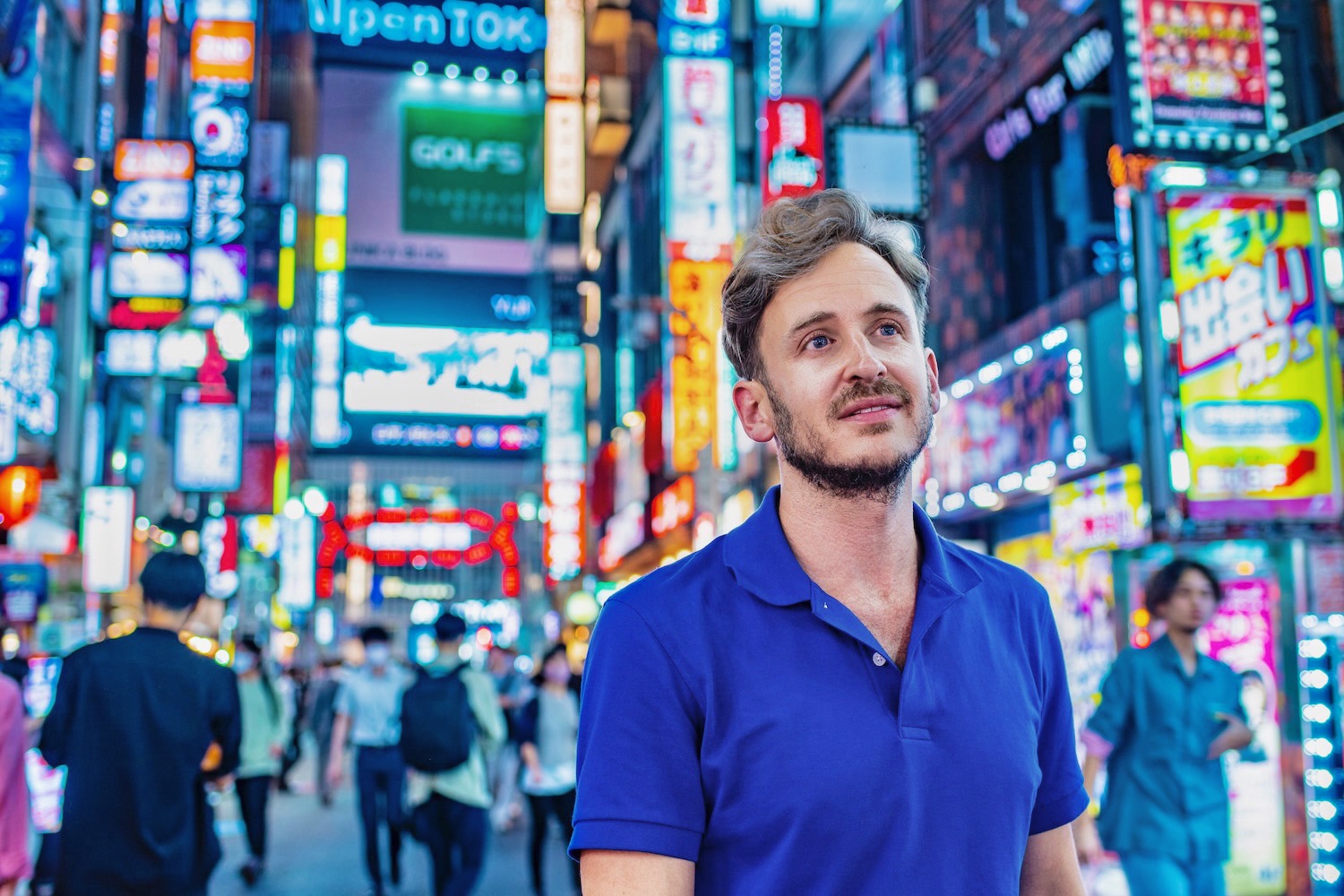
It’s no coincidence that so many impressions of Tokyo in pop culture and travel photograph depict the city at night. How you experience this yourself, however, is totally up to your preferences. Some are satisfied simply to walk amid the neon signs of Shinjuku’ s Kabukicho ward, or have a drink or two within the tachinomi standing bars of Omoide Yokocho alley, while others prefer to crowd into busy nightclubs in Roppongi , or try their luck in the arcades of the Akihabara “electric town.”
Eat your weight in sushi
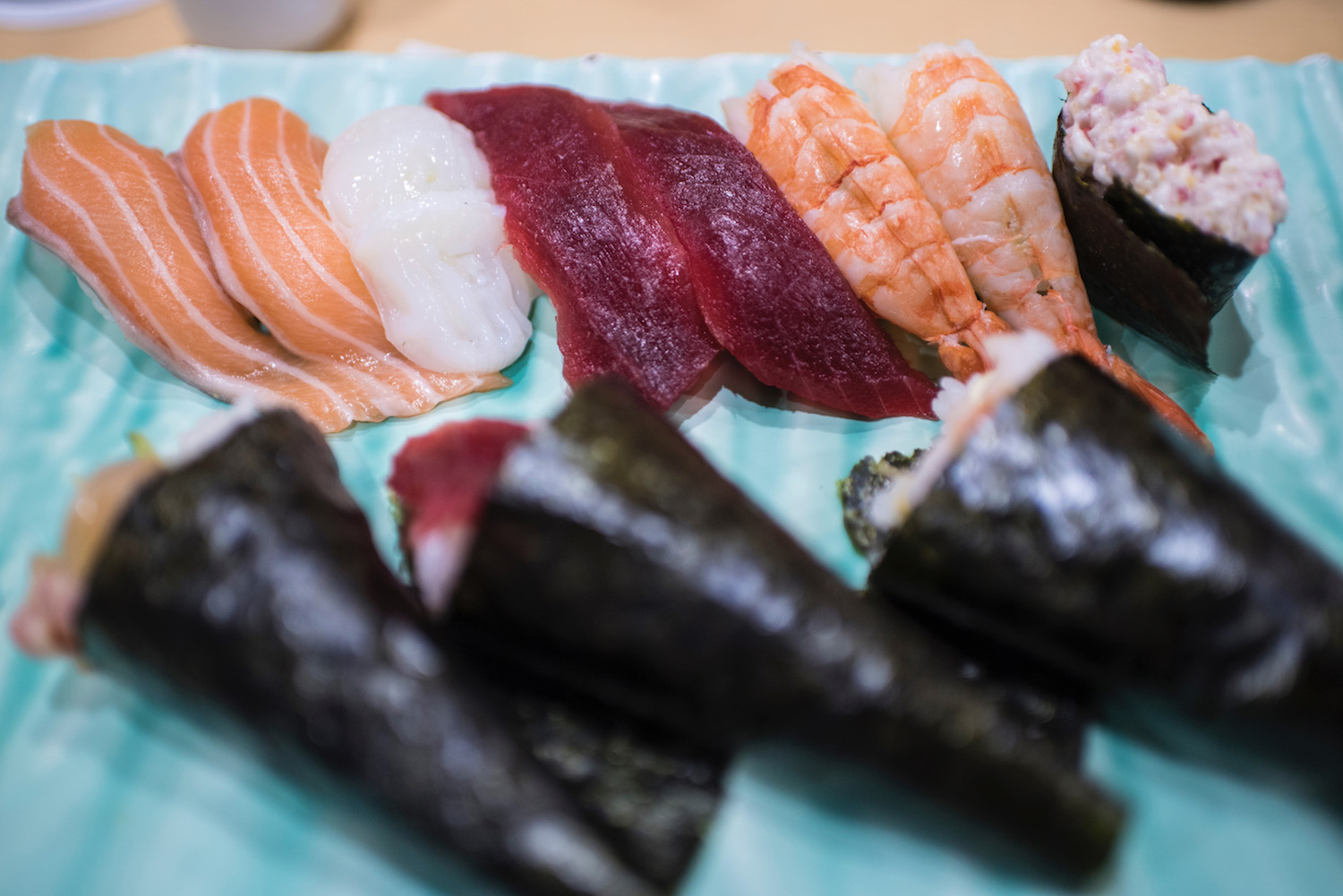
Although Tokyo is a place where you can discover all the foods of Japan, sushi (which has its culinary roots in Edo , the name by which Tokyo was formerly known) is my favorite indulgence in the capital. As far as where to enjoy this, you’ve got many choices. A cheaper option would be to visit any number of kaitenzushi , or conveyor-belt sushi restaurants. Another choice is to wander around Tsukiji , whose seafood market is closed, but where “sushi for breakfast” (or at any time, really) is a great option.
Gain a higher perspective—or many
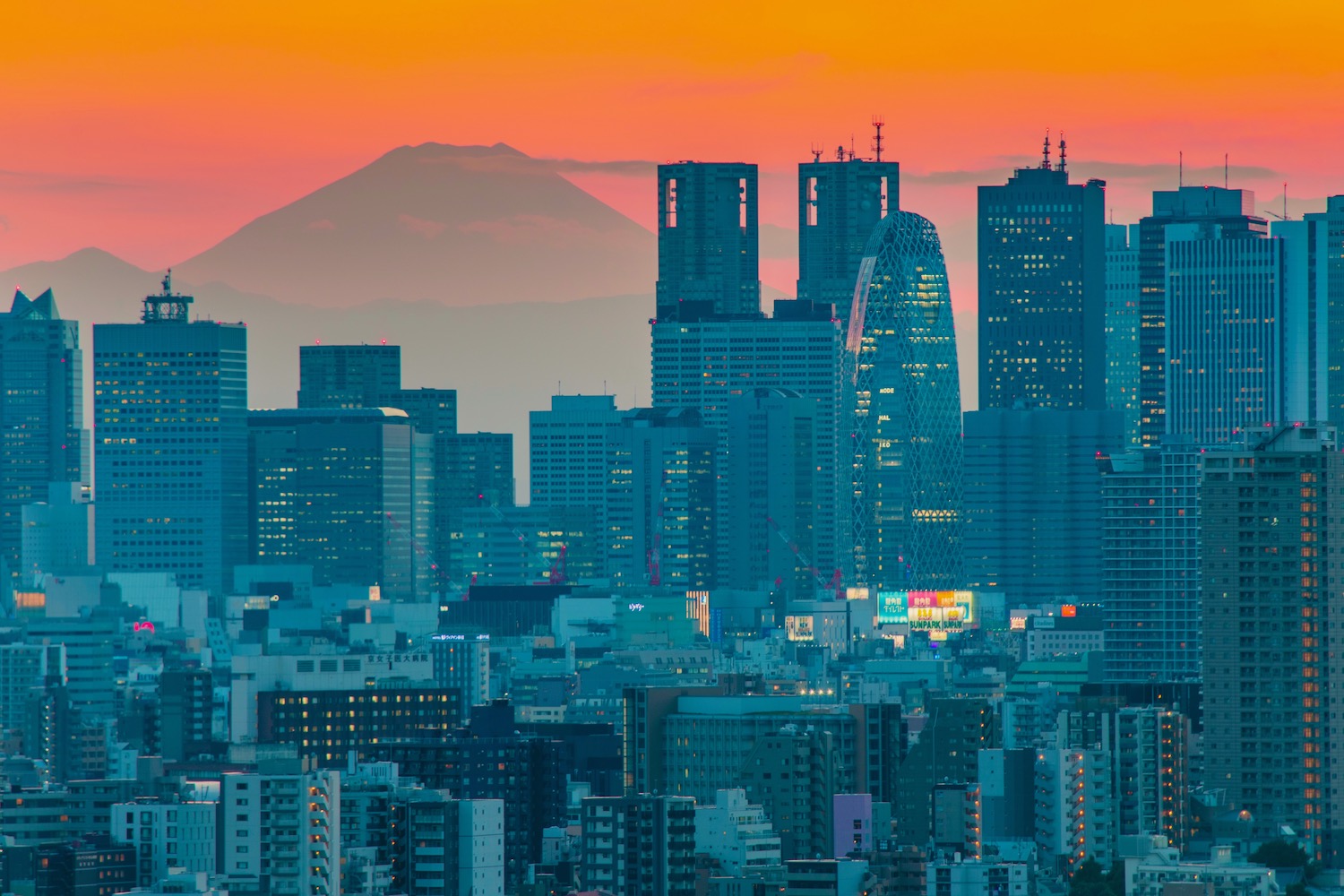
On some blog and in certain travel guides, lists of things to do in Tokyo fail to provide perspective on how huge the city is, so I always make sure and gain some altitude whenever I can get there. My personal favorite Tokyo viewpoint is i-Link Tower in Ichikawa city, Chiba prefecture. Within the city-proper, you can ascend to the observation decks of Tokyo Tower or Tokyo SkyTree , or visit free viewing areas in buildings such as the Tokyo Metropolitan Government Building in Shinjuku, or the Bunkyo Civic Center .
Discover the ancient, not just the modern
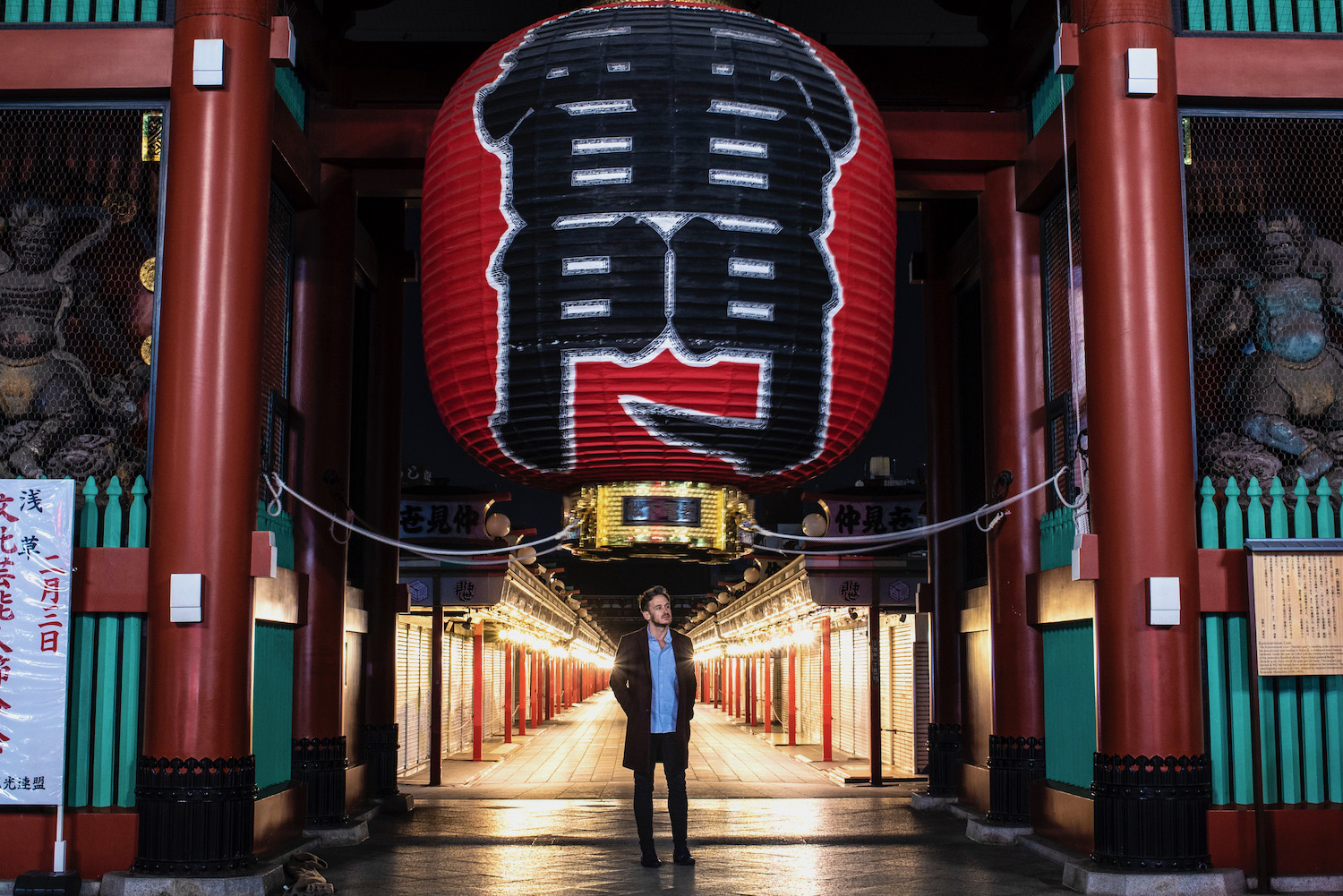
Although many things to do in Tokyo are modern and even futuristic, there are plenty of opportunities to go back in time. Senso-ji temple in Asakusa , for example, originally dates back to the 8th-century, and although the present structure is much newer than that, it nonetheless takes you back in time. Right across the street from modern Harajuku , meanwhile, you’ll find the lush grounds of the Meiji Shrine , whose serenity and expanse will take you to another era entirely.
Venture off Tokyo’s beaten path
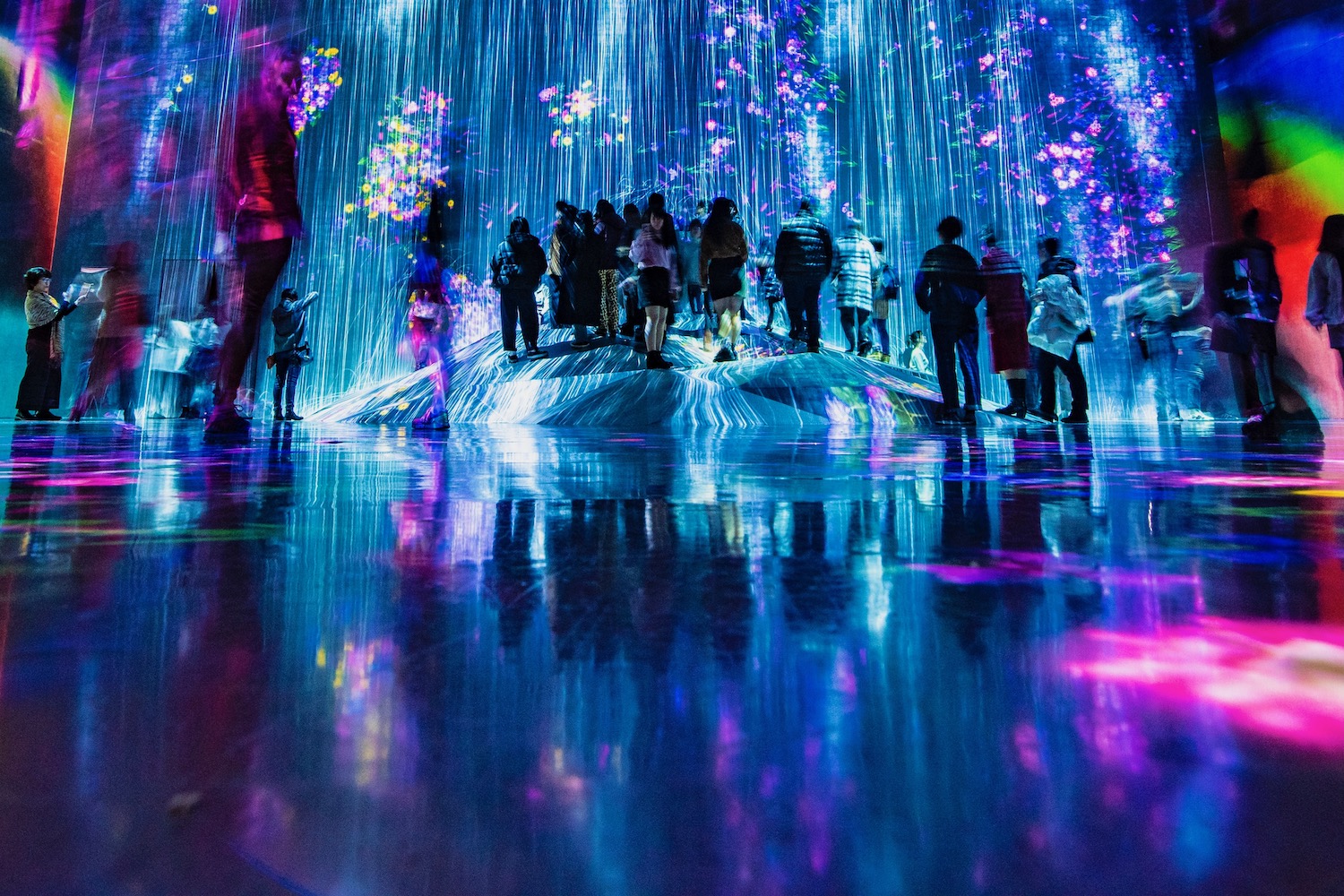
Tokyo’s tourist trail is pretty scattered, but it also’s fairly well trodden. One way to go off it is to ride the driverless Yurikamome train onto Odaiba , a manmade island in Tokyo Bay , where you can visit the teamLab Borderless Digital Art Museum , among other attractions. Alternatively, ride the JR Yamanote Line northward to Nippori , then head west into Yanaka , Tokyo’s oldest district and the best-preserved example of the ancient Shitamachi architectural style. Far-western Setagaya , meanwhile, is home to Gotokuji the “beckoning cat” temple.
Take day trips to Nikko, Kamakura and/or Mt. Fuji

Tokyo’s such a massive city that you could spend four whole days here (or even longer) and still not see everything. However, getting out of town can provide you essential context. Many travelers hear north to Nikko , a shrine town nestled deep in the mountains of Tochigi prefecture. Others head south to Kamakura , a seaside city that was once Japan’s capital; some stop in Yokohama on the way back. Another popular day trip from Tokyo is to the Mt. Fuji area, whether amid the hot springs of Hakone or closer to the mountain in the Fuji Five Lakes region.
Tokyo’s Top Neighborhoods
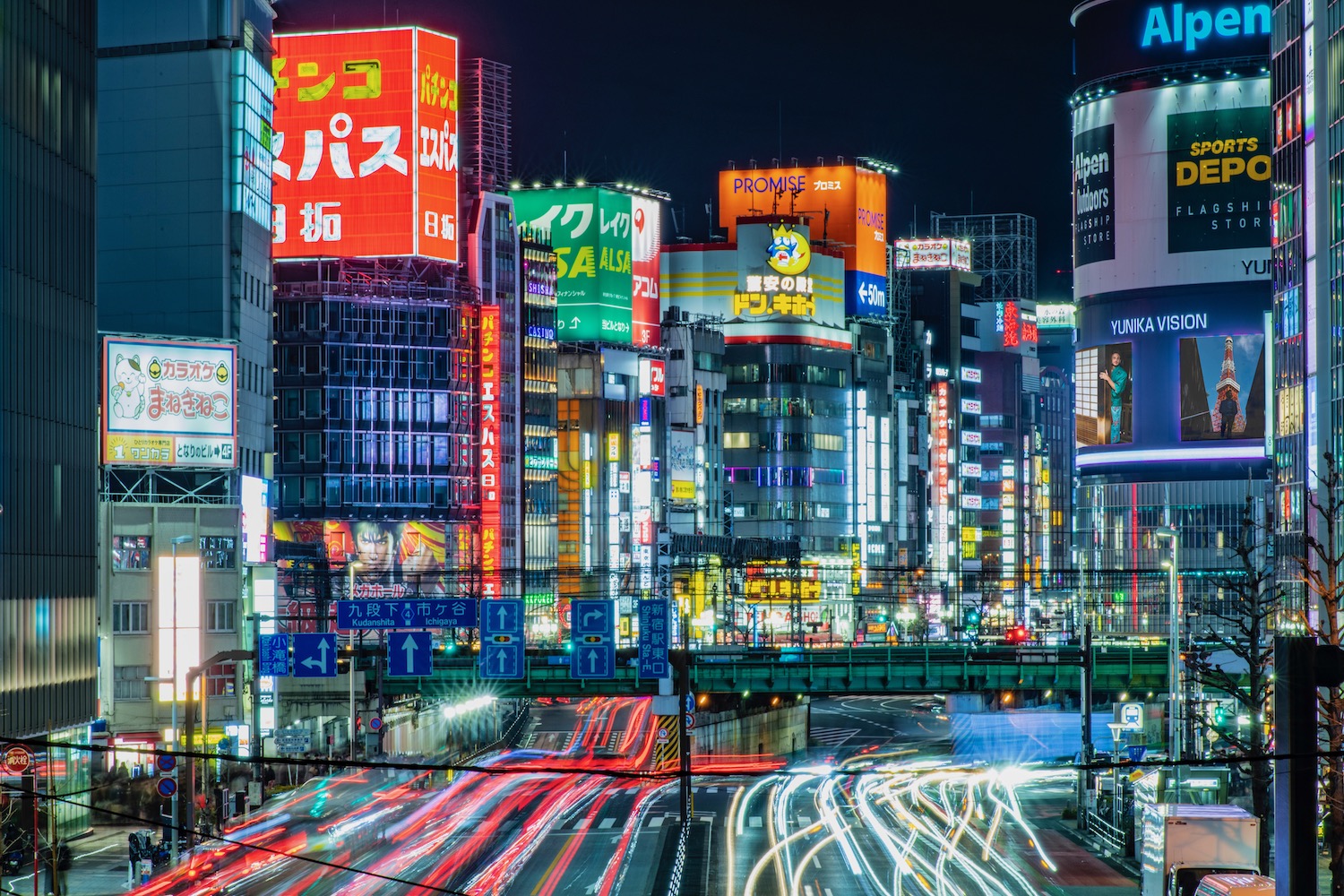
From the famously busy Shinjuku Station to the iconic neon lights of the Kabukicho sub-district, Shinjuku is without a doubt Tokyo’s best-known neighborhood. However, in spite of topping many travelers’ lists, Shinjuku is not one-size-fits-all. Some prefer pints at Izakaya along the Golden Gai , while others choose more curated meals at one of the many Michelin-starred restaurants nearby. Still others explore Shinjuku by day instead of (just) by night, such as with a stroll through spacious Shinjuku Gyoen National Garden .
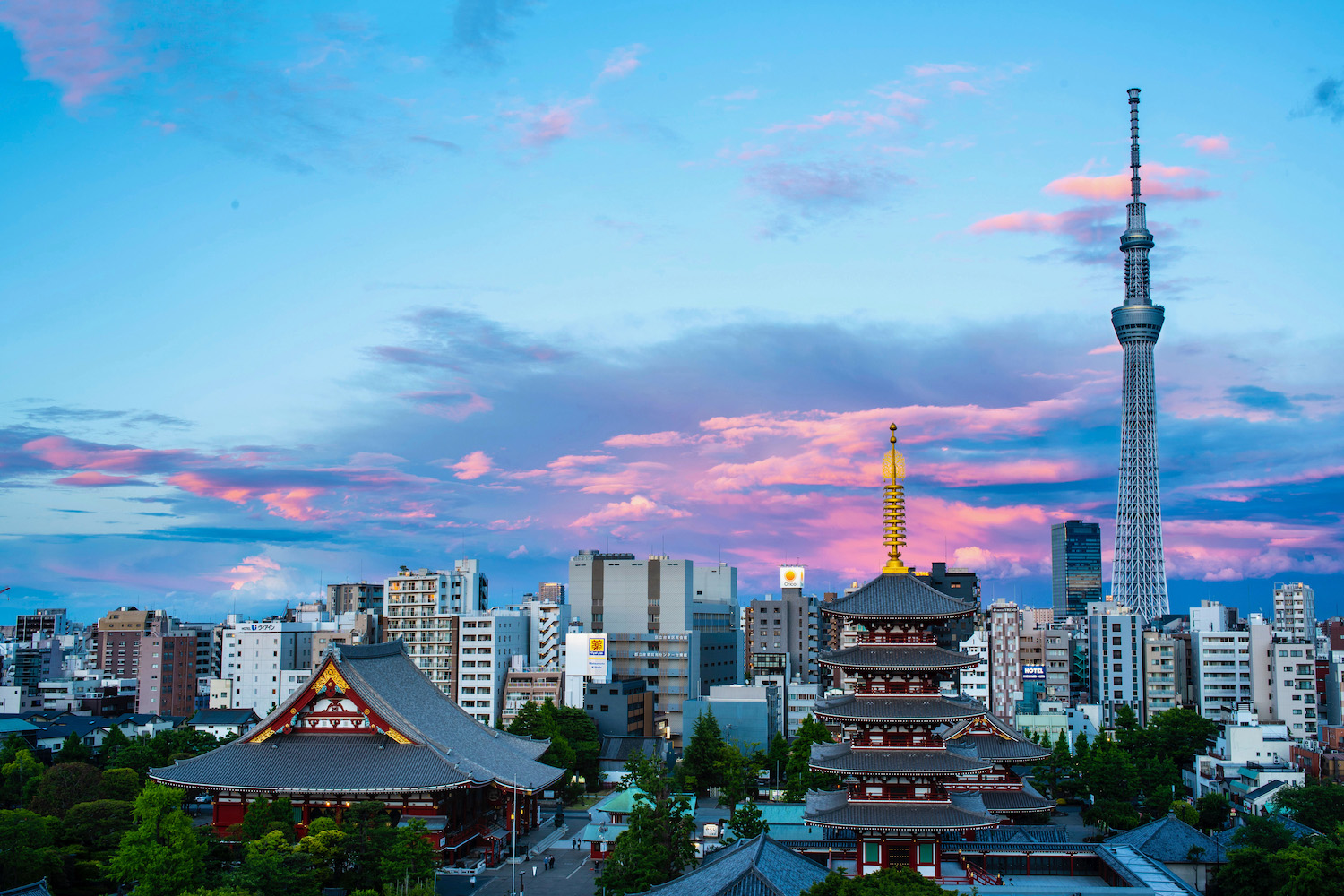
As I mentioned a few paragraphs back, Senso-ji temple is the most famous of Asakusa ‘s main things to do in Tokyo, but it’s really over the beginning. One option is to head west to the quirky Kappabashi Cooking Street , even if you aren’t shopping for kitchen supplies. Alternatively, head east over the Sumida River , whether to the aforementioned Tokyo SkyTree or into Ryogoku , Tokyo’s de-facto sumo district. In spring, the banks of the Sumida River themselves are one of the best places in the city to see sakura .
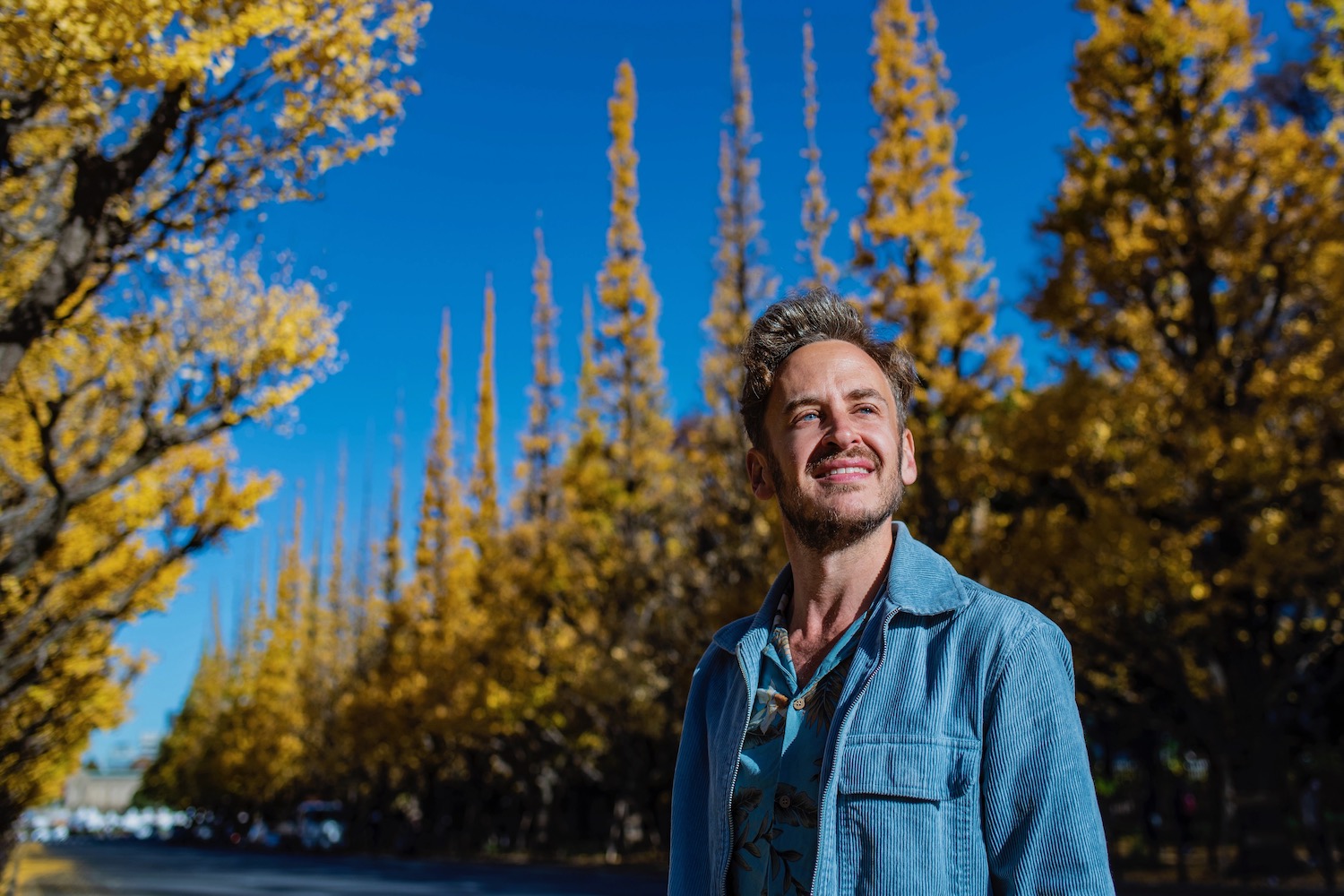
Like Shinjuku, Shibuya is a district whose very name evokes excitement in Japan travelers new and old alike. This is not just because of the famous Shibuya Scramble, however. Youthful Harajuku technically sits within Shibuya, for example, whether you simply walk back and forth along Takeshita-dori, or follow it into Omotesando, a luxurious shopping street I consider the “Beverly Hills of Tokyo.” Gain some altitude at the Shibuya Sky observatory, or get some fresh air at Yoyogi Park (in spring, beneath the sakura ) or along ginkgo-lined Meiji Jingu Gaien during the autumn.
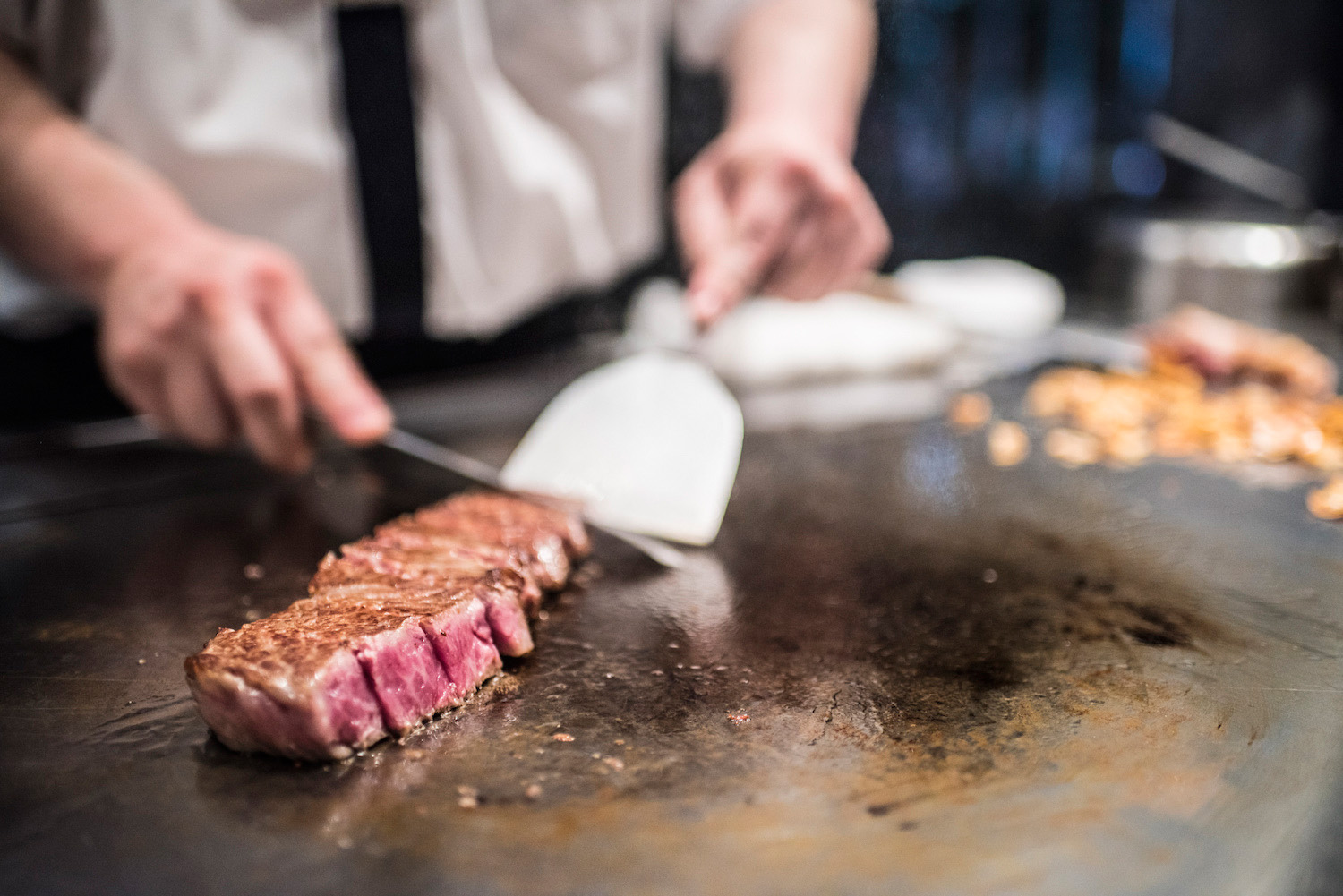
For some travelers, Japanese and foreign alike, Ginza doesn’t have much appeal, apart from its high-end department stores and ritzy Teppanyaki restaurants. However, I urge you to rethink, and not just because of how glitzy and glamorous the neon signs of Chuo-Dori look lit up at night. Among other highlights, you can stroll through Ginza down into the Tsukiji culinary neighborhood, and stop at the Kabuki-za theater on the way back, ideally as Tokyo’s upper crust are streaming in to catch a performance.
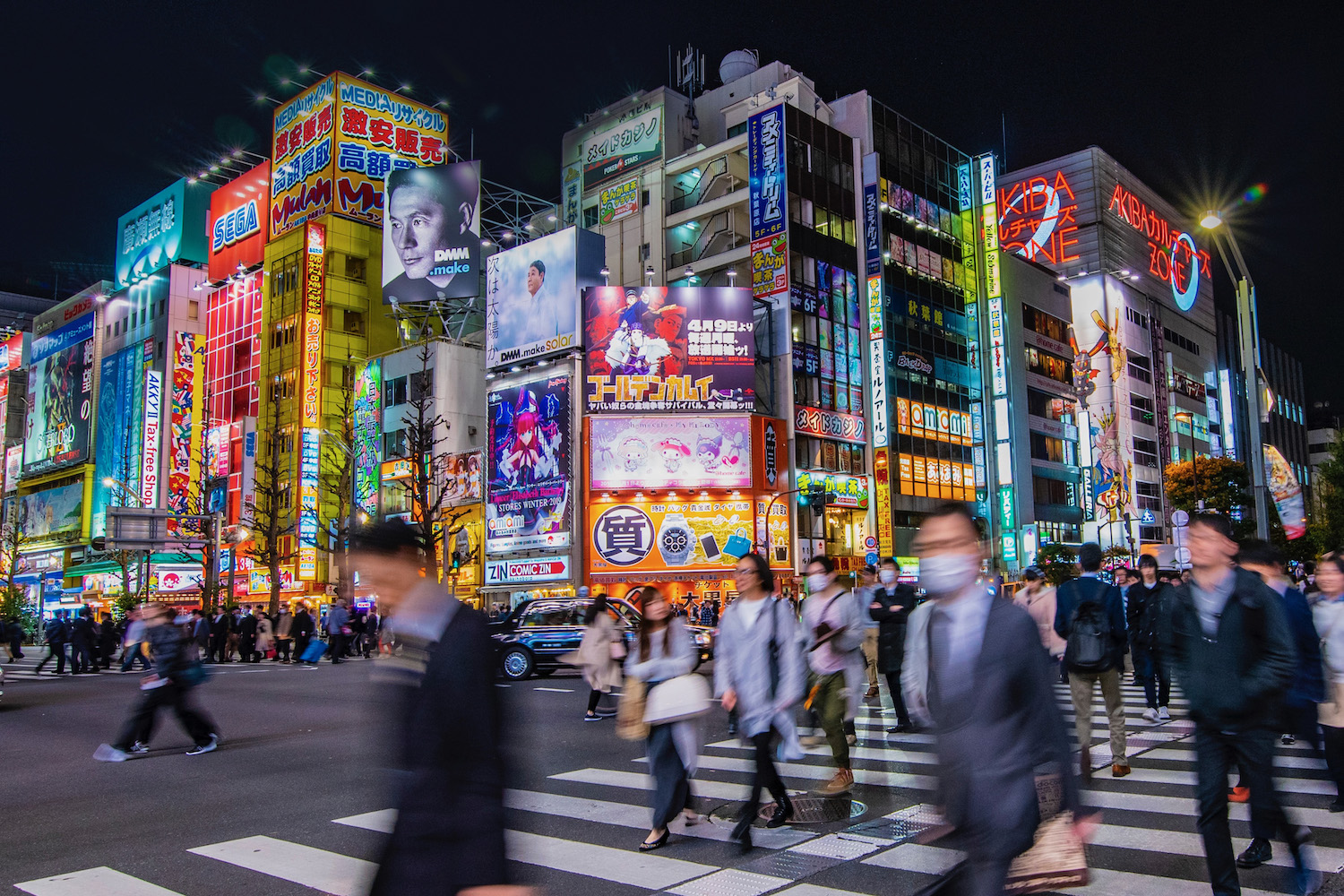
Walking amid the arcades and gadget shops of Akihabara “electric town” is near the top of many lists of things to do in Tokyo, even for travelers who aren’t big nerds. At the JR Chuo-Sobu Line speeds far overhead, neon signs flashing everywhere around you, you might just feel like you’re walking through a video game. This sensation is especially heightened if you sit down for dinner at a maid cafe, or get behind the wheel of a go-kart and drive it through the lit-up Tokyo cityscape.
How Many Days Are Enough in Tokyo?
The more times I return to Tokyo, and the different ways I incorporate each into whatever trip to Japan I’m on, I go back and forth on how many days in Tokyo you should spend. I’d generally say 3 days in Tokyo is the minimum amount of time I’d recommend, particularly if it’s your first time. This allows you a day explore more mainstream parts of the city like Asakusa and Shinkjuku, another to go off the beaten path in Odaiba or Yanaka and a third to take any number of day trips from Tokyo.
On the other hand, things to do in Tokyo are numerous enough that you can easily devote 4 or 5 days in Tokyo and still not get bored! Likewise, the longer you spend in Tokyo, the more forms your trip can take. While some travelers will do the tourist thing for an entire week, and sightsee for seven days straight, others will get an Airbnb in a super-residential neighborhood like Setagaya or Nippori. “Living in Tokyo,” rather than just traveling there, unlocks an entirely new perspective on Japan’s capital.
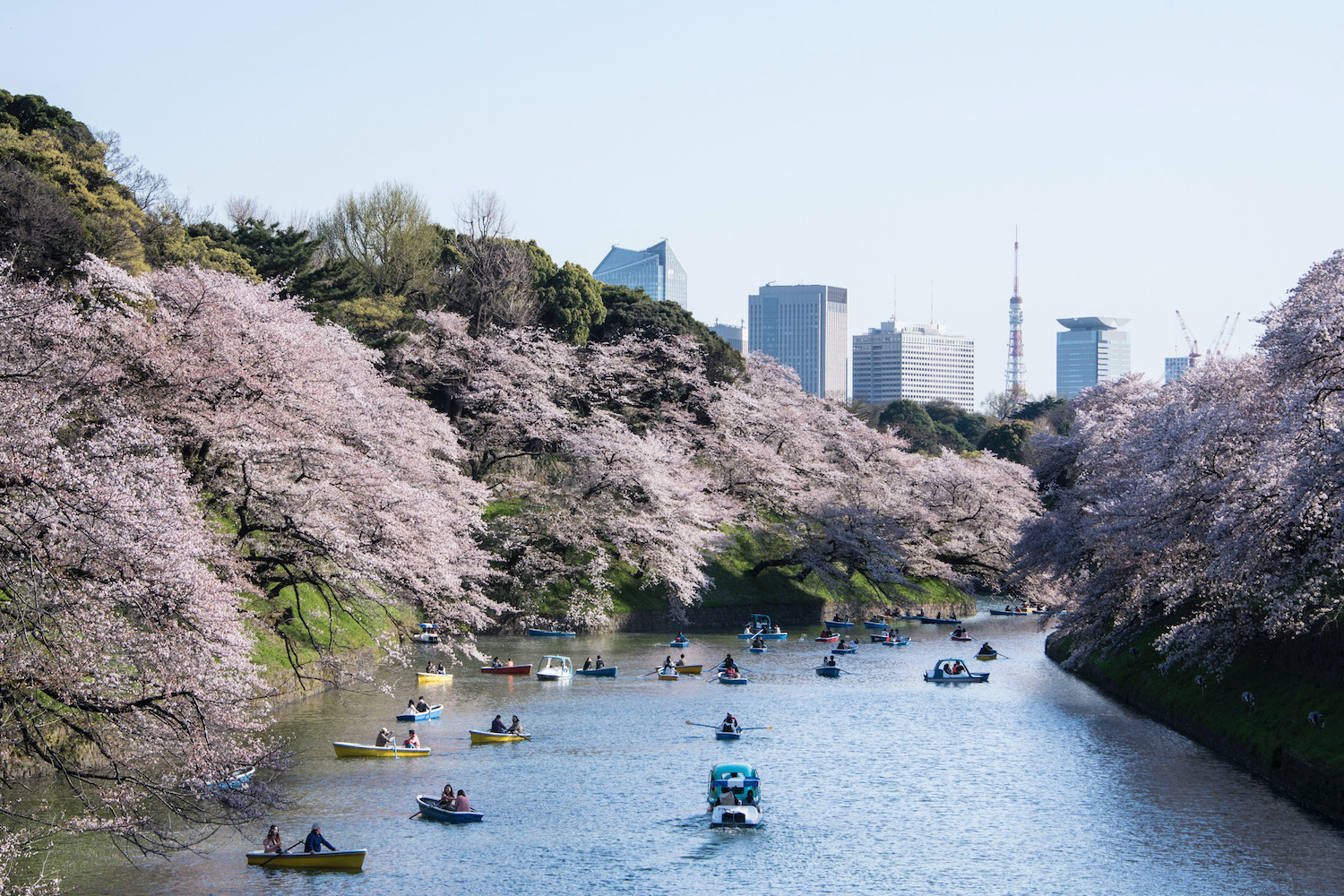
When is the Best Time to Visit Tokyo?
As you’ll know if you’ve read my post about Tokyo cherry blossoms , I’m partial to visiting Japan’s capital during late March or early April. However, while they’re nothing like seeing Chidorigafuchi moat awash in sakura , other times of the year are also beautiful in Tokyo. In autumn, whose leaves peak around the beginning of December, golden ginkgoes like the Meiji Jingu Gaien in Aoyama, while ornate Rikugien garden becomes awash in reds and oranges, especially during its nighttime illumination.
While winter in Tokyo is not usually snowy, it does tend to boast clear, crisp days and cold nights that are perfect for hot Japanese-style curry, or all-night karaoke. Tokyo’s summer season is hot, humid and sometimes very rainy, but on the plus side, it’s not necessarily very busy. Another great time to visit Tokyo is during the “shoulder” month of May. While the crowds of cherry blossom season are gone, warmth and sunshine dominate; the plum rains of late spring and early summer will not yet have arrived.
Other FAQ About Visiting Tokyo
What should i avoid in tokyo.
In my opinion, the most overrated Tokyo activity is the tuna auction, especially now that it has been moved from the historic, soulful Tsukiji Inner Market to the purpose-built Toyosu Market, which is cold and sterile. Beyond this, I’d say you should avoid structuring your Tokyo itinerary too deliberately around bucket list items—leave some space to get lost and explore.
What kind of activities can you do in Tokyo?
In a single day in Tokyo, you can walk through the grounds of thousand-year old Senso-ji temple in Asakusa, snack on cotton candy and crepes on wild, wacky Takeshita Street in Harajuku, looking down on the famous “Scramble” crossing from the panoramic Shibuya Sky viewpoint and savor Michelin-star sushi amid the neon lights of Shinjuku or Ginza.
Is 7 days enough in Tokyo?
For most travelers, I would almost say that 7 days in Tokyo is too much, at least for a purely touristic trip. If you attempt to explore Tokyo on full blast for seven days in a row, you’ll quickly find yourself overwhelmed. 3-5 days in Tokyo is much more manageable, giving you a day each to explore primary and secondary attractions and neighborhoods, and enough time to take day trips to Nikko, Kamakura and/or Mt. Fuji .
The Bottom Line
I hope you’ve not only learned a lot while combing through my Tokyo travel guide, but that you have started to think about the city in an entirely different way. A trip to Tokyo shouldn’t intimidate you—it should invigorate you. The more knowledge you have before you take off, the more confidence you can proceed with after you land. This will be true whether you stick to the well-trodden, neon-bath alleys of Shinjuku and Shibuya , or venture off Tokyo’s beaten path into Odaiba, Yanaka, Setagaya and beyond. Want to make sure your next Japan trip is one for the records books? Hire me to plan a fully-customized Japan itinerary!
Plan Your Japan Trip

Subscribe to email updates!
Words, images and design ©2018-2024 Robert Schrader, All rights reserved. Read Privacy Policy or view sitemap .

Tokyo Itinerary: The Best 7-Day Guide for a Fantastic Trip
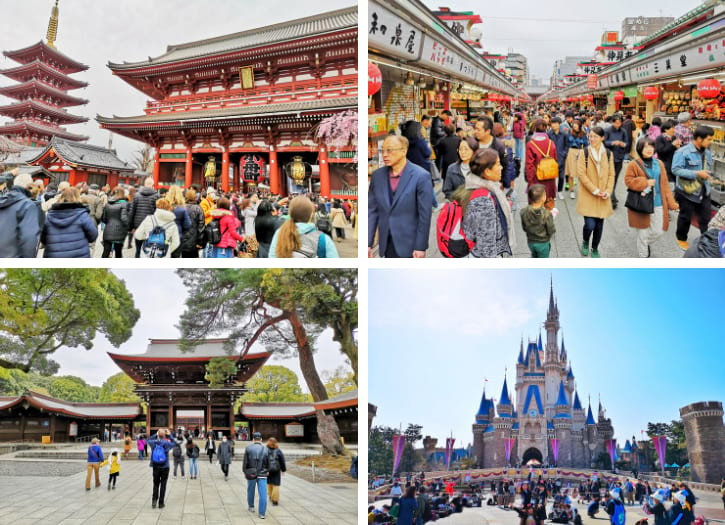
This Tokyo itinerary for 7 days will guide you to a smooth and unforgettable trip in the city .
I’ll show you the best route to visit Tokyo’s most popular attractions , so you can spend more time enjoying the sights and less time traveling.
Trust me, the itinerary I’m showing you for 7 days in Tokyo will save you lots of planning time and make sure your trip to this amazing city is fantastic . 😊
Plus, I’ll point out where to enjoy the city’s delicious and budget-friendly sushi, ramen, yakitori, and tempura. Ready for this adventure? Let’s go!
See the Best of Tokyo with Our Very Clear Travel Itinerary Below
Day 1: warner bros. studio tour tokyo and shinjuku, day 2: meiji shrine, harajuku and shibuya, day 3: tokyo disneyland, day 4: ueno, ameya yokocho, asakusa, and tokyo skytree, day 5: take a day trip to mt fuji from tokyo, day 6: disneysea, day 7: tokyo metropolitan government building and odaiba, tokyo itinerary 7 days map, the most efficient way to travel around tokyo, where to stay in tokyo, japan sim card and pocket wifi, related posts.
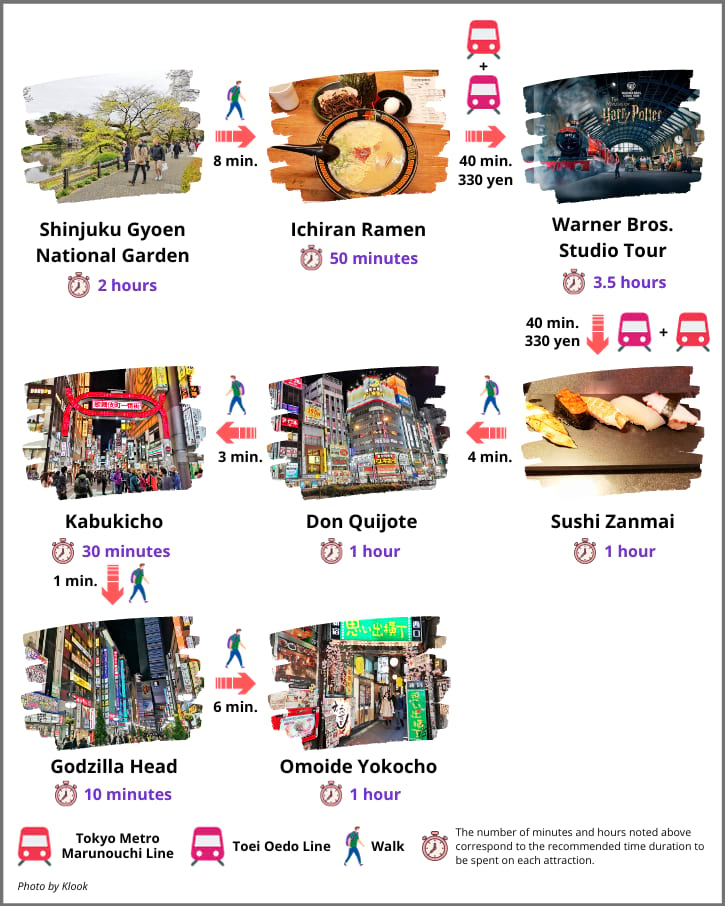
Tokyo itinerary day 1 timetable:
- 10:00 AM: Shinjuku Gyoen National Garden
- 12:00 PM: Ichiran Ramen (Lunch)
- 1:30 PM: Warner Bros. Studio Tour Tokyo
- 5:40 PM: Sushi Zanmai Shinjuku Higashiguchi (Dinner)
- 6:40 PM: Don Quijote
- 7:40 PM: Kabukicho
- 8:10 PM: Godzilla Head
- 8:20 PM: Omoide Yokocho
If you’re interested in learning more about Shinjuku, feel free to read my article on the best things to do in Shinjuku . You can also access all my Tokyo travel guides here .
For those visiting Osaka, don’t miss out on my comprehensive Osaka travel guides , which include a detailed 3-day itinerary to help you make the most of your trip.
1. Shinjuku Gyoen National Garden – 2 hours (10:00 AM to 12:00 PM)
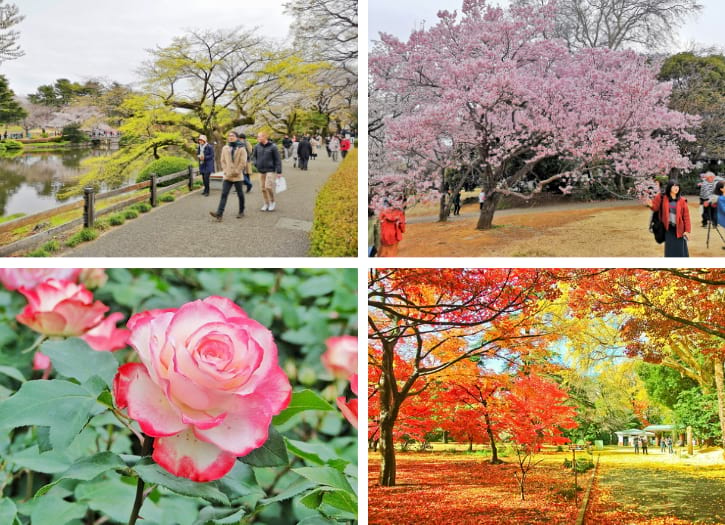
Shinjuku Gyoen National Garden in Tokyo is a must-visit spot . It’s a big, beautiful park perfect for relaxing .
When you go, don’t miss the Japanese and France Formal gardens – each one is different and special.
You’ll be captivated by the stunning scenery that changes with the seasons. In summer, the garden bursts with colorful flowers.
Spring is famous for its breathtaking cherry blossoms , and in autumn , the golden hues of maple trees are a sight to behold .
Even in winter , from December to February , the snow-covered trees create a magical landscape .
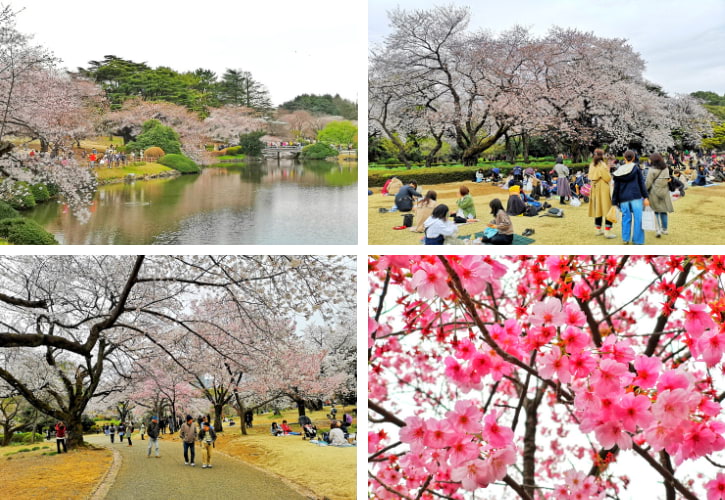
Whether you’re up for a peaceful walk, a picnic, or just some time to sit back and embrace nature, this park is ideal.
And don’t forget your camera – the garden’s beauty is absolutely photo-worthy .
To help you easily navigate the garden, simply download the Shinjuku Gyoen National Garden map here.

2. Ichiran Ramen – 50 minutes (12:00 PM – 12:50 PM)
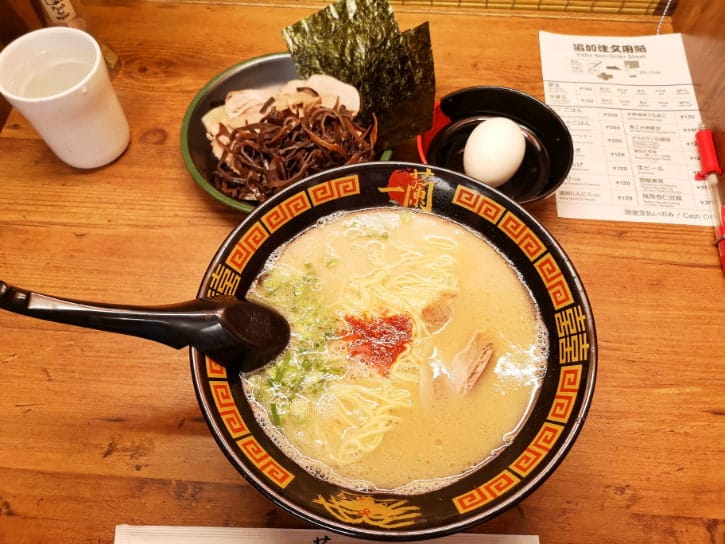
When visiting Tokyo, be sure to add Ichiran Ramen to your itinerary ; you won’t regret it.
This ramen shop is really good at making tonkotsu ramen. It’s a special pork soup you’d want to taste , and it only costs 980 yen .
If you feel like treating yourself, pay a little extra for additional toppings like extra pork slices, egg, dried seaweed, and more. It’s a small price to pay for such a satisfying meal!

3. Warner Bros. Studio Tour Tokyo – 3.5 hours (1:30 PM – 5:00 PM)
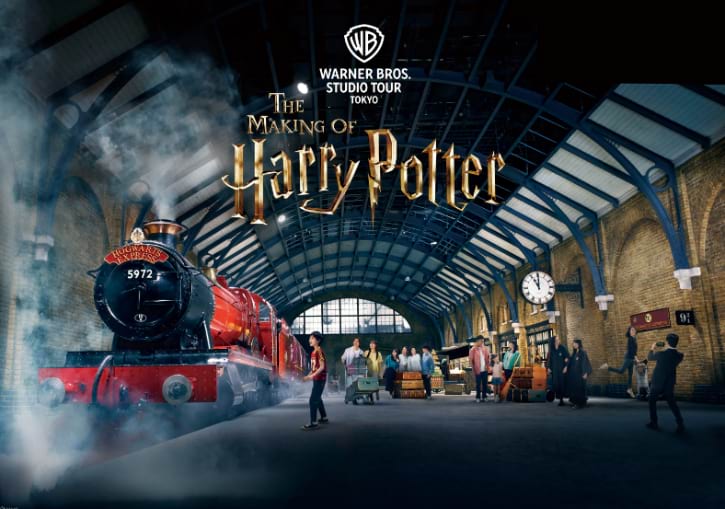
I highly recommend including Warner Bros. Studio Tour Tokyo when doing your own itinerary because it’s an incredible experience , especially for movie enthusiasts.
You get to see how movies are made, from special effects to set designs . There are also props and costumes from famous movies.
For Harry Potter fans, the behind-the-scenes insights are a real treat. Plus, the photo opportunities are fantastic – you’ll have memories to cherish .
Trust me, it’s a unique experience that adds something special to your Tokyo trip!
Important Tip: Purchase your Warner Bros. Studio tickets online here before arriving, as there’s no on-site counter for ticket purchases, and tickets sell out very fast.

4. Sushi Zanmai Shinjuku Higashiguchi – 1 hour (5:40 PM – 6:40 PM)
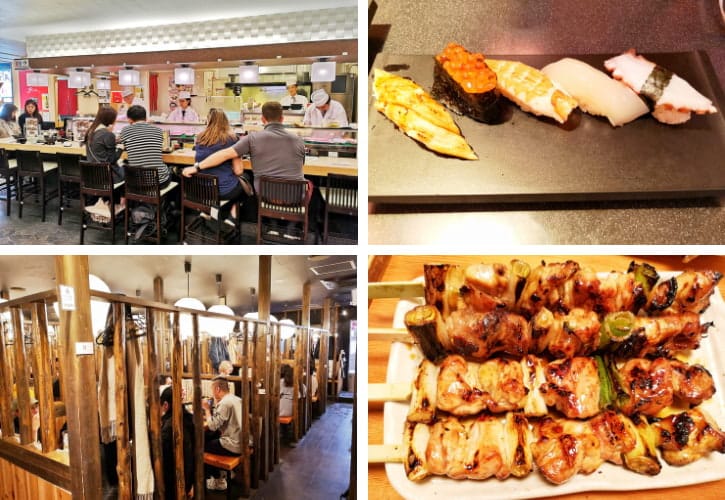
On your first night in Tokyo , you have 3 delightful dinner options to choose from . Pick the one that best suits your taste from the list below.
- Sushi Zanmai Shinjuku Higashiguchi: This popular sushi spot offers a wide range of sushi and traditional desserts. Expect to spend about 2,000 yen per person.
- Torikizoku: A great place for affordable yakitori (chicken skewers) and other dishes like meatballs, with each order costing 360 yen for 2 skewers.
- Hakata Tenjin Ramen: For more ramen, head here. Prices range from 600 to 1,100 yen. Their top dish, with roasted pork fillet, seaweed, and spring onion ramen, is 1,100 yen.

5. Don Quijote – 1 hour (6:40 PM to 7:40 PM)
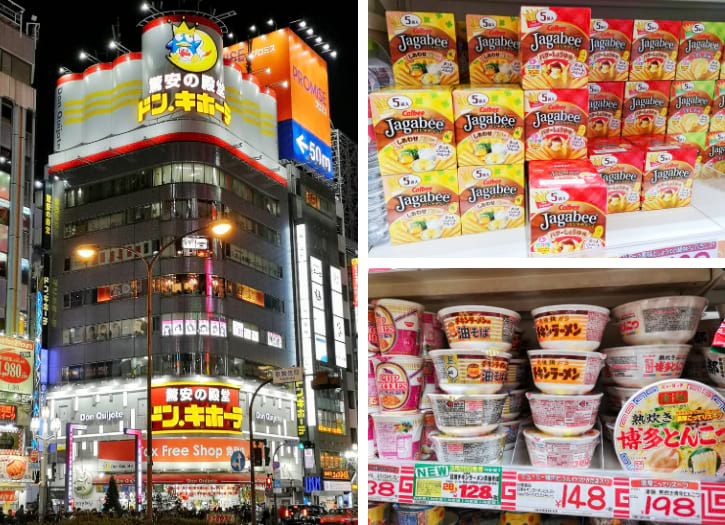
After dinner, visit Don Quijote , a 24-hour discount store . It’s the top spot in Tokyo for snacks, drinks, instant noodles, and souvenirs .
Plus, it’s tax-free , so you can save money on Japanese treats . Make sure to add it to your list.

6. Kabukicho – 30 minutes (7:40 PM to 8:10 PM)
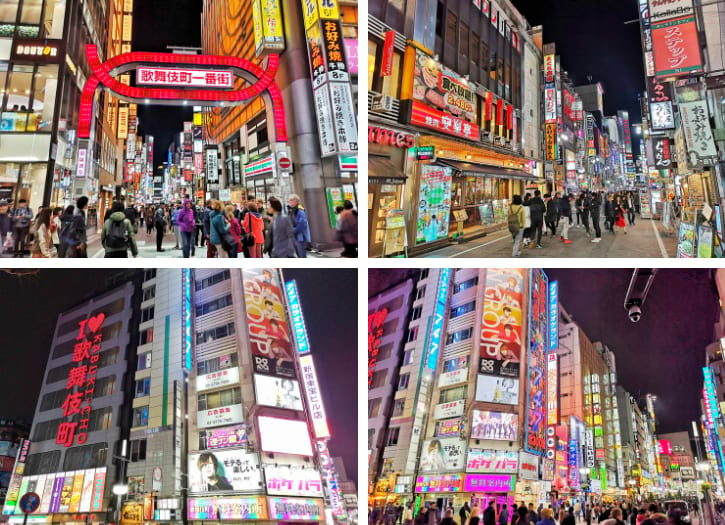
Once you’re done with shopping, Kabukicho is a great spot to have on your evening itinerary .
This renowned red-light district offers a night full of vibrant entertainment . However, it’s best to simply stroll around and soak in the sparkling ambiance .
Be cautious of accepting offers from locals to visit bars and nightclubs, as they can come with high costs and potential hidden fees.

7. Godzilla Head – 10 minutes (8:10 PM to 8:20 PM)
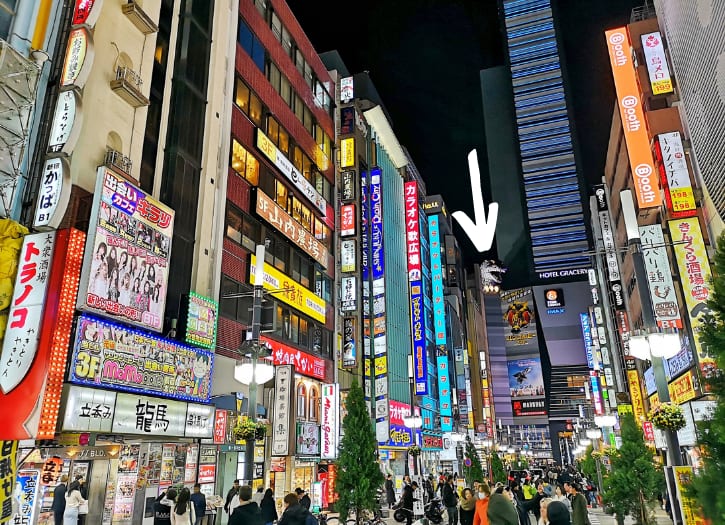
While exploring Tokyo, make sure not to miss the iconic Godzilla Head situated in Kabukicho .
Here, you can snap a selfie of the iconic character and listen to his intense roar. At times, this giant also emits smoke and laser lights.

8. Omoide Yokocho – 1 hour (8:20 PM to 9:20 PM)
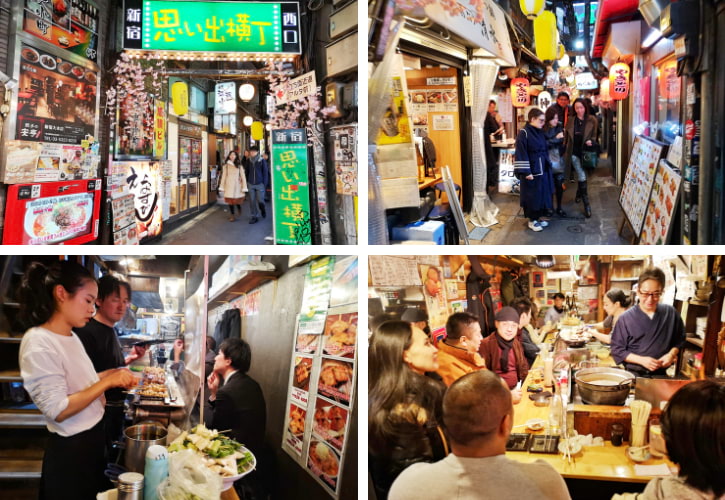
Walking down Omoide Yokocho is a must for a fun night. This alley has a cool, old-school feel and is famous for its yummy yakitori chicken .
And when you’re there, you should definitely try the grilled chicken at one of the small eateries. It’s delicious!
Plus, there are lots of tiny bars around with different kinds of drinks .
Don’t worry if you don’t speak Japanese – most stalls have menus in English . It’s a great way to experience local Tokyo life!

The Tokyo itinerary planned for day 2 covers the areas listed below:
- 9:00 AM: Meiji Shrine
- 11:00 AM: Harajuku’s Takeshita Street
- 1:00 PM: Shibuya
1. Meiji Shrine – 2 hours (9:00 AM to 11:00 AM)
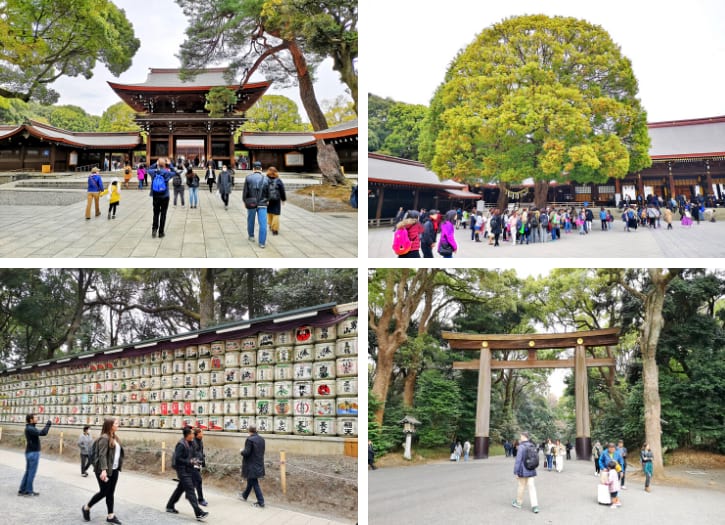
Kick off your Tokyo morning adventure at Meiji Shrine which is located right in the middle of a pretty forest .
As you visit, you’ll pass through grand torii gates and tree-lined paths, all surrounded by the beauty of nature .
Once at the shrine, explore its traditional architecture and witness Shinto rituals. If you’re lucky, you might even see a traditional wedding there.
This serene spot in the bustling city is perfect for relaxation and learning about Japanese culture .

2. Harajuku’s Takeshita Street – 2 hours (11:00 AM to 1:00 PM)

A quick overview of the itinerary for visiting Takeshita Street, one of Tokyo’s most popular and busiest streets:
- 11:00 AM: Stroll Around the Street
- 11:15 AM: Paris Kid’s
- 11:45 AM: Daiso
- 12:15 PM: Totti Candy Factory
- 12:25 PM: Marion Crepes
- 12:35 PM: McDonald’s/ Yoshinoya (Lunch)

a) Stroll Around the Street – 15 minutes (11:00 AM to 11:15 AM)

Put Takeshita Street on the list for your Tokyo sightseeing trip. It’s a great place for shopping and trying new foods .
This lively street is packed with cool shops selling trendy clothes, unique accessories, and fun souvenirs .
Don’t forget to try the street food here – the crepes and cotton candy are amazing !
There are also lots of cafes where you can relax and watch the bustling street.
b) Paris Kid’s – 30 minutes (11:15 AM to 11:45 AM)
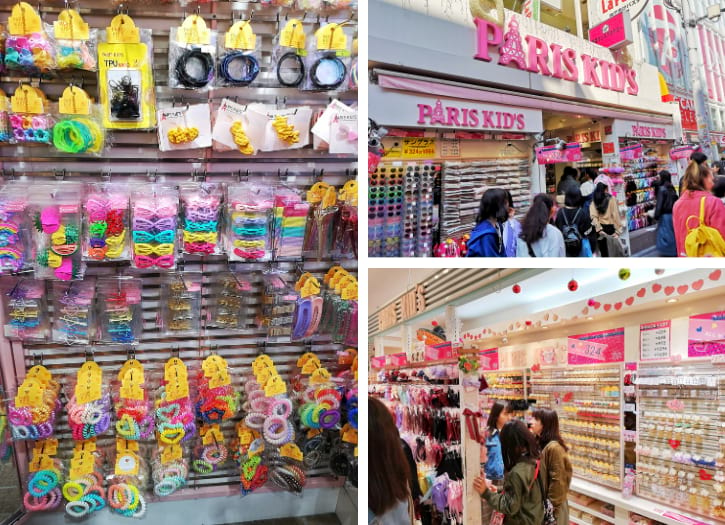
If you’re looking for stylish yet inexpensive accessories , head to Paris Kid’s . This store has all kinds of cute stuff for your kids, from hair clips to bow ties to flower crowns .
On top of that, they have sunglasses, key chains, jewelry, and character goods . So, shop all you want and bring home your wished list.
c) Daiso – 30 minutes (11:45 AM to 12:15 PM)
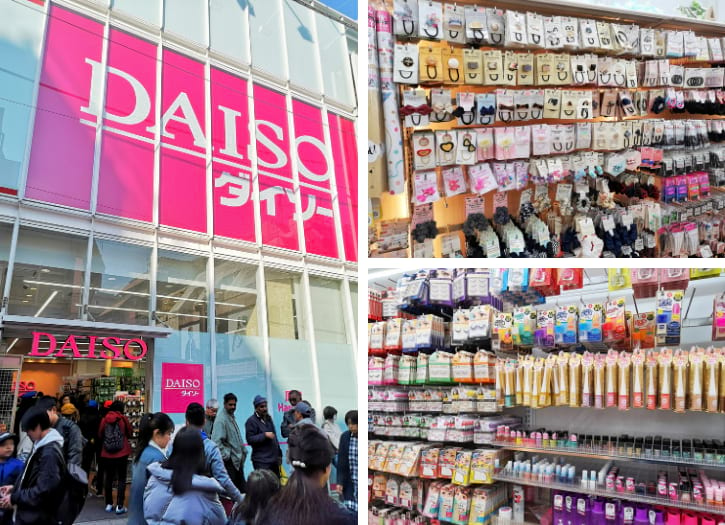
Don’t miss the chance to visit Daiso . This popular 100-yen store is a crowd favourite, known for its budget-friendly shopping .
It’s packed with a wide range of items, from quirky Japanese stationery and adorable kitchen gadgets to cute home decorations .
Whether you’re on the hunt for unique souvenirs or just eager to immerse yourself in the local shopping scene, Daiso is an essential stop on your Tokyo adventure.
d) Totti Candy Factory – 10 minutes (12:15 PM to 12:25 PM)
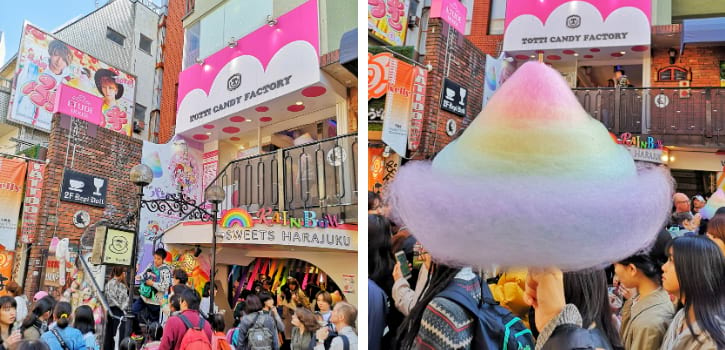
When exploring Takeshita Street in Tokyo, make sure the Totti Candy Factory is in your travel list . This candy wonderland is seriously a dream destination for the sweet tooth .
Inside this adorable store are different arrays of sugary treats. They have lollipops, cake pops, marshmallows, sour candies, and gummies.
And of course, don’t dare miss their best-seller, the giant rainbow cotton candy !
e) Marion Crepes – 10 minutes (12:25 PM to 12:35 PM)
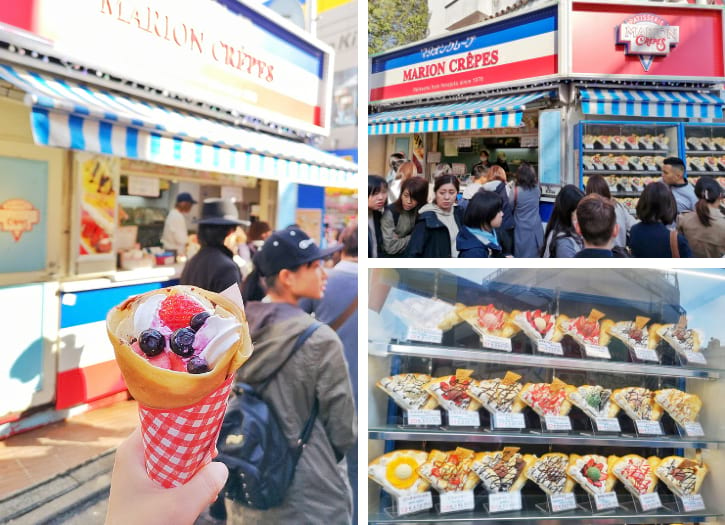
While in this street, you’ll also come across another top-rated food spot , the Marion Crepes .
Their crepes are tasty, and you can enjoy them while walking around.
There’s a variety to choose from, like strawberry ice cream with whipped cream and fruit , or even unique ones like tuna, cheese, and curry fillings .
f) McDonald’s or Yoshinoya – 25 minutes (12:35 PM to 1:00 PM)
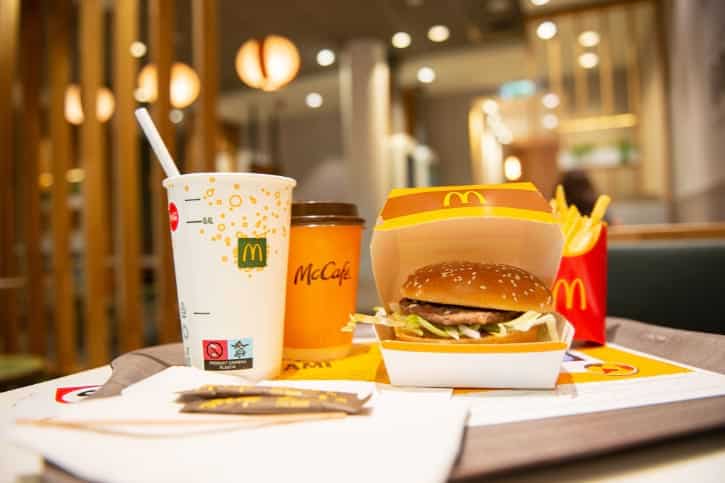
If you’re hungry, you can have your lunch at one of the restaurants listed below, all of which are located on Takeshita Street.
- McDonald’s: If you’re craving chickens or burgers, head to this famous fast-food chain. This is a great option for those who want to save money. The chicken burger costs 200 yen, while the beef burger is priced at 220 yen.
- Yoshinoya: For tasty Japanese foods at an affordable price, you can take your lunch here. They have bento meals, beef bowls, and other Japanese treats to choose from. All priced at around 700 yen each.

4. Shibuya – 8 hours (1:00 PM to 9:00 PM)

The attractions that will be visited in Shibuya during the afternoon are:
- 1:00 PM: Hachiko Statue
- 1:15 PM: Shibuya Crossing
- 1:30 PM: Disney Store
- 2:00 PM: Nintendo Tokyo
- 3:00 PM: Shibuya Center-gai
- 4:00 PM: Mega Don Quijote
- 5:00 PM: Shibuya 109
- 6:30 PM: Uobei Shibuya Dogenzaka (Dinner)
- 7:00 PM: Shibuya Sky at Shibuya Scramble Square

a) Hachiko Statue – 15 minutes (1:00 PM to 1:15 PM)
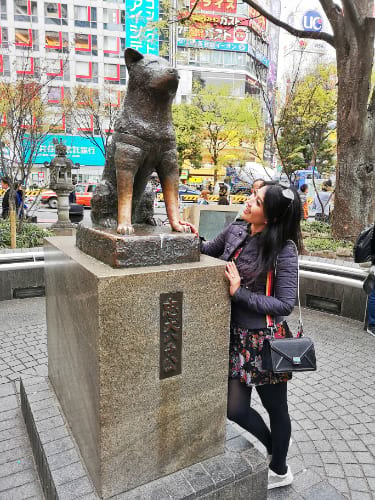
Start your Shibuya exploration at the Hachiko Statue. It’s right outside Shibuya Station and is a famous meeting spot .
Hachiko was a loyal dog, and his statue is a symbol of loyalty and friendship. It’s a great place to take photos.
b) Shibuya Crossing – 15 minutes (1:15 PM to 1:30 PM)
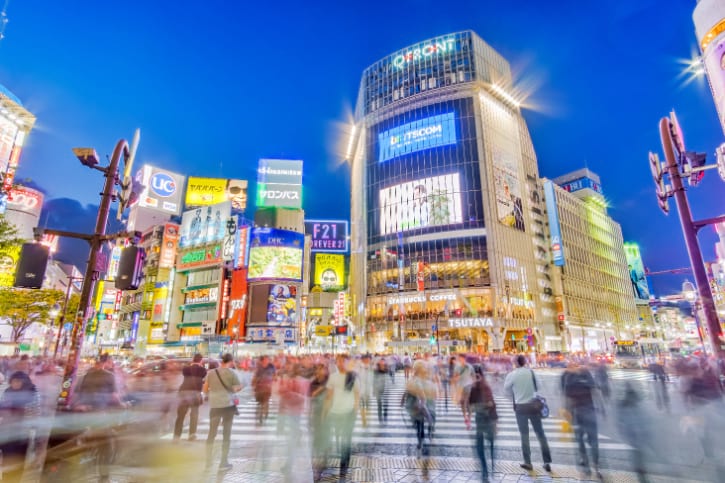
Shibuya Crossing is an amazing sight you shouldn’t miss. It’s known as one of the busiest pedestrian crossings in the world .
When you’re there, take a moment to just watch the wave of people crossing from all directions – it’s really something special .
Make sure to cross it yourself too; it’s an experience! There are lots of shops and restaurants around, so after crossing, you can explore or grab a bite to eat.
c) Disney Store – 30 minutes (1:30 PM to 2:00 PM)
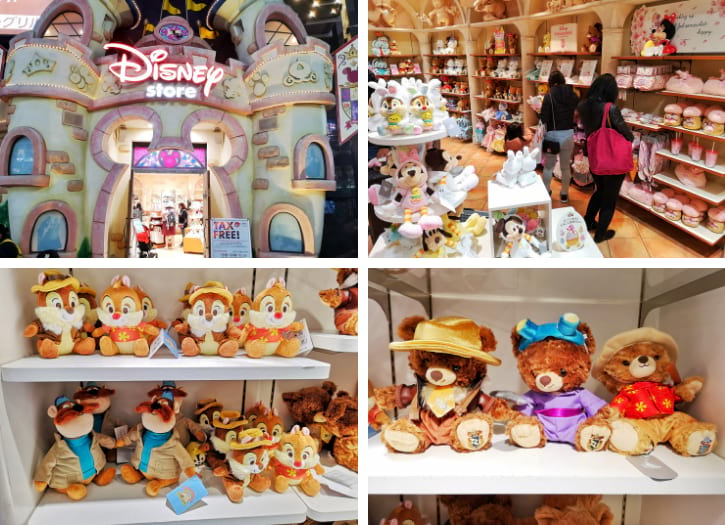
Other than Tokyo Disneyland and DisneySea, Disney Store is another great site to buy Disney items .
Check out the extensive assortment of cute plush toys of your favourite Disney characters.
This famous Disney retail store also offers different collectibles and character clothes .
Besides the great goodies, the shop’s design is notable. Take some snaps of the castle-like features while shopping around.
d) Nintendo Tokyo – 1 hour (2:00 PM to 3:00 PM)

Nintendo TOKYO is on the 6th floor of Shibuya PARCO and it’s a haven for gamers.
Here, you’ll find exclusive items like one-of-a-kind Mario plushies and special Link figures that are hard to come by elsewhere.
Don’t forget to get a photo with the big Mario statues , too. It’s a cool spot to capture memories.
For anyone who loves Nintendo, this is your spot in Shibuya. Don’t miss out on the fun!
e) Shibuya Center-gai – 1 hour (3:00 PM to 4:00 PM)
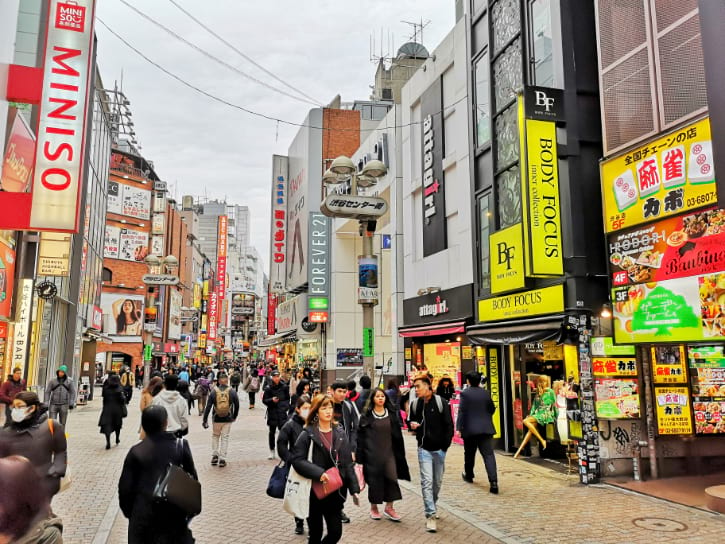
Go hunting for some fashion items at Shibuya Center-gai. This area is known for its many famous fashion brands like H&M, GU Shibuya, UNIQLO, ZARA, and even Prada .
On top of that, you’ll also find popular chain stores like Mega Don Quijote and Miniso.
Take a walk along this bustling street, and you’ll discover more treasures like upscale boutiques, local restaurants, and cozy bars.
It’s a must-visit for shopping and experiencing Tokyo’s vibrant street culture. Enjoy your time exploring!
f) Mega Don Quijote – 1 hour (4:00 PM to 5:00 PM)
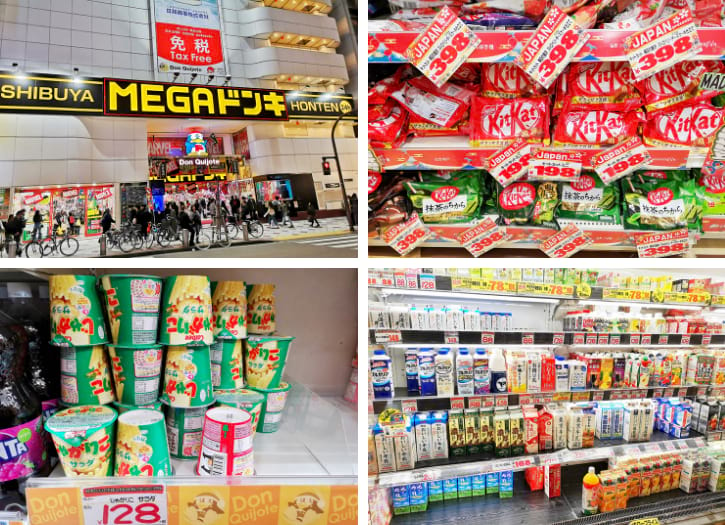
Proceed to Mega Don Quijote for another round of shopping.
This renowned chain store offers various Japanese snacks like Calbee, Sennarido Wasabi Pistachios, Kororo, and Umaibo.
For the chocolates, see their selection of Kit Kat, Macadamia Chocolates, Meiji Almond Chocolate, and Pocky.
You’ll also find a lot of Japanese instant noodles , including Nissin Mouko Tanmen, Maruchan Seimen Tonkotsu, Ippudo, and Maruchan Menzukuri Miso.
g) Shibuya 109 – 1.5 hours (5:00 PM to 6:30 PM)
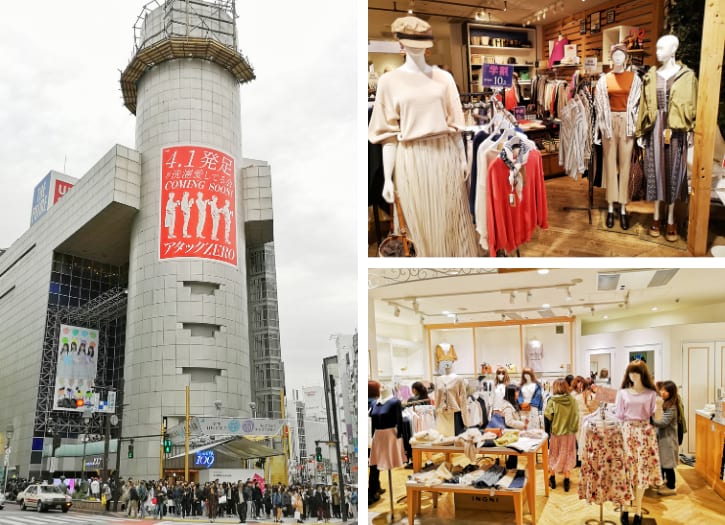
The next stop is Shibuya 109 , which is also a prominent store for the latest fashion trends .
This is a great site for trendsetters and fashionistas looking for reasonably priced items .
Look into the stylish collection of dresses, shirts, pants, skirts, and all kinds of apparel .
They also have a range of shoes, bags, and accessories for your fashion needs.
h) Uobei Shibuya Dogenzaka – 30 minutes (6:30 PM to 7:00 PM)
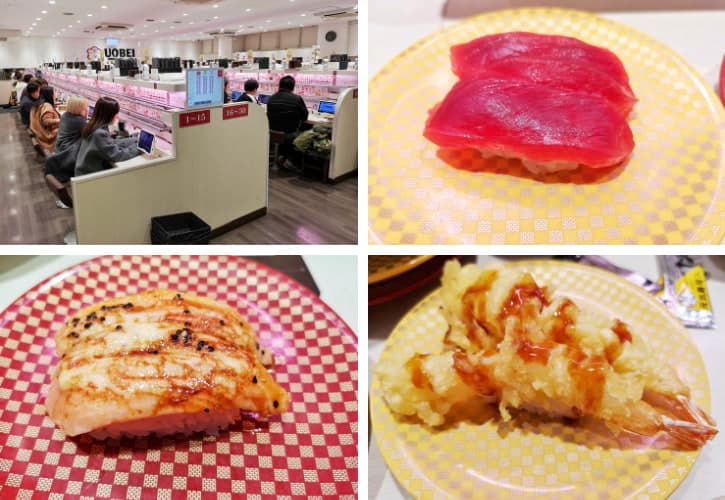
Uobei Shibuya Dogenzaka is one of the famous conveyor belt sushi restaurants in Tokyo .
Here, you get the freshest sushi variations at an affordable price .
Since this is a rotating sushi diner, it’s much easier to order your favourites using the built-in tablet. Most of the sushi here costs between 110 yen and 130 yen per plate .
i) Shibuya Sky at Shibuya Scramble Square – 2 hours (7:00 PM to 9:00 PM)
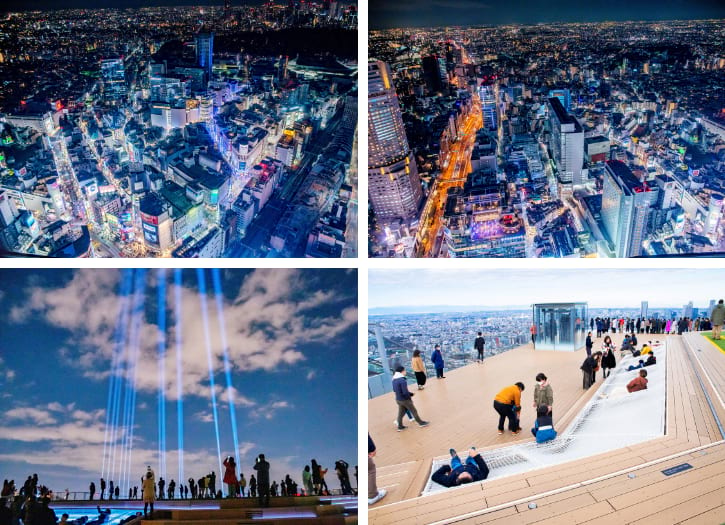
At night, head to the popular attraction in Tokyo, Shibuya Sky . From here, you’ll enjoy a panoramic view of the cityscape .
And if you go here during night-time, then you’ll be surrounded by glittering buildings and city lights.
The view here is truly breathtaking, and this place is a must-visit.
Take Note: Tickets for Shibuya Sky are very popular. It is recommended that you buy the entry tickets here in advance to avoid being sold out on the day of your visit.
SHIBUYA SKY consists of 3 zones:
- SKY GATE: It’s located on the 14th floor, where you can purchase entry tickets. From here, take the elevator up to the 45th floor. And then, ride the escalator to reach the Sky Stage and Sky Gallery on the 46th floor.
- SKY STAGE: This outdoor observation deck offers breathtaking views of the city. Here, you can capture the spectacular skyline dotted with gigantic buildings. This is also a nice location to see some Tokyo landmarks like the Tokyo Tower, Roppongi, Mount Fuji, and Tokyo Bay.
- SKY GALLERY: Another great spot to catch the panoramic Tokyo cityscape is this indoor observation deck. Additionally, this area comes with unique features like a viewing gallery, a cafe, and a bar lounge.

All travelers should ensure their itinerary has Tokyo Disneyland on it. This magical place is truly a dream destination for both kids and adults .
Just imagine walking into a world filled with Disney magic. You’ll find everything from classic attractions like “It’s a Small World” to exciting rides like “Splash Mountain”.
But there’s more than just rides. You can watch amazing parades with dazzling floats and characters dancing in the streets .
And, of course, you’ve got to snap a photo with Mickey and Minnie .
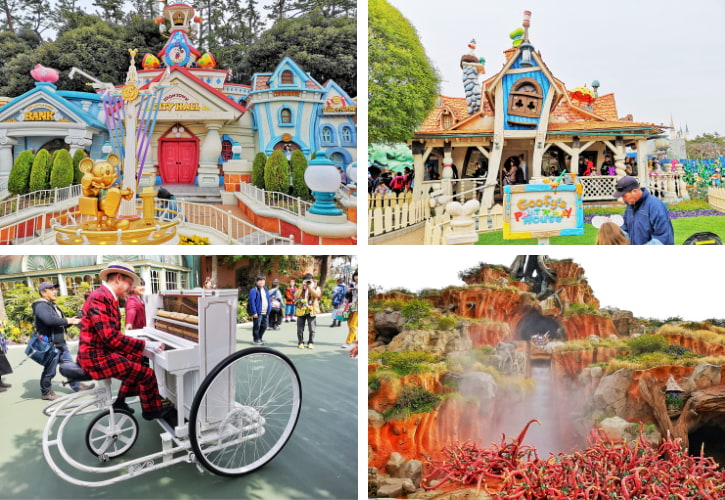
I took a lot of beautiful photos of the rides and shows during my trip. All these are included in my other article, so try to read my guide to the best Tokyo Disneyland rides for more details.
Tokyo Disneyland doesn’t sell tickets at the park. You need to buy them online . Don’t wait too long to get your tickets. It’s a really popular place, and tickets can go fast .
Plan ahead and click here to book your Disneyland tickets early , so you don’t miss out.

You can refer to my article on how to get to Tokyo Disneyland if you’d like more details about reaching the park.
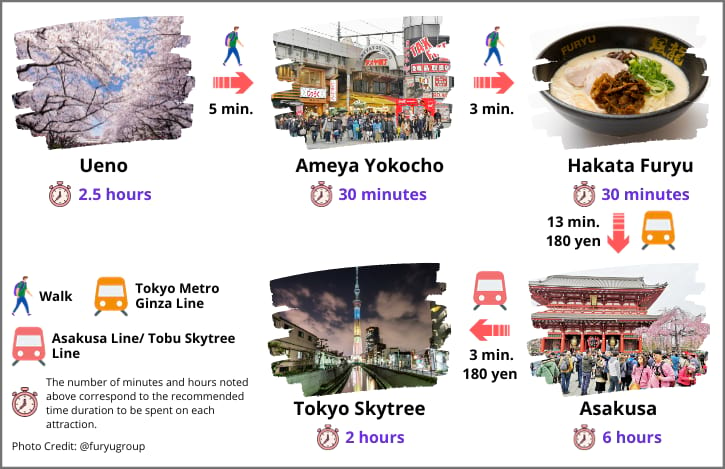
The places to go in Tokyo on the fourth day of the itinerary:
- 9:00 AM: Ueno
- 11:30 AM: Ameya Yokocho
- 12:00 PM: Hakata Furyu (Lunch)
- 12:30 PM: Asakusa
- 6:30 PM: Tokyo Skytree
1. Ueno – 2.5 hours (9:00 AM to 11:30 AM)
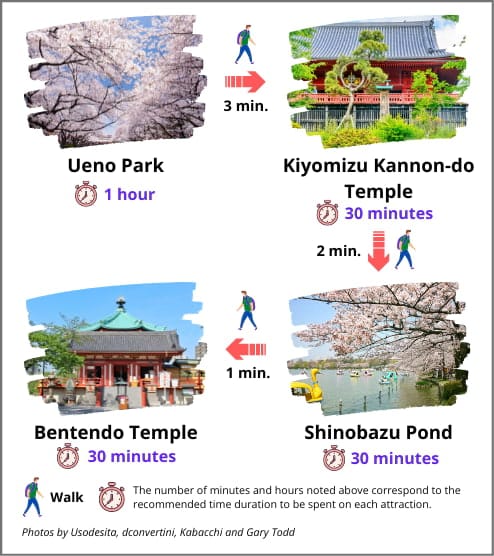
Make your morning memorable by exploring Ueno . Surrounded by beautiful natural views, this garden allows you to fully immerse yourself in nature. Here are the main highlights of what to explore in this area.
- 9:00 AM: Ueno Park
- 10:00 AM: Kiyomizu Kannon-do Temple
- 10:30 AM: Shinobazu Pond
- 11:00 AM: Bentendo Temple

a) Ueno Park – 1 hour (9:00 AM to 10:00 AM)
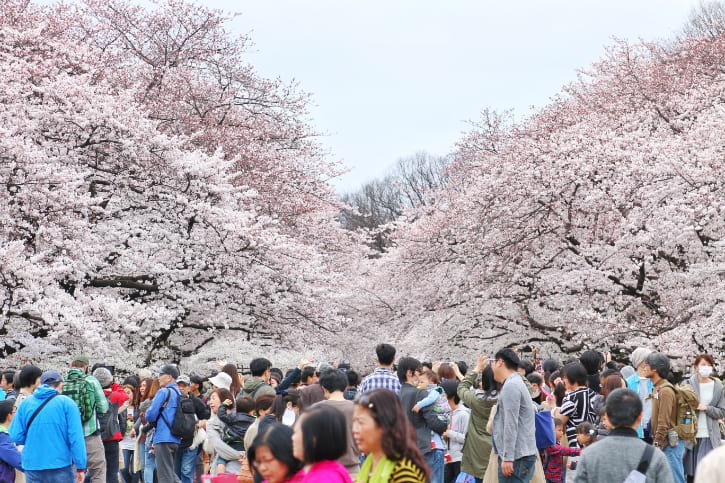
Get started with your day by checking out Ueno Park . This large and beautiful public park in Ueno neighbourhood , Tokyo is such a beautiful place to stroll around .
You will be encircled by stunning views to help you relax and enjoy your trip . While navigating the park, take some pictures and appreciate the natural scenery .
And if you visit during springtime , you’ll be welcomed by the spectacular cherry blossom all over the pathways .
b) Kiyomizu Kannon-do Temple – 30 minutes (10:00 AM to 10:30 AM)
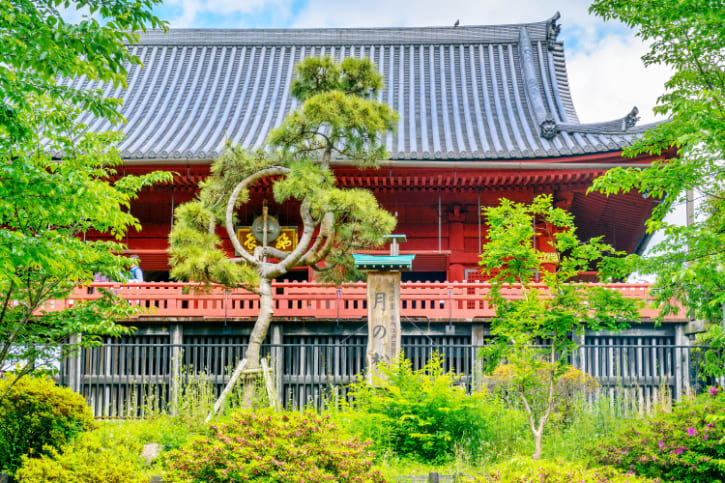
After wandering around, head to the Kiyomizu Kannon-do Temple and pay your respects to the thousand-armed goddess of mercy.
This shrine is frequented by women who wish to conceive and pray for their children’s protection and good health.
The temple itself is a work of art. Look closely into the architecture, which follows the unique Koyomizudera temple design in Kyoto.
c) Shinobazu Pond – 30 minutes (10:30 AM to 11:00 AM)
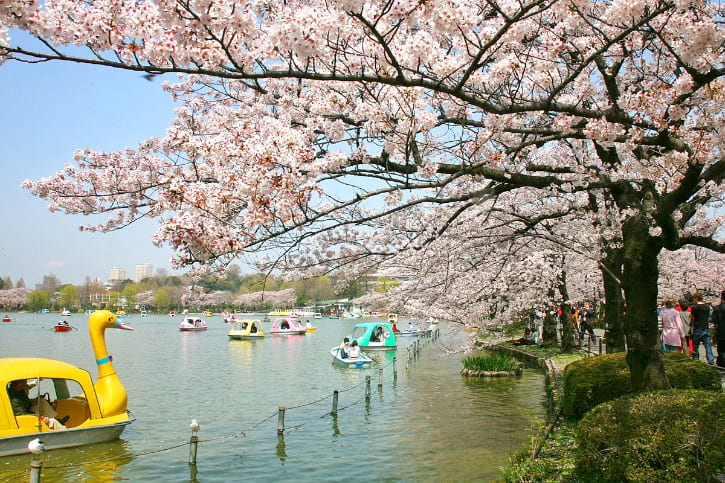
Another favourite spot is the Shinobazu Pond . This spacious area is actually divided into three sections .
The first one is the lotus pond , which is filled with beautiful lotus flowers .
The second one is the duck pond , which shelters ducks and other freshwater birds .
The last area is none other than the boat pond . Rent a boat, paddle around, and enjoy the water surrounded by greenery .
d) Bentendo Temple – 30 minutes (11:00 AM to 11:30 AM)
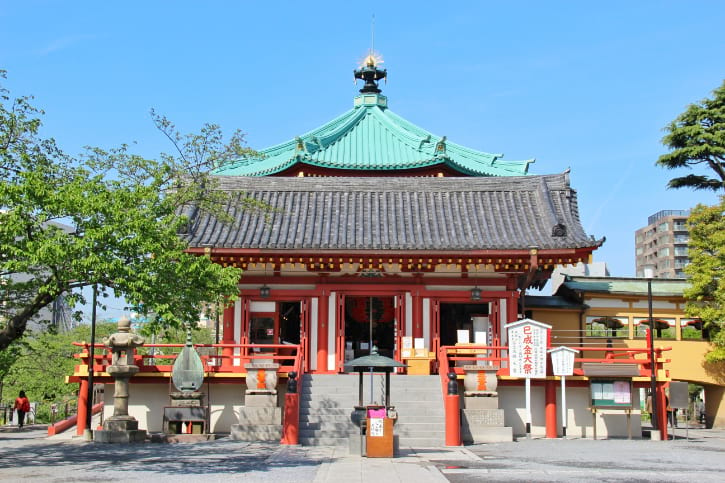
Spot the Bentendo Temple, a hexagonal structure sitting in the heart of Shinobazu Pond.
This religious tower is dedicated to the goddess, Benzaiten , for the peace and prosperity of the locals . It is also known that praying here grants you good fortune .
So during your visit, pay homage to the goddess and call upon your personal intentions, whether it’s for academics, finances, or health.
2. Ameya Yokocho – 30 minutes (11:30 AM to 12:00 PM)
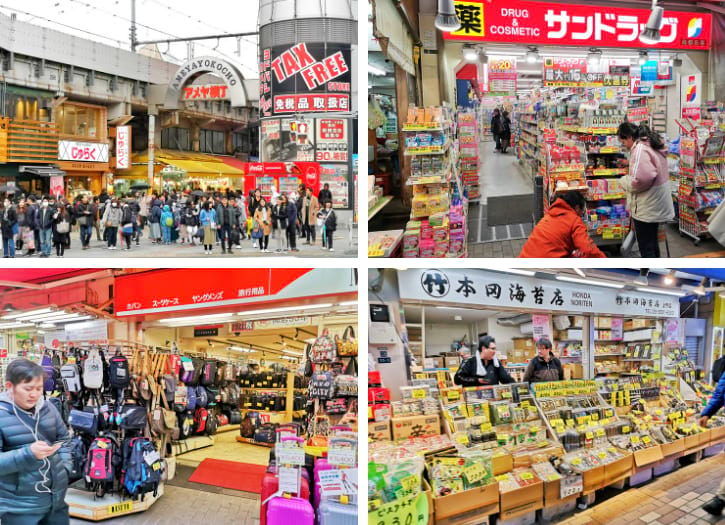
After your Ueno exploration, it’s time to set off to Ameya Yokocho , which actually means candy store alley .
Stroll along the passageway and you’ll find plenty of local stores selling all kinds of products, from clothes to bags and cosmetics .
And of course, you can’t miss the dried food, fresh produce, and spices .
While roaming around, you will also come across a lot of fruit vendors . Grab some of these fresh treats on a stick and enjoy.

3. Hakata Furyu – 30 minutes (12:00 PM to 12:30 PM)
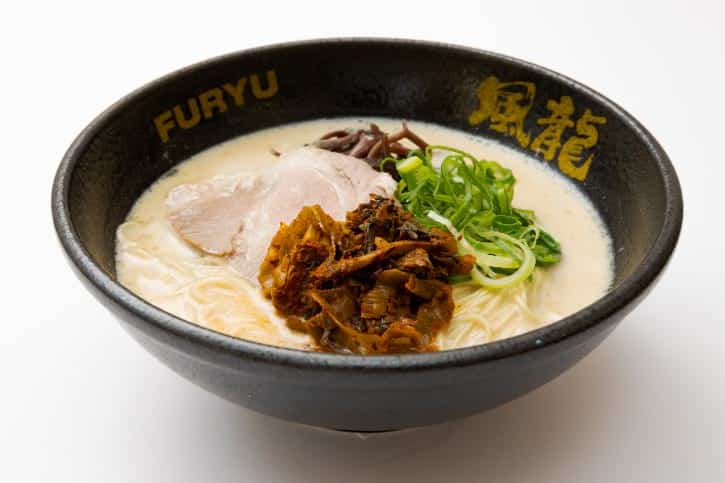
You have 3 lunch options here. Personally, I would recommend Hakata Furyu .
- Hakata Furyu: Try a Tonkotsu ramen that comes in different noodle textures. This shop allows you to choose the hardness of the noodle―soft, medium, hard, and very hard options. The price is 1,020 yen.
- Menya Musashi Bukotsu Soden: This shop serves Tsukemen, a unique ramen wherein the noodles are consumed after dipping it in the soup. They also provide three taste options―white, black, and red.
- Matsuya: Savour a bowl of beef rice in this famous restaurant. Aside from serving tasty food, this is a great spot if you want to save money.

4. Asakusa – 6 hours (12:30 PM to 6:30 PM)

Itinerary details for afternoon in Asakusa :
- 12:30 PM: Dress Kimono
- 1:30 PM: Nakamise Shopping Street
- 2:30 PM: Sensoji Temple (The Most Beautiful Temple in Tokyo)
- 3:00 PM: Suzukien Asakusa
- 3:30 PM: Asakusa Denboin-Dori
- 4:00 PM: Shin-Nakamise Shopping Street
- 5:00 PM: Return Kimono
- 5:30 PM: Asakusa Culture Tourist Information Center
- 6:00 PM: Tendon Tenya/ Unatoto (Dinner)

a) Dress Kimono – 1 hour (12:30 PM to 1:30 PM)

Experience how it feels like to be a local by wearing a kimono. This traditional attire exudes the uniqueness and sophistication of Japanese culture.
And if you want to try one, you can check out this famous shop that offers excellent kimono rental service .
On top of that, they also provide hairstyling for women . Just make sure to make a reservation in advance online because they are often fully booked.
b) Nakamise Shopping Street – 1 hour (1:30 PM to 2:30 PM)
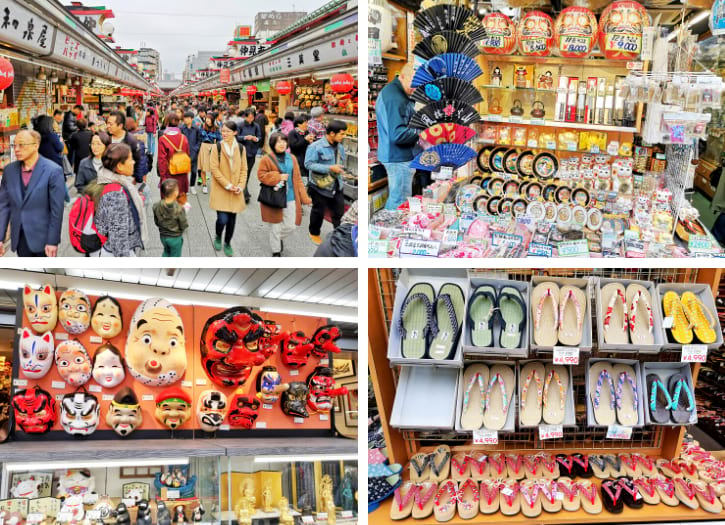
When you visit Nakamise Shopping Street , you’re in for a real treat. This bustling street leads to Senso-ji Temple and is full of life.
It’s lined with small shops selling everything from traditional Japanese souvenirs like fans and lantern magnets to tasty local snacks.
I recommend trying some of the street food here – Kaminari Okoshi , which are crispy, puffed rice crackers, and Kibi Dango , mochi-like snacks that are renowned Japanese sweets.
It’s also a great place to pick up unique gifts . The atmosphere is lively, and there’s always something interesting to see.
c) Sensoji Temple – 30 minutes (2:30 PM to 3:00 PM)
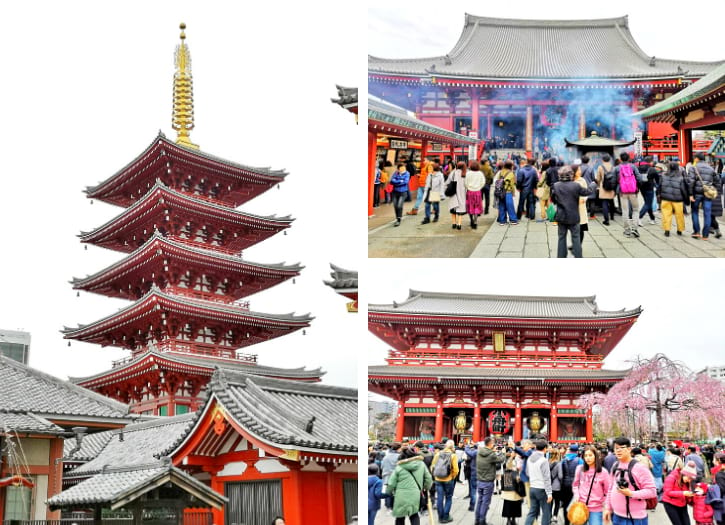
When in Asakusa, you should pay a visit to Sensoji Temple , which is considered Tokyo’s oldest temple .
Before entering the temple complex, you’ll see a famous red lantern hanging at the entrance gate called Kaminarimon . Be sure to snap a photo there .
Then, proceed to explore the unique architectural design of the main shrine . Just beside the temple is the 5-storey pagoda , which is also worth checking out .
d) Suzukien Asakusa – 30 minutes (3:00 PM to 3:30 PM)
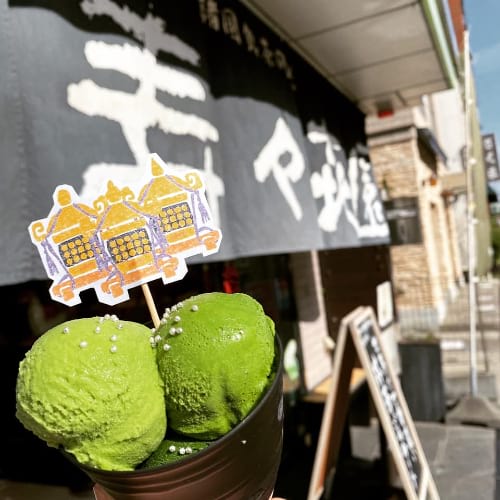
During your exploration, don’t miss the famous ice cream of Suzukien Asakusa . Choose from their variety of green tea flavours.
They have seven matcha intensity levels, with the richest as the most bitter one .
So, if you’re a matcha fanatic, you’d definitely fall in love with their amazing selection of matcha flavoured gelato .
e) Asakusa Denboin-Dori – 30 minutes (3:30 PM to 4:00 PM)

Don’t forget to check out the Asakusa Denboin-Dori. This charming street, located right next to the famous Senso-ji Temple , is like a step back in time.
Here, you’ll feel like you’ve stepped back in time. The street is lined with shops and stalls that sell traditional Japanese crafts, snacks, and souvenirs .
It’s perfect for finding unique gifts or just enjoying the old-time atmosphere.
And remember to bring your camera – the traditional architecture and bustling street life make for great photos .
Asakusa Denboin-Dori is more than just shopping; it’s a slice of old Tokyo you’ll love to explore.
f) Shin-Nakamise Shopping Street – 1 hour (4:00 PM to 5:00 PM)
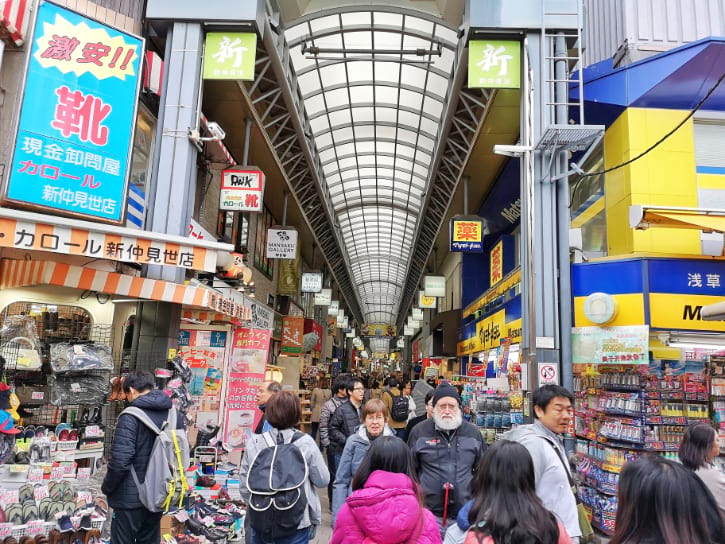
Walking through Shin-Nakamise Shopping Street , you’ll be impressed by the array of local items on display.
This street is filled with shops offering clothes, accessories, and traditional Japanese items .
It’s less crowded than the main Nakamise street , so you can shop at a more relaxed pace .
g) Return Your Rental Kimono – 30 minutes (5:00 PM to 5:30 PM)
Next, return your rented kimono, and then proceed to the next spot mentioned below.
h) Asakusa Culture Tourist Information Center – 30 minutes (5:30 PM to 6:00 PM)
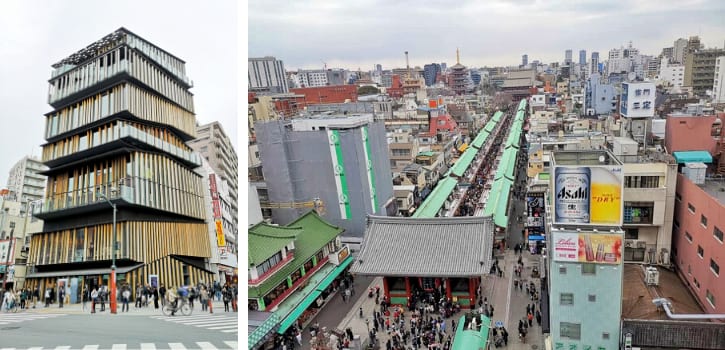
The Asakusa Culture Tourist Information Center is a stunning sight , even from afar.
Its architecture, resembling stacked boxes, is truly unique and catches the eye.
This building is a favorite among photographers for its striking appearance.
Don’t forget to visit the 8th floor for breathtaking views of Sensoji Temple, Nakamise Street, and Tokyo Skytree .
i) Tendon Tenya – 30 minutes (6:00 PM to 6:30 PM)
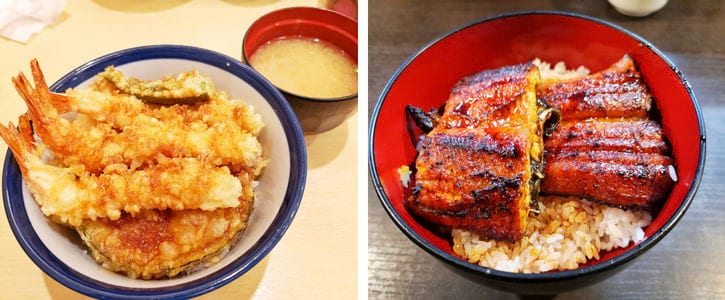
There are two popular restaurants in Asakusa where you can enjoy your dinner.
- Tendon Tenya: Try some of Tokyo’s best tendon at Tendon Tenya. They have a great menu with different tendon and Teishoku dishes. The top choice is the “All-Star Tendon” for 720 yen.
- Unatoto: This famous unagi place offers delicious, affordable eel dishes. You can pick from various eel bowls and sets. Their classic grilled eel rice bowl costs 590 yen.

5. Tokyo Skytree – 2 hours (6:30 PM to 8:30 PM)
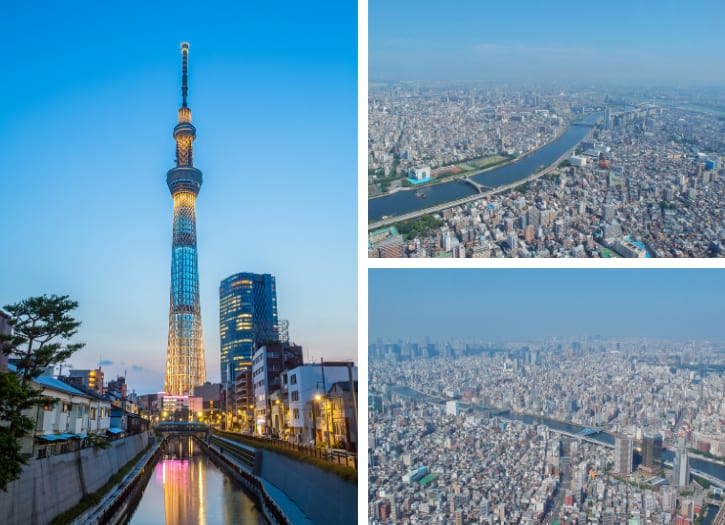
In the evening, spend some time at the Tokyo Skytree . It’s more than just a tower – it’s the tallest in Japan and offers incredible views of the city .
The Tembo Deck and Tembo Galleria are the main attractions of the building. From these observation decks, you’ll see various Tokyo landmarks illuminated by the city lights.
My tip: go in the evening to see Tokyo light up at night. It’s an experience you won’t forget.
Remember to buy your Tokyo Skytree tickets online , as they are in high demand and go fast , especially during peak season. Another advantage of booking online is that you can get an extra 15% discount .

Our day 5 itinerary involves taking a day trip from Tokyo to Mt. Fuji . I encourage you to visit this place because the landscapes here are incredibly beautiful.
Some of the things you can do there include exploring Lake Kawaguchiko and Oshino Hakkai . These two are very popular spots in the area.
You can also ride the Kachi Kachi Ropeway to easily capture the beautiful Mount Fuji as your background .
Try to check out my post on Tokyo to Mount Fuji day trip here to learn the best ways to reach the area. This also guides you in discovering all the must-visit attractions.
Transportation Guide:
For a stress-free trip to Mount Fuji from central Tokyo , you can check out the popular Bus Tour 1 / Bus Tour 2 / Bus Tour 3 here.
These buses take you directly to Mount Fuji and its surrounding attractions. Super convenient!
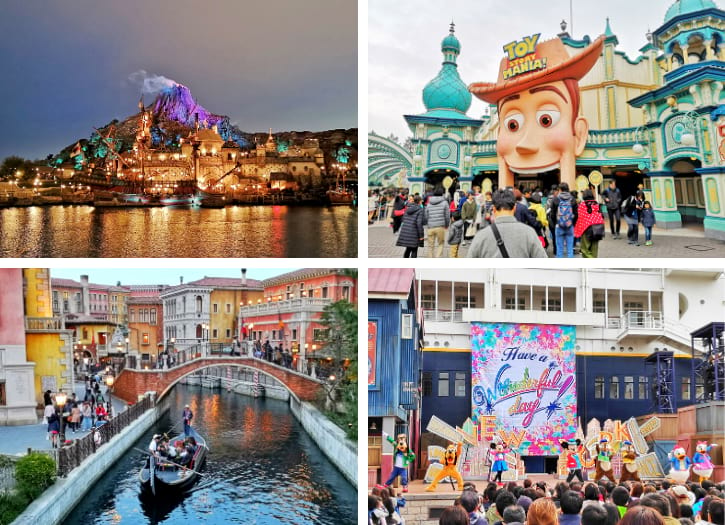
If you’re heading to Tokyo DisneySea , you’re in for an exciting day! The park focuses on ocean stories and offers a variety of thrilling and family-friendly rides .
Start at Mediterranean Harbor , which looks just like an Italian port and has cool water shows .
Don’t miss Mysterious Island with its volcano and awesome rides like “Journey to the Center of the Earth” .
Be sure to check out Toy Story Mania! in the American Waterfront area, a super fun 4D interactive ride based on the Toy Story movies.
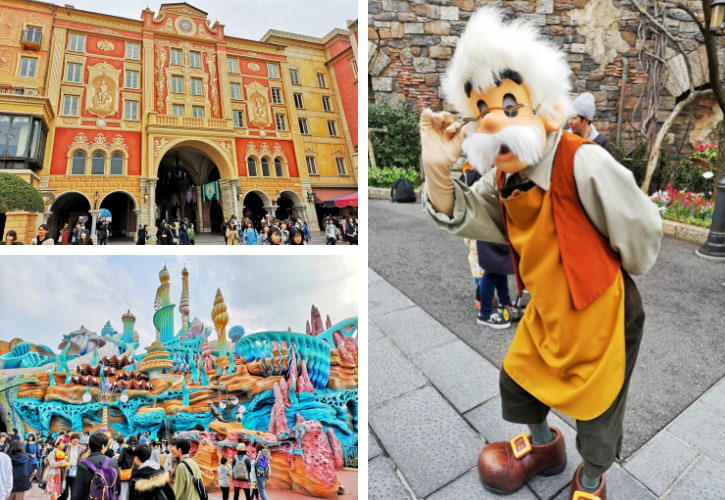
And that’s not all – you’ll get the chance to meet beloved Disney characters like Mickey Mouse, Donald Duck, and even Geppetto . These character meet-ups are great for memorable photos and interactions.
Each area has its own special rides, shows, and food. Also, the night shows over the water are a must-see.
Recommendation: Buy your DisneySea tickets online here before your trip. Tickets are not available for purchase on-site. Book them early, as they often sell out quickly.

On day 7 of this Tokyo itinerary, you will be going the following spots:
- 9:00 AM: Tokyo Metropolitan Government Building
- 11:30 AM: Odaiba
1. Tokyo Metropolitan Government Building – 1.5 hours (9:00 AM to 10:30 AM)
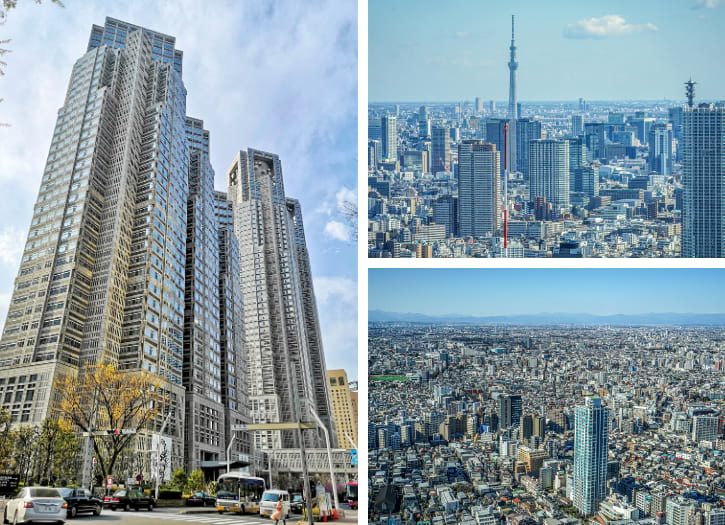
On the first stop of your last day trip , you’ll visit the Tokyo Metropolitan Government Building .
This building houses two observation decks : the North Tower and South Tower .
Conveniently, both decks are free to access . From these observation points, you can catch a glimpse of iconic sights like the Tokyo Skytree and Tokyo Tower .
And on a clear day , it’s easy to spot the famous landmark in Japan, Mount Fuji . For the best views , pick the North Observatory .

2. Odaiba – 8.5 hours (11:30 AM to 8:00 PM)

Itinerary breakdown for touring Odaiba :
- 11:30 AM: teamLab Planets TOKYO
- 1:30 PM: Food Court at DiverCity Tokyo Plaza (Lunch)
- 2:30 PM: Unicorn Gundam Statue
- 2:35 PM: Fuji Television Building
- 3:35 PM: Odaiba Statue of Liberty
- 3:40 PM: Odaiba Takoyaki Museum
- 4:10 PM: Tokyo Joypolis
- 6:10 PM: Odaiba Seaside Park
- 7:10 PM: Eggs ‘n Things (Dinner)

a) teamLab Planets TOKYO – 2 hours (11:30 AM to 1:30 PM)

You really can’t skip teamLab Planets TOKYO when you’re in Tokyo.
This amazing art museum is all about interactive, digital art.
You’ll walk through rooms with beautiful light displays and sounds that create an immersive world . The exhibits change around you, making you feel like you’re part of the art .
It’s a special experience that’s really unforgettable. You’re going to have a great time there!
A little suggestion: Book your teamLab Planets tickets in advance , as they tend to sell out quickly.

b) Food Court at DiverCity Tokyo Plaza – 1 hour (1:30 PM to 2:30 PM)

Head to the 2nd-floor Food Court at DiverCity Tokyo Plaza for lunch. It’s a great place to eat with a variety of options.
Try the Japanese ramen for a taste of local flavors or opt for tempura for a satisfying meal.
And if you’re in the mood for a classic favorite, you can grab a burger . It’s convenient and has something for everyone . Enjoy your meal!
c) Unicorn Gundam Statue – 5 minutes (2:30 PM to 2:35 PM)
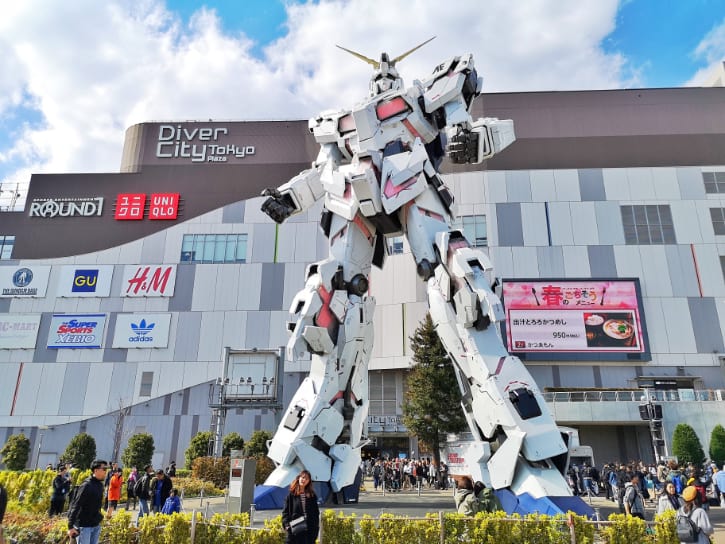
The towering Unicorn Gundam Statue is certainly hard to ignore. Catch a glimpse of this incredible structure that is positioned in front of DiverCity Tokyo Plaza .
And just along the area, you’ll see a landscape of flowers.
d) Fuji Television Building – 1 hour (2:35 PM to 3:35 PM)
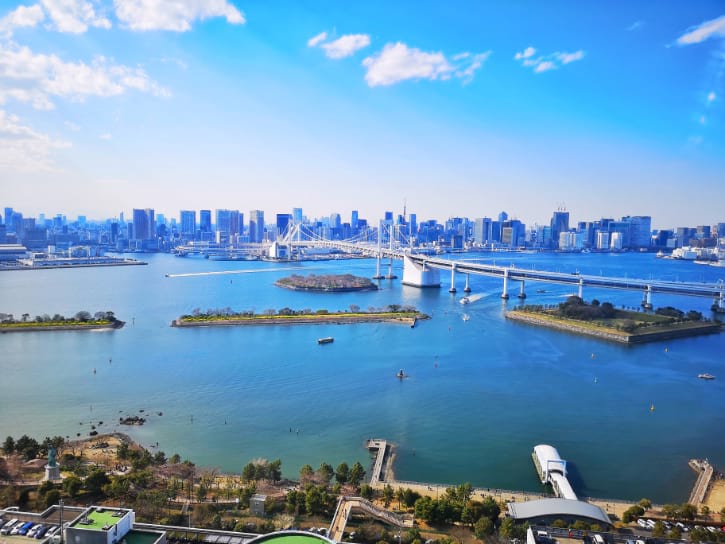
Check out the Fuji Television Building in Odaiba . It’s not just a TV station; it’s an attraction itself.
The building has a unique, futuristic design . You can go up to the observation deck for an amazing view of Tokyo Bay and the Rainbow Bridge .
They also have exhibits about popular TV shows and a shop where you can buy cool souvenirs. It’s a fun place to learn about Japanese TV and enjoy great views. Don’t miss it!
e) Odaiba Statue of Liberty – 5 minutes (3:35 PM to 3:40 PM)
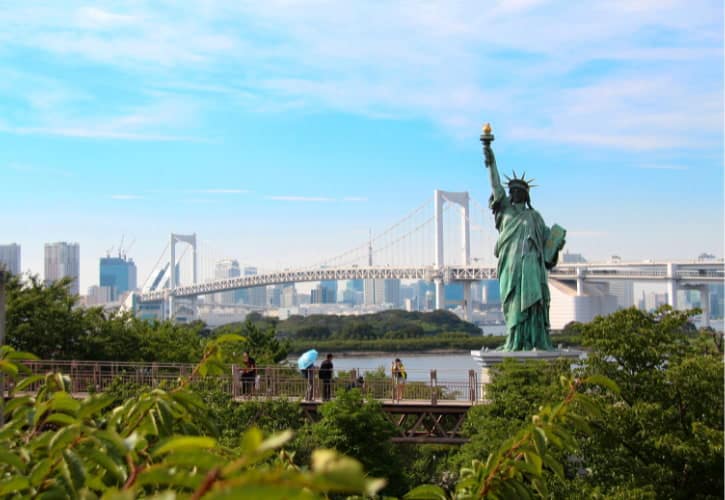
But of course, the Odaiba Statue of Liberty is a distinctive landmark in the area . So be sure to drop by the location and see its wonderful glory.
When taking a photo of the statue, don’t miss to include the Rainbow Bridge for a more panoramic capture.
f) Odaiba Takoyaki Museum – 30 minutes (3:40 PM to 4:10 PM)
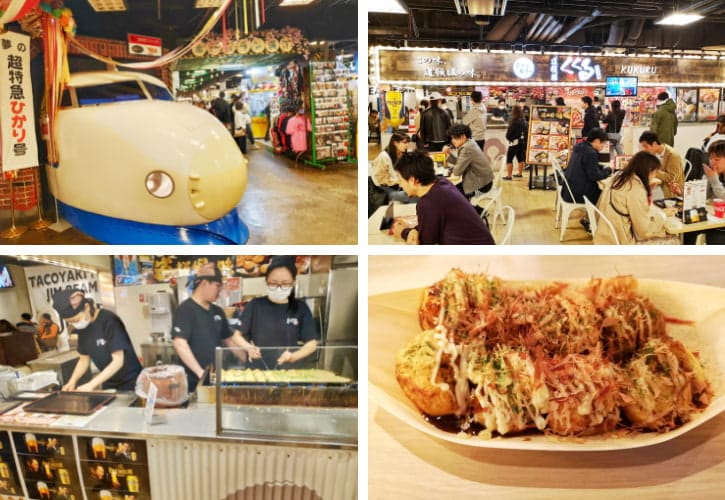
From the name itself, Odaiba Takoyaki Museum welcomes you to a place fully dedicated to Takoyaki lovers !
There are several stalls selling all kinds of Takoyaki flavors , so be sure to check them out.
Aside from that, there are lots of souvenirs available!
Plus, the unique Takoyaki designs all over the place are truly magical. So, take your time exploring this famous food theme spot and capture as many photos as you want.
g) Tokyo Joypolis – 2 hours (4:10 PM to 6:10 PM)
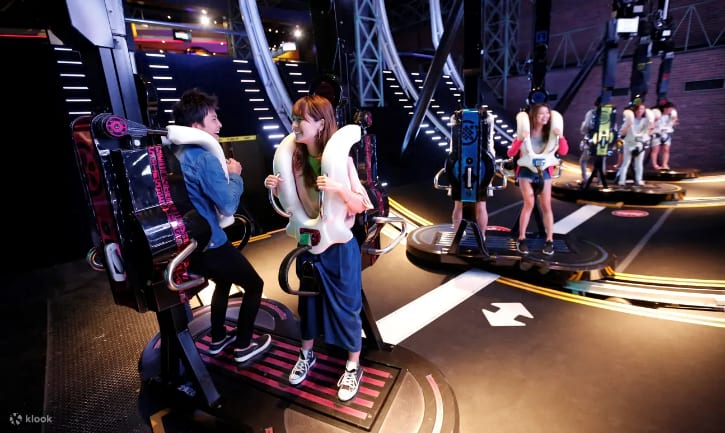
Have fun at Tokyo Joypolis with your family and friends. It’s a huge indoor amusement park, packed with thrilling rides and virtual reality games .
You’ll find roller coasters , arcade games , and a variety of VR experiences that are super fun .
Don’t miss out on the half-pipe ride and the VR zombie game. It’s the perfect place to spend a few hours, especially if you love gaming and rides. You’re sure to have a blast!
And if you decide to visit the place, you may purchase your Tokyo Joypolis tickets online and enjoy up to 20% OFF!
h) Odaiba Seaside Park – 1 hour (6:10 PM to 7:10 PM)
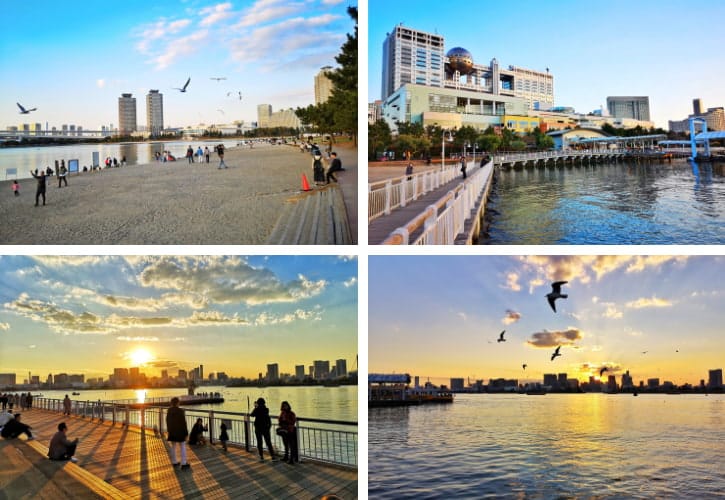
If you want to simply relax, include Odaiba Seaside Park in your schedule. This coastal green space is surrounded by blue vistas and green nature views.
And from afar, you can see the cityscape and some iconic landmarks.
Catch sight of the Rainbow Bridge and the Fuji Television Building.
Or you may just wander around the vast area and enjoy the scenery . Afterward, you can explore the eateries and shops nearby.
i) Eggs ‘n Things – 50 minutes (7:10 PM to 8:00 PM)
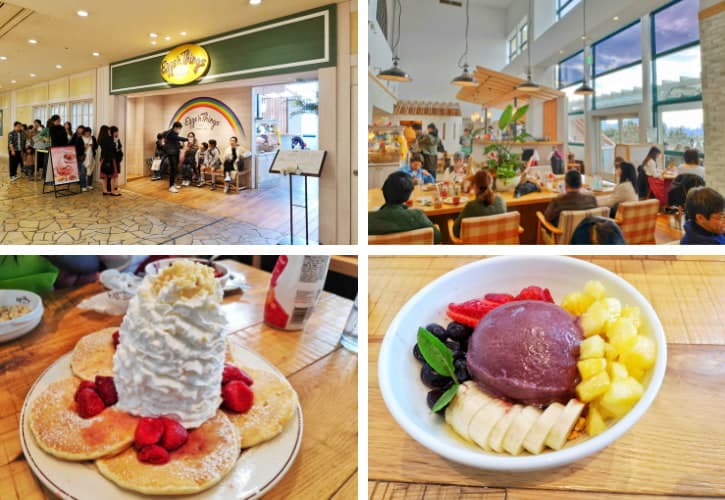
After a fun-filled day, head to Eggs ‘n Things and have a hearty dinner.
Although this restaurant is known for its breakfast options, they have lots of savory meals.
Go over their menu of tasty dishes, including spam & eggs , grilled potatoes , and chicken burger .
Complete your meal with their classic waffles or crepes. And for your drinks, choose from their selection of juice, coffee, lemonade, and soda.
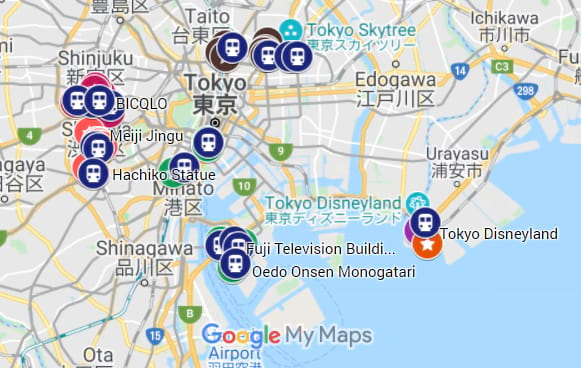
To help you easily visualize this travel plan in Tokyo from day 1 to day 7, you can refer to the map above.
The easiest way to get around Tokyo is by using subways and trains , which can take you to most tourist spots.
You can use Google Maps to help find routes and estimate travel times.
I recommend obtaining a Welcome Suica card for efficient and affordable travel in the city. This card helps save both time and money.
Why use the Welcome Suica Card
- Save time when commuting around Tokyo via train. Using your card, you simply tap it at the ticket gate and you can hop aboard the train with ease.
- There’s no need to queue up for buying individual tickets at ticket vending machines every time you board a train.
- It is very convenient and reliable. Plus, it allows you to ride the JR trains, metros, buses, and even taxis in Tokyo with ease.
- You can also use the card when buying items from convenience stores like 7-eleven, Lawson, and Family Mart.
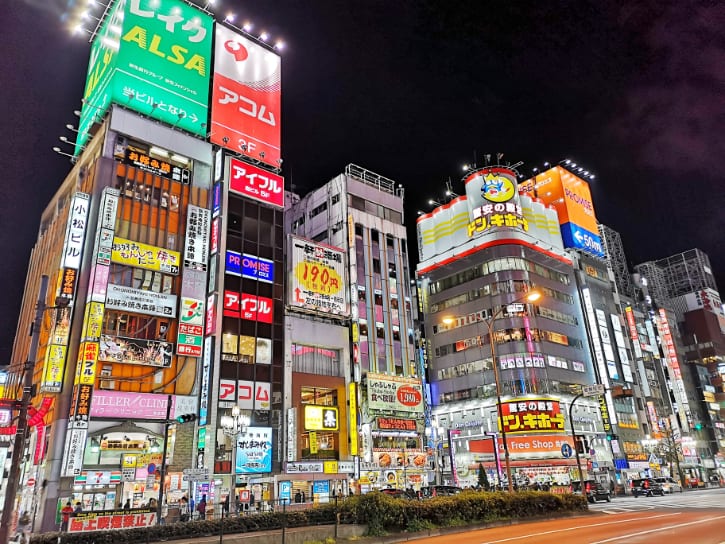
The best place to stay in Tokyo for travellers is Shinjuku . And if you want to stay in this area, make sure to book your hotel in advance .
Most hotels in the area sold out faster because of its convenient location ; hence, many travellers prefer to stay here when travelling to Tokyo.
Recommended Hotels in Shinjuku
- Citadines Central : Close to the JR train station with a Lawson store at the entrance and a 7-Eleven nearby. Don Quijote, Matsumoto Kiyoshi, and Kabukicho are just a 5-minute walk away.
- JR Kyushu Hotel Blossom Shinjuku : Only a minute away from both Lawson and 7-Eleven, and a 2-minute walk to Shinjuku Station.
- Tokyu Stay Shinjuku : Near Shinjuku-sanchome Station and a 5-minute walk to well-known Tokyo restaurants like Sushi Zanmai and Ichiran.
- Hotel Sunroute Plaza : Offers airport limousine service to Narita and Haneda. FamilyMart and Lawson are around the corner, and it’s a 4-minute walk to the train station.
6 Main Reasons Why Shinjuku is the Best Area to Stay in Tokyo for Tourists
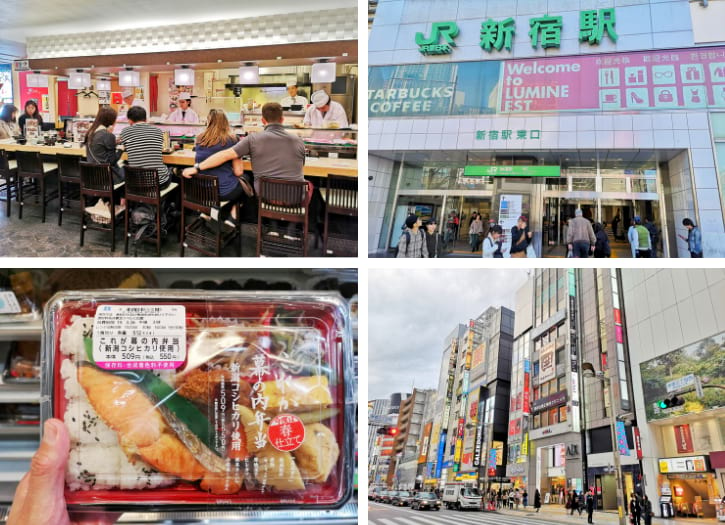
- Delicious Foods at Affordable Prices: This area is surrounded by many budget-friendly restaurants like Tendon Tenya, Hakata Tenjin, and Matsuya, as well as mid-range restaurants such as Ichiran and Sushi Zanmai.
- Convenient Train Access: Easily accessible JR and Tokyo Metro Stations provide quick links to major tourist spots.
- Plenty of 24-Hour Convenience Stores: FamilyMart, 7-Eleven, and Lawson are all nearby, offering snacks, meal boxes, and essentials.
- Great Shopping Options: For fashion, head to Bicqlo and Uniqlo; for beauty products, Matsumoto Kiyoshi and Daikoku Drug are close by. Don Quijote is perfect for Japanese snacks.
- Easy Bus Ride to Haneda Airport: For easy transportation from Haneda Airport to Shinjuku , take the limousine bus transfer for 1,250 yen. The travel time is around 30 minutes.
- Quick Access to Narita Airport: There is also a direct limousine bus from Narita Airport to Shinjuku , taking about 105 minutes. For a faster option, the Narita Express train takes 85 minutes and costs 3,250 yen.
For easy travel in Tokyo, get a Japan SIM card or rent a pocket WiFi . This helps with route searches and navigation on Google Maps. You can book them online and pick up at Haneda or Narita Airport.
My Tokyo guide for 7 days is now complete. I hope this itinerary helps you make the most of your visit to this vibrant city!
Travelling to Seoul? Take a look my Seoul itinerary here.

20 Best Tokyo Disneyland Rides You Shouldn’t Skip for All

17 Best Tokyo DisneySea Rides You Can’t Miss Now

17 Top Things to Do in Shibuya with My Ideal Itinerary
7 thoughts on “tokyo itinerary: the best 7-day guide for a fantastic trip”.
hello, I’m henokh wiranegara from Indonesia, thank you very much for making a blog about Tokyo, complete with itinerary photos, location photos. it really makes it easier for me to enjoy Tokyo. I have never found a blog as interesting as this one. Thank you very much for helping me on my holiday in Tokyo with my family. Thank you very much.
Thank you so much for this! I can see how much work you put into this. I like that there’s a suggested hours per spot and you’ve provided an infographic of the itinerary. I am glad came across your blog.
Thank you for your kind words, Maeriz! It took me many days to create this itinerary, and I hope it will make planning a trip to Tokyo easier for others and save them time on research. I’m glad to hear that you found the suggested hours and the infographic helpful. I wish you a wonderful journey to Tokyo!
I had been stuck for weeks trying to create an itinerary for my trip and your blog made everything much easier. Thank you so much!!
Thank you so much, Josh. So much work you put into this is amazing. I will use it for my upcoming trip with my family from Australia. I’m glad I came across your blog. I have added your page to my favorites. Thanks again for a very informative post. Truly helpful.
Hello, thank you so much for this detailed and well presented tokyo trip guide this is very helpful for us 1st timers in Japan. I would just like to ask which hotel to go while on the said location since I have 2 kids with me. Thank you!
Hey Joy, sorry for getting back to you late! I’d suggest choosing either the Hotel Sunroute Plaza or the JR Kyushu Hotel Blossom Shinjuku. These two hotels are really close to the Shinjuku train station, which could be super convenient for you, especially with two kids in tow.
Leave a Comment Cancel reply
Send me an email when the author replied my comment. (Please take note your comment only will show on this blog post after approved by me to prevent spam comments.)
6 Day Tokyo Itinerary: The Tokyo Guide For First Time Visitors
This page may contain affiliate links which earn us a commission at no extra cost to you to support the site. Thank you!
Tokyo, one of the most vibrant, lively and exciting cities in the world. A city filled with contrast, from robot bars to peaceful Shinto shrines, Tokyo has it all. With tons of districts to choose from, planning your trip may be a little overwhelming. That’s why I’ve put together a 6 day Tokyo itinerary to guide you. Tokyo is one of my all-time favourite cities in the world and I hope that this travel guide helps you with your own trip.
When visiting Japan for the first time, six days may seem like a long time to spend in Tokyo. There is so much to see in Japan! But because Tokyo is such a special city, I do recommend spending enough time here. This 6 day Tokyo itinerary includes 5 days in Tokyo and one day trip. This way, you can see the best things Tokyo has to offer, but also enjoy some of the great places just outside of Japan’s capital city. Let’s not waste more time, and dive in…
Shopping in Shibuya
Try purikura, drinks & pachinko, grab lunch at coco curry ichibanya, dinner and karaoke in harajuku, predict the future with o-mikuji, dinner in akihabara, hello kitty store, metropolitan government building, tokyo tower, roppongi hills mori tower, omoide yokocho (memory lane), day trip to mount fuji, how to get to tokyo from narita airport, international currency card.
* The Navigatio uses affiliate links . If you make a purchase through these links, I will receive a small commission at no extra cost to you. Thank you!
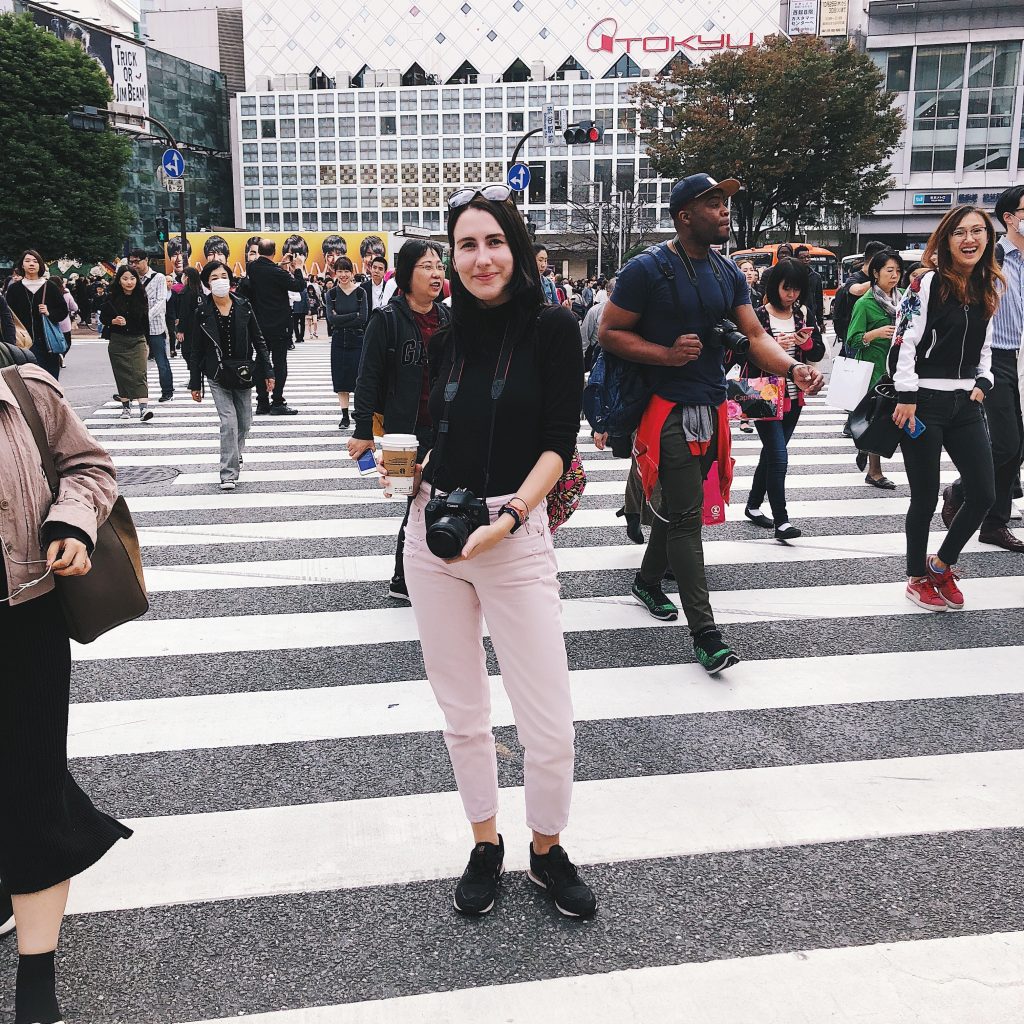
6 Days in Tokyo Map
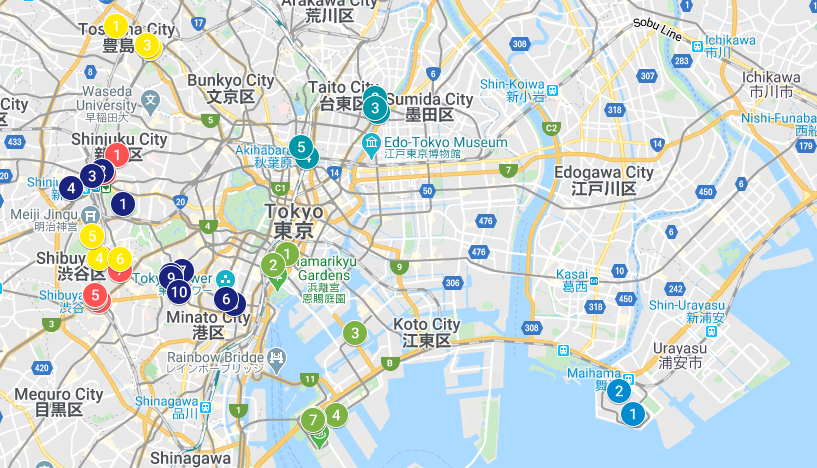
Tokyo Day 1: Pink Tokyo Day 2: Yellow Tokyo Day 3: Teal Tokyo Day 4: Green Tokyo Day 5: Dark Blue Tokyo Day 6: Light Blue Click here to view the map in Google Maps.
Planning your trip to Japan? Make sure to also check out my other articles about this beautiful country. Including:
- My Ideal Two Week Japan Itinerary For First Time Visitors
- Planning to spend more time in Japan? Check out my Three Week Japan Itinerary.
- How Expensive Is Japan? A 2 Week Budget Breakdown
- Looking for more cool Japan activities? Check out my top 50 best things to do in Japan !
6 Day Tokyo Itinerary
Day 1: shibuya, harajuku and shinjuku.
We start our six days in Tokyo in the Shinjuku district. This is where I also recommend booking a hotel. Shinjuku is a lively part of Tokyo and is known not only for being the commercial and entertainment centre of the city, but also for housing the busiest railroad station in the world: Shinjuku station .
The reason I recommend staying in Shinjuku is that it’s quite local to most things that are included in this itinerary and it’s easy to navigate to other parts of Tokyo using the metro/trains from here. On top of that, Shinjuku is filled with exciting bars and restaurants that you can visit in the evening after a long day of exploring.
The hotel we stayed in is called Hotel Sunroute Higashi Shinjuku and is located right next to the Higashi-Shinjuku station . This station is a LOT smaller compared to Shinjuku station, making it much easier to use. You can also check out the best ryokans in Tokyo .
We start our first day in Tokyo in Shibuya. From Shinjuku, you can use the metro to get here. It only takes a few minutes. Shibuya is the perfect place to start your Tokyo adventure because you immediately dive into the busy city life. It feels like Tokyo straight away – exactly what you’d expect. Shibuya is mainly known to be Tokyo’s business centre . And of course, the world-famous Shibuya Crossing !
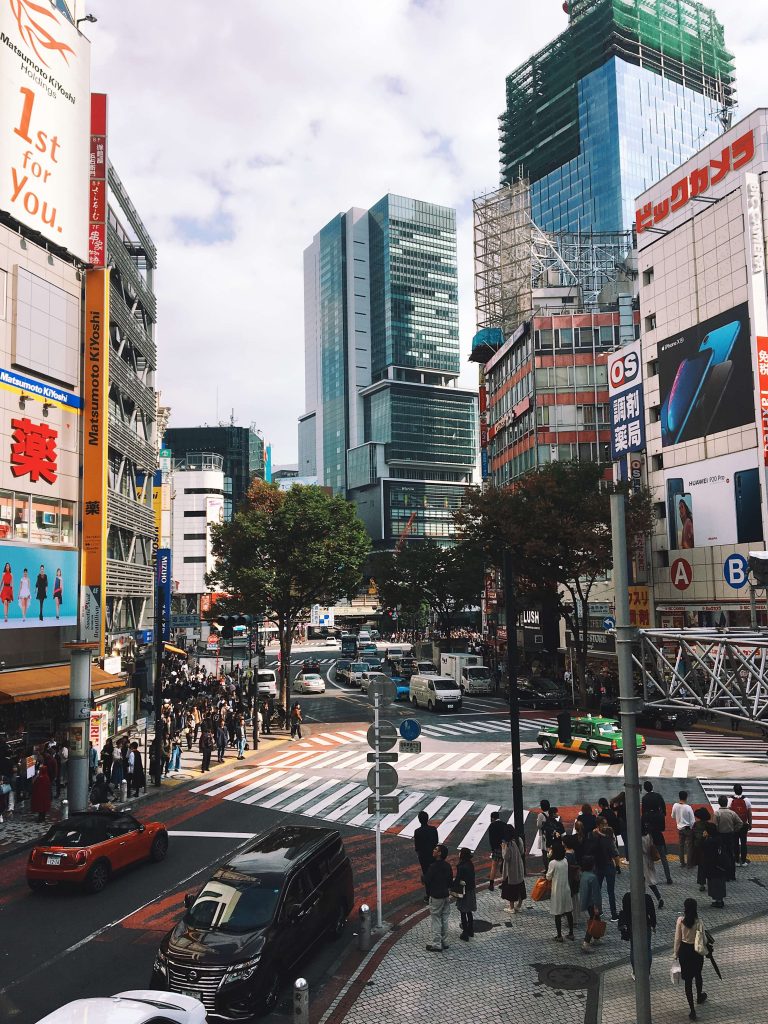
Hachiko Statue
Right outside Shibuya Station, you can find stop number one : the Hachiko Statue . You might have seen the movie or heard tales about this famous dog. If not, here is the tale of Hachiko:
Hachiko the dog came to meet his master every day at Shibuya station. Even after his master died, Hachiko would show up every single day until his own death. The statue is to commemorate his loyalty. Many people take pictures with the statue.

Shibuya Crossing
Then it’s time for the famous Shibuya Crossing! This crossing is one of the most famous and busiest crossings on the planet. Up to around 3000 people can cross here at the same time. As soon as the traffic lights allow pedestrians to cross, a sea of people washes over the streets. It’s quite remarkable – especially walking it yourself. One for the Tokyo bucket list for sure.
TOKYO T IP: Right across Shibuya Crossing, you can find a Starbucks Coffee. There is a seating area on the first floor, where you can find one of the best places to view the crossing from above. It’s the perfect place for some photos or a timelapse while getting your morning caffeine.
Combining the excitement of finally being in Tokyo and your Starbucks caffeine, we move over to some Shibuya Shopping. Shibuya is filled with some great shops. You can find some of the bigger main shops here, like Zara, H&M and Adidas, but there are also some unique Japanese gems here! Some shops to check out include:
- Vanguard Village (Pop culture and souvenirs) Opening hours: Mon-Sun 10 AM – 11 PM
- Shibuya 109 (Many smaller boutiques) Opening hours: Mon-Sun 10 AM – 9 PM
- MODI (Fashion shops, restaurants, bookstores and karaoke bars) Opening hours: Mon-Sun 11 AM – 9 PM
- MARUI (Also known as OIOI -mainly fashion items) Opening hours: Mon-Sat 11 AM – 9 PM Sun 11 AM – 8:30 PM
- MUJI (Wide variety of items) Opening hours: Mon-Sun 10 AM – 9 PM
- Disney Store Opening hours: Mon-Sun 10 AM – 9:30 PM
- Tokyu Hands (Crafts and DIY items) Opening hours: Mon-Sun 10 AM – 9 PM

Our afternoon starts in Tokyo’s Harajuku district. Harajuku refers to the area in Tokyo near Harajuku station (right between Shinjuku and Shibuya) – and is mainly known for its vibrant fashion and pop culture. You can take the metro from Shibuya Station to Harajuku Station, but it’s only 10-15 minutes on foot. If you have enough time after your shopping spree, I’d recommend walking. It’s a great way to see more of the city and enjoy the sights rather than looking at the metro walls. It also gives you a chance to grab some lunch at a 7-Eleven or Family Mart.
TOKYO TIP: Make sure to sit down somewhere to eat your lunch though – it’s frowned upon in Japanese culture to eat and walk at the same time!
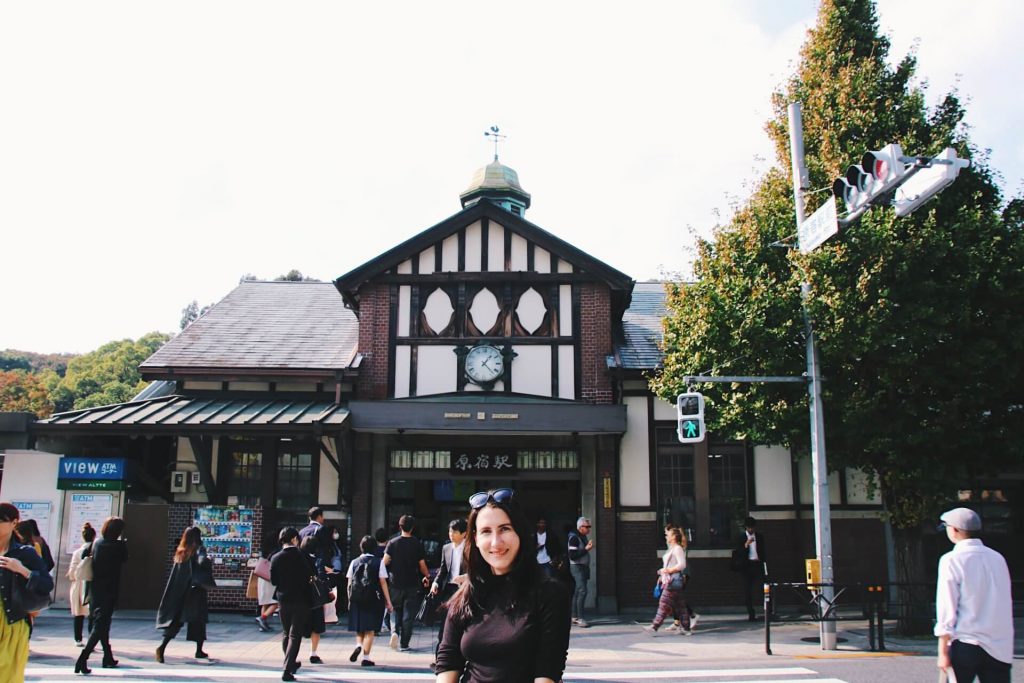
Shopping in Harajuku
Harajuku is filled with the cutest shops in Tokyo. Many Harajuku-styled outfits and accessories can be acquired here. It’s really fun to just have a wander around, checking out the shops on Takeshita Street and Omotesando Avenue . In these areas, there are tons of cute cafes and trendy restaurants to try too. Wander around, get lost here, you will find something worth taking home without a doubt.
TOKYO TIP: There is a small souvenir shop at the end of Takeshita Street that sells engraved chopsticks for a very affordable price. You can leave your name with the owner and he’ll engrave your name (+ your name in Japanese) on the chopsticks for you to take home.

If time allows it, wander around Ura-Harajuku . You’d be surprised how many amazing hidden gems you can find in the backstreets of Harajuku. Takeshita and Omotesando are great fun and are the main streets everybody recommends, but there are some lovely shops to discover in the streets surrounding the two main ones.

Enjoy a Harajuku Crepe
One thing you should definitely try whilst in Harajuku is the Harajuku crepe. The crepes sold in Harajuku are quite well known, and with good reason. There come with countless fillings to choose from and they are very, very tasty. There are a few shops selling them on Takeshita Street.

Another thing on the Harajuku-bucket-list is Purikura . Purikura is quite popular among Japanese teenagers, and a fun must-try while visiting this district. It’s kinda like a photo booth, but you can edit your photos afterwards. Edit them specifically to look more kawaii. Make your eyes bigger, add tons of sparkles and get a printed copy when you’re done.
We did this in a Purikura parlour on Takeshita Street named Purikura Nora . It had many different booths to choose from and seemed to be quite popular among the locals! It’s a nice little keepsake to take home with you for only 400-500 yen.
Opening hours: Mon-Sun, 9 AM – 11 PM

Shinjuku at night
After our afternoon strolling through Harajuku and picking up the necessary new outfit pieces and souvenirs, it’s time to slowly head back to Shinjuku. Because we really enjoy exploring the smaller, less touristy streets, we decided to walk back to Shinjuku rather than to take the metro. It only took 10-15 minutes. I would recommend you to do the same. This way, you’ll be able to find some of the best backstreets in Tokyo.
On your way back to Shinjuku, try to find a nice place for dinner. There are so many restaurants in Shinjuku, but I’d highly recommend finding a family-owned restaurant in one of the backstreets. We sat down somewhere and had some of the tastiest ramen I had all trip, for at little as ¥300. You can save so much money by avoiding the main streets where they know tourists will look for a quick bite to eat. Yay for yummy food and supporting local family-owned businesses!
End your evening by trying out one of the SEGA arcades or Japanese Pachinko! The arcades are filled with fun games to play and prizes to win. Do make sure to check out more than one floor though. We made the mistakes of only checking out the bottom floor for the first few days in Tokyo and got bored of all the crane machines. The fun games sit on the first floor and up – where you can play rhythm games and other fun arcade games.
Shinjuku is also home to many pachinko parlours. Pachinko is the Japanese form of gambling ( oops ), but instead of winning money, you win prices. I’m not suggesting you should go and gamble away your money, but it’s quite the experience to walk into a pachinko parlour and give it a go. Even just walking in and being overwhelmed by the sound of thousands of pachinko balls being won is an experience on its own.
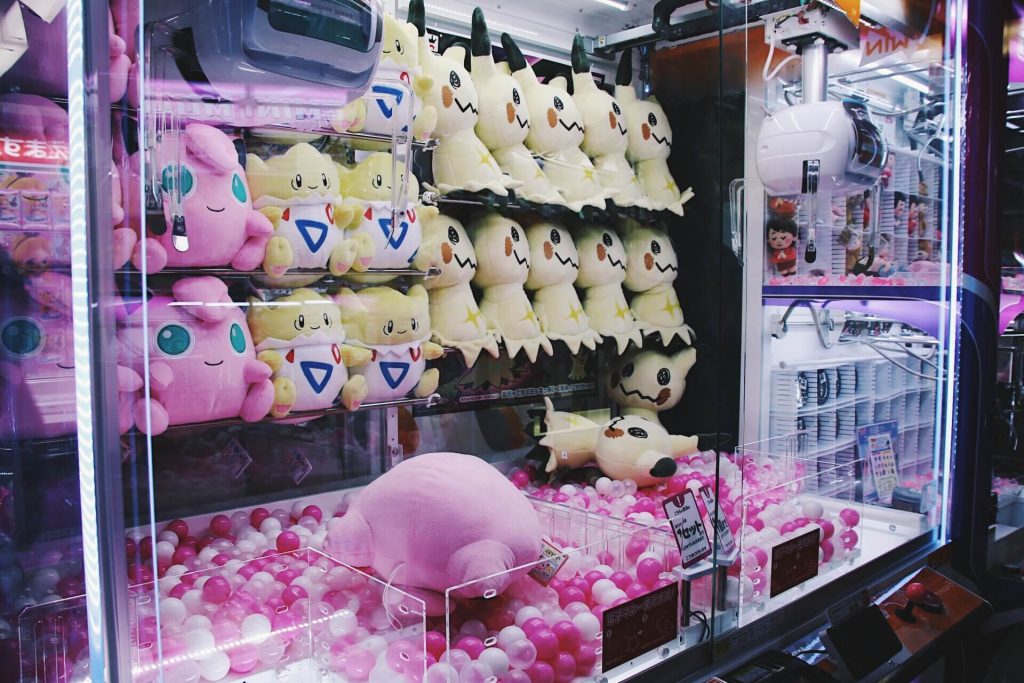
Get Your Free Japan Guide
Subscribe to our monthly newsletter and receive my FREE downloadable Japan Travel Guide . Including everything you need to know before visiting Japan!
You can unsubscribe anytime. For more details, review our Privacy Policy . (We promise not to spam!)
Almost there!
Thank you! Make sure to go to your inbox to confirm your newsletter subscription for your free Japan travel guide.
Day 2: Ikebukuro and Meiji Shrine
On day two of this six day Tokyo itinerary, we are going to explore Ikebukuro in the morning and head back towards Harajuku in the afternoon to visit Meiji Shrine. Ikebukuro is another one of Tokyo’s main city centres and is filled with shops and restaurants. It is also home to the Sunshine City Shopping centre, in which the Pokemon Mega Store is located. The Meiji Shrine, our afternoon plan, is located next to Harajuku. It is one of Japan’s most popular shrines to visit. Dedicated to Emperor Meiji and his wife, the Meiji Shrine stands beautifully and peacefully in the busy heart of Tokyo.
As we planned to spend the morning in Ikebukuro, we took the metro there in the morning. You can find a Family Mart right outside of the hotel in Shinjuku, where you can find some cheap but tasty breakfast items. We picked up a couple of bits there every morning as breakfast. This is much cheaper than having breakfast in your hotel and supermarket food is surprisingly tasty in Japan! Supermarkets like 7Eleven , Lawsons and Family Mart are a great way to save money while in Tokyo and not compromise on taste.

Explore Ikebukuro
Once we got to Ikebukuro station, we started exploring! This upcoming part of Tokyo is also known as Sunshine City. Shopping and entertainment are at heart and it really gives you that Tokyo-vibe you experienced in Shibuya on day one. Some shops you should definitely check out when in Ikebukuro:
- Bic Camera Ikebukur o (Electronics and tech) Opening hours: Mon-Sun 10 AM – 10 PM
- Loft (Cool household items and stationary) Opening hours: Mon-Sat 10 AM – 9 PM, Sun 10 AM – 8 PM
- Sun Drug (Japanese drugstore and cosmetics) Opening hours: Mon-Sun 10 AM – 10:45 PM
- Sunshine City Shopping Centre (Shopping centre filled with cool shops and restaurants) Opening hours: Shops open Mon-Sun 10 AM – 8 PM, restaurants are open Mon-Sun 11 AM – 10 PM
Visit Japan’s biggest Pokemon Centre
One of the main reasons we are spending the morning in Ikebukuro is the Pokemon Mega Store. This is the biggest Pokemon Centre in Japan! Once we arrived at Sunshine City shopping mall, we made our way to the second floor. This is where the Pokemon Mega Store is located. An absolute must-see for every fan of the gaming franchise!
Another fun thing to try when at the Pokemon Centre is to play the arcade game Ga-Olé . This arcade game that can be found at every Pokemon Centre and in a few arcades across Japan. In the game, you battle and catch Pokemon. Just like the regular Pokemon games. But if you do catch one, you get a physical cartridge with that exact Pokemon printed on it. You can then use that same cartridge to battle other Pokemon in the game. We had a lot of fun playing it! Especially because we visited the Pokemon Centre in Kyoto and Osaka, we were able to use the Pokemon we caught in our battles there.
TOKYO TIP: Make sure to walk to the back of the Pokemon Centre to find a wall filled with all the Pokemon in the franchise. A lot of people miss it because it is hidden a the back of the shop, but it’s a great photo opportunity.

You can find one of my favourite Japanese restaurant chains inside the Sunshine City shopping mall: CoCo Ichibanya . Obviously, Japanese cuisine has some of the most delicious dishes including sushi and ramen. But what most people don’t realise is that Japan does the best curries. CoCo Ichibanya is a great place to try them! (We totally didn’t end up eating at CoCo Curry four times during our first trip to Japan because we loved it so much…)
Ordering is super easy. You pick the amount of rice you’d like, the level of spice (personally, I’m very happy with a level 1) and add toppings. CoCo Curry only has one franchise store in Europe (London), and we went there just to relive the experience after returning from Japan. It’s just SO good!
CoCo Curry Ichibanya Opening Hours: Mon-Sun 11 AM – 10 PM

Meiji Shrine
In the afternoon, we head back to Harajuku station. You might have seen the iconic torii gate entrance of the Meiji Shrine on day one when visiting Harajuku. But today, it’s time to actually visit the famous shrine. From Harajuku Station, walking to the entrance only takes a couple of minutes.

This iconic shrine is dedicated to the spirits of Emperor Meiji and his wife. It was completed in 1920, eight years after his passing. After entering the temple grounds through the beautiful torii gate, you can enjoy a very serene walk through a beautiful forest which is made out of more than 100,000 trees. You almost forget you’re in one of the world’s busiest metropolitan cities! It’s so peaceful and quiet.
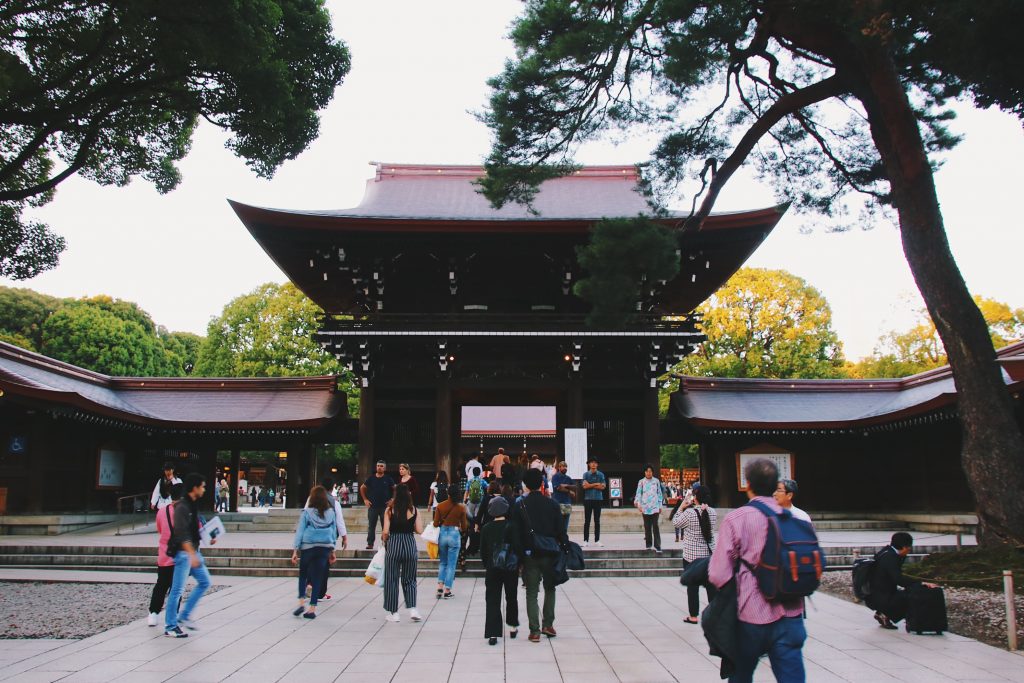
The shrine is open to visitors from dawn till dusk – make sure to check what time they close when you want to visit. We had to rush our visit a little because we arrived a bit later than planned! Especially during the darker months (October-March), the shrine closes a bit earlier.

Arriving at the main building of the Meiji Shrine, you might see tons of wooden plaques hung close together. These are called Ema plaques and are part of a special Shinto activity. You can buy one for ¥500, write down a wish or prayer and hang it with the others. The profits are used to maintain the shrine and its gardens.

After the Meiji Shrine closes, you can head back to Harajuku and grab some dinner. There are some great sushi and ramen places in Harajuku that are worth checking out. If you wanna avoid the pricy, more touristy places, it’s better to have a look in some of the quieter backstreets.
If you still have enough energy, Karaoke is the perfect way to end day two of this Tokyo itinerary. In the Harajuku area, there are many karaoke bars to choose from and it’s a really, really fun experience! You book a room for you and your travel company, order some drinks and snacks and sing your heart out. We were very lucky to have met up with a few friends that speak fluent Japanese, which made booking a karaoke room much easier.
Day 3: Asakusa and Akihabara
Day three of this six day Tokyo itinerary starts with a more traditional side of Tokyo. The Asakusa district lays in the north-east side of central Tokyo and is home to the popular Sensoji Temple. In the afternoon, we amplified Tokyo’s great contrast of the old and the new by visiting Akihabara (also known as Electric Town ). As a polar opposite of Asakusa, Akihabara is filled with skyscrapers and shops selling the latest electronics and merch to anime fans.
In the morning, we made our way to Asakusa to visit Sensoji Temple. From Asakusa station, you can walk to Sensoji Temple within 10-15 minutes. There are some little shops and eateries on the way to the shrine. If you haven’t had your breakfast yet, this is a great place to quickly grab something to eat.

Visit Sensoji Temple
Sensoji Temple (also known as Asakusa Kannon ) is the oldest Buddhist temple in the whole of Tokyo. It dates back to the year 645. Legend says that the temple has been build for the goddess of mercy, Kannon.
More than 30 million people visit the temple every year, so you can expect it to be a little busy. The temple grounds are gorgeous, you can easily enjoy walking around here for hours. Smaller temples and places to pray are spread across the map. Because the temple is popular by both tourists and locals, it’s recommended to not go on a weekend day ( like we did… ). The earlier you go, the quieter it will be. You can also visit the temple in the evening, that’s another way to avoid the huge crowds.
Opening hours: The temple grounds are open 24/7, whereas the main hall is open from 6 AM till 5 PM (from 6:30 AM in October to March). The temple is open every day of the year. Entree fee: It’s free to visit Sensoji Temple

One thing we tried was O-mikuji ( おみくじ). It’s a form of Japanese fortune telling. You can get any kind of fortune from “very fortunate” to “a great curse”. I bet you can guess how lucky I got….
Here is how it works. You pay ¥100 and shake the wooden box filled with sticks. After shaking, you remove one of the sticks. This stick has a number written on it. You then match the number with the drawers and receive your fortune. Even though I got the great curse, I’m still smiling 😉
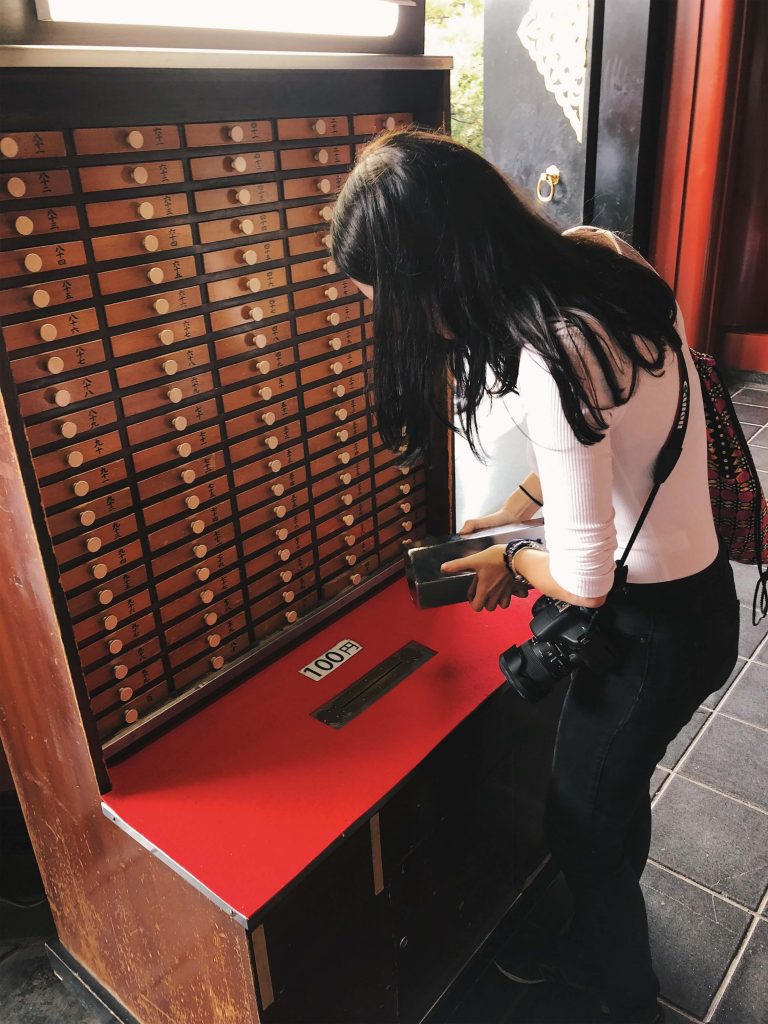
If you also receive a bad fortune, you can follow the tradition of tying the paper to one of the poles provided or a tree. The idea behind it is that the bad luck will stick to the poles or the tree instead of the person who drew it. Fingers crossed that actually worked. (Update: looking back now, I think the curse has followed me nonetheless!).
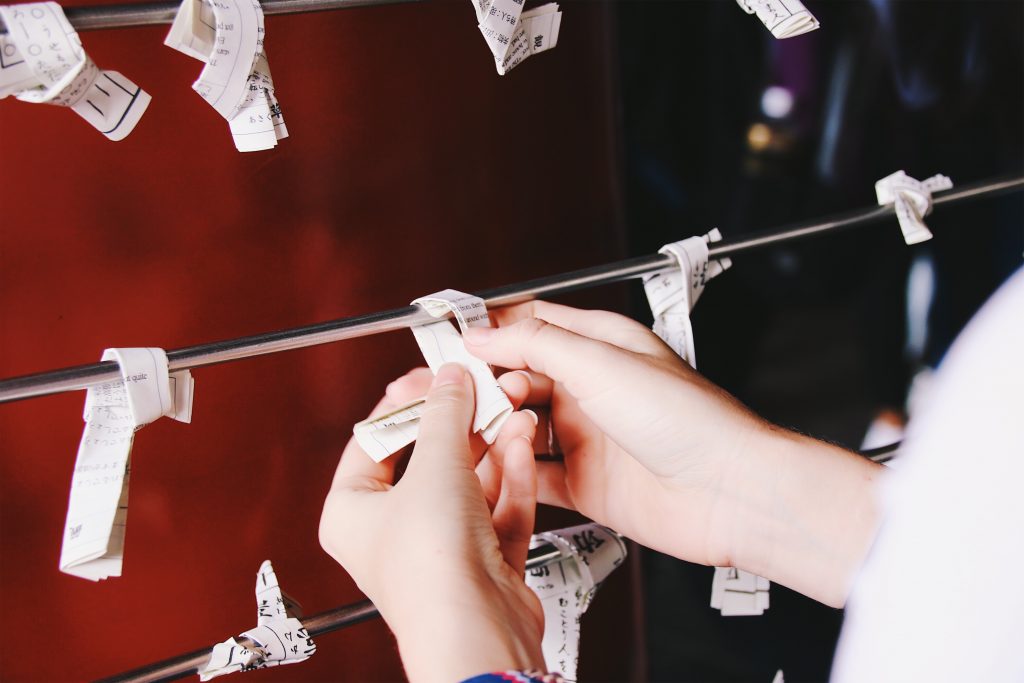
After visiting the temple, you can walk through Nakamise Street . This 200-meter long shopping street is located right outside Sensoji Temple. It’s the perfect place to find some souvenirs and snacks.

In the afternoon, it’s time to travel forward in time and visit Akihabara. Akihabara is also known as Electric Town . In this district, you can find everything electronic, anime and video game-related. It’s turned into a special kind of heaven for Japan’s diehard fans of manga, anime and other pop culture references – and man, it’s such a cool place to explore!
TIP: If possible, try to visit Akihabara on a Sunday. They close down the street for cars, which allows you to walk across the entire street and… you know… take some pictures for the gram 😉

Shopping and playing games in Akihabara
Akihabara turned into one of my favourite places in Tokyo. It’s basically video-game, electronics, and anime heaven. Even though I’m not big on anime, I love a good video game and the vibes reminded me of all the games I played and shows I watched as a kid. Akihabara has everything: game shops, electronic shops, anime figures and manga shops. Even if you’re not planning on spending any money, it’s fun to look at all the crazy stuff they sell. There are endless lists of things I could recommend in Akihabara, but here are a few things you should definitely check out:
- Retro game shopping in Retro Game Camp (and other retro game shops – for a full list, check out my full retro game shopping guide )
- Play in one of the many arcades
- Visit a Maid Cafe
- Shop in Yodobashi (basically a mall that sells EVERYTHING!)
- Shop in Don Quijote . There are many of these shops all across Japan, but the one in Akihabara is LARGE! A perfect place to find some affordable and weird souvenirs for friends and family.
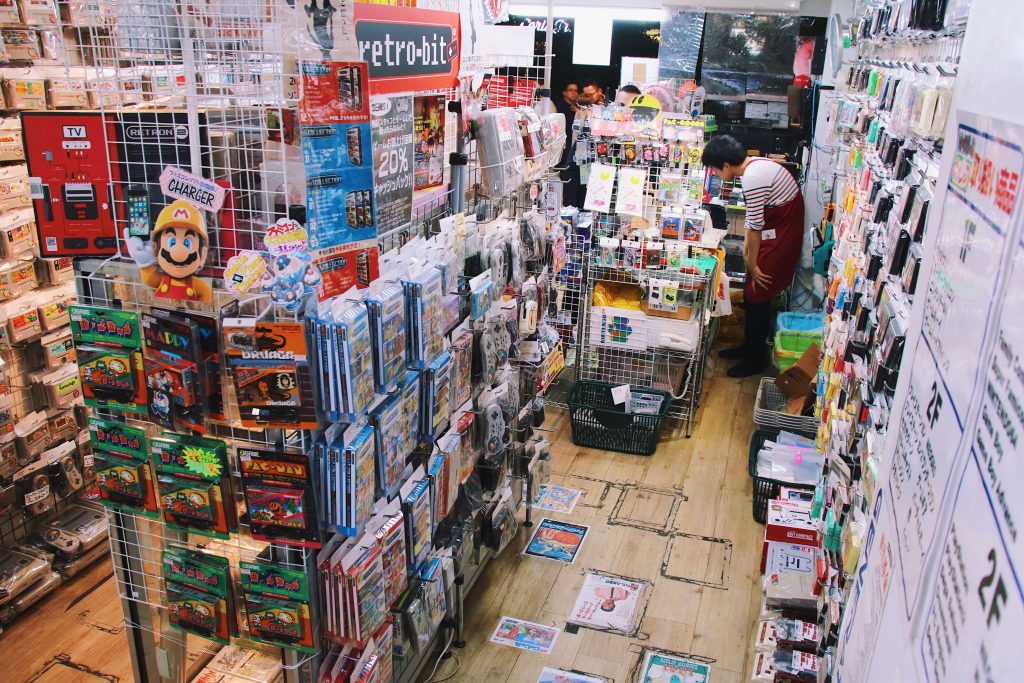
Akihabara lights up at night – so it’s worth staying around until the evening. Some of the main restaurants in this part of Tokyo can get quite expensive, so we ended up grabbing some cheap ramen near the train station. Akihabara also has a few crepe shops, and they’re just as tasty as the ones in Harajuku. If you missed out on trying one on the first day in Tokyo, I’d highly recommend giving it a go today. Also, make sure to try some of the arcades in Akihabara while you’re there in the evening. There are some great games to play!
Day 4: Ginza and Koto City
On the fourth day in Tokyo, we travelled down to Ginza and Koto City. It’s a little trip from Shinjuku, but because we’ve planned a full day on this side of the city, it’s more than worth it. On this day, we also plan on visiting the Teamlab Planets art exhibition and the Gundam Base.
Ginza is another famous shopping and entertainment hub in Tokyo. It’s on the expensive side, hosting upmarket brands and restaurants. Nevertheless, it’s a great place to wander around and ( window )shop. Ginza is quite upmarket and it’s not the cheapest place to shop. One square meter of land is worth over 10 million Japanese yen, making Ginza the most expensive part of Tokyo! Here are a few things to do and check out while in Ginza:
- Visit the Alice in Labyrinth restaurant. Themed restaurants and cafes are very popular in Japan. Many can be found all across Tokyo. This one, in particular, is very popular because of its amazing interior and dishes that are inspired by Alice in Wonderland.
- Shop until you drop in Chuo-dori, the most exclusive shopping paradise in Tokyo. (Or… window shop and save the oney for another trip to Japan).
- Watch a play in Kabukiza . There are daily shows where you can enjoy the traditional Japanese theatre.
- Escape the busy shopping street and relax in the Hamarikyu Gardens.

After having spent our morning in Ginza, we head over to Koto City. Its name translates to “ River East “. It may not be as popular as Shinjuku, Ginza or Shibuya, but that doesn’t mean it’s not worth a place on your itinerary! Let me show you why.
Visit Teamlab Planets/Borderless
Teamlab Planets or Teamlab Borderless is an art exhibition where you are part of the art – sounds pretty cool right? You move through water, climb a waterfall, get lost in an infinity room and bounce off massive bouncy balls.

I was really glad that nobody rushes us through the exhibition. Because you are given a specific time to enter the building, I expected it to be a timed experience. But luckily, we were able to walk through everything at our own pace. In total, we spent about 2 hours here.
Visit the Gundam Base
Next up: The Gundam Base! Gundam is an anime series that I was pretty unfamiliar with. Richard loved it as a kid, which is why we made sure to stop by. Even though I had never seen the show before, seeing the life-sized Gundam made it more than worth it.
TIP: Every hour, on the hour, the life-sized Gundam outside the shopping centre moves!

Inside the mall (hidden behind the massive robot), you can find the Gundam Base. Here you can pretty much any Gundam you want. Richard ended up buying four Gundams to put together after we arrived back home. It’s really cool to see how much creativity people put into these figures.

After visiting the Gundam Base, you can have a wander through the rest of the mall. There are some great shops located there – like the Hello Kitty Store and tons of cute fashion shops.

Day 5: Shinjuku, Minato, and Roppongi
On our fifth day in Tokyo, we take some time to properly explore Shinjuku. Even though we’ve obviously stayed in this part of Tokyo, we’ve not taken the time to see some of the main highlights of this exciting part of the city. In the afternoon, we move over to Minato and Roppongi – two more lively parts of Tokyo (including Tokyo Tower).
Home to the busiest train stations in the world, Shinjuku never sleeps. More than 2 million passengers use Shinjuku train station every single day. This Tokyo ward is home to many shops, offices and bars. From the skyscraper district, where you can find the Government Building, to Kabukicho – a popular part of Shinjuku for nightlife, nightclubs, love hotels and more…
Gyoen National Park
Even though Shinjuku is one of the busiest and most exciting parts of Tokyo, it also has a little green oasis where you can enjoy some peace and quiet. In this park, you can find a variety of French, English and Japanese gardens. As well as some beautiful pagodas, ponds, teahouses and little cafes where you can buy fresh ice cream and mochi. This park is a must visit when you are in Japan during cherry blossom season. But even in the other seasons, it’s a lovely little break from the business that is Tokyo.
Gyoen National Park opening times: 9 AM – 4:30 PM (Closed on Mondays) Entrance fee: 500 yen

You may have come across a few themes cafes/restaurants by now. Japan is FULL of them. Name a theme and there is probably some type of eatery out there that fits your wishes. Personally, I would recommend avoiding any animal cafes in Japan because there is a lot of evidence that shows these are very cruel to the animals that live there. Instead, why not try one of the other crazy themed restaurants. Need a recommendation? Check out the Robot Restaurant in Shinjuku .
This overload to your senses is one of the most unique Japanese experiences in this itinerary. It’s crazy! But really fun! While enjoying your meal, you can enjoy humans take the stage with… robots. Have you ever heard anything more anime? Do make sure you have a reservation if you want to visit the Robot Restaurants, it’s a very popular one!
In the Skyscraper District of Shinjuku, you can find the Metropolitan Government Building. This 243 meter tall building with two large towers is a popular tourist attraction due to its observation decks. At 202 meters high, you can enjoy a stunning view of the city for FREE. On a clear day, you can even see Mount Fuji from here!

Visit Zojoji Temple
Because there’s no station near Tokyo Tower, I’d recommend heading to Hamamatsuchō Station and walk from there. The walk to Tokyo Tower from Hamamatsuchō station has some pretty sights. My favourite has to be the Zojoji Temple. It feels so serene and peaceful at the temple and we really enjoyed feeling the calm after such a busy week in Japan’s busiest city.
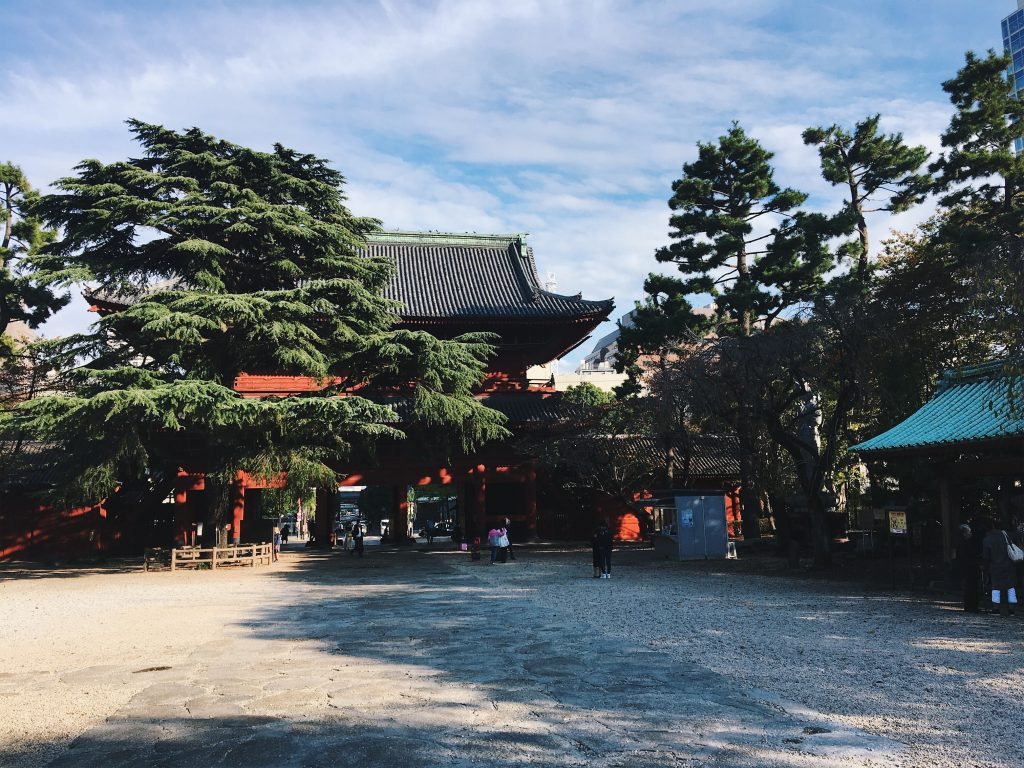
Afterwards, head towards Tokyo Tower. This iconic piece of Tokyo stands 333 meters tall, making it the second tallest structure of Japan. The Tokyo Skytree takes the top spot on that list 😉 The Tokyo Tower was inspired by the Eifel Tower, but is 13 meters taller.
You can visit the main deck at 150 meters for a small fee. This can be reached with an elevator or the stairs – both are paid. You can go even higher to the top deck at 250 meters. On a clear day, you can even catch a glimpse of Mount Fuji from there! It is, quite expensive though (in my opinion). You can find up-do-date ticket prices here . Personally, I think you can get a better view of the Tokyo Skytree. (That way, you can also see the iconic Tokyo Tower in your view!).
If you want to avoid paying the fee, I’d still recommend going inside. You can explore the first few levels for free. There are shops and restaurants, including the One Piece Tower indoor amusement park and One Piece shop. Perfect for those who enjoy the anime!

Roppongi is the most high-class district of Tokyo. With a vibrant nightlife scene and some of the best art museums of the city, it’s a pretty great spot to add to your itinerary. The name of this Tokyo ward literally translated to “six trees”.
Roppongi Art Triangle
As well as being a business hub, Roppongi is known for its art museums. Three of the best art museums in Tokyo are located within walking distance from each other in the Roppongi Art Triangle.
- Mori Art Museum
- The National Art Museum
- Suntory Museum of Art
The luxury of Roppongi doesn’t end at its art scene. You can also find one of the most stunning views across Tokyo in Roppongi Hills. The open-air observation deck on the Mori Tower allows you to see Tokyo from above (with the iconic Tokyo Tower right in the middle).
Go all the way to the top of the Mori Tower to find the “Tokyo City View”. For an admission of 1800 yen, you can enjoy the view from even higher.

Back to Shinjuku
And we end our 5th day in Tokyo back in Shinjuku. Only a few minutes from the train station, you can find Omoide Yokocho (also known as Memory Lane). Make sure to check this before going back to your hotel.
Omoide Yokocho is a narrow but extremely atmospheric alleyway in Shinjuku. Decorated with lanterns and seasonal decorations (cherry blossoms, autumn leaves…), it really shows the contrast between old and new in Tokyo. Especially with the big neon advertising boards luring in the background.
You can find many traditional eateries on this street too. Small yakitori stands where smoke is being blown into the street from their grills. Sit down, enjoy some freshly grilled chicken skewers and a cup of delicious sake. What a way to end this day!
Omoide Yokocho is open every day from 5PM till midnight.

Day 6: Day Trip From Tokyo
Even though you could easily spend a month in Tokyo and still find new places, taking a day trip from Tokyo is something I’d highly recommend. It’s a way to see more of the country and experience Japanese culture in a new way. Here are four options for day trips when spending six days in Tokyo.
Disney Sea Or Disneyland Tokyo
Make sure to buy tickets for Disney Sea or Disneyland Tokyo before you leave, this way you’ll be able to save some money. It also avoids any waiting time in the queues when arriving at the parks. Just like any other Disney park, Disney Sea is filled with rides, shops and amazing decor. Our favourite rides were:
- Journey to the centre of the Earth
- Raging Spirits
- Indiana Jones Adventure: Temple of the Skull
- Sindbad’s Storybook Voyage

Unfortunately, the day we visited Disney Sea was a rainy day! Make sure to keep an eye on when the shows and parades happen the day you’re visiting. You can find this in the daily schedule you receive when entering the park. Japan knows how to do their shows and the Fantasmic! end show was absolutely amazing – totally made up for all the rain!
Day trip to Hakone
Hakone is one of the most popular day trips from Tokyo, because of its beautiful scenery. It takes about 1 to 1,5 hours to get to Hakone from Tokyo. Calming onsens (Japanese hot springs), one of the most beautiful views of Mount Fuji and the Hakone shrine that looks out over Lake Ashi. Visiting Hakone for the day makes for a little escape from all the Tokyo chaos. Here are a few things you should definitely do/see when in Hakone:
- Hakone Shrine: Possibly the most famous attraction in Hakone is Hakone Shrine (pictured below). This large torii gate stands on the banks of Lake Ashi. Especially after having spent a few days in the busy metropolitan city of Tokyo, taking some time to enjoy the serene atmosphere of this shrine is a perfect way to unwind.
- Visit an onsen: Known for its many onsens, Hakone is the place to visit one yourself. These hot springs are very popular in Japan – by both tourists and locals alike – and make for a unique experience. In more traditional onsens, you have to be completely naked and genders are separated. If that’s not your thing, check out Yunessun Onsen. Here, you can keep on your bathing suit and they don’t separate men and women.
- Owakudani (Boiling Valley) : If you want to see the remains of an erupted volcano, you can do that in Hakone. By taking up a gondola towards the mountain summit, you can walk around the volcanic zone. Even though it’s been over 3000 years since this volcano erupted, you can still see the smoke. You can also buy a black egg here, which has been boiled in naturally boiling water. Legend says it will prolong your life.
You can find more information about how to get to Hakone from Tokyo, how to get around the city and what other things you can do there in this article by Japan Rail.
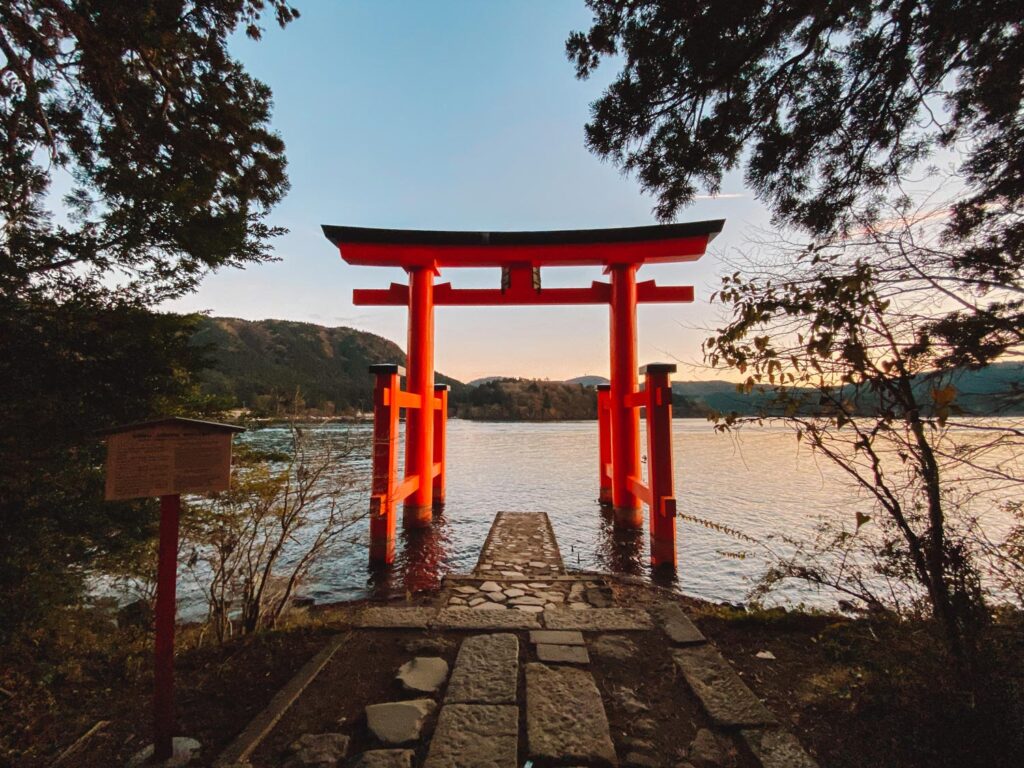
Day trip to Nikko
Another great option for a day trip from Tokyo is visiting Nikko. It takes about 2 hours to get there, but the beautiful scenery is more than worth it. With the Nikko Pass , you can save some money on your day trip to Nikko. This city is mainly known for its forests, waterfalls and nature hikes. If you want to visit Nikko for one day , make sure to add these to your to-do list:
- Rinnoji Temple: This UNESCO world heritage site was originally founded by the Buddhist monk. This monk brought Buddhism to the city in the 8th century.
- Toshogu Temple : This temple is most likely to be the most popular temple in Nikko. This resting place of Tokugawa Ieyasu is beautifully decorated and unlike any other temple in Japan.
- Shinkyo Bridge : A sacred bridge that acts as a gateway to the temples (pictures below). It’s an icon of Nikko.

Mount Fuji isn’t located too far from Tokyo, making this a great day trip when staying in Tokyo. Japan’s most famous and iconic volcano is often pictured when portraying Japan and turned into a must-see when you have enough time. This 3776 meter high volcano is also the tallest mountain in the whole of Japan. During the months of July- September, you can also choose to climb the mountain. But because this takes a good chunk of time, I would recommend booking a hotel in the vicinity.
If you’re not really the climbing kinda person (or you’re not visiting during the climbing season), you can still enjoy some of the great views of this stunning mountain. Because there are no direct trains to most of these viewing spots, I recommend booking a tour with a travel company . They will drive you there and make sure you get to see the best spots for photos and viewing. The advantage of booking a tour is that you don’t have to worry about finding the best spots yourself.

Tokyo Travel Tips
Now we’ve covered what to do when spending 6 days in Tokyo, let’s cover some tips on how to make your trip to Tokyo without any hassle. Please find some extra information about Tokyo, where to stay, how to get there and some cultural differences to keep in mind.
Where to stay in Tokyo?
Picking a hotel in Tokyo can seem a little daunting. The city is enormous, so where is the best place to stay? I’ve written a full guide on where to stay in Tokyo with my favourite hotels and areas.
We stayed in Shinjuku, right next to one of the metro stations. Shinjuku is a very exciting part of Tokyo – tons to do and it has a great nightlife scene. Because the metro was literally right outside the door, we could easily go to other parts of Tokyo without any hassle. The hotel we stayed in is called Hotel Sunroute Higashi Shinjuku.
During our time in Japan, we also stayed in Central Tokyo for a few nights. We stayed in the Belken Hotel Tokyo . The location is perfect, only a short walk from Tokyo Central Station and the room was very affordable. The only downside was that the room was incredibly small. Most hotel rooms in Japan aren’t huge, but the hotel in Shinjuku was a lot bigger and more comfortable – which makes sense when looking at the price difference. If you want to travel on a budget, I’d recommend the Belken Hotel Tokyo . The beds were perfectly fine, and so was the bathroom (even though it was on the small side). Plus, you probably won’t spend a lot of time in the hotel anyway.
How to get to Tokyo?
If you are flying to Tokyo, you most likely will arrive at either Narita Airport or Haneda Airport . Either airports have relatively easy access to the city centre, even though Haneda is located much closer to the centre.
How to get to Tokyo from Haneda airport?
Haneda Airport is located only 15 kilometres from the city centre. To get to Tokyo, you can either take the train, bus or get a taxi. The cheapest and fastest way is by taking the train. Taxis might be a little faster but are a lot more expensive.
After arriving, I’d recommend buying a Suica Card at the airport’s train station. This card is an electronic travel pass which can be topped up at any station in Japan. After buying it and putting some money on it, you are good to go!
The best way to get to Tokyo from Haneda Airport is by taking the Keikyu Line to Shinagawa Station, then change to the Yamanote Line to Tokyo Central. This takes about 30 minutes in total. You can check out this article that explains how to get to Tokyo from Haneda Airport via different routes.
If your flight arrives at Narita Airport, it’ll take a little longer to get to the city. This airport is located 60 kilometres away from Tokyo. Here are the two easiest ways to get to Tokyo from the airport:
- Use the JR Narita Express to get from the airport to Tokyo Station. This journey will cost 3000 yen and takes one hour. This journey is covered by the JR Pass , in case you are planning to use it for your time in Japan. Otherwise, I’d recommend getting a Suica Card at the train station or buying a single ticket. If you are unsure what the JR Pass entails, please check out my Japan Rail Pass Guide .
- On a budget and not using the JR pass? You can use the JR Sobu Line to get to Tokyo too. This will cost 1340 yen and will take an hour and a half.
How to get around Tokyo?
Tokyo is a large city and because this 6 day itinerary covers more than one district, you are going to use the public transport system available. It’s impossible to explore the city entirely on foot! Luckily, Tokyo has an amazing metro system that is very easy to use – even if you don’t speak Japanese.
It’s a good idea to get a Suica card . This electronic travel pass allows you to scan in and out of any train station in Japan and automatically takes the correct fee. You can top them up at any train station. This way, you save a lot of time and hassle having to buy individual tickets. You also save money, as the card takes the exact fee from your card every time you tap out.

Culture tips for Tokyo
Japanese culture and customs may differ quite a bit from what you’re used to at home. In order to avoid looking like a fool (or accidentally offending anybody), here are a few tips to keep in mind when in Tokyo.
- Don’t walk and eat at the same time: this is frowned upon in Japan. If you buy a snack, either stand still while eating or find a place to sit.
- Don’t eat on public transport (unless you’re on the Shinkansen): Eating on the metro or on the bus is also something that’s not done in Japan. The only exception is when you are travelling by bullet train.
- Don’t make phone calls on public transport: Another no-go is making phone calls while travelling on public transport. As many locals use this time to relax, think or sleep (especially on longer journeys), it’s very rude to be loud.
- Don’t tip at restaurants: While tipping is seen as a nice gesture in most other countries, it’s not something you should do in Japan. It’s actually seen as an insult – “You must not make enough money, so here is some extra”.
- Don’t play with your chopsticks: This is seen as bad table etiquette. Also, stay clear from putting your chopsticks up straight in your bowl of rice – in Japanese culture, this is only done at funerals.
- Do carry a plastic bag for trash: Even though Japanese streets are among the cleanest I have ever seen, there are NO trashcans anywhere. Most Japanese people keep their trash with them and throw it away at home. Make sure to pop a little plastic bag in your backpack to store trash if needed.

Tokyo Travel Essentials
Pocket wifi.
One of the best tips for Japan that I can give you is to get pocket wifi! This little device gives you access to the internet literally everywhere – it is an absolute lifesaver on a trip like this. We got ours from Japan Wireless (for 16 full days, we only paid £60).
Make sure to book your Japan Pocket Wifi before your trip. You can pick it up from the airport after arriving, and you drop it off at the airport again once you leave the country.
Plug adaptor
For those travelling from the UK, mainland Europe or North America, you will need an adaptor plug to charge any of your electronic devices. Personally, I use the one from Iblockcube. You can use this adapter wherever you go and use any type of plug (even comes with 4 USB hubs). I’d highly recommend getting one of these. Especially when travelling to Tokyo and you want to charge your camera, phone and pocket WiFi, you will need all the hubs you can get!
Suica Travel Card
Getting around Tokyo on public transport is a lot easier than I expected. All you need to do is get a Suica Card and you’re good to go. This card can be bought and topped up at any train station. Once bought, you tap in and out of stations when using the metro, train or tram. It automatically takes the correct amount of yen off. Super easy and it saves you so much time and money. If you’re travelling to other cities like Kyoto and Osaka, you might want to consider getting a Japan Rail Pass in order to save some money.
You can buy a Suica Card at the train station at the airport after arriving in Japan. Buying one is super easy and can be done at one of the ticket machines. There is an “ English ” button to guide you through the process without any hassle.
Even though Japan is known to be a very cash-based society, having an international currency card is a must. Rather than a credit card, you can top up a currency card whenever you want to. If you lose it, you don’t have to worry about it being linked to your bank account. I would recommend getting a card with Monzo (if you are a UK resident) or Transferwise. They use the daily exchange rate when taking out yen or paying in shops – meaning you get the best currency rates wherever you are.
Conclusion: 6 Days in Tokyo Itinerary
That concludes my 6 day Tokyo itinerary. I cannot wait to return to the city and explore it some more – I have the feeling you could spend weeks there and still find new places!

Nele (Nay-la) graduated from Manchester Metropolitan University with an English and Creative Writing Degree and has lived in the UK for nearly 10 years. She has had an interest in Japan and its culture for as long as she can remember. Since her first trip in 2018 surpassed all expectations, she has continued to return to Japan to explore more of all it has got to offer. You can read her full story here .
View all posts
33 thoughts on “6 Day Tokyo Itinerary: The Tokyo Guide For First Time Visitors”
If I didn’t want to go to toyko before then I definitely do now! Everything looks amazing, and Im not going to lie the Pokémon mega store sounds like a dream in itself. Id literally end up buying everything x
Kayleigh zara 🥀 http://www.kayleighzaraa.com
Thank you Kayleigh, such a sweet comment! So glad you enjoyed the post 🙂 Haha, I definitely had to keep an eye on my purse when going to the Pokemon store – so much cute plushies!!
What an amazing post! So detailed and your photos are incredible! I’d loooooove to visit Tokyo one day.
Thank you Olivia, so glad you enjoyed the post. Hope you get to visit it one day, it’s such an amazing city <3
Japan is one of those places that is on my bucket list. I am fascinated by all the contrasts you can find in there – Tokyo is a perfect example. I have to admit crossing that road seems frightening! I always wonder when I think about visiting there whether it’s an overwhelming place. I loved reading this post and your pictures are amazing.
Thank you Madi! <3 Such a sweet comment 🙂 I really loved seeing the contrast in the city, from such old temples to the latest high-tech. Haha, I can see why you think it might be a bit scary - it's definitely super busy but when you cross it yourself, it doesn't feel as bad! I thought it felt really cool, actually ^^
Wish i had spent more time in Tokyo and hope to go back!
I hope so too, Roo! Miss it so much!
Oh my gosh this post is amazing! I love how detailed you’ve been and I have wanted to go to Tokyo for so long, there are definitely some places I’ve added to my list for Tokyo!
Love, Amie ❤ The Curvaceous Vegan
Thank you Amie, super glad you liked the post! If you need any help planning a trip to Japan, feel free to ask me anything! <3
Never noticed how bright and rich in colour Tokyo is till I read your post and saw all your pics! Looks like you’ve had an adventure-filled week! Also the pic of you sitting on the street with all that life around you is dope!
Akihabara is definitely a town I wanna visit as gaming was such a big deal in my childhood and it’d be nice to literally go to a place that’s heavily inspired. Since some of the biggest gaming consoles and PCs I played on were manufactured in Japan.
Johnny | Johnny’s Traventures https://johnnystraventures.com
Thank you Johnny, what a lovely comment to read! I’m so happy I was able to bring that across through my photos 🙂
Akihabara is THE place for you then, my friend! Such a cool part of Tokyo, especially if you like video games 🙂
The crepe looks good!
It was delicious!
You packed so much into your time! Your photos are amazing, and it sounds like you had an incredible time. I gotta say, all of that food looks delicious and has made me hungry haha. Cora | http://teapartyprincess.co.uk/
Hahaha, we tried to make the most of it! Thank you so much, it really was such a beautiful city to visit – I’d love to go back soon!
This is such a beautiful post, especially since Tokyo has been on my wishlist for the longest time and I am hoping to be there this Autumn. Your post will surely help me plan my days there. I love the pictures too
So glad you enjoyed the post! If you need any help with planning your Japan trip, feel free to message me 🙂
Love how detailed this itinerary is. Japan has to be my number one place I want to travel right now! Thanks for the well-rounded post!
Thank you for those kind words! Hope you get to visit Japan soon, it really is such an amazing country!
Loving this guide – Japan is next on my list. P.S that curry looks AMAZING. drooling.
IG: https://www.instagram.com/carrieproject/
Lovely detailed post Nele, we recently saw a lot of the same places on our trip, except Disney. We’ve just come back from our third Japan trip and miss it like crazy!
I am travelling with four kids….and have googled so many things about what to do in one week stay in Tokyo. Your detailed account is very helpful and very detailed. I am better prepared. Thanks again.
I really loved your detailed post about Tokyo. It was my daughter who provided me the link to it because I am really trying to convince my wife for a 7-day stay in that city. Since we will celebrate our 30th wedding anniversary next year in April, it might be the perfect timing to do so. We will surely need some more time to do the things you did and described so well. I cannot wait till the moment that the flight tickets come on sale! I think I will feel a kind of lost in this Tokyo world but I am sure I will be loving it.
One thing though: what is the best way to get from the closest airport to the city?
Hey! Thank you so much for your comment, super glad to hear you enjoyed the post. I think Tokyo would be fabulous for a 7-day stay with your wife. There is so much to do and see, and it really makes you appreciate the culture in Japan.
As for your question, I’d recommend flying to Haneda airport because it’s located close to the city. From Haneda, it’s really easy to take public transport (like the train or tram) and it takes you to the centre of Tokyo in about 30-40 minutes. Alternatively, you can take a taxi from there (it’ll just be a bit more expensive) – Hope that helps! 🙂
Hi. Very useful post. I’m planning on taking my two teenage kids to Tokyo soon. I’m sorry to ask the obvious question, but how much did the week there cost you, a rough ball-park figure, of course. Thanks.
Thanks so much James, really glad you enjoyed the post! I have a full budget breakdown of our trip here: https://thenavigatio.com/is-japan-expensive/ – hope that helps ^^
Wow that’s a great list ,comprehensive and so useful
Tokyo is one of my favourite places in the world! I just loved the contrast between the history and temples to the modern bustle and manga culture. Can’t believe I totally missed Ginza and Koto City, gives me a reason to go back I guess! My favourite area was Akihabara haha
Missing Japan so much after reading this article! I thoroughly enjoyed Tokyo during my trip a few years ago but didn’t manage to go to Nikko, which sounds really interesting. Also, the culture tips section is very useful, well done!
I have been twice to Tokyo and there are still a few things from your list I didn’t do! Thanks to you I know what to do next time I will go there!
I’m one of the few people in the world that has never really been interesting in traveling to Japan, but in recent years I’m getting more and more curious. I suppose Tokyo would be the first place I would visit once I go so this is super helpful!
Im so sad coz i was meant to be flying there in May! thanks for this article, im saving it for when i reschedule!
Leave a Comment Cancel reply
This site uses Akismet to reduce spam. Learn how your comment data is processed .
Must-Read Articles

50+ Best Things To Do In Japan

Is The Japan Rail Pass Worth it?

The Perfect Three Week Japan Itinerary
Japan Travel Tips Group

The Japan Travel Newsletter
Sign up to get inspired! Receive insider tips, special discounts and more to plan your perfect Japan trip.
You have successfully joined our subscriber list.
japan travel Blog
Tokyo Kyoto Osaka Hiroshima Hakone Kobe Nikko Nara Kyushu All Japan Content
Plan Your Trip
Best Things To Do Japan Rail Pass 2 Week Itinerary 3 Week Itinerary Accommodation Japanese Phrases
About The Navigatio Work With Us
- How to Use Points for Free Flights
- The Best Carry-On Luggage
- The Ultimate Guide to Traveling Like a Pro
- My Favorite Travel Credit Cards
- lake louise
- new orleans
- new york city
- palm springs
- packing lists
- product reviews
- How to Use Vitamin C Serum
- Easy Step-by-Step Skincare Routine
- Drunk Elephant: Best & Worst Products
- Fitness & Wellness
- How I Edit My Photos for Instagram
- Furniture My Interior Designer Loves
- Best Strapless Bras
- blogging & business
- Amazon Finds
- Hotel Lobby Candle
- Shop My Faves
- Promo Codes and Discounts
- Shop My Instagram

Tokyo Itinerary: The Perfect 5-Day Trip

Tokyo is, without question, one of the most unique cities in the world—and it’s a place that every traveler should experience at least once in their lives. However, planning your trip can seem overwhelming, particularly for people who are visiting Japan for the first time.
My Tokyo itinerary is the perfect schedule to follow if you’re looking to get a taste of everything that makes the city so special: incredible food, rich history, and wildly modern culture.
Whether you have three days in Tokyo or five full days to explore, this itinerary can work for just about any trip length—it really just depends on your preferred pace.
– Day 1: Tsukiji Fish Market & exploring Akihabara
– Day 2: Temples and the famed “kitchen street”
– Day 3: Shibuya Crossing & Harajuku girls
– Day 4: Shopping in hip Omotesando, Cat Street, and Robot Restaurant
– Day 5: Imperial Palace & the city’s best ramen
Before we dive in to the full detailed Tokyo itinerary, a few important things to note are below.
When to Visit Tokyo
Truth be told, there’s no bad time to visit Tokyo. It’s a destination that thrives year-round, and has different selling points for each season.
March – May: Spring is, in my opinion, the best time to visit Tokyo. You’ll be treated to mild temperatures ranging from 48°F to 64°F, gorgeous sunny days, and (if you plan accordingly) you can even experience the blooming of Tokyo’s famed cherry blossoms, which occurs in early Spring.
The timing is hard to estimate since it varies from year to year, but many websites (like this one ) have accurate predictions that can help with your planning. It’s worth noting that cherry blossom season is extremely popular, and thus, rates for flights and hotels will be somewhat inflated.

Photo via Neophoto
The same goes for “Golden Week,” which is Japan’s annual celebration of imperial succession. A series of four bank holidays from the end of April to the beginning of May make this an extra busy time to visit, as Japanese people get this time off.
June – August: This time of year is peak season and can be particularly hot and humid with temperatures ranging from 71°F to 80°F. June and July are also the rainiest months of the year, so make sure you have a look at what you want to do during your visit and plan accordingly.

Photo via my amazingly talented friend @ofleatherandlace
October – December : The fall/early winter is a great time to visit—temperatures this time of year range from around 62°F in October to 45°F in December. If you go in late November, try and plan your trip around the fall foliage, when the entire city is covered in vibrant, autumnal leaves.
Jan/Feb: As long as you don’t mind dressing warm, January and February are a fine time to go to Tokyo. Temperatures are around 40°F —Tokyo’s winter certainly doesn’t compare to winters in Europe .
How to Get Around Tokyo
Tokyo is notorious for its exorbitantly expensive taxis—they even put New York City and London to shame. Ubers are equally (if not more) pricey, but they’re a safer bet if you’re nervous about being able to communicate with a taxi driver.
For the most part, though, the metro is your best option to get from Point A to Point B. Unlimited multi-day passes are around 600 yen ($5.50) per day, or if you prefer paying for each ride individually, a ticket is between 170 – 310 yen.
The Best Way to Get From the Airport to Your Hotel in Tokyo
You can take the metro from both Tokyo airports ( Narita and Haneda ) into the city, but after exhaustive research, I found that the “ Airport Limo Bus ” was a better option if you’d rather not worry about navigating trains after a long flight.
You can locate the limousine bus service on the first floor of either Terminal 1 or 2 of both Narita and Haneda International Airport. Tickets can be purchased upon arrival after you’ve collected your bags, and just before you exit.
Look for the “Airport Limo Bus” kiosk, tell the ticket agent where your hotel is, and they’ll direct you to the appropriate bus.

Image via Go Tokyo
Where to Stay in Tokyo
If you’re only planning on having three to five days in Tokyo, it’s crucial to choose a central location so that you can make the most of your time.
I’ve included my recommendations for the best areas to stay, in addition to the best hotels in Tokyo—whether you’re doing Japan on a budget or looking to splurge.
Central Business District: This neighborhood is close to all of Tokyo’s major areas and nearby Tokyo Station offers easy access to the rest of Japan.
- Shangri-La Hotel Tokyo
- The Tokyo Station Hotel
- Budget-friendly choice: Mitsui Garden Hotel Kyobashi (my parents stayed here and would highly recommend it)

The view from the Shangri-La, which is where I’ve stayed twice.
Shibuya: Popular with young people for the many nightlife options and home to two of Tokyo’s busiest railway stations, this area is a big shopping district, known as one of Japan’s fashion centers.
- Cerulean Tower Tokyu Hotel
- Hotel Allamanda Aoyama Tokyo
- Trunk (HOTEL) (I stayed here and loved it; great location and very cool boutique vibes)
- Park Hyatt Tokyo
- Budget-friendly choice: Hotel Emit Shibuya
Ginza: Another great shopping area, this neighborhood has several upmarket boutiques and fancy cocktail and sushi bars.
- The Peninsula Tokyo
- Imperial Hotel Tokyo
- Conrad Tokyo
- Budget-friendly choice: Quintessa Hotel Tokyo Ginza
- Budget-friendly choice: Daiwa Roynet Hotel Ginza
Shinjuku / Harajuku: Vibrant street life, buzzing karaoke rooms, colorful signs and upscale hotels make these areas popular districts to stay in.
- Keio Plaza Hotel Tokyo
- Hotel Gracery Shinjuku
- Hyatt Regency Tokyo
- Budget-friendly choice: Daiwa Roynet Hotel Nishi-Shinjuku
Like most major metropolitan cities, hotel rooms are pricey and generally small in size, unless you splurge on a luxury property. I absolutely love the Shangri-La (I’ve stayed there twice) and I’ve heard incredible things about The Andaz and the Ritz , which are great options for those looking to cash in on credit card points .
However, since you’ll be spending most of your time running around the city, you might not feel that a swanky hotel is worthwhile.
The most important thing is making sure that you’re close to a metro station, so you’ll have flexibility in getting to/from your hotel each day.
Tokyo Private Tour Guide
Pro Tip: While everything in the below itinerary can definitely be done on your own, I always recommend hiring a guide for your first day in a major city. It helps you to get your bearings and takes the pressure off of everyone in terms of navigating—especially if you’re traveling as a family or doing this as a girl’s trip .
I found an amazing (and relatively inexpensive) private guide named Yukio through the website Voyagin , which I would highly recommend. who worked with me on a custom itinerary via email in the weeks leading up to my trip. I can’t recommend him enough—he was patient, had a fun sense of humor, and spoke great English.
The price for our full-day private tour (8 hours) was $47 per person for 6 people, not including tip. (That did not include a metro card, meals, or entrance fees to temples.)
You can also add on an optional hotel pick-up for $24, which we found was well worth it.
The Perfect Tokyo Itinerary for First-Timers
Pro tip: We booked a TON of experiences and activities through the website Voyagin , which had been recommended to me by a friend. I can’t say enough good things about it. Many things in Japan are difficult to book directly with vendors or restaurants due to language barriers, so using an English website made it so much easier. I also found that the prices for tours and activities were better than everywhere else I checked. It also provided a lot of good ideas that I hadn’t previously considered.
Day 1 – 2: Exploring Tsukiji, Akihabara and Asakusa
Start at Tsukiji , the largest fish market in the world. Since you’ll presumably be jet lagged, indulging in sushi and pork buns at 9am might not seem like the craziest idea.
Be sure to have cash on hand as most vendors don’t accept credit cards. Beyond sushi and buns, the best food items to try at Tsukiji are:
- Fat tuna bowl from Maguroya Kurogin
- Menchi Katsu from Yoshizawa Shoten
- Uniman (squid ink flavored bun, filled with sea urchin cream) from Hamada Shoten
- Crab fish cake stick from Nigiwai Honpo
- Strawberry mochi (pictured below)
If you’d rather have the experience as a guided tour (which we did) there are a number of them available here . I liked having a guide to help point out the best stalls—he also introduced us to a lot of unique Japanese foods that we probably would have passed by if we were on our own.

- The train lets out at Yodabashi Camera , which is the biggest electronics store in the world.
- Stop in to Super Potato , a video game store known for its collection of retro games.
- Lunch Suggestion: Henry’s Burger!

Yodabashi Camera is like a Best Buy on steroids.

Expect a ton of cool vintage finds at Super Potato.

Optional: Check out Kappabashi street, also known as “Kitchen Town,” which is home to the best knife shops in Tokyo—and arguably the world. (You’ll know you’re in the right spot when you see the giant chef statue on top of a low-rise building.) Here, you’ll find a seemingly infinite number of boutiques dedicated to cookware, kitchen tools, and restaurant supplies.
Keep an eye out for a shop called Kama-Asa —it’s been around since 1908, and the staffers are well-versed in helping customers narrow down the perfect knife to bring home or give as a gift. Ask to have yours engraved with something special.

Have dinner near your hotel, or in a lively area like Ginza, Shinjuku or Roppongi.
MORE: The Best Carry-On Luggage for Every Type of Traveler
Day 3 – 4: Shibuya Crossing, Harajuku and Omotesando
Take the train to Shibuya to see the famous “Shibuya Crossing.”

- Go to Starbucks on the second floor of Shibuya’s Q-Front building for a cool vantage point of the crossing.
- Magnet by Shibuya 109 is a shopping mall with an observation deck at the top floor for the perfect bird’s-eye view.
- One of the best views of not only the Shibuya Crossing but all of Tokyo can be found at Shibuya Sky , a 360° open-air observation deck at the rooftop of Shibuya Scramble Square, complete with hammocks.
Head to Harajuku (via the Ginza subway line)
- Explore the neighborhood – have a stroll through the colorful and vibrant streets while browsing traditional boutiques and and dessert shops.
- Optional: Check out the Kawaii Monster Cafe .

- “Kawaii” is something of a cultural phenomenon in Japan. The literal translation is “cute,” but “cute” hardly scratches the surface of what you’ll see here. I’m not really sure how to describe this place other than to say the restaurant is like an Alice in Wonderland acid trip.
- We made the mistake of going for lunch (the food is absolutely atrocious.) If I were to do it again, I would recommend just buying a ticket for admission , which is only $5. It’s definitely worth checking out for an hour.
- We got our tickets on Voyagin .
- Meiji-jingu Shrine – surrounded by forests and beautiful gardens, this shrine was dedicated to the first emperor of modern Japan. The entrance fee is about $4.

Photo via @eh_2095
- Cat Street – this street is the center of hip culture dedicated to youth fashion, connecting Tokyo’s biggest shopping districts, Harajuku and Shibuya.
Walk through Omotesando, Tokyo’s hip (and pricey) neighborhood that’s a haven for luxury shopping. Handbag lovers will lose their minds over Amore Vintage , a boutique that stocks vintage Chanel, rare Birkins, and a seemingly endless amount of Louis Vuitton.

The store is packed, floor-to-ceiling, with thousands of pieces—ranging from jewelry to handbags and accessories—that you won’t find anywhere else in the world.
Eat brunch or lunch in/around Omotesando
- Harajuku Gyoza – popular gyoza spot for very cheap, be prepared to wait
- Flippers Tokyo – hotspot for the typical jiggly Japanese pancakes, prepare to wait in line
- Mugigoya – tasty homemade sauce and chewy hand-pulled pasta
- Obanzai Hachiya – simple yet delicious Japanese cuisine at affordable prices
Go back to your hotel to shower and rest.

Photos via @harajukugyoza
Optional: Grab a drink at Park Hyatt Bar , the place made famous thanks to the film Lost in Translation . It has gorgeous views overlooking the city.
Head to Robot Restaurant (20 minute metro ride from Park Hyatt)
- One of the questions I had prior to my first trip to Japan: “ Is the Robot Restaurant worth it? ” I can now confirm, that yes, 1000%, going to the Robot Restaurant is an absolute must.
- I won’t say much because I don’t want to spoil the experience for you, but I recommend buying tickets to the evening show (I got ours on Voyagin ) and then planning to have dinner in nearby Golden Gai afterward.
- Despite its name, the Robot Restaurant is not, in fact, a restaurant. They do serve snacks before the show, but you won’t want to eat here.

Bar hopping & dinner in Golden Gai.
- This is an area that’s known for its super tiny little bars— we’re talking 6 seats, sometimes less!
- You’ll want to have dinner in Piss Alley (yes, I’m serious.) It’s a famous izakaya street where you can pop in to various bars and grab skewers of meat and drinks.
- While there are plenty of websites with recommendations for the “ best bars in Golden Gai ,” my advice is to simply wander around, see what looks interesting, and explore on your own. Each bar is its own unique experience. You really can’t go wrong here.
Day 5: Tradition vs. Future
Tokyo can be very traditional and futuristic all at once. Luckily, there are many options for both:
For an hour long walk, begin at Tokyo Station and walk east to the Imperial Palace East Garden to explore Kitanomaru-koen Park. Then head toward nearby Yasukuni-jinja Shrine (free admission).
- Dip your cold noodles into a hot, thick broth and then have a stroll around to look at all of the crazy fruit.
- Ramen Street can be a bit difficult to find. It’s located in an area call Gransta that connects the Yaesu and Marunouchi sides of the station.

- Take the train to Shinjuku : This is the largest station in Tokyo. Explore the “food floor” at Isetan department store – it will blow your mind.

Go to teamLAB Borderless Museum (be sure to buy tickets in advance) and immerse yourself in a group of artwork in a vast, three-dimensional world. Tickets cost around $30 per person .
Depending on where your hotel is, you might want to plan on this being a full day activity, since it’s located on the outskirts of the city.
- Forest of Resonating Lamps (first photo below)
- Crystal World (second photo below)
- Universe of Water Particles on a Rock where People Gather

Tip: if you’re traveling with a group, I’d recommend agreeing on a time to meet at the exit once everyone is done exploring. The museum is dark and can be tricky to navigate—once you lose your group, it’ll be challenging to find them. My group of 7 had only planned on walking around for 1.5 hours, but I think we ended up staying for 3.
Stop at a Japanese drugstore to shop for amazing local beauty products. One more thing you might consider doing en route back to your hotel is checking out one of Japan’s famed drugstores, where you can stock up on amazing Japanese beauty products for relatively cheap.
I highly recommend Don Quijote —there are a ton of them throughout Tokyo, so just google which is the closest to your hotel.
The best Japanese beauty products to buy while you’re in Tokyo:
- Shiseido Lash Curler (these are the unrivaled favorite among beauty gurus, and they’re half the price in Japan)
- Kiss Me Heroine Make Long & Curl Mascara in Super Black (this has been dubbed “the blackest mascara in the world” and it is amazing)
- Lululun Balance Moisture Masks
- Heroine Make Smooth Liquid Eyeliner in Jet Black
- SKII (the sheets masks and essence are the best; slightly cheaper in Japan than in the US)

Head back to your hotel and get a good night’s rest.
Have questions about something that I didn’t address above? Leave them below and I’ll try to help!
I hope you found this activity-packed Tokyo itinerary helpful! Have you visited before? Comment with your own hotel, activity, and restaurant recommendations below!
Pin this post for later:

You Also Might Like
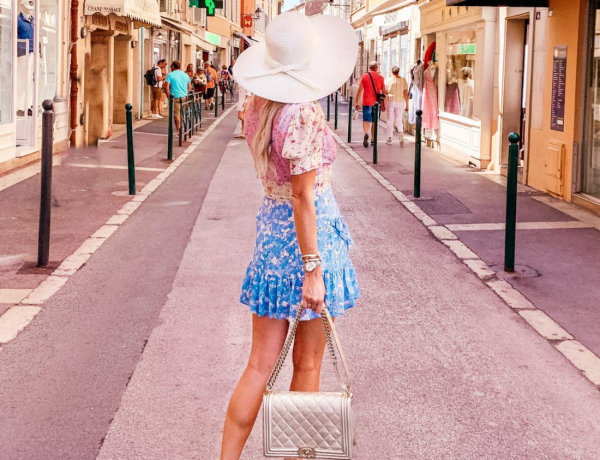
What to Buy in Paris: 12 Souvenirs You Can’t Leave Paris Without

How to Survive a Long-Haul Flight (or any flight, for that matter)

8 Travel Apps I Use to Jetset Like a Boss
Jessica Lee
Did you fly business class? If so did you use points and if so which card would you recommend to be the best for points to Japan?

Lindsay Silberman
Nope! I actually used miles to fly United econ because we didn’t have enough for round-trip biz sadly. It was direct so not terrible. We usually transfer our points from Chase Sapphire Reserve to United!
Leave a Reply Cancel Reply
Save my name, email, and website in this browser for the next time I comment.
How to Plan the Perfect Thailand Vacation
My first ces: a glimpse into the future with dell.

The Perfect 4-Day Tokyo Itinerary: Japan Travel Guide
Tokyo is one of the most vibrant and exciting cities in the world. If you’re planning a trip to Japan, it should definitely be on your list! However, if you’ve never been before and don’t know where to start, don’t worry. We’ve put together the perfect 4-day Tokyo itinerary for first-time visitors. From visiting popular tourist spots to sampling delicious Japanese food, this fun-filled guide has it all!
Get Your Guide
Find a variety of activities down below if you’re short on time with 4 days in Tokyo.
- TeamLab Planets
It’s time to start our Tokyo 4-day itinerary with a bang! TeamLab Planets is an unforgettable experience that will tantalize all of your senses. The newest addition is the floating flower garden, which is our favorite! We’ve found the cheapest tickets here!
The Teamlab Planet exhibit will be running until the end of 2023, so you’ll want to check it out sooner rather than later!
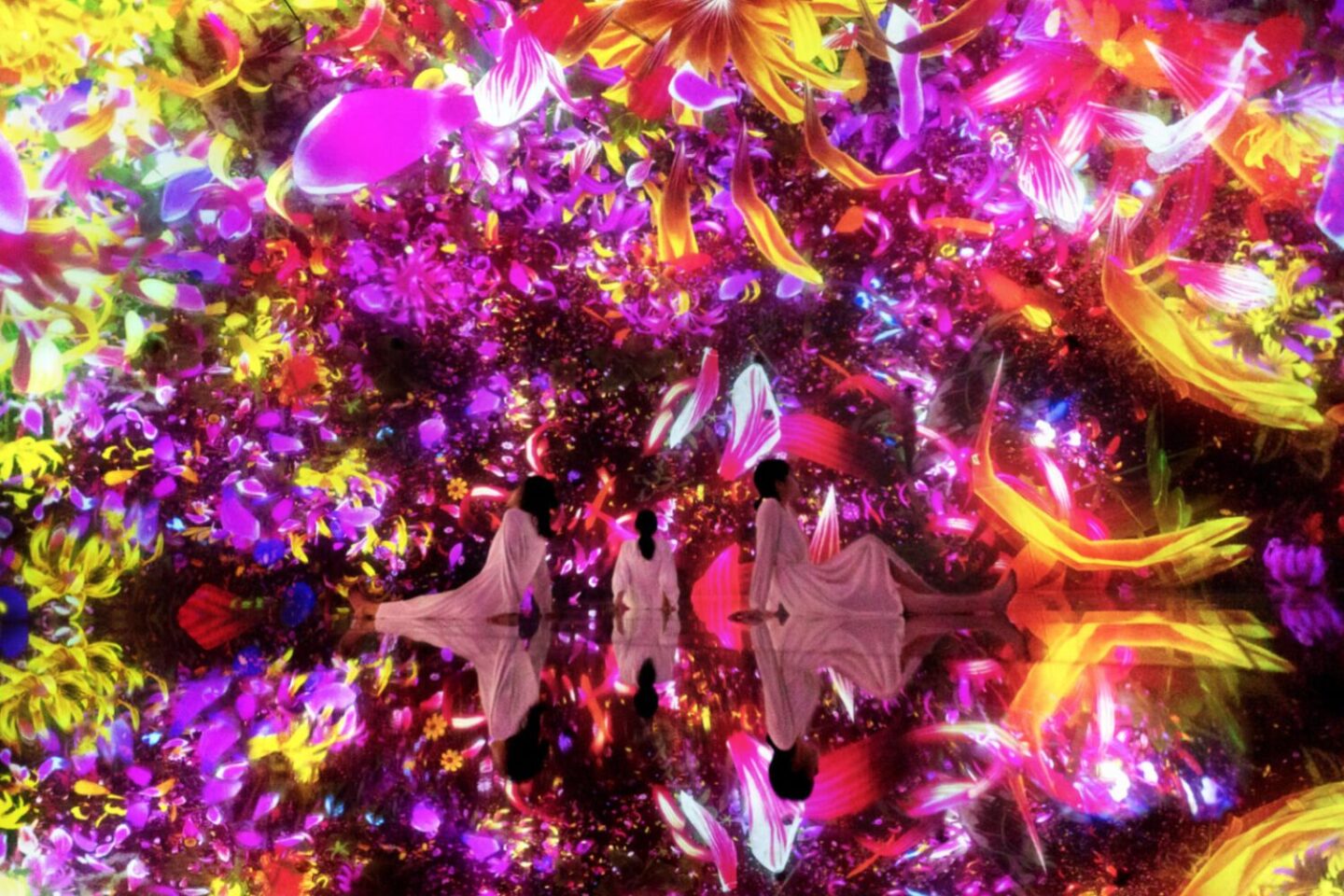
In the afternoon, explore Shibuya where you’ll find plenty of new things to see and do, including some iconic landmarks. Make sure to include the Starbucks Reserve Roastery on your list – it’s unlike any other Starbucks you’ve ever seen!
This Starbucks is the second largest one in existence and the architecture will take your breath away. They serve four floors of deliciousness, with everything from freshly roasted coffee to delectable food items that you won’t be able to find anywhere else. You can even watch them make some of their treats fresh in-house at their Bakery! This is hands down the best Starbucks we have ever been to. With only 4 days in Tokyo, this is a must-visit on our list!
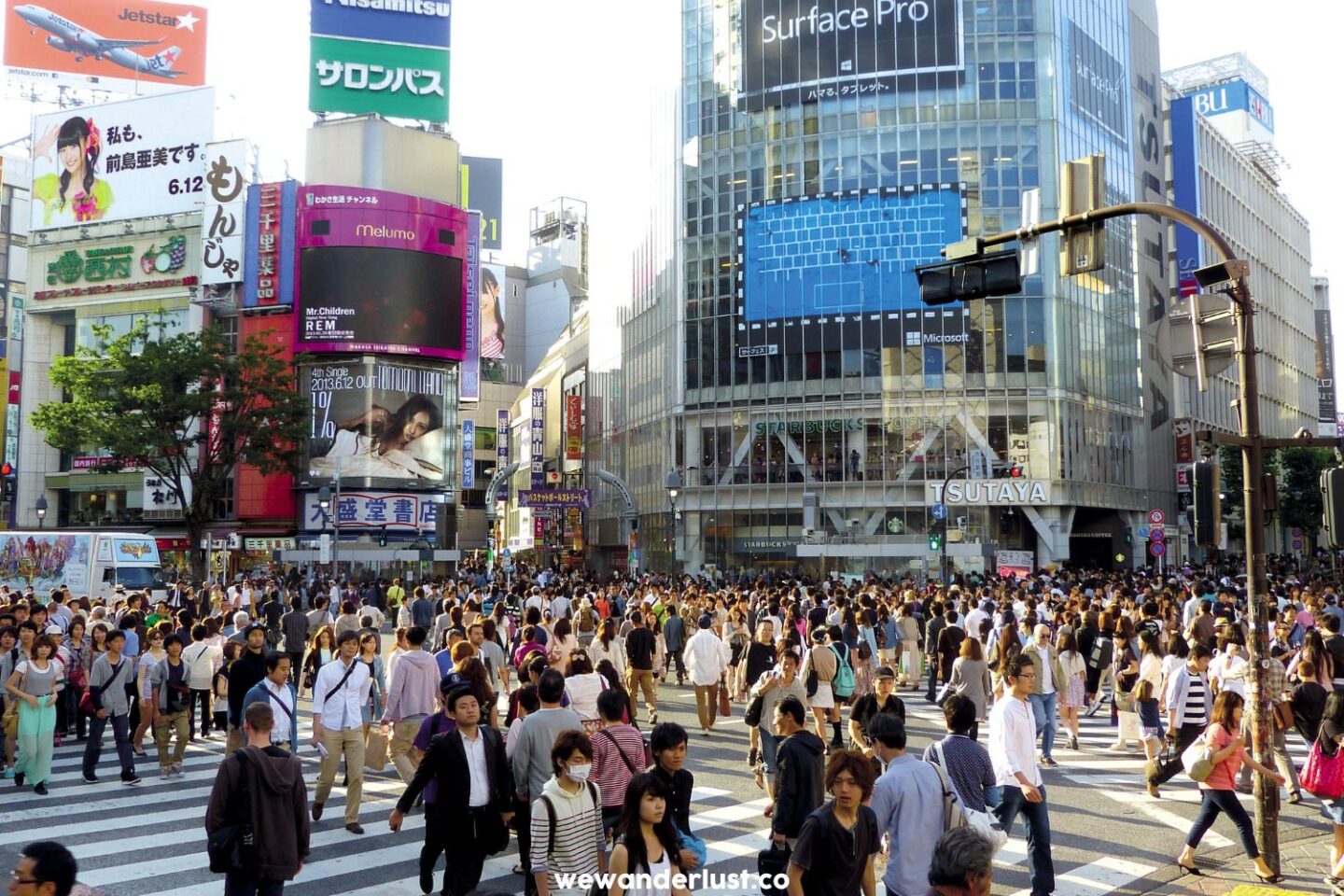
You can’t visit Tokyo in 4 days without experiencing the Shibuya Crossing. It’s packed with tourists, locals, and shoppers rushing to their next destination. Even if it doesn’t look full right now, once tourism picks up again you’ll see its true potential. You have to experience crossing at least once on your 4-day Tokyo itinerary!
Shibuya is home to the world’s first official Nintendo store– and it’s a next-level fan experience. In addition to being able to find all sorts of merchandise for your favorite characters, you can also check out the Capcom store (which has an impressive Monster Hunter setup) and the coolest Pokemon Center in Japan. If that wasn’t enough, there’s also a YouTube glass tube at the entrance!
See All Tokyo Stays
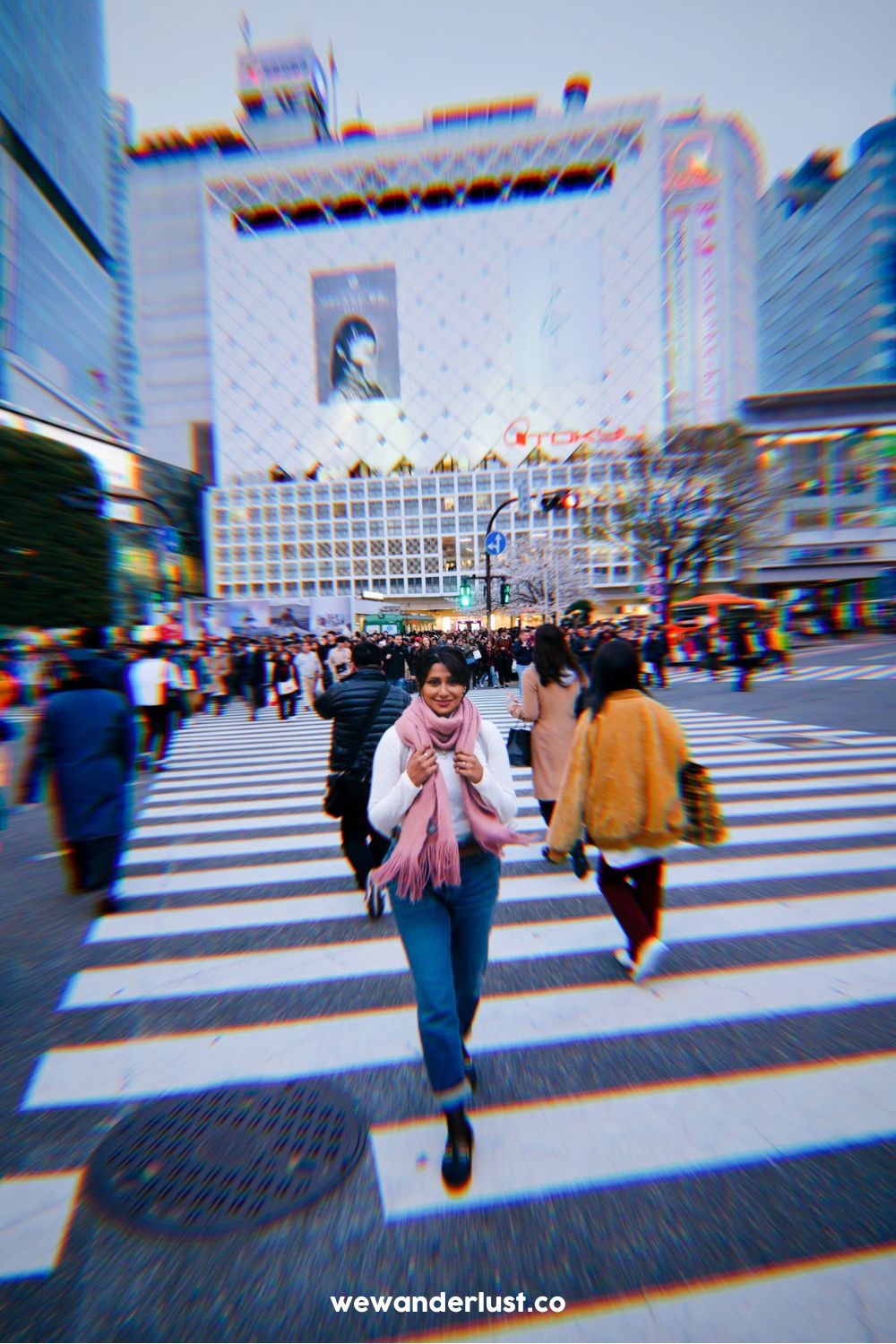
After you explore Shibuya, head over to Miyashita Park, a newly renovated shopping mall that opened in 2020. Here you’ll find modern stores, a long stretch of eateries, and a huge rooftop garden called Shibuya Sky where you can relax and take a break from the hustle and bustle.
From up here at 229 meters above Shibuya, you’ll be able to see stunning 360-degree views of the city.
The view from the grass helipad area is stunning, and we recommend timing your visit for sunset to make it all the more memorable. You can lie back in one of the nets and watch the clouds and planes fly by as the sun sets over the city skyline.
Tip: Get cheap flights with cashback down below for your 4-day Tokyo itinerary.
A trip to Tokyo in 4 days wouldn’t be complete without a visit to Harajuku. It’s one of the most iconic places in Tokyo for its shops, fashion, street food, and sweets – both delicious and unique.
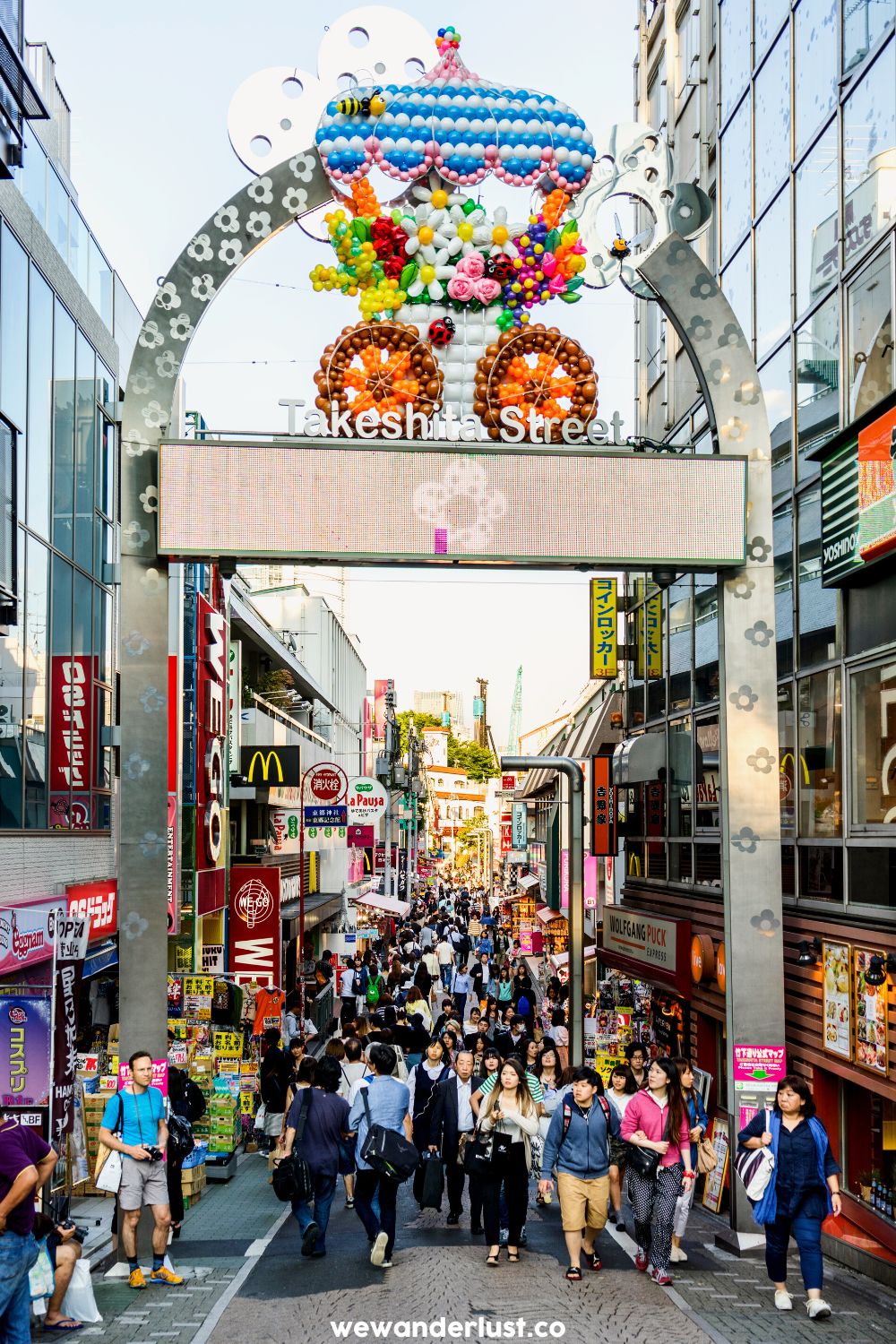
If you’re looking for fun and excitement, head down to Takeshita Street. You’ll find plenty of hidden gems and interesting stores if you wander off the beaten path a bit. While you’re in the area, we highly recommend that you try Yukatsu at Gyukatsu Motomura Harajuku. It’s so good that it may even have you in tears! Yukatsu is a deep-fried beef cutlet that you cook on the table and it’s even more fun if it’s your first time!
Red Tokyo Tower
Red Tokyo Tower is the perfect place to go on a rainy day, especially if you have kids. With its many games and activities, you’ll be sure to have a great time. And it’s no secret that Japan is known for its excellent tech and games!
Enjoy an otherworldly experience by visiting this place that will make you feel as if you’ve stepped into a spaceship. It’s brand new, having only opened in May 2022, and boasts three floors of pure entertainment. There are lots of fun activities to try with friends like cyber soccer, jumping games, interactive climbing walls, VR experiences, and more.
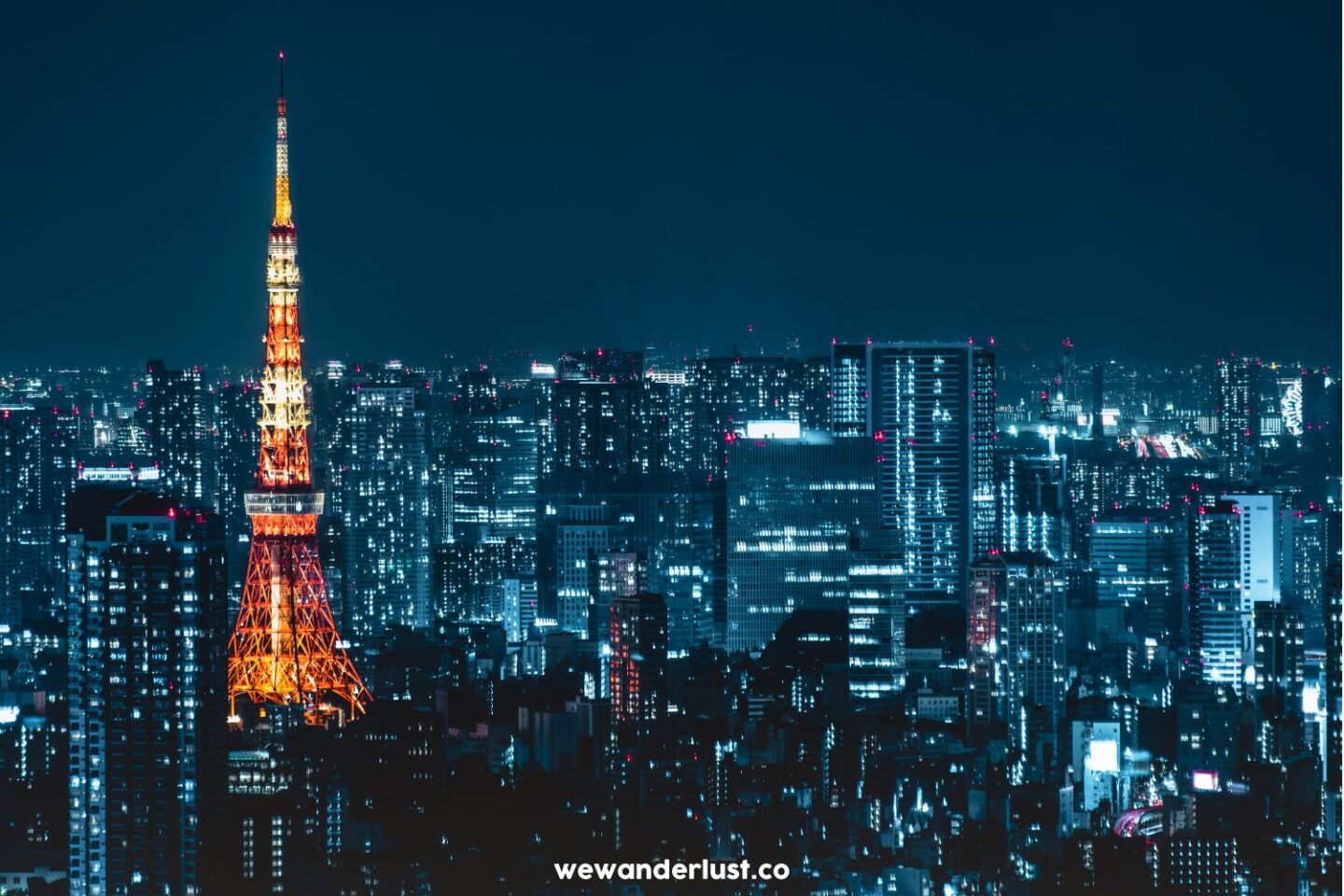
- Tokyo Tower
If you’re already at the Tokyo Tower, make your way to the top and take in the views from above. The interior looks amazing, with all its geometric metal surfaces.
Brace yourself for an exhilarating sensation as you walk across the sheer glass floor with a bottomless view. We did something similar in Dubai and our knees were definitely weak right after!
- Happy Pancake
Next, head over to Happy Pancake to have the best souffle pancakes in Ginza, Tokyo. Here, you’ll have the most delicious and fluffy cloud-like pancakes you’ve ever had. If it’s one thing that you shouldn’t miss on your Tokyo 4-day itinerary, it’s THIS!
- Tokyo Art Aquarium
Tokyo Art Aquarium is a new and innovative attraction that is unlike any other. It’s a combination of an art gallery and an aquarium, and it’s one of the best places to visit in Japan. You’ll be amazed at the creativity and innovation on display, so don’t miss out on this truly unique experience!
The Tokyo Art Aquarium used to be only a yearly exhibit that started in 2007. It’s currently in Ginza for an extended period of time. So now’s your chance to see this incredible work of art!
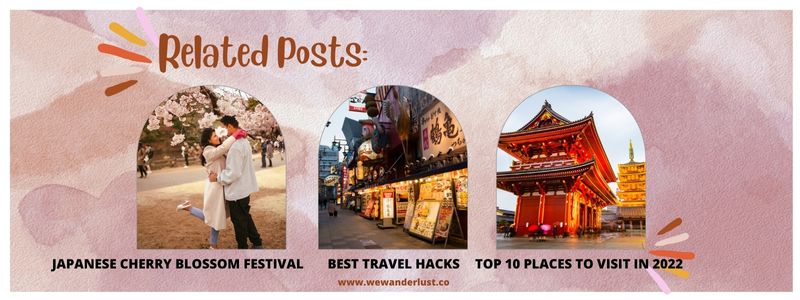
- Ninja Restaurant
If you’re ever in Japan and looking for an unforgettable dining experience, we highly recommend the Akasaka ninja restaurant. Even though it’s been around for a while, it’s still one of the best places to eat in the country.
This is a once-in-a-lifetime opportunity to say you’ve been served food by ninjas in a hidden ninja village.
You’ll have an amazing time here! Not only will you get to enjoy delicious food, but you’ll also get to see some incredible Ninjutsu tricks. And at the end of the evening, the Master Ninja will even grace you with his presence! Be sure to book online in advance so that you don’t miss out on any part of this experience.
- Pokemon Room
At select MIMARU hotels , you can stay in a Pokemon-themed room and spend an entire night surrounded by these cute little monsters.
This room is so cuddly and everything in it is Pokemon-themed! Not only can you cuddle up with a giant Snorlax at night, but it’s also a lot of fun to watch them!
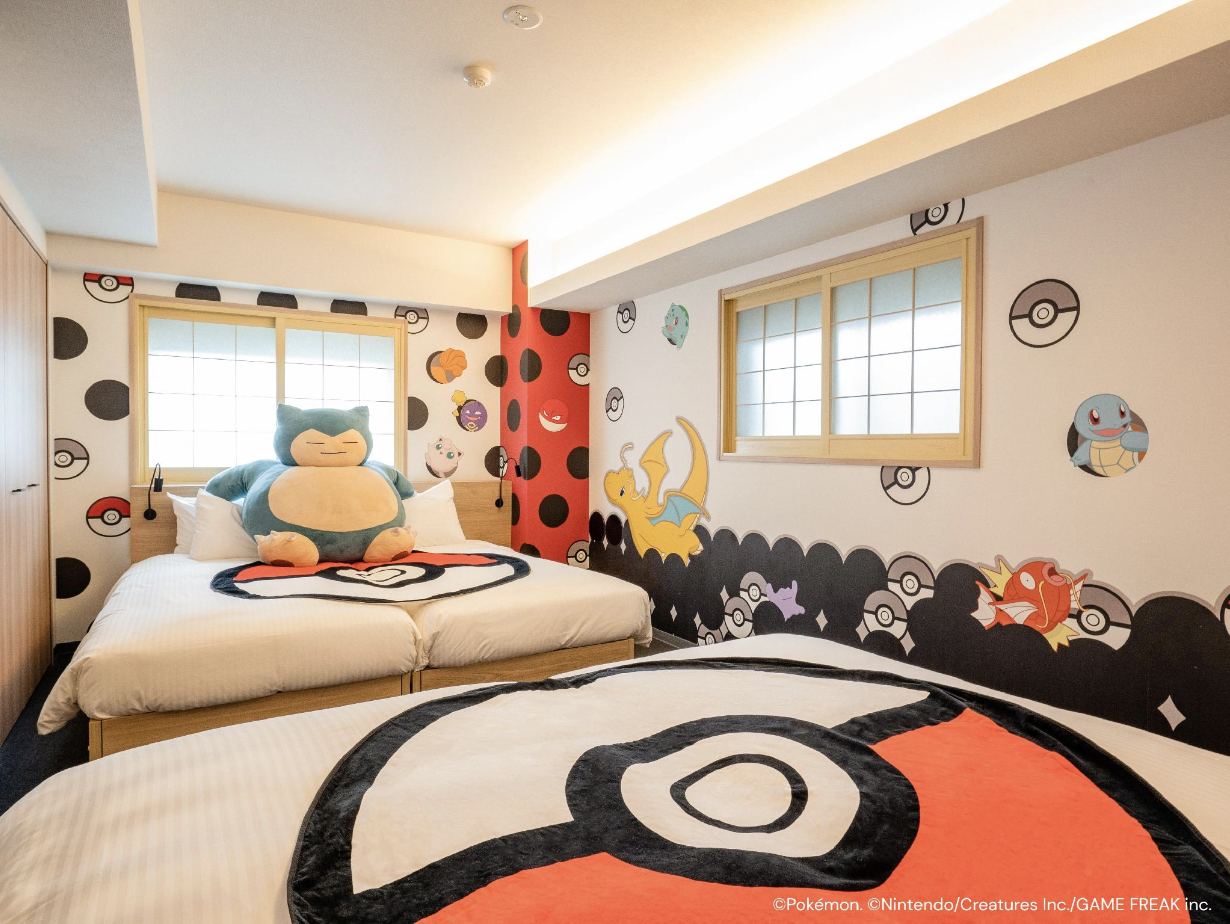
Families looking for comfort and convenience will love Mimaru hotels. With new facilities and great room setups, they’re perfect for families with young children. And with locations in Tokyo, you’re sure to find the perfect hotel for your needs for your 4-day Tokyo itinerary.
Day Trip from Tokyo to Edo Wonderland, Disneyland , or DisneySea
For a richer understanding of Japan and its fascinating history, we recommend taking a day trip from Tokyo to Nikko and visiting Edo Wonderland .
Walking around you’ll feel as if you traveled back in time to the Edo period. It’s an incredible feeling.
Tip: If you want to feel like you’re truly part of the experience, rent some costumes and dress up.
The townspeople of Edo Wonderland will give you different reactions based on what you’re wearing.
You can choose to dress up as someone from a different social class, or even become a ninja or Samurai. You’ll also be able to take part in fun activities related to ninjas in the Ninja quarter.
The warmer months are the perfect time to visit Japan for the water festival, where you can throw water at performances and see the procession of an Oiran up close.
Tip: Be prepared to spend a whole day at Edo Wonderland as there are plenty of activities for everyone.
Alternatively, if you choose to forego Edo Wonderland, you can visit Disneyland or the world’s only DisneySea instead which are two of the most popular places to go in Tokyo for theme park lovers! This trip will definitely make your 4 days in Tokyo extremely special.
Tip: Book your tickets here because it’s often cheaper than buying tickets at the door.
- Sensoji Temple
Your 4 days in Tokyo are incomplete without a visit to SenSoji Temple, one of the most significant temples in Tokyo.
Look for the enormous lanterns at The Gates–you can’t miss them! And be sure to take a peek underneath. Better to be seen with your own eyes 😉
Find some treats at Nakamisa shopping street which is lined with delicious snacks and treats, perfect for sampling and souvenir shopping.
Tip: The Pagoda is more stunningly lit up at night, so we recommend visiting the temple then. It’s also quieter so you can enjoy the ambiance more.
The Ninja Cafe in Asakusa is the perfect place to stop for a quick drink and learn some ninja techniques. You can get dressed up as a ninja, learn how to wield a Katana, and throw shuriken.
This is such a fun and unique activity to add to your 4-day Tokyo itinerary!
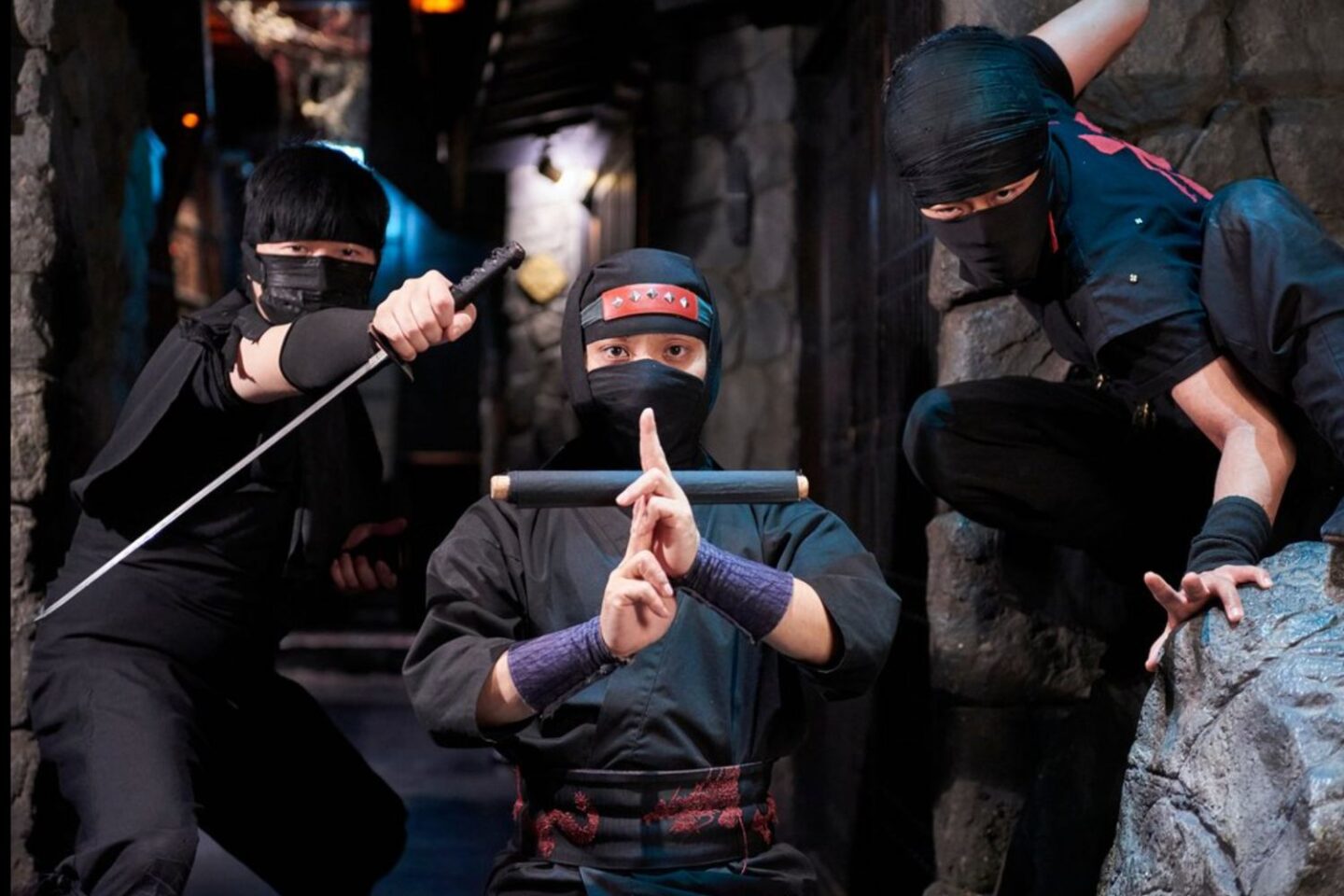
If you’re looking for a fun place to eat sushi, Kuro Sushi is a great option. With modern takes on classic sushi trains, you’ll be able to find one of their locations almost anywhere. And with private booths available, you can enjoy your meal in peace. Plus, ordering via tablet makes it easy to have your food delivered right to your booth by a special belt!
The best part is that you can also participate in fun games at the end to win a prize.
If you want to visit the biggest conveyor belt sushi train in the world, go to the one near Skytree in front of Oshiage station. This restaurant can host up to 277 people total with 47 booths on the first story and 33 counter seats on the second.
The space is also filled with ukiyo-e-style illustrations and colorful lanterns, similar to what you would find in the chain’s Harajuku outlet.
Akihabara is the perfect place to end your day and immerse yourself in the bright lights of anime-themed stores, manga shops, new and old arcades, and electronic stores.
If you’re into otaku culture, then this is the place for you! You’ll be in paradise and won’t want to leave. The new tamashi nations store near the station is a must-see too.
If you’re curious about new attractions, take a peek inside Akiba Culture Zone. It’s like all of Akihabara compressed into one space!
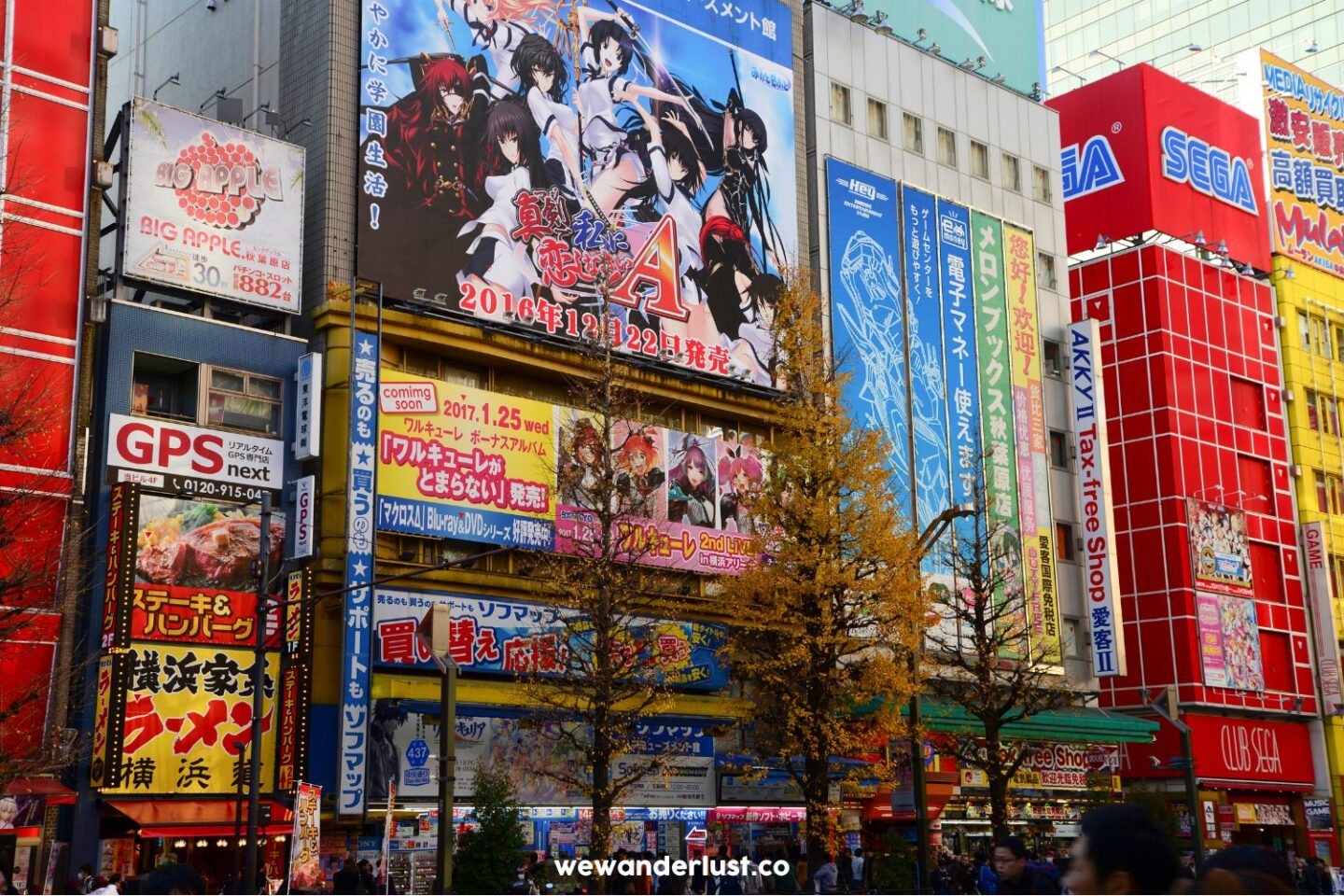
After spending the perfect 4 days in Tokyo, you will have gotten a taste of all the incredible things this city has to offer. From historic temples and traditional activities to modern anime culture and delicious sushi, there’s something for everyone in Tokyo.
We hope this guide has helped you plan the perfect 4-day itinerary for your trip to Tokyo. Enjoy your time in this amazing city!
The Perfect 4-Day Tokyo Itinerary: Japan Travel Guide 2024
- RED Tokyo Tower
- Tokyo Day Trips
FAQ’s
How safe is tokyo.
Tokyo is one of the safest cities in the world. Crime levels are low, and locals are friendly and helpful to tourists.
How much money should I bring to Tokyo?
That depends on your spending habits and how long you plan to stay in Tokyo. Generally speaking, we suggest bringing about 1,000-2,000 USD to cover transportation, meals, and accommodations.
Are there any day trips from Tokyo?
Yes! There are many great day trips from Tokyo such as Mt. Fuji, Nikko, Hakone, and Kamakura. Make sure to plan in advance or book a tour to make the most of your time.
Is 4 days enough to explore Tokyo?
Yes! 4 days is enough time to explore the city, and you can even add on a day trip or two if you have more time. You won’t be able to fit in everything, but with careful planning, you will be able to see many of the top attractions and experience Tokyo’s culture.
What should I wear in Tokyo?
It’s best to dress conservatively, as t-shirts and shorts are considered informal attire. Layers are also advised; temperatures can fluctuate throughout the day. Comfortable walking shoes are a must!
What’s the best way to get around Tokyo?
The best way to get around Tokyo is by taking public transportation. The subway and train systems are efficient and well-connected, making it easy to get from one place to another. You can also opt for a taxi or rideshare service if you need door-to-door service.
What currency is used in Tokyo?
The official currency of Japan is the yen (¥). ATMs are widely available and major credit cards can be used for purchases. To get the best rates, we suggest exchanging money at a bank or airport prior to your trip.
Are there any fun activities to do in Tokyo?
Yes! Tokyo has plenty of exciting activities to keep everyone entertained. From food tours and karaoke bars to sumo wrestling and cat cafes, you’ll find something for everyone. There are also great interactive attractions like TeamLab Planets, where you can participate in fun and unique art-based experiences.
Similar Posts
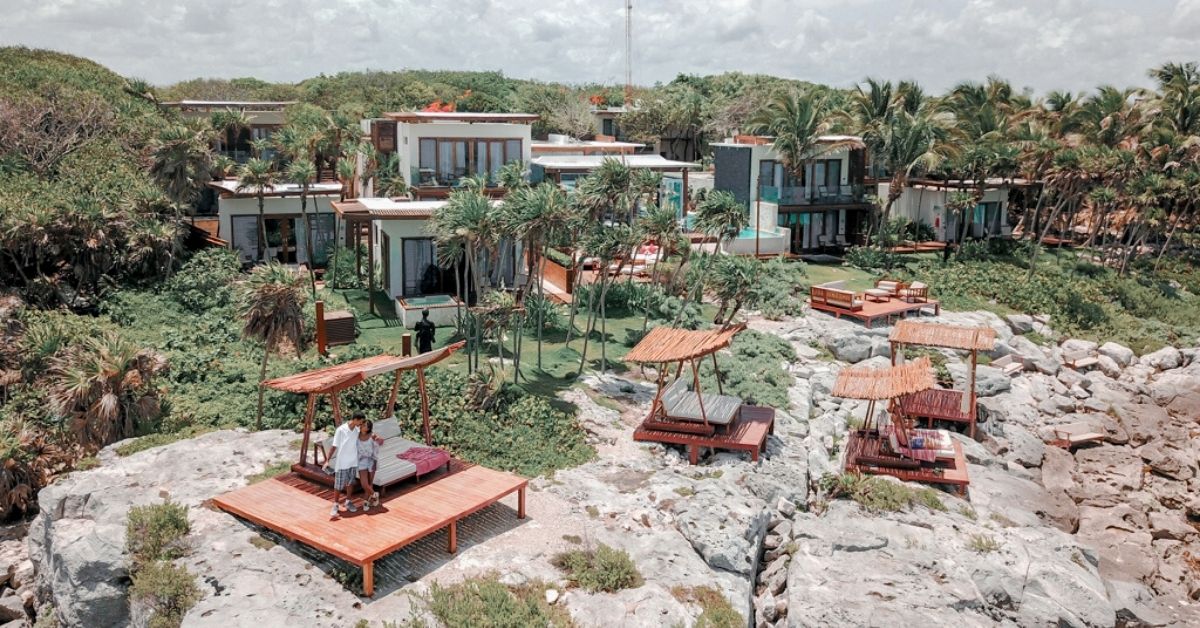
Mi Amor Hotel & Spa, Tulum, Mexico
Te Amo, Mi Amor If you’re looking to get away with your honey to an exclusive adults-only spa retreat, then look no further than Mi Amor Hotel & Spa in Tulum, Mexico. Overlooking the Caribbean sea on the Yucatan Peninsula, Mi Amor Hotel offers endless panoramic views. I first landed on this hotel searching for…
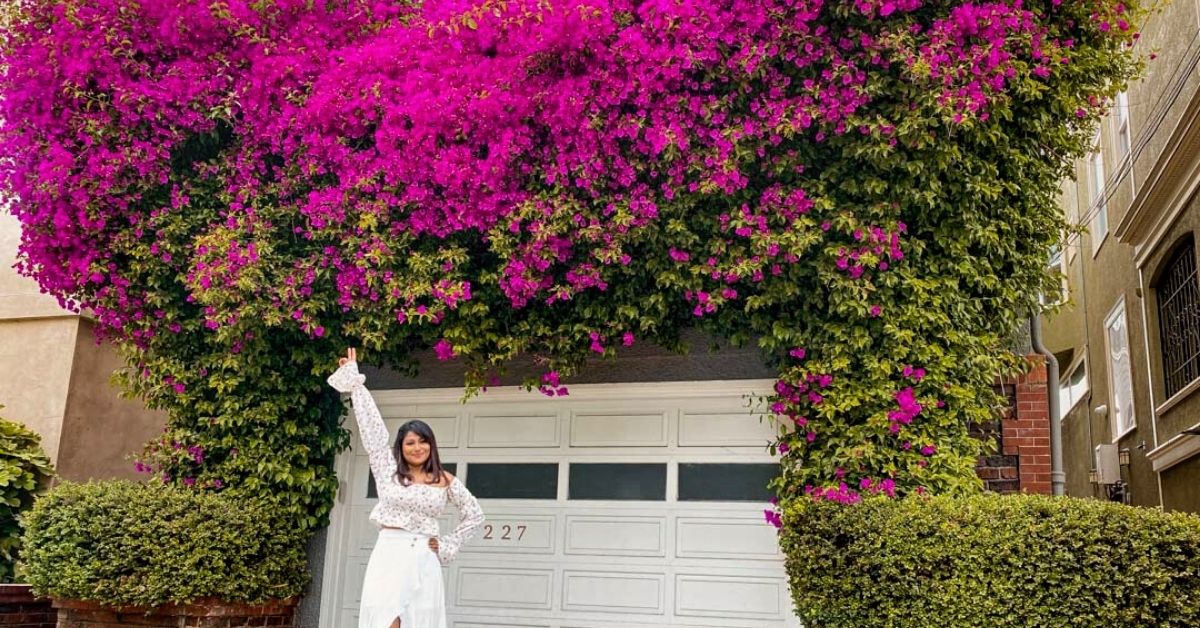
15 Instagrammable Photo Spots in San Francisco *Spoiler Alert* Hidden/ Easily Missable Locations
If you’re going to San Francisco, be sure to take lots of pictures! There are plenty of Instagrammable Photo Spots in San Francisco, and whether you’re capturing the sunrise in the Marina District or snapping an interesting picture of one of the city’s many colorful bougainvilleas, it’s all worth sharing with your friends online. Today…
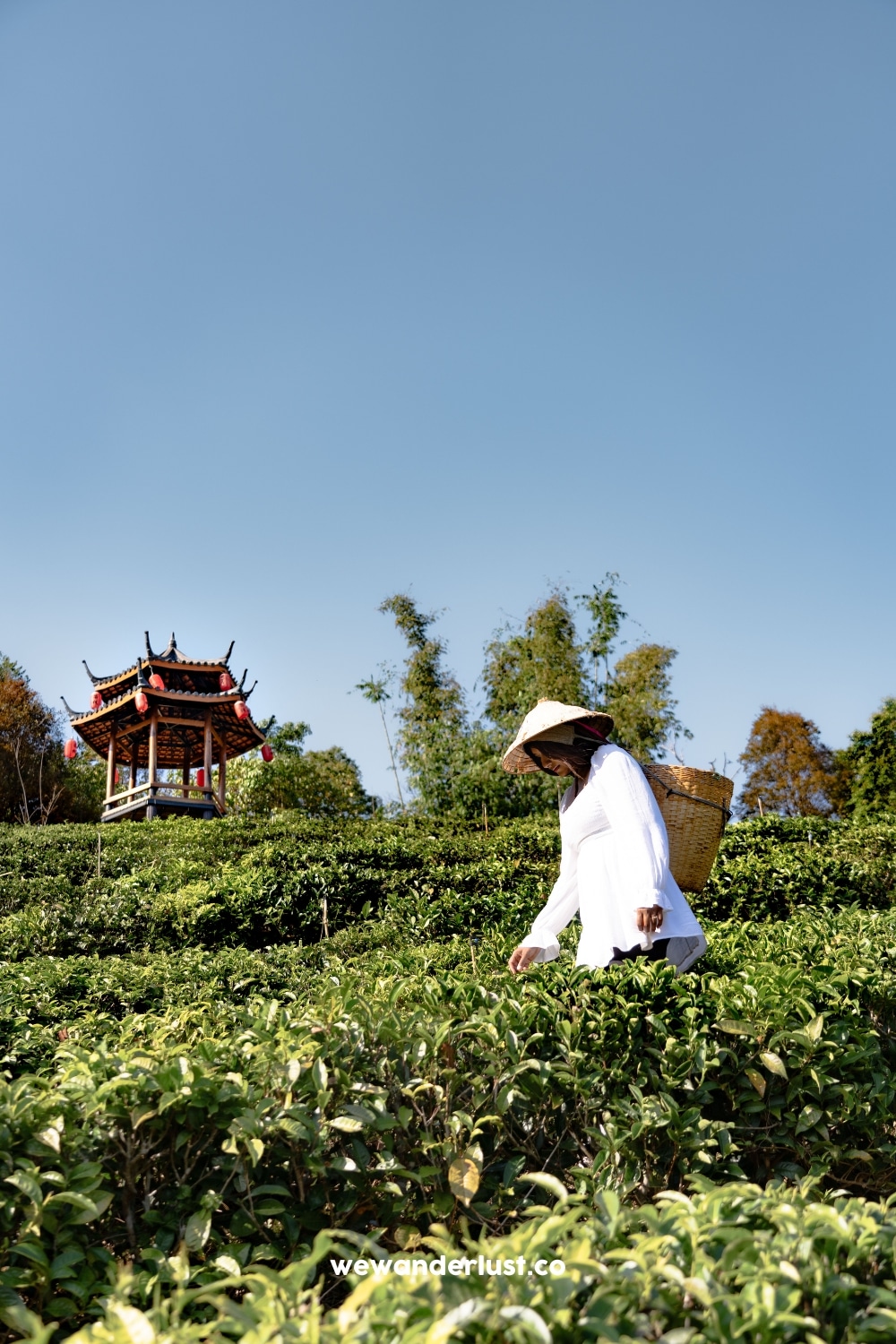
Mae Hong Son Loop Travel Guide 2024
Riding the Mae Hong Son Loop on a motorbike had been on our bucket list for the last 5 years and we finally achieved that this year. Just like us, there are so many of you out there who are seeking an adventure in Thailand that combines breathtaking scenery, exhilarating twists and turns, and a…
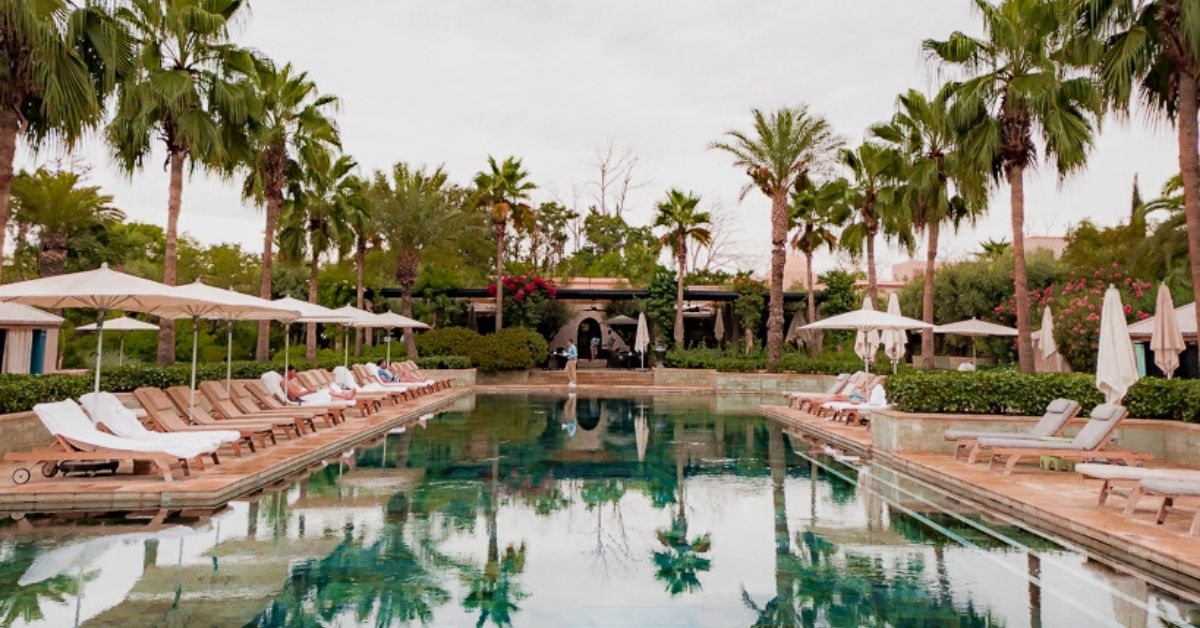
7 REASONS WHY YOU SHOULD STAY AT FOUR SEASONS MARRAKECH, MOROCCO
The Instagram Famous Fountain Pool If you haven’t seen any posts on Instagram about the long fountain pool that the Four Seasons Marrakech has, then you’re probably living under a rock. Majestically set in the middle of the resort, the fountain pool is a central feature and one of the most Instagrammable areas at Four…
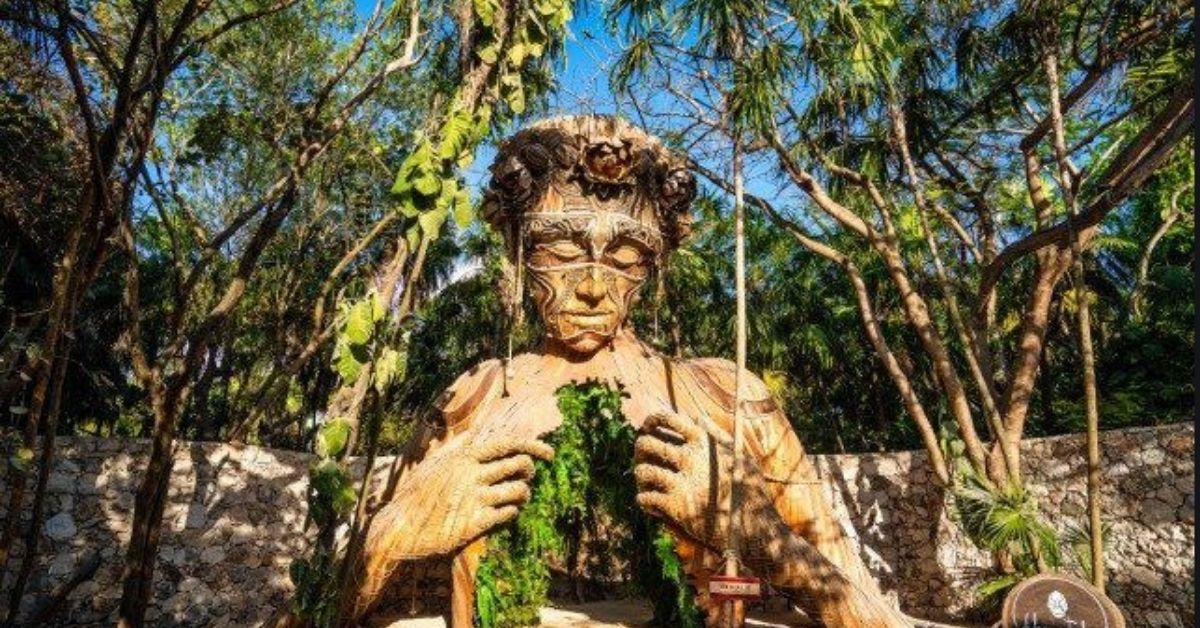
Free Things To Do in Tulum, Mexico 2024
On the southern stretches of the Maya Riviera, Tulum was a laid-back hippie town with a beautiful shore, some ruins, a few shacks for good quality food, and night-time drinking. Free things to do in Tulum were plentiful. However, the meteoric rise of Tulum to prominence in the last decade has turned it into a…
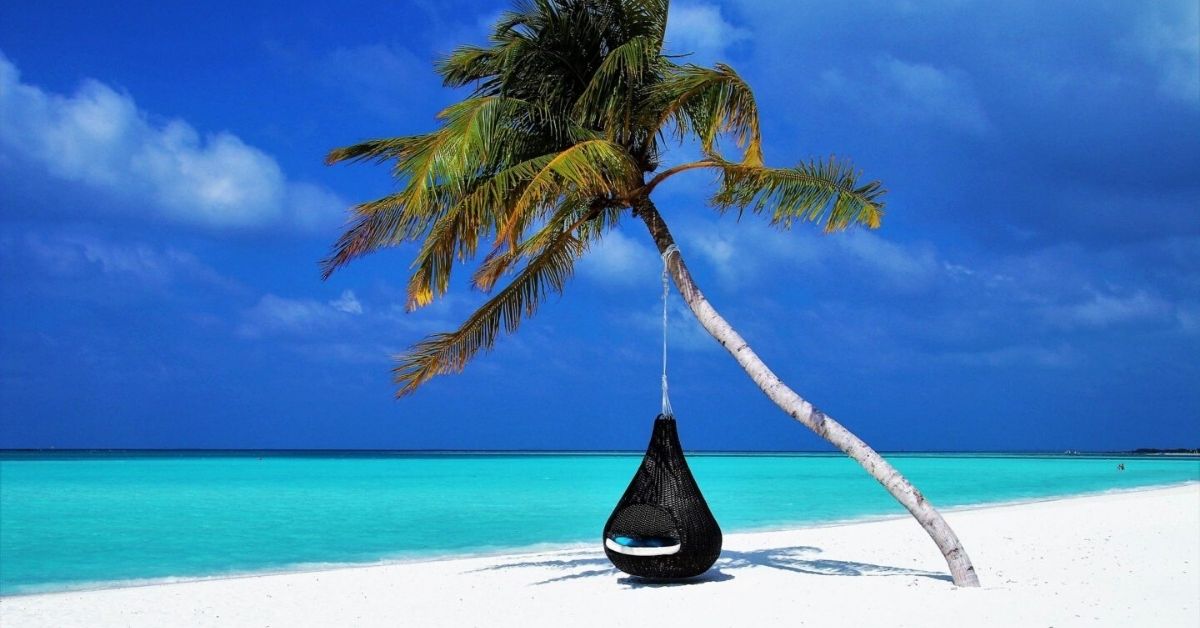
21 Top Places That Are Open for Travel NOW
As more and more countries are beginning to open their borders for travel, we decided to list down all the spots you need to visit once this lockdown is over. You may be asking, “Is it safe to travel now?” In today’s post, we’re going to provide you with the top destinations that are starting…

Girl Eat World
A girl's adventure in food and travel around the world, tokyo itinerary: the complete travel guide for first-timers.
Traveling to Tokyo for the first time? I am so happy and jealous of you. The feeling of visiting Tokyo for the first time is one of my fondest memories of all of my travels, by far. As a repeat visitor to this beautiful city, I will impart some of my knowledge of Tokyo in this post.
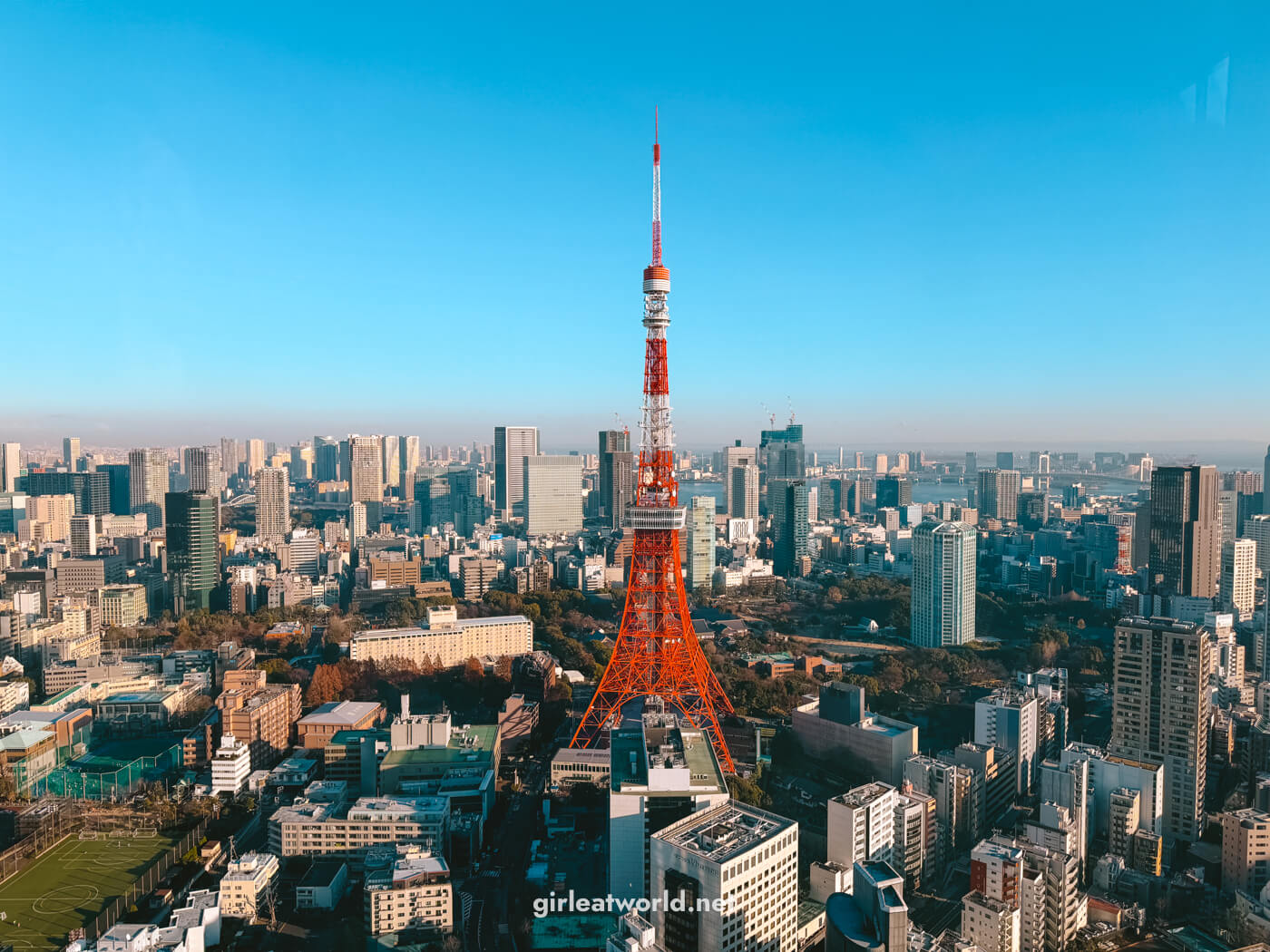
- Travel Tips for First-time Visitors
- Getting Wi-fi or Data SIM card in Tokyo
- Public Transport in Tokyo
What is a JR Pass and do I need it?
Where to stay in tokyo.
- 5-days Tokyo Itinerary
- Short Trips from Tokyo
- Want more? Here are more activities you can do in Tokyo
Tokyo Travel Tips for First-time Visitors
1. Get the Tokyo Pass from Klook to save money – There are lots of attractions to visit and do in Tokyo, which means you’ll likely have to spend on those activities. Getting a travel pass could ease the pain. To make it easier for you to decide whether to get the pass or not, I’ll put a note on each attraction that I mention in the itinerary that could use the Tokyo pass.
What is Klook? Klook is the leading travel and experiences booking website in Asia. And yes, they are legit! I personally always book my activities through them whenever I am traveling. See my review of Klook here .
2. Fly to Haneda Airport (HND) instead of Narita (NRT) – Unless the flight is considerably cheaper, don’t even think about flying through Narita. It will save you both money and time because Haneda is so much closer to the city than Narita. In fact, Haneda is pretty much already in the city – it would take you about 30 minutes to Shibuya using the local train. Narita, on the other hand, takes about 40-90 minutes and you need to buy an express train ticket to Tokyo.
3. Airport Transfer from Haneda (HND) to Tokyo – If you are arriving in Haneda (HND), you’ll want to take the local train as it is cost-effective. But if you’re arriving in off hours (trains only operate from 6 AM to midnight) or traveling with a group, you will want to book a Private Transfer from and to HND to save the hassle.
4. However, if you have to fly to Narita (NRT) , you can still get into the city easily. Aside from the Narita Express, there is Tokyo Keisei Skyliner which takes you to Ueno station in 40 minutes. From Ueno, you can then transfer to the local trains to get to the station nearest to your hotel. If you are traveling as a big group or have a lot of luggage, I highly suggest getting a private car. On my most recent trip, I hired a private transfer car from Narita for the three of us since we had a lot of luggage and I had a great experience. The driver was already waiting for us as we exited and we were off within 5 minutes.
Tokyo Pass: Keisei Narita Skyliner is one of the attractions included in Tokyo Pass
5. Download the Google Translate Japanese Pack to your phone . It will make communication a lot easier. Google Translate can also somewhat translate writing to English, so it has been useful when I go to a restaurant where the entire menu is in Japanese and the staff does not speak English.
6. Download the Tokyo Google Maps to your phone – by this, I don’t just mean download the Google Maps app. You can download the whole Tokyo map to your phone so you’ll use less mobile data when browsing the maps. Here is how to download Maps to your phone .
7. Wear comfortable walking shoes – Tokyo is a city with amazing public transport connectivity. Taxis are expensive. So chances are, you’ll be walking and exploring on foot a lot in Tokyo. Wear comfortable shoes that are actually made for walking.
8. Don’t worry about traveling solo to Tokyo. Tokyo is one of the safest cities in the world. Two of my trips to Tokyo were done on my own and it couldn’t have been more perfect. Okay, I know there are incidents involving perverted peeping toms on the train, and I’m sure crimes do still happen, but I personally have never felt scared or threatened even when I was walking alone at night.

Fast track your arrival in Japan
You can make your arrival in Japan easier by completing your immigration and customs procedures before your arrival via Visit Japan Web. Read how to do that here
Staying connected with Wi-Fi while in Tokyo
If there is only one tip you take away from this blog. This would be it: Get a SIM card for your travel! Having an internet connection at all times makes traveling in Tokyo MUCH easier.
If you are traveling alone, you can look into getting a prepaid SIM card . You can pick up the SIM Card once you have reached Japan at the airport (check if your airport is listed).
However, if you’d like to still be contactable from your original mobile number, I strongly suggest considering a data eSIM option . It will still allow you to have unlimited data when you are in Tokyo, but you can also retain your regular SIM card!
If you are traveling in a group, or have multiple devices, another option is to rent a pocket Wi-Fi, which you can get here and pick up at the airport. This provides unlimited data and you can connect multiple devices to it, up to 10 devices. You’ll have to remember to charge the router every day and also remember to return the router at the end of your trip.
How many days should I spend in Tokyo?
I recommend setting aside a minimum of 5 days for Tokyo. Tokyo is MUCH bigger than you might have expected. On my first trip to Japan, I went for 7 days with aspirations of doing a few day trips outside of Tokyo. That plan was quickly trumped when I realized how big this city is.
In the end, I allocated 5 days in Tokyo and barely managed to squeeze in two days in Hakone , and it was still not enough to cover all that I wanted to do in Tokyo. I ended up coming back a few more times and on subsequent return visits, I’m still discovering new sides of the city.
And this is why I’ve written this post as a 5-day itinerary in Tokyo!
How to get around Tokyo using Public Transport
In Tokyo, you can pretty much get anywhere you want using the train. Here is how the system works:
Tokyo Pass: A 72-hour subway ticket (for Tokyo Metro and Toei line) can be bought as an add-on to Tokyo Pass , making it cheaper than paying for a single train fare each time.
1. Using Local Trains with IC cards (SUICA or PASMO)
Local trains in Japan run on IC (Integrated Circuit) Cards. In Tokyo, you can get either SUICA or PASMO IC card. They are the exact same thing, and there is no difference in which one you get so just pick one. Whichever one you choose, this IC card will be your lifeline during your stay.
IC Card Shortage: There is currently a shortage of physical IC Card. Suica and Pasmo will no longer be sold starting 2 August 2023 until further notice. Read here to find how to get around in Tokyo without physical IC Card .
This card allows you to tap in and out of each train station without having to buy a ticket every single time you take a train. And because everyone has an IC card Japan, you can even use your card balance to buy things from convenience stores and vending machines. Whenever the balance is running low, you can easily refill the card using cash or credit card at any train station.
2. Virtual IC Card – How to use your iPhone as an IC Card in Japan
Good news for iPhone users – the IC cards have gone virtual and you can use your phone as an IC card. This makes everything even more convenient, as you can refill the balance via your phone without going to the station.
Tip: Check out Apple’s help article on how to use IC cards on iPhones .
Note that you do not need to buy a physical IC card to do this , just start the process straight from your phone! However, if you DO have an existing IC card you can still transfer the balance to your phone. Your existing card will then stop working and you can only use your phone as an IC card from that point onwards.
Unfortunately for Android users, the phone needs to be bought in Japan to be able to do this. You could try using the Pasmo mobile , but it is only available in Japanese.
For users without a smartphone, you would still need to get a physical IC card .
3. Planning your route in Tokyo
In terms of train schedules and routes, I’m happy to report that Google Maps works well in Japan. You can use it as you normally would when looking up directions, but set it to public transport mode and it will give you the best way to get from point A to point B by train. And it even tells you how much the fare would be.
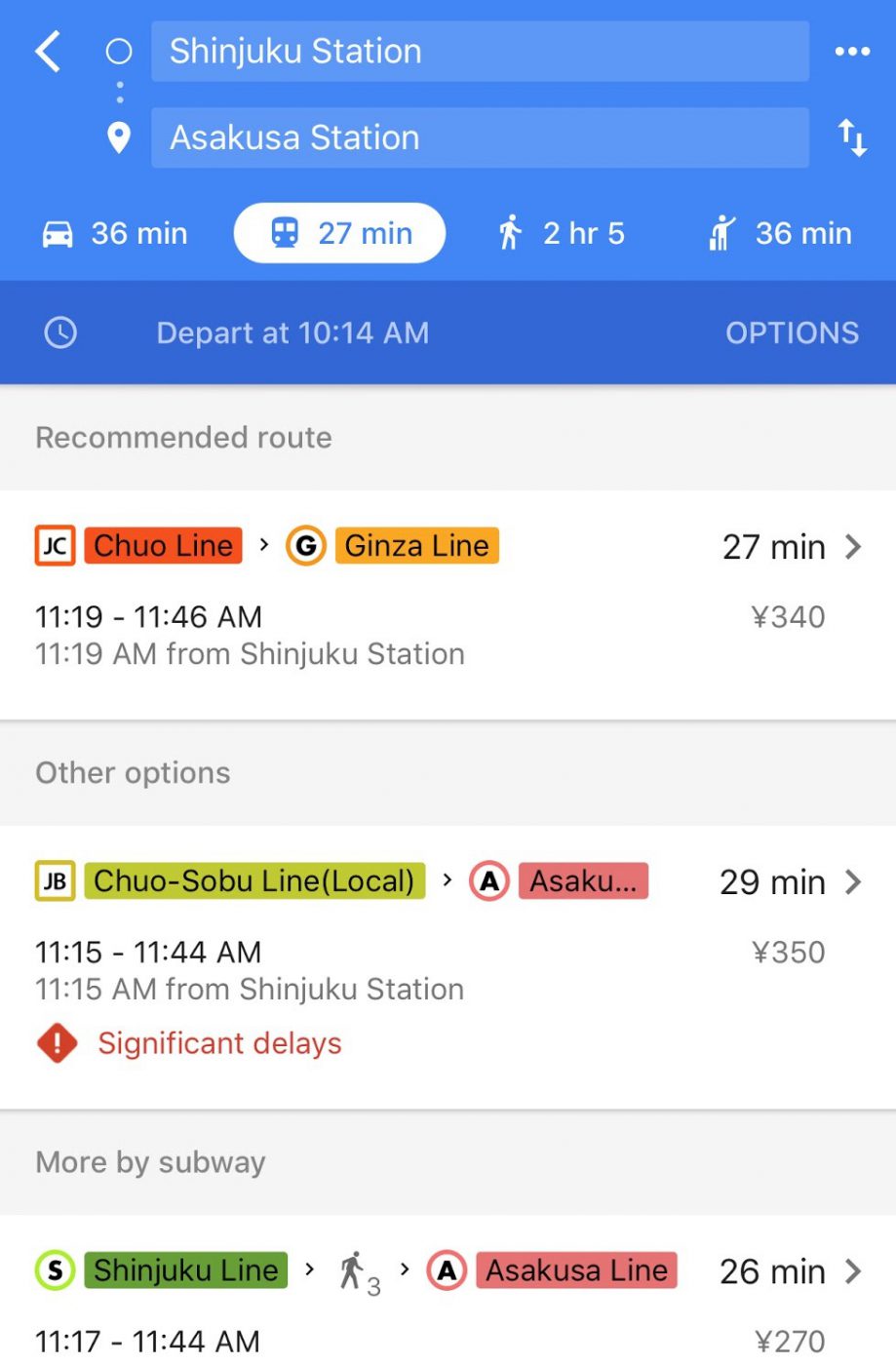
I’d say that’s good enough for tourists. Locals use a more comprehensive transit app called NaviTime which will tell you even more details such as which train car you should board to get to your transfer faster. But for me, Google Maps has always been enough.
4. Tokyo local trains will stop running at midnight
Trains in Tokyo are convenient and affordable, but they stop at midnight. Cabs are very expensive in Tokyo, so if you’re out late, you want to make sure you still catch the last train. Most stations have trains running until midnight but as a general rule of thumb, you should be at the station by 11:30 PM. Especially if your travel involves changing lines.
On one of our nights out, we missed our last connecting train in Shibuya and had to take a cab back to our accommodation. The short 20-minute ride cost us $50 😐
5. Be mindful of train peak hour
I try to stay away from using the train in the morning during rush hour, usually any time from 8-10 am on a weekday and 6-8 pm on weeknights. I’m sure you’ve heard about how people get pushed by sticks to encourage them to move more inside the train so that more people can get on, and you end up packed into the train like sardines.
The price of Unlimited JR Pass has increased by 70% since 1 Oct 2023 . Even though you’ll see many recommendations for buying a JR Pass to save some costs, it could be outdated. Since the price hike, it has become harder to justify the cost of the JR Pass, however regional passes like the JR West Kansai Pass might still be worth it. I am working on updating my blog post to reflect this change.
JR Pass is a form of rail pass that gives you unlimited access to all JR trains in Japan for 7, 14, or 21 days. I bolded the JR train part for emphasis since this gets confusing for some people – in Japan, there are many train companies and Japan Rail (JR) is only one of them, and this pass is only valid for JR trains.
Getting a JR Pass makes sense ONLY if you are planning to visit multiple cities in Japan . For example, if you are planning on going from Tokyo to Osaka, Kyoto, Hiroshima, etc. The trains between cities aren’t cheap and you’ll be saving a lot more by getting a JR Pass. But if you are only planning to stay in Tokyo, an IC card will be enough.
If you have decided that you need a JR Pass, you must buy the JR Pass from outside of Japan before your trip . The JR pass is solely for tourists and it used to not be available for purchase within Japan. So, you should definitely buy it ahead of time.
You can buy Unlimited JR Pass here (cheaper than buying from the official website) and have it sent to your home before your trip. Make sure you get it way ahead of time so that it arrives before your trip. There are 7-day, 14-day, and 21-day options depending on the length of your stay in Japan and your planned train usage.
If you do get a JR Pass and it has been activated for use, then you can use the JR pass on certain local trains within Tokyo too. JR is one of the train companies in Japan and they do have some local JR lines running in Tokyo. So if you are taking a train somewhere and it is a JR line, use your JR Pass instead of your SUICA balance!
With Tokyo’s extensive train system, anywhere close to a train station is a great place to stay. For a first-timer, I’d try to stay close to Shibuya, Shinjuku, or Asakusa . Look for a place within 15-minute walking distance or close to a train line that can take you to these areas.
Here are a few places I would recommend in Tokyo, in different price ranges:
1. Affordable Accommodations
- Reso Poshtel in Asakusa ($) – I stayed at a dorm in Asakusa and shared a room with 5 other women for a few nights. It was a great way to keep accommodation costs down if you are traveling alone and plan to be outside most of the time anyway. That hostel has since closed down, but Reso Poshtel looks similar.
- Hotel 1899 Tokyo in Shimbashi ($$) – Very conveniently located near the Shimbashi station, which is a good base for exploring the city.
2. Mid-range Accommodation
- MUJI Hotel in Ginza ($$$) – If you’re a fan of the minimalist Japanese home goods brand MUJI, you’ve got to stay at this hotel. The rooms are decorated with that classic Japanese feel, similar to how the MUJI stores look like. The hotel is next to the flagship MUJI store, located conveniently in Ginza, one of the major stations in Tokyo.
- The Strings by Intercontinental in Shinagawa ($$$) – This one is a more expensive option as I stayed here during a business trip, but this hotel was convenient. It’s right on top of Shinagawa station, which is close to both Shibuya and Haneda Airport. There are several convenience stores and a shopping mall in the same complex as the hotel. Also, it’s one of the taller buildings in this area. On a clear day, you can see Mount Fuji.
3. Luxury Accommodation
- Hotel Gajoen Tokyo in Meguro ($$$$) – If you want a taste of old Japanese luxury while in Tokyo, then look no further than this hotel. This beautiful yet little-known hotel is located in Meguro. I did not know this hotel even existed until my very recent visit to Tokyo, where I wanted to visit an exhibit within the hotel. I was blown away by how beautiful the hotel is! Supposedly, it’s the hotel that inspired the popular anime Spirited Away .
- The Ritz Carlton Tokyo in Roppongi ($$$$) – Conveniently located in Roppongi, The Ritz in Tokyo is a great option. The lobby is located on the 53rd floor, which means all their room will give you a great view of Tokyo from above!
The Tokyo 5-Day Itinerary
Tokyo is a massive metropolitan city. It’s worth planning your trip and grouping the days by areas so that you don’t waste time. This is the basis of how I’ve structured the itineraries below – I’ve put together some must-visits in sections based on their proximity to each other so that you can optimize your trip by choosing which sights you want to visit on the same day.
Please note that these itineraries are not meant to be done chronologically so you can mix and match your days. Also, don’t feel bad if you did not get to do everything… It’s just an excuse to come back to Tokyo 🙂
Here are quick shortcuts to the itinerary for each day:
- Day 1 : Yoyogi Park, Harajuku, Omotesando, and Roppongi
- Day 2 : Shibuya and its surrounding areas
- Day 3 : Akihabara, Ueno Park, and Asakusa
- Day 4 : Shinjuku
- Day 5 : Toyosu Market, Tsukiji Market, Ginza
- Day 6 Onward : Take day trips (or short trips) away from Tokyo
- Want more? Here are other Activities you can do in Tokyo
To visualize this Tokyo itinerary better, I’ve created a Google Maps link that marks all the routes and landmarks I’ll mention in this blog.
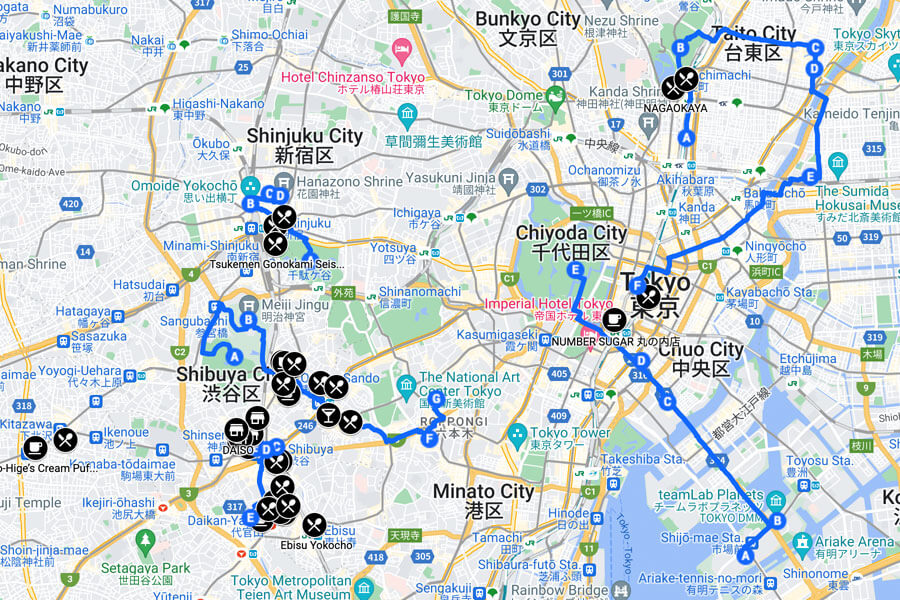
🗺 Save this map to your phone! If you are a Google user, click on the image of the map above. The map will then be saved to your “Recent” maps viewed. Click here for instructions on how to view the map later . It will work from your phone too.
And FINALLY here is a detailed list of what to do in Tokyo on your first visit:
Day 1: Yoyogi Park, Harajuku, Omotesando, and Roppongi
Tip: Choose a weekend (Saturday or Sunday) for this itinerary. The places I’m going to mention today are better to be visited on weekends!
1. Visit Yoyogi Park and Meiji Jingu
You can start your day by exploring Yoyogi Park . It’s a huge park with a pleasant shaded walk and all of the walking routes will go through Meiji Jingu , a beautiful Shinto shrine, where you can buy an amulet and other traditional souvenirs.
Don’t forget to do the water purification ritual at the temple entrance. Every temple in Japan will have a small fountain with some wooden ladles. Take some water using the ladle, then transfer some of that water to your hands and use it to wash your mouth. Do NOT use the ladle directly to wash your mouth!
If you’re visiting on a weekend, you might even see a Shinto wedding there as well. I was lucky enough to see one when I visited.
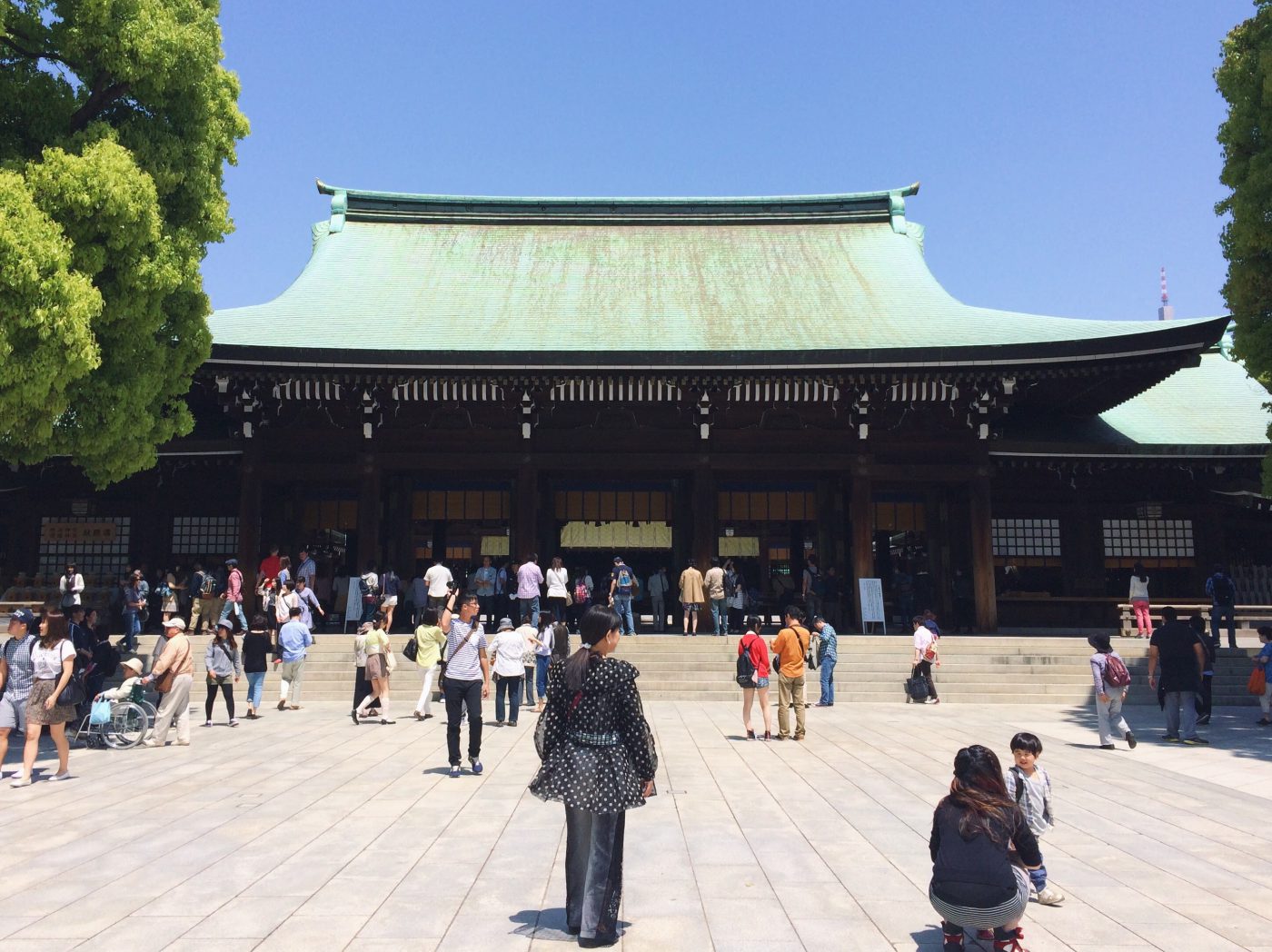
2. Explore Harajuku
Next, you can check out Harajuku , a walkable distance from Yoyogi Park (it’s actually right across from it), and walk along Takeshita Dori . Harajuku embodies everything you’ve heard about modern Japan – It’s a crazy area filled with people, trendy shops, and street food.
Harajuku became well-known as the hangout spot for the trendy youngsters who would wear their most outrageous, fashion-forward outfits. Sadly, this is a dying culture and they’re not seen as often as they used to, so to increase your chance of spotting these trendsetters you might want to visit on a weekend.
You can easily spend 2-3 hours in Harajuku just walking and looking at the various shops. I recommend dropping by Laforet , a shopping center at the end of Takeshita Dori. Harajuku is full of unusual fashion items on its own, but Laforet is probably the center of all the crazy fashion.
And you’ve got to try Japanese Crepes while you’re here! That’s what the Harajuku area is known for. There are also a bunch of other cute eats on the street, such as the animal-shaped gelato from Eiswelt Gelato.

3. Omotesando, Aoyama & Roppongi
If you keep walking along Takeshita Dori towards the east, you’ll end up in Omotesando , Aoyama , and then Roppongi . In total, this is about a 3km walk from Harajuku station and very pedestrian friendly. The entire route is lined up with shops and food.
Here are some notable places you can stop by on your walk
- Tokyu Plaza Omotesando Harajuku for a quick photo op too. This building has these geometric-shaped mirrors on the ceiling and it makes for an amazing picture.
- MoMA Design Store Omotesando – MoMA is the Museum of Modern Arts in NYC , but they have a few stores in Tokyo selling some of the best-rated items.
- Nezu Museum in Aoyama – East Asian art museum with a private collection

4. Roppongi Hills
I recommend ending your day at the Tokyo City View And Sky Deck in Roppongi Hills where you can take the lift up to the rooftop and get an amazing view of the city, including the iconic red Tokyo tower, for just 1,800 yen. If you’re lucky and the day is clear, you might even see Mount Fuji! I recommend going close to sunset to get the best lighting for photos. Make sure you stay a little bit after sunset too for nighttime photography.
You can book the Tokyo City View Observation Deck Admission Ticket here , which I recommend since it’s cheaper than buying on the spot.
Tokyo Pass: The Tokyo City View is one of the attractions included in Tokyo Pass
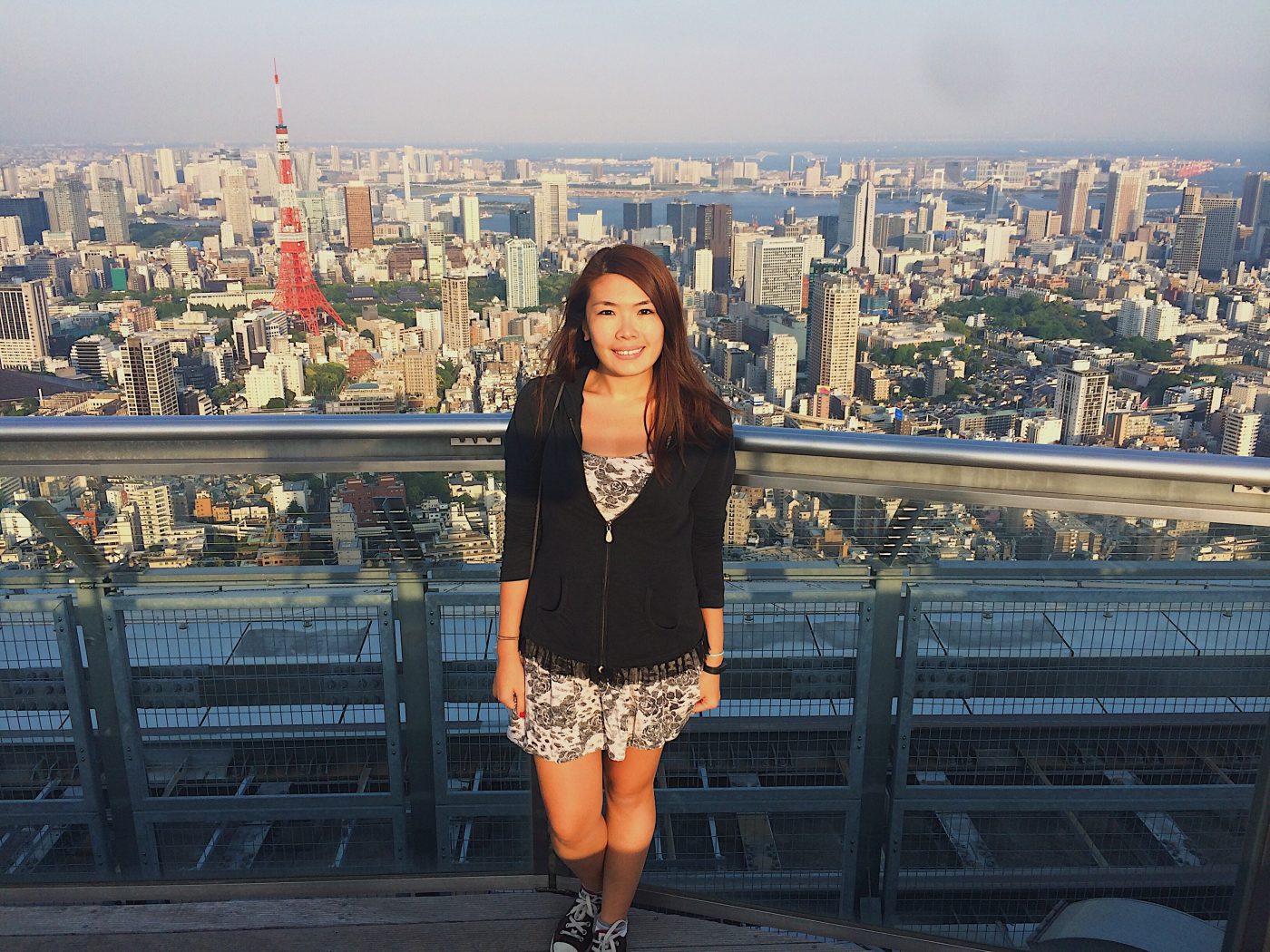
If you are a museum person, Mori Art Museum is also in the same building, and access to the permanent exhibition is included with the observation deck ticket. They might have an interesting exhibit to check out too, but you need to buy the ticket separately.
But if you are a fan of Japanese wood interior design, then head to Tokyo Midtown in Roppongi, the most aesthetic mall I’ve been to. It also has great stores to get souvenirs from.
Where to eat and drink in Harajuku, Omotesando, Aoyama, and Roppongi
- Japanese Crepes at Harajuku . This can be found all throughout the famous Takeshita Dori in Harajuku, so just snap them up whenever you see a stall. It wouldn’t be a very big stall, usually just enough for one person to serve you the crepes through the stall window. You can customize your crepe with different fruit toppings and sweet syrup.
- Zaku Zaku Ice Cream . “Zaku-zaku” is Japanese onomatopoeia for something crispy/crunchy (I swear, Japanese people have sounds for everything). As soon as you enter the shop, you can smell a delicious buttery sweet and savory aroma wafting in the air – similar to caramel popcorn but BETTER. This place is actually famous for its creampuff, filled with Hokkaido cream which is made fresh on the spot and coated with their crispy ‘croquant’ made from baked almonds. But the Harajuku store also has an ice cream version that is exclusive to this branch.
- Eiswelt Gelato on Harajuku – This shop has the cutest animal-shaped gelato! Take note though, It’s only open on weekends.
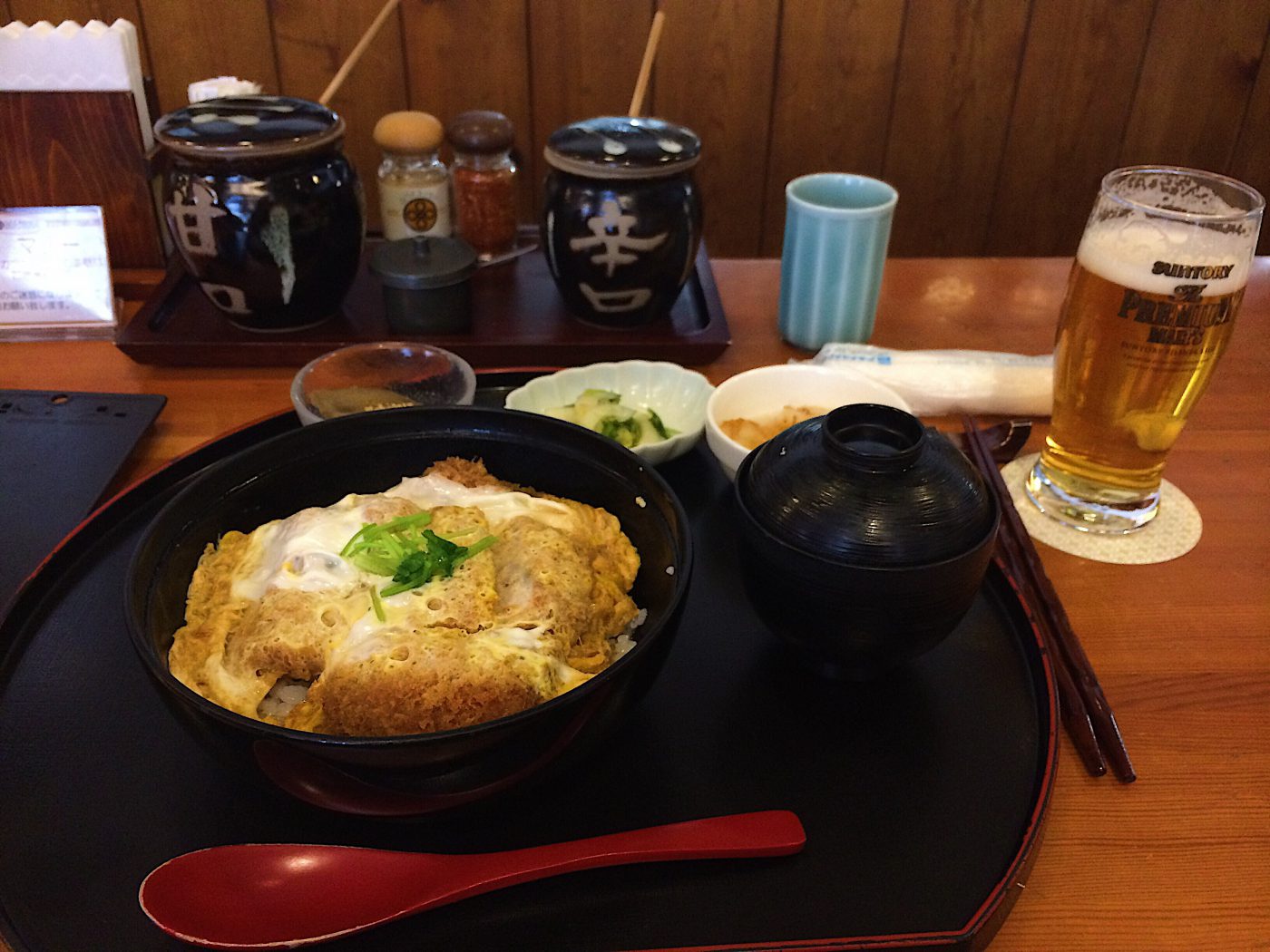
- Maisen Tonkatsu in Omotesando ( maps ). While walking around Omotesando, be sure to stop by here for one of the best tonkatsu in town. Their specialty is Kurobuta aka the Japanese black pork. Their tonkatsu set can get pretty pricey, but there are cheaper alternatives such as the cutlet rice bowl.
- Sincere Garden for a vegetarian option in Omotesando ( maps ). My friends will be surprised I’m recommending a vegetarian restaurant, yet here we are. Long story short, I made a friend at the hostel I was staying at in Asakusa and ended up tagging along for lunch with him and his Tokyo friends. We ended up at this vegetarian place that serves all organic food in Omotesando. For someone who loves meat as much as I do, this was actually a very decent meal! I feel that it fits perfectly with the trendy vibe of Omotesando. The entire cafe has this light wooden theme and made me feel good about eating healthy food.
- Tempuraya Miyagawa in Aoyama ( maps ) – A small establishment offering tempura set at lunch and omakase multi-course tempura at dinner. I think it’s better to go during lunch, but dinner should be great too.
- Tokyo Whisky Library ( maps ) – Great place to try whisky if you’re a fan, including the famous Japanese whisky.
Day 2: Shibuya and its surrounding areas (Ebisu, Nakameguro, Daikanyama, and Shimokitazawa)
For this day, we will be exploring Shibuya, one of the major areas of Tokyo. This itinerary can be done any day, on weekdays, or on weekends.
1. The Famous Shibuya Scramble Crossing
Check out Shibuya for the famous Shibuya Scramble Crossing , where every few minutes the pedestrian light turns green and the entire crossing will be filled with a ton of people coming from all directions.
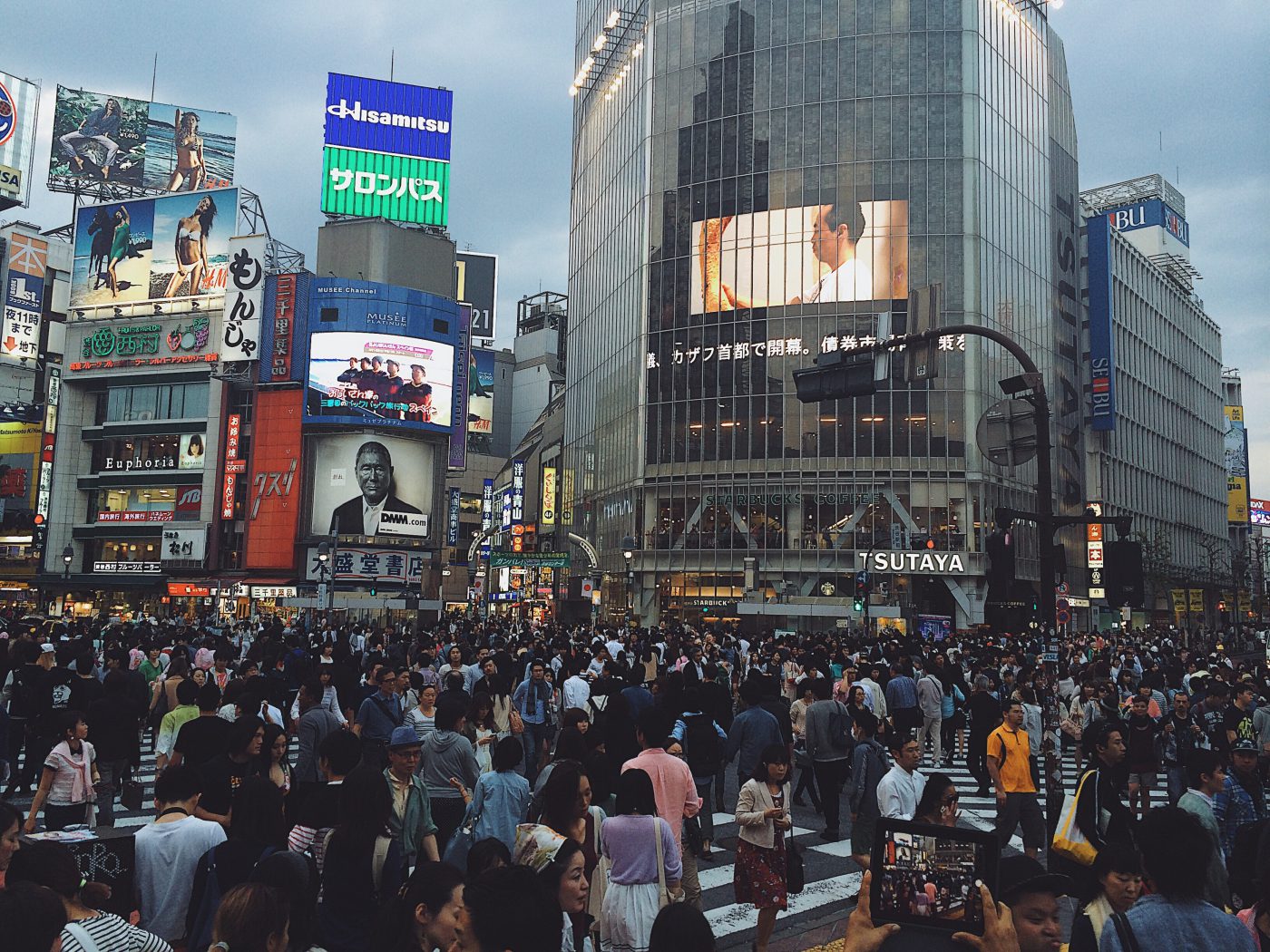
Located just outside the Shibuya station, this crossing has been featured in many movies, video games, and music videos. It’s an unusual scene and the true definition of organized chaos – everybody is going everywhere in all directions but amazingly, nobody is bumping into each other.
I recommend doing this during the day to see the craziness in all its glory. There is a famous Starbucks where people love to sit and watch the scramble crossing from, but I find it to be quite crowded so I prefer to just watch from ground zero (plus it’s free!).
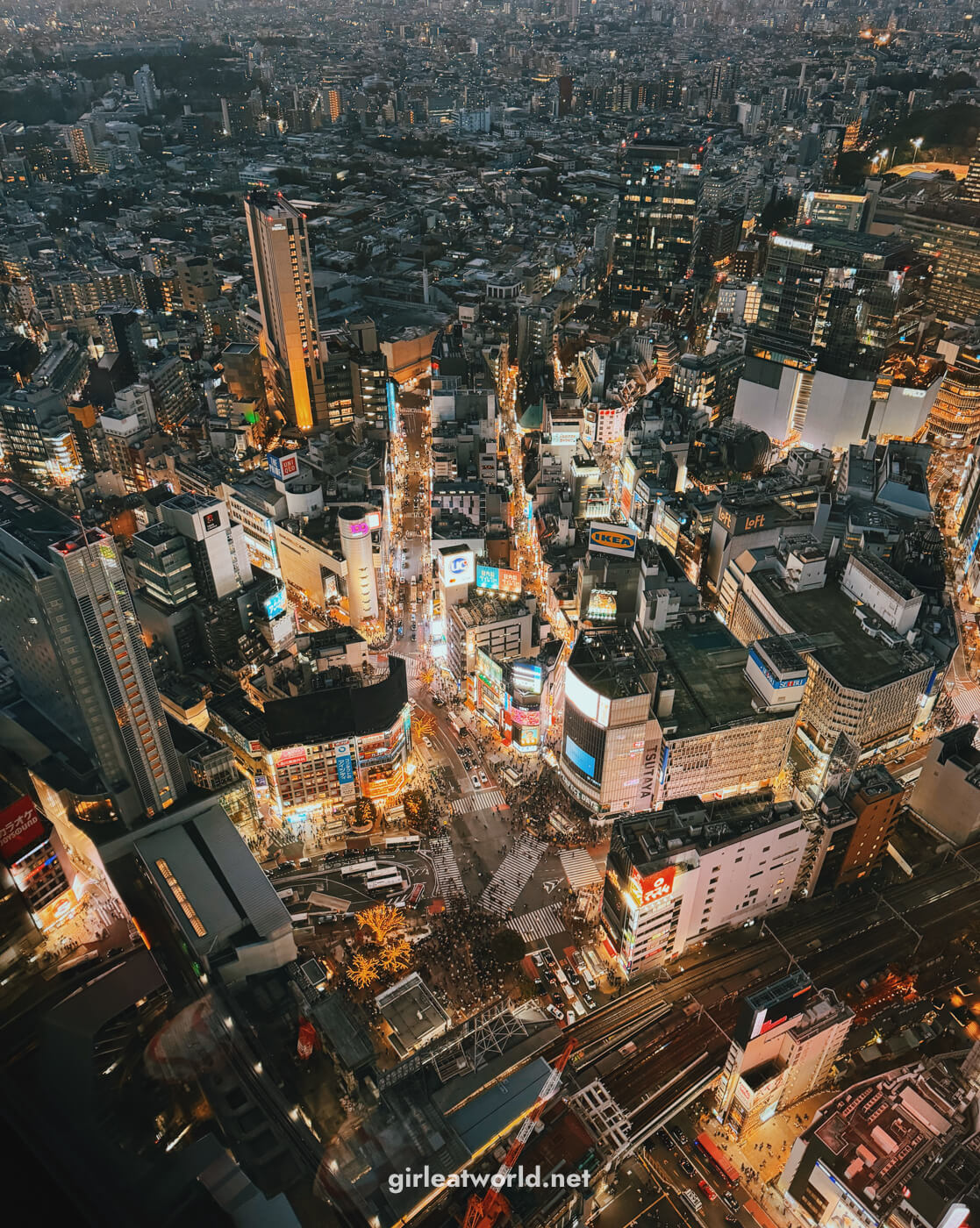
2. Statue of Hachiko, the loyal dog
At one corner of the scramble crossing, you can check out the famous Hachiko Statue . Hachiko is a legendary Japanese dog who is famous for being extremely loyal. He kept waiting for his owner’s return at the train station, years after he had passed away. His loyalty touched the heart of many Japanese and he has become immortalized in front of Shibuya station, waiting forever for his owner.
Shibuya is a major train station and it can get pretty confusing when you are trying to meet up with friends, so the Hachiko statue has become a famous meeting point.
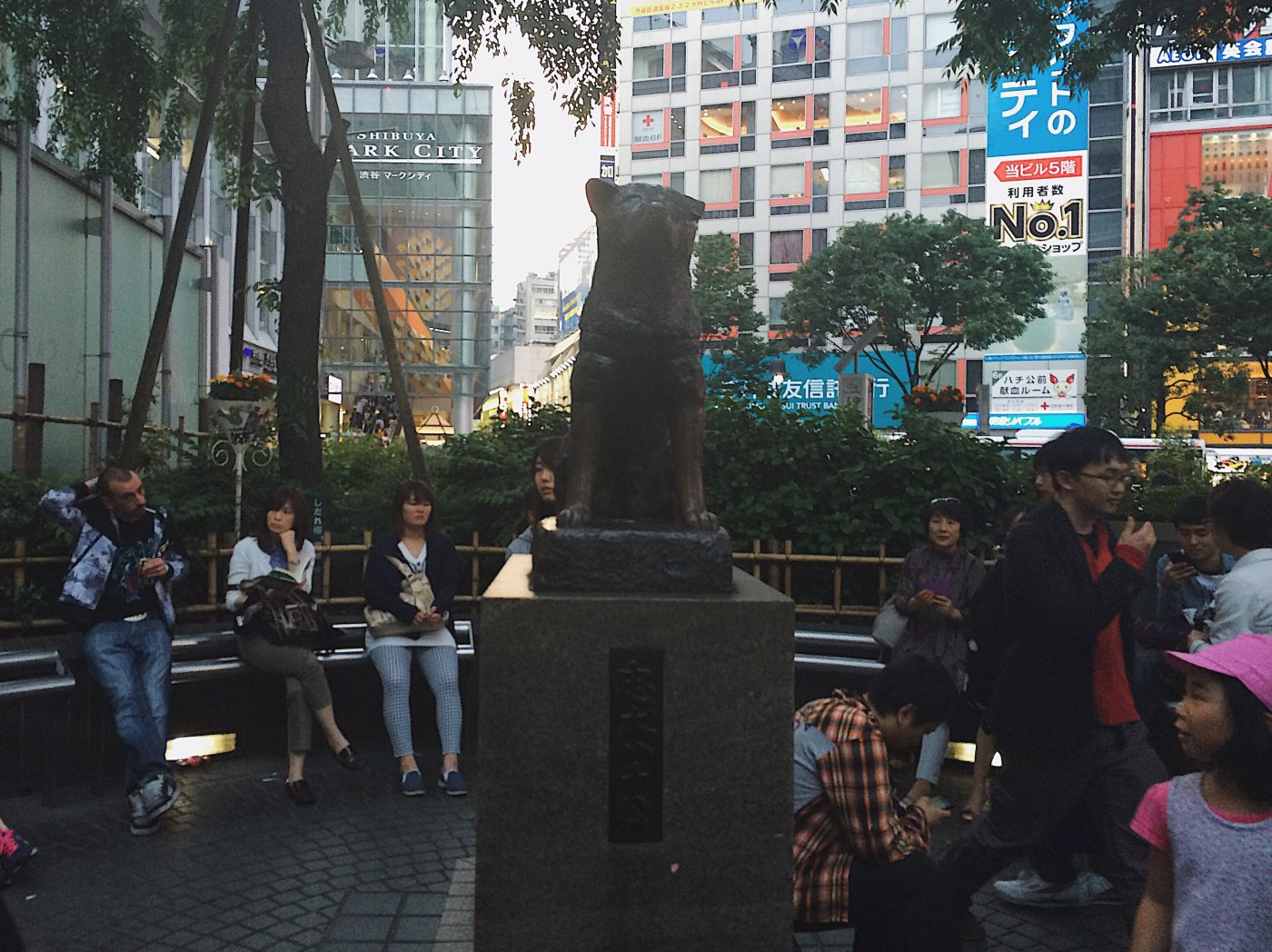
3. Shibuya Sky Observation Deck
If you fancy seeing Tokyo from above, you can check out the Shibuya Sky observation deck . This is one of the newest observation decks in Tokyo, having opened to the public in early 2020, and in my opinion the best view of Tokyo from above that you can get at the moment.
It is currently the most popular observation deck in Tokyo, you’ll need to book tickets ahead of time . You can read my post about visiting Shibuya Sky for more information.
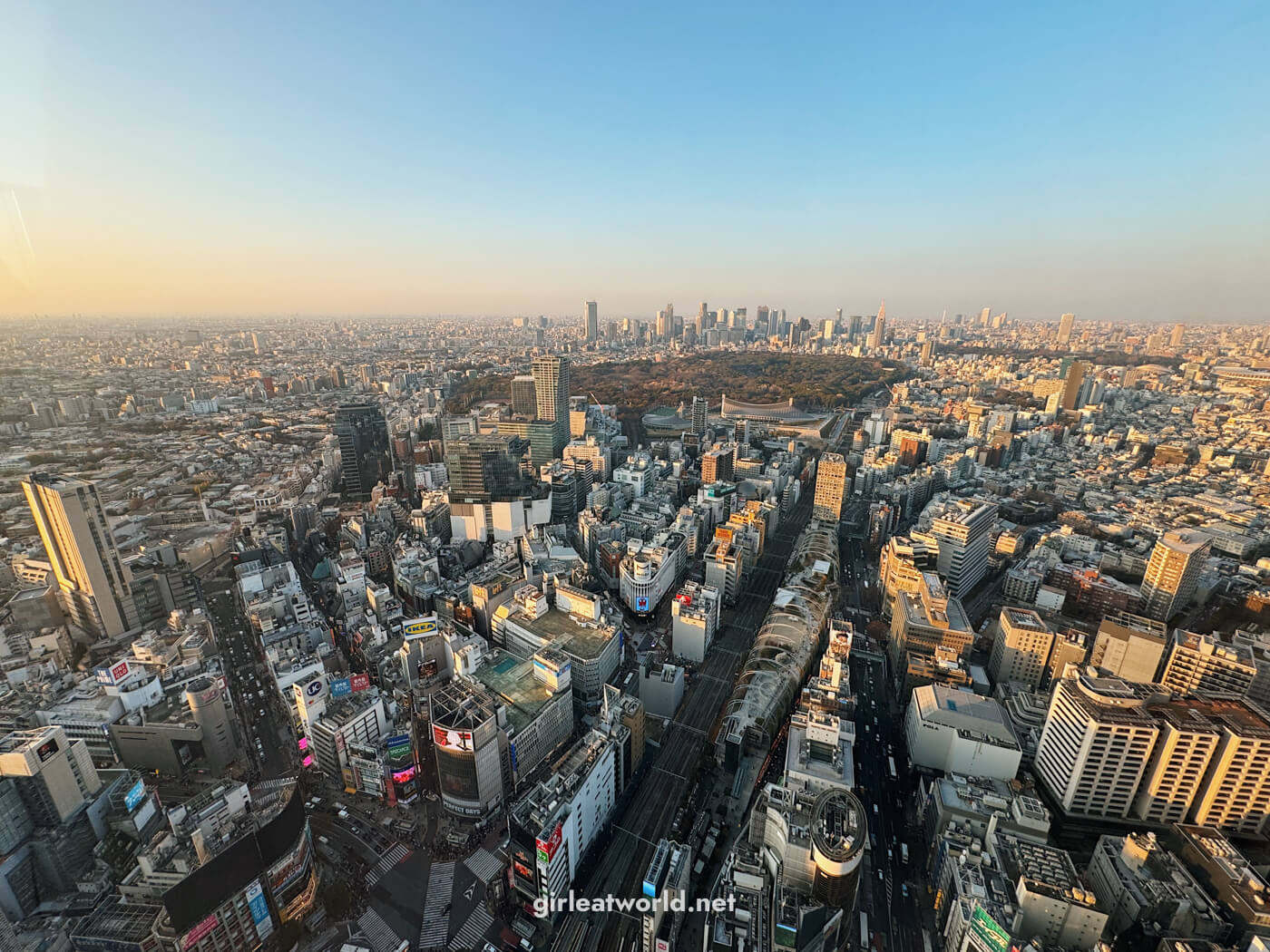
Tokyo Pass: The Shibuya Sky observation deck is one of the attractions included in Tokyo Pass
4. Shopping in Shibuya
You can take your time exploring more of Shibuya. It’s a huge shopping district and you can even say it’s the center of Tokyo, along with Shinjuku.
Check out Shibuya Loft for floors of random home goodies, each floor with its own theme. You can also check out Don Quijote (aka Donki) for even more random stuff, or Nitori for home goodies similar to IKEA. For general shopping, I recommend checking out Hikarie building, which features lots of Japanese brands and goodies you can buy for yourself or loved ones at home.

5. Nightlife in Dogenzaka
If you are tired or shopping is not your thing, I recommend going to Dogenzaka area. Formerly a yakuza hangout, Dogenzaka is now filled with ramen shops, pubs, izakaya (small stalls selling skewered meats), and even… love hotels. It’s a good place to be if you are there for the nightlife.
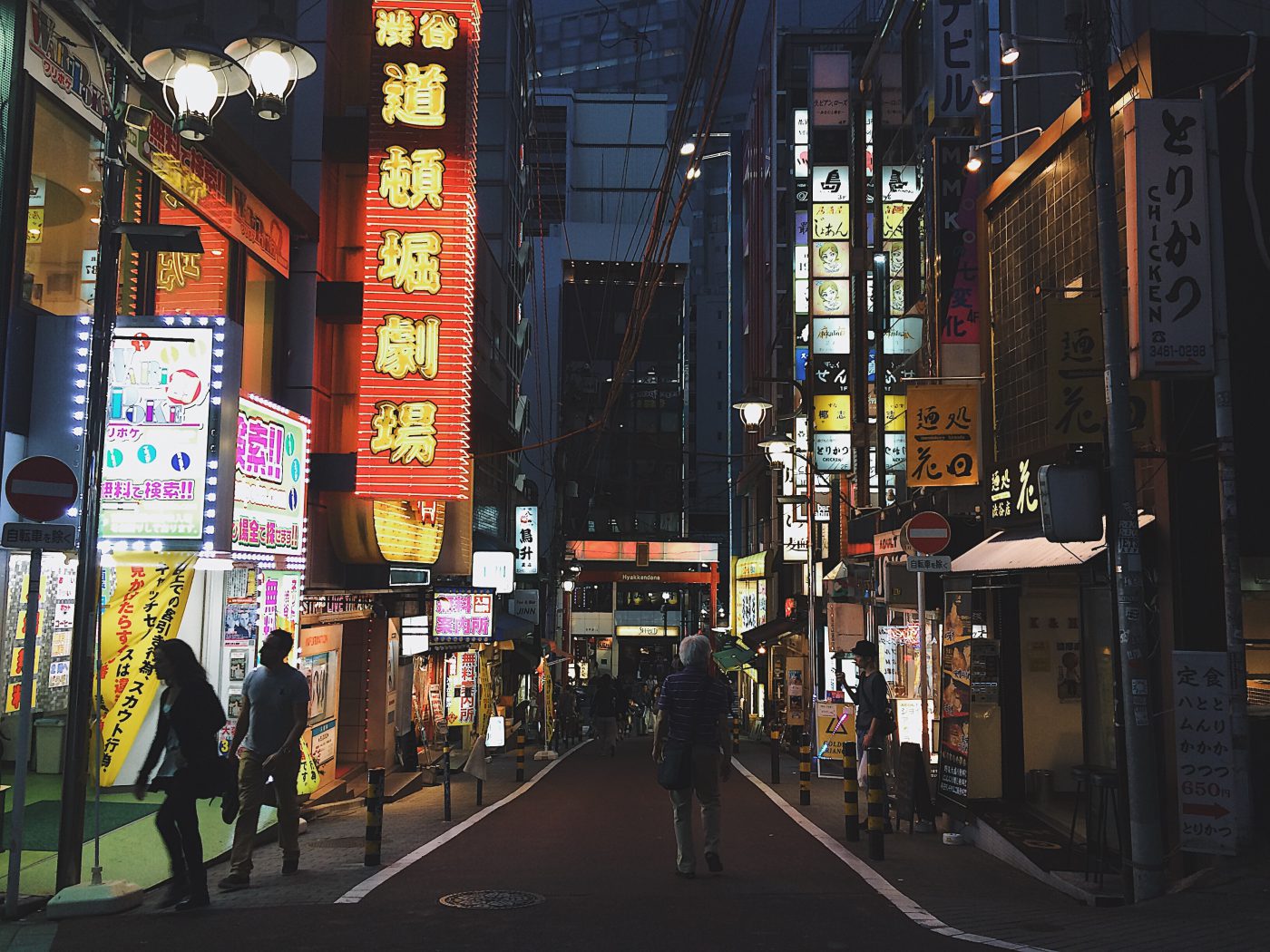
6. Neighborhoods near the Shibuya area
If you still have some energy after the madness that is Shibuya, you can take the train to Shimokitazawa, Daikanyama , Naka-Meguro, or Ebisu for some cafes and check out the nightlife. These are more laid-back residential areas.
Tip: You can check out my Daikanyama Guide for more information on what you can find and do in Daikanyama.
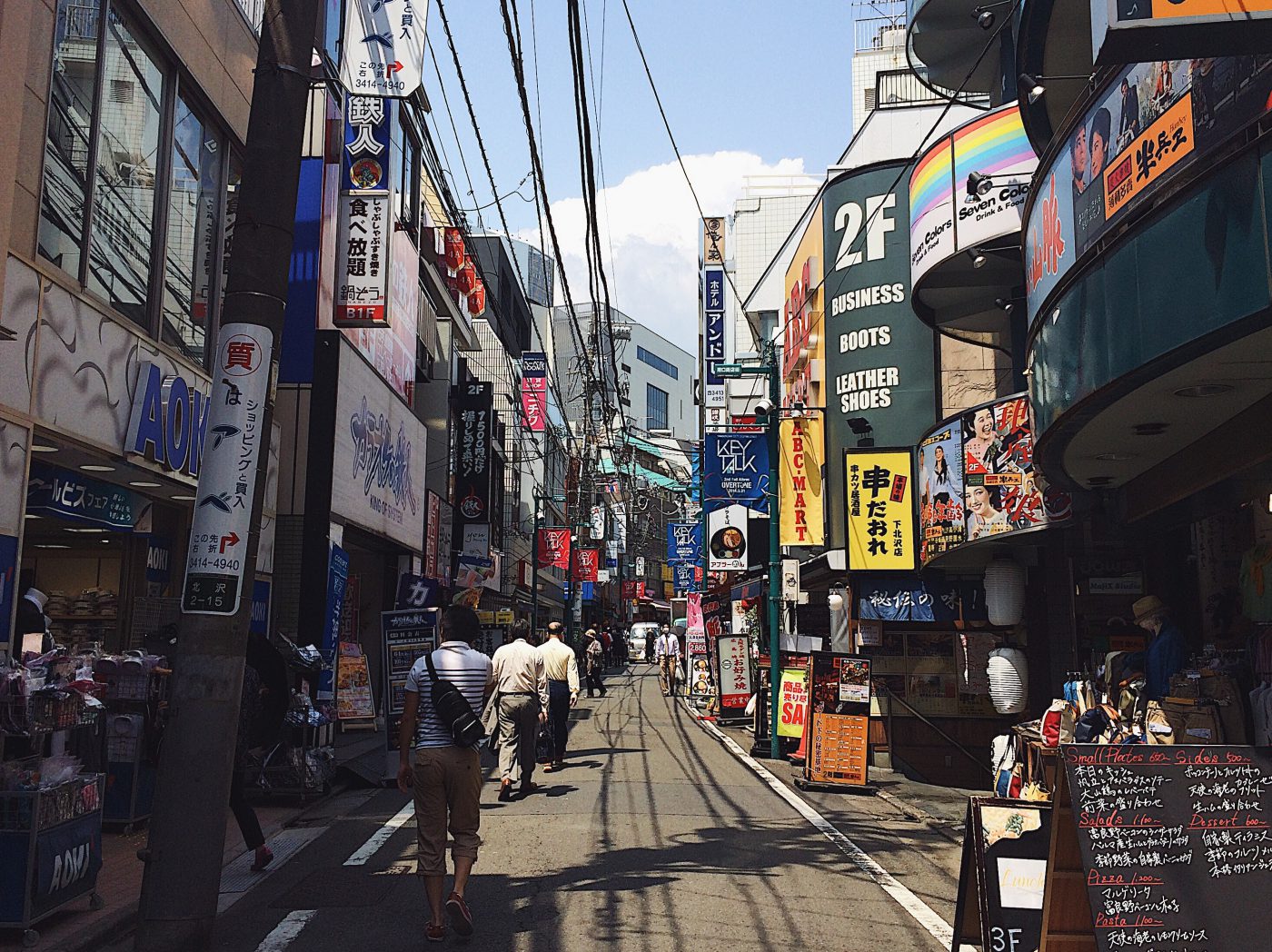
Where to eat in Shibuya and its surroundings
- Ichiran Ramen in Shibuya ( maps ) for the famous Tonkotsu Ramen from a vending machine. Basically, you go up to a vending machine outside the restaurant, punch in your order, receive a ticket based on your order, make payment, then wait to get seated in your own personal cubicle to slurp on your ramen. They have many other branches around the city, so you don’t have to eat this in Shibuya.
- Katsukichi Bodaijyu in Shibuya ( maps ) – Tonkatsu is one of the most popular meals in Japan, so you have to try it at least once while you are here, and if you eat pork. As a bonus, I love the decor of this place.
- Kushiyaki Bistro Fukumimi in Dogenzaka ( maps ) – If you want to experience an izakaya (bar) in Tokyo, this is the place to go.
- Gyukatsu Motomura in Shibuya ( maps ) – This place seats only 8 people at a time and you eat at the counter. There are two branches in Shibuya that are within 10-minute walk of each other, but they are both popular. Even though I came here at 2 PM, the line was still very long. They are famous for Gyukatsu, which is deep-fried and breaded beef. You’ll also get a personal stone stove which you can use to further grill your beef slices to the desired doneness.
- Shiro-Hige Cream Puff Factory in Shimokitazawa ( maps ) – Located a short walk away from Shimokitazawa station and tucked inside a very quiet residential area, this cafe is known for its Totoro-shaped Creampuff. The creampuff costs 420 yen each. I recommend having the creampuffs to go bc there is an extra fee for having it at the cafe (it becomes 465 yen). They come in four flavors (custard, chocolate, strawberry and green tea) but I personally think the regular custard one is the best.
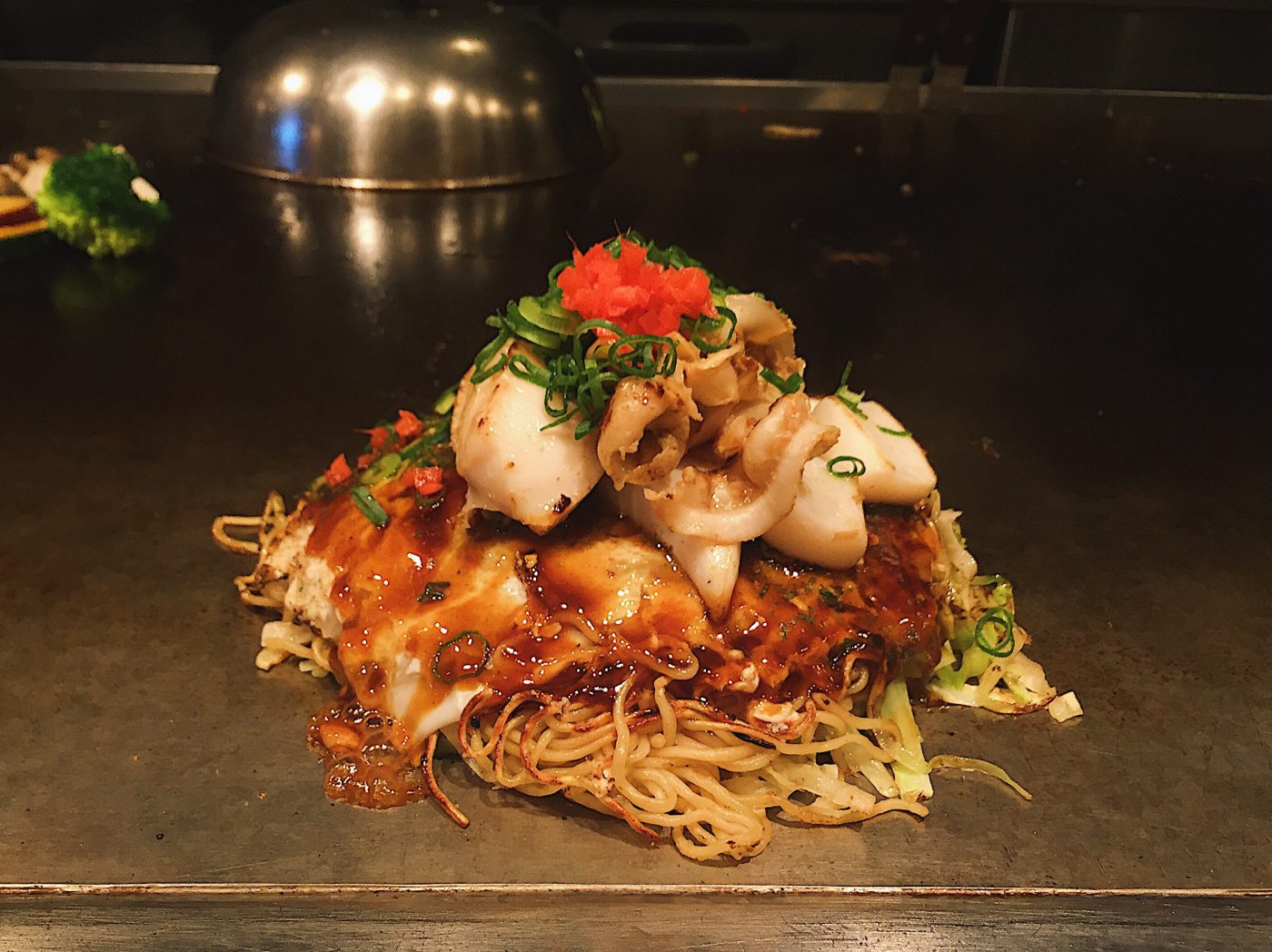
- Hiroki in Shimokitazawa ( maps ) for Okonomiyaki in Shimokitazawa. There are only 8 seats in this hole-in-the-wall restaurant. For each Okonomiyaki, you get to pick soba or udon as the noodle base, then add on toppings as you want. There was no English menu (UPDATE: I have been told there is now an English menu!). Try to sit on the counter if you can, this is where you can watch the action as it happens. The chef will cook and mix your Okonomiyaki for you according to order and once done, he will push it to the hot plate area in front of you so the Okonomiyaki stays warm as you eat it off the counter’s hot plate.
- I also highly suggest visiting Daikanyama for one of your meals. Daikanyama has been dubbed the Brooklyn of Tokyo and they have tons of cool restaurants and cafes – you can check out my Daikanyama guide here
- Ebisu Yokocho in Ebisu ( maps ) – This was a random surprise find for me. I was just aimlessly walking around Ebisu when I decided to go into a random building that seemed very unassuming on the outside. Once inside, I was greeted with a lively atmosphere of people eating and drinking in rows upon rows of small restaurants. Sure enough, none of them had an English menu, but just put on your brave face and try something new. I randomly chose a modern sushi joint and was able to order with my very limited Japanese. I ended up with a plate of beef and mushroom sushi… which is interesting as that’s not what you’d normally expect.
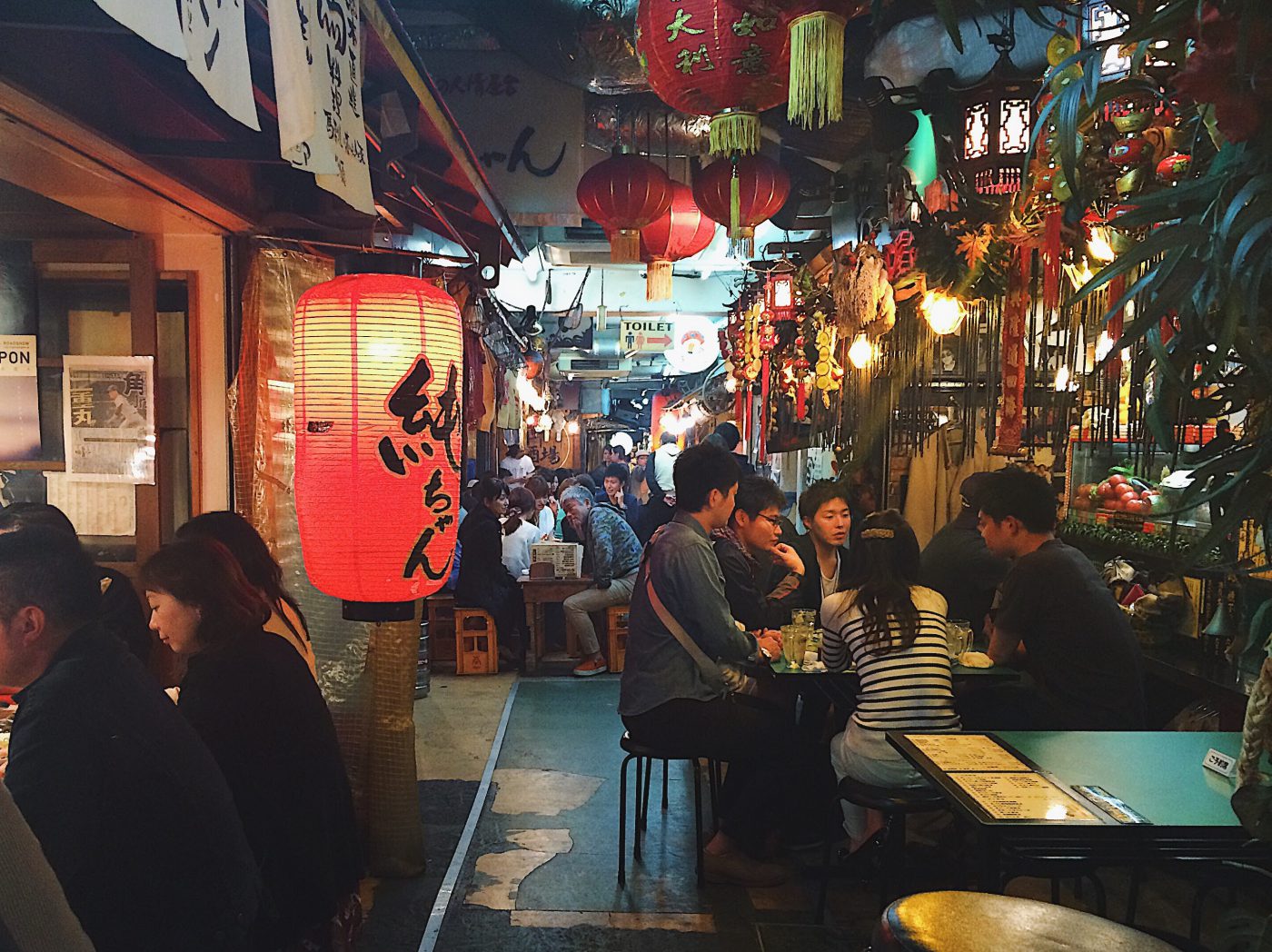
Day 3: Akihabara, Ueno Park, and Asakusa
Tips: Try to do this itinerary on a Sunday , since Akihabara streets are car-free on Sundays from 1-6 pm
1. Akihabara
As a first-time Tokyo visitor, you HAVE to check out Akihabara to experience firsthand all the unique and unusual things you’ve heard about Japan – the infamous Maid cafe, cat cafes, electronics, comic books, and floors and floors of arcade games, just to name a few.
If you go on a Sunday , they close up the street from cars and open it up for pedestrians so you can roam around freely.

2. Asakusa and Ueno Park
Then once you’re done with Akihabara, you can walk to Ueno Park for an afternoon stroll. If that’s not your thing, then you can head straight to Asakusa . Asakusa is a backpacker district so there are lots of cheap food and shopping you can do here.
Check out Senso-ji , a famous Buddhist temple. There is a cool street in front of this temple, called Nakamise Shopping Street , which has lots of street food you can try and souvenir stalls (PS: This was where one of my earliest Girl Eat World shots was taken). If history is your thing, the Edo-Tokyo Museum is also near this area.
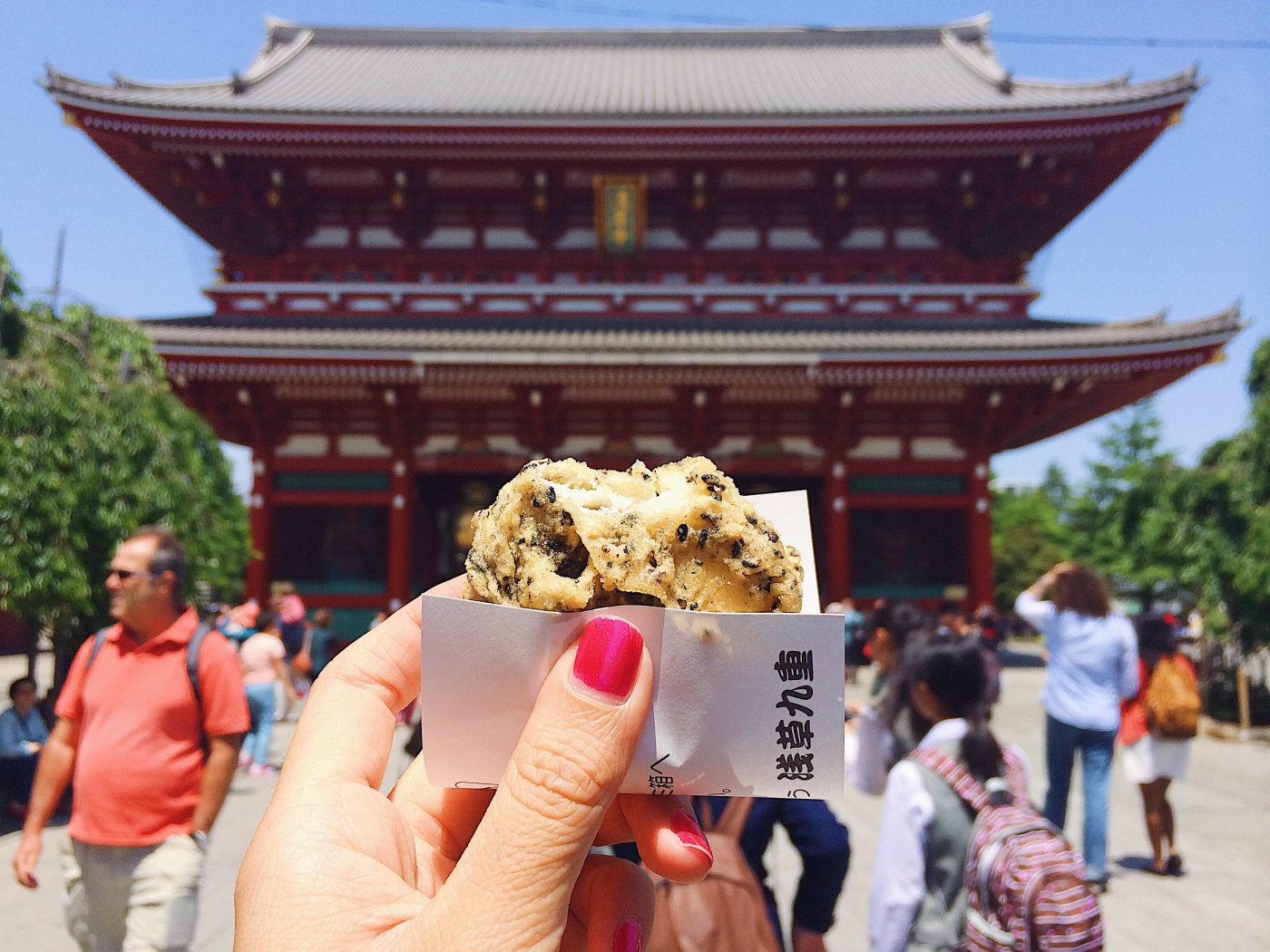
3. Tokyo Skytree Observation Deck
Tokyo Skytree is currently the primary television and radio broadcast of the Kanto region. When Tokyo Skytree was built in 2010, it became the tallest structure in Japan. At its full height of 634m, it also became the tallest tower in the world.
Early Bird Ticket is cheaper! There is a 300-400 yen discount if you buy the ticket online ahead of time . Buying tickets on the same day is more expensive.
Tokyo Skytree is located only 20 minutes away from Asakusa, so it’s a great option if you’re looking for an observatory and haven’t been to one on this trip.
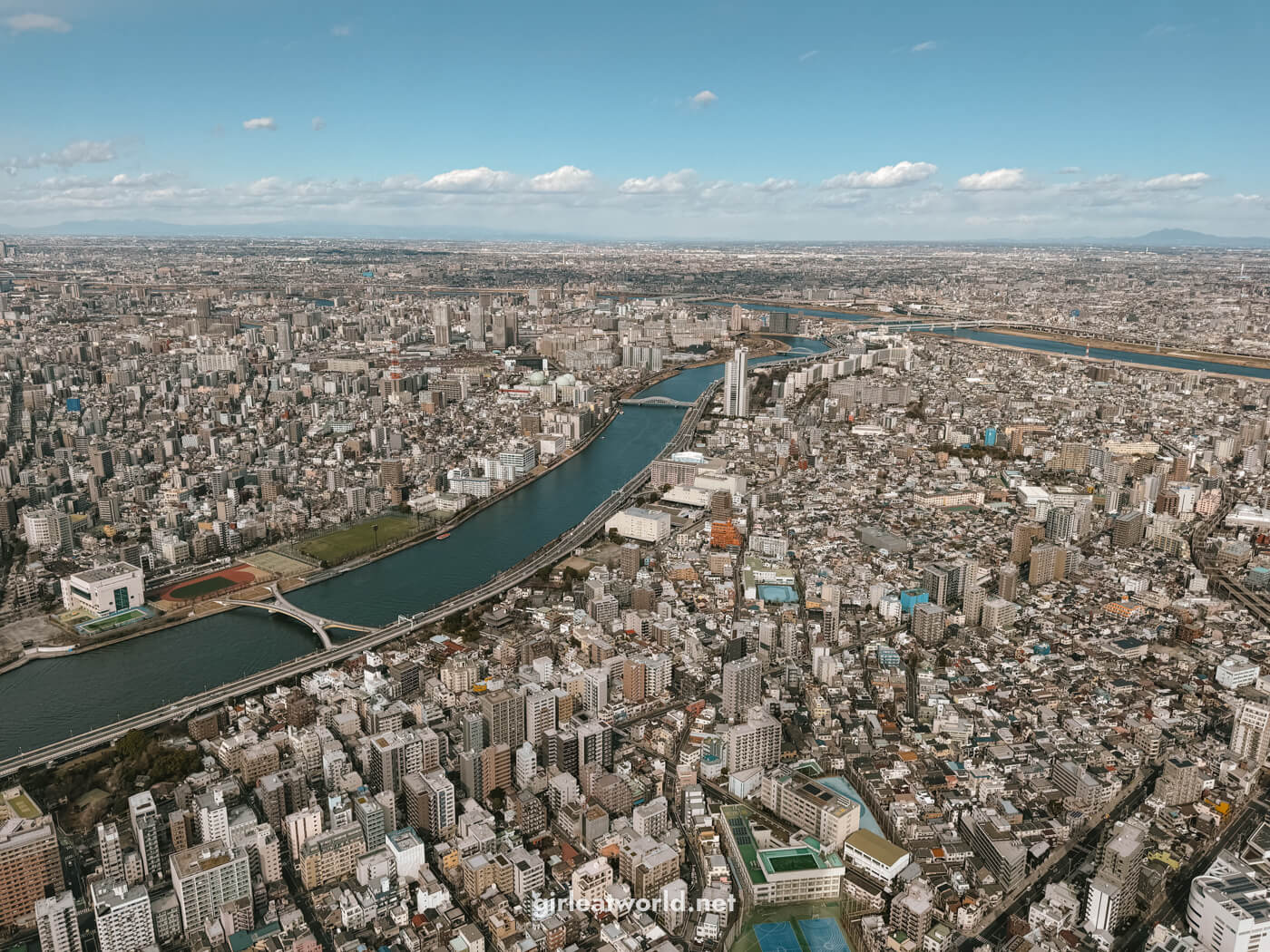
The area is also a great choice to spend a few hours in – aside from the observation decks, there are also the Sumida Aquarium, Tenku Planetarium, and shopping malls with great food options at the bottom of SkyTree Tower.
4. Tokyo Station
If you are STILL short of things to do, you can also head to Tokyo Station , which is very close to Ueno station, for food and shopping. I’ve actually included Tokyo Station in Day 5 itinerary , but if you find yourself there and have time, then feel free to scroll down to Day 5 on what you can do at Tokyo Station.
Where to eat
- Rokurinsha ( maps ) – Tsukemen is a type of ramen that’s served cold and with a separate broth for the noodles to be dipped into. Rokurinsha is a Tsukemen shop located in the basement of Tokyo station, and it’s a classic beloved by tourists and locals. Expect a long queue unless you’re going at an off-hour and on weekdays. I went here on a Wednesday at 8 pm and waited 30 minutes in line. But really though, it was worth every minute. If you find the queue is too long, you can come back here again on the Day 5 itinerary (scroll down below) OR you can have it on your way out of Japan if you are flying through Haneda airport.
- Beerbal ビアバル NAGAOKAYA ( maps ) – I actually came across their stall while I was at Fuji Rock Festival through an acquaintance’s recommendation. Their lamb chops were seriously the best I’ve had. I still dream about it, so I stalked them down and found out that they have a restaurant/beer garden in Ueno. Please give them a visit and let me know how you like it!
Day 4: Explore Shinjuku
Shinjuku is a major area in Tokyo. It has offices, pubs, restaurants, and izakayas. If you’ve seen that iconic photo of a street in Japan filled with neon lights (like the one below) it was probably taken in Shinjuku. Shinjuku deserves its own itinerary because this area is massive.
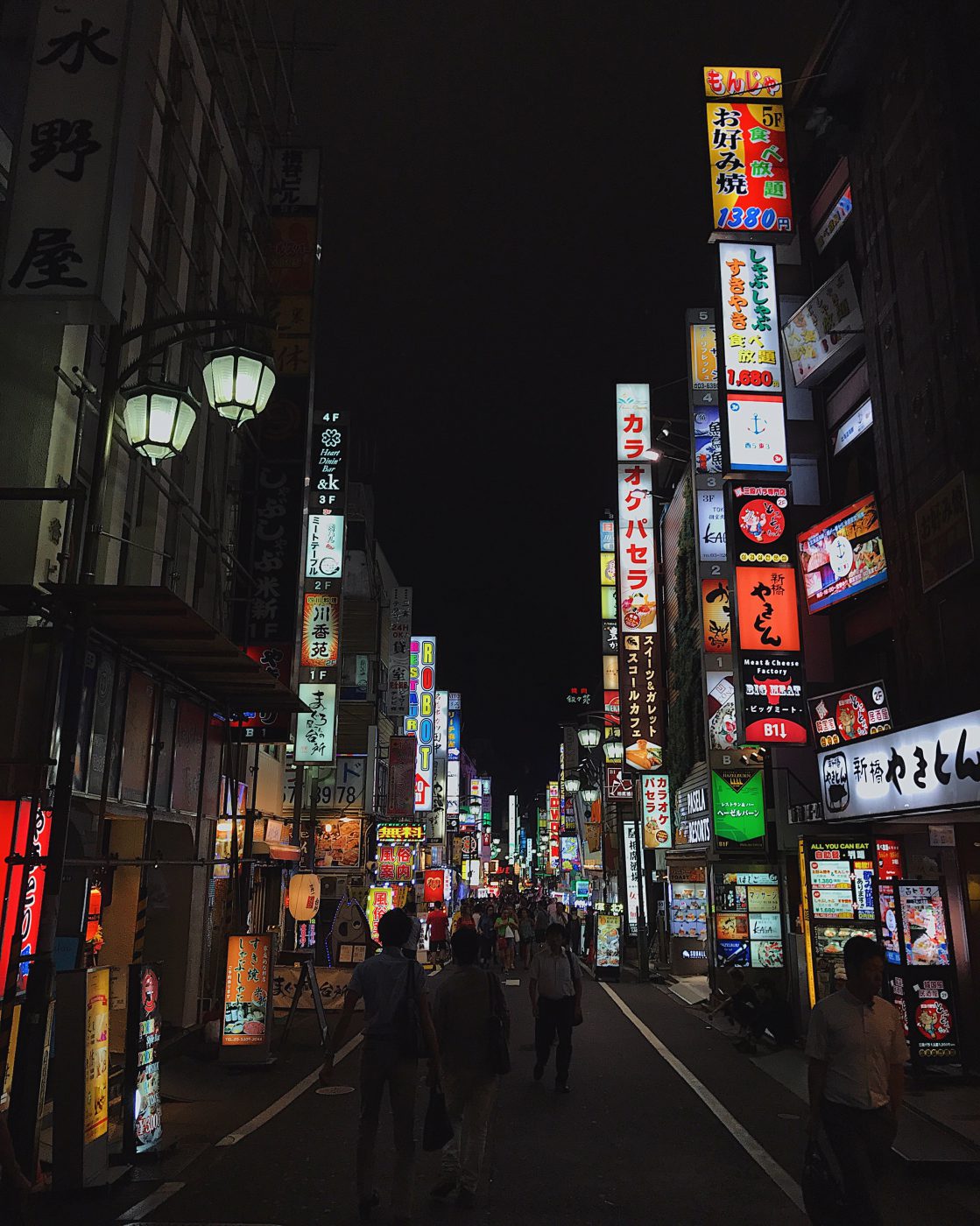
Here is what you can do in Shinjuku:
1. Visit Omoide Yokocho
First, visit Omoide Yokocho . “Omoide” means memory and “Yokocho” is a lane / small alley, so loosely translated as you are walking down memory lane… everything here feels nostalgic, traditional Japan. There are tons of little stalls (izakaya) and while most don’t have any English menu, some have pictures.
I suggest going with Google Translate if you plan to know everything you are eating. Otherwise, just point your fingers and be surprised. They mostly serve small skewered meats but be warned that they aren’t exactly cheap. You can drink beer or whiskey highball here too.
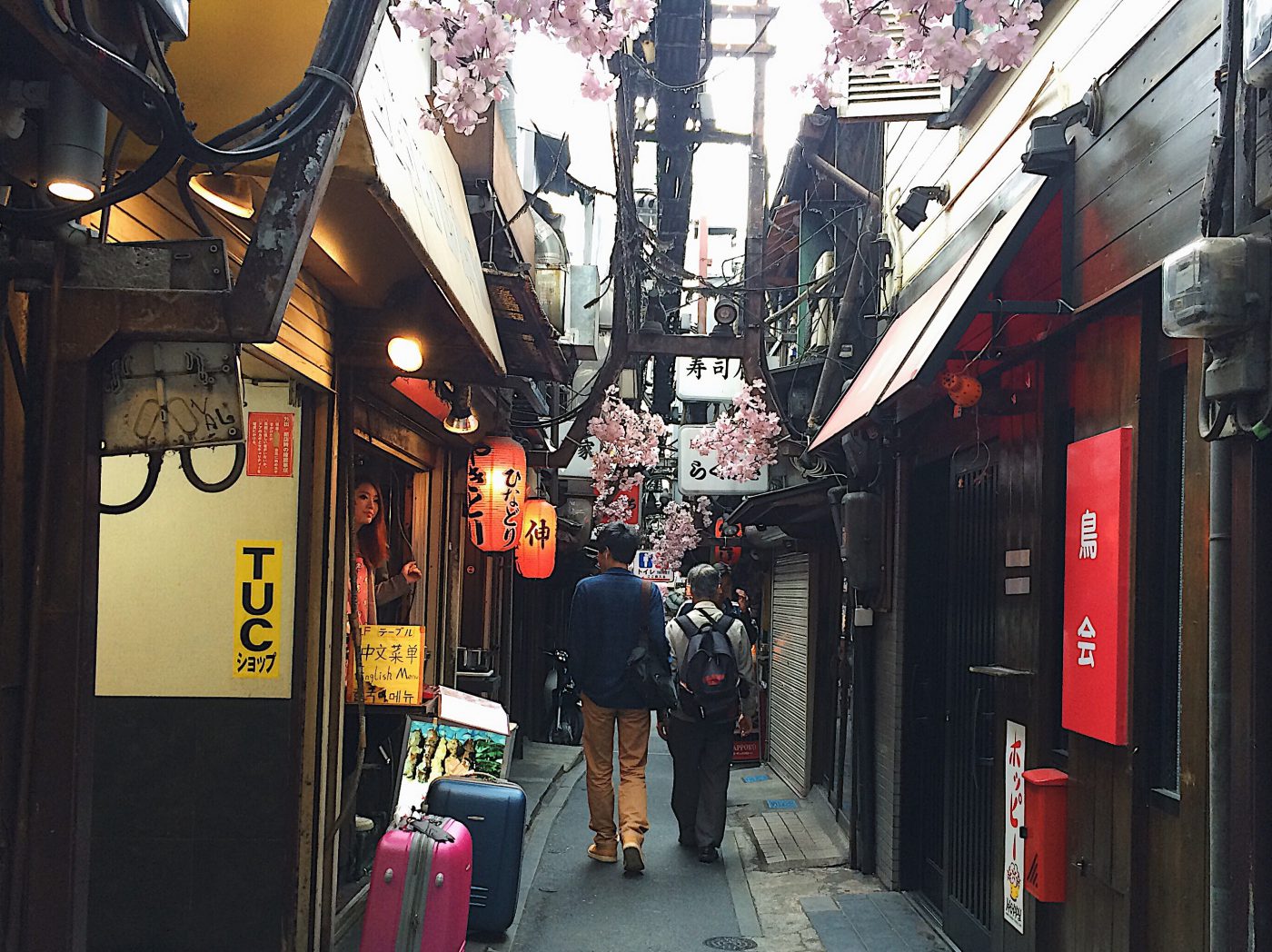
2. [Temporarily Closed] Robot Restaurant
Tip: The restaurant was closed in 2020 due to COVID. But keep an eye on the website to see if they have reopened
At night, go to the famous Robot Restaurant for dinner, drinks, and an incredible Japanese show. It’s this crazy 90-minute show with lasers, dances, and… well, robots. Basically, it’s the most modern Japanese experience you can get. You have to purchase the admission ticket ahead of time, and I suggest booking it here through Klook since they provide the cheapest price: Book Robot Restaurant . If you go for the first showing (4 PM), the ticket is slightly cheaper.
Even though it’s a “restaurant”, I wouldn’t bother getting the bento (boxed set meal) there since there are better options for a meal around Shinjuku.
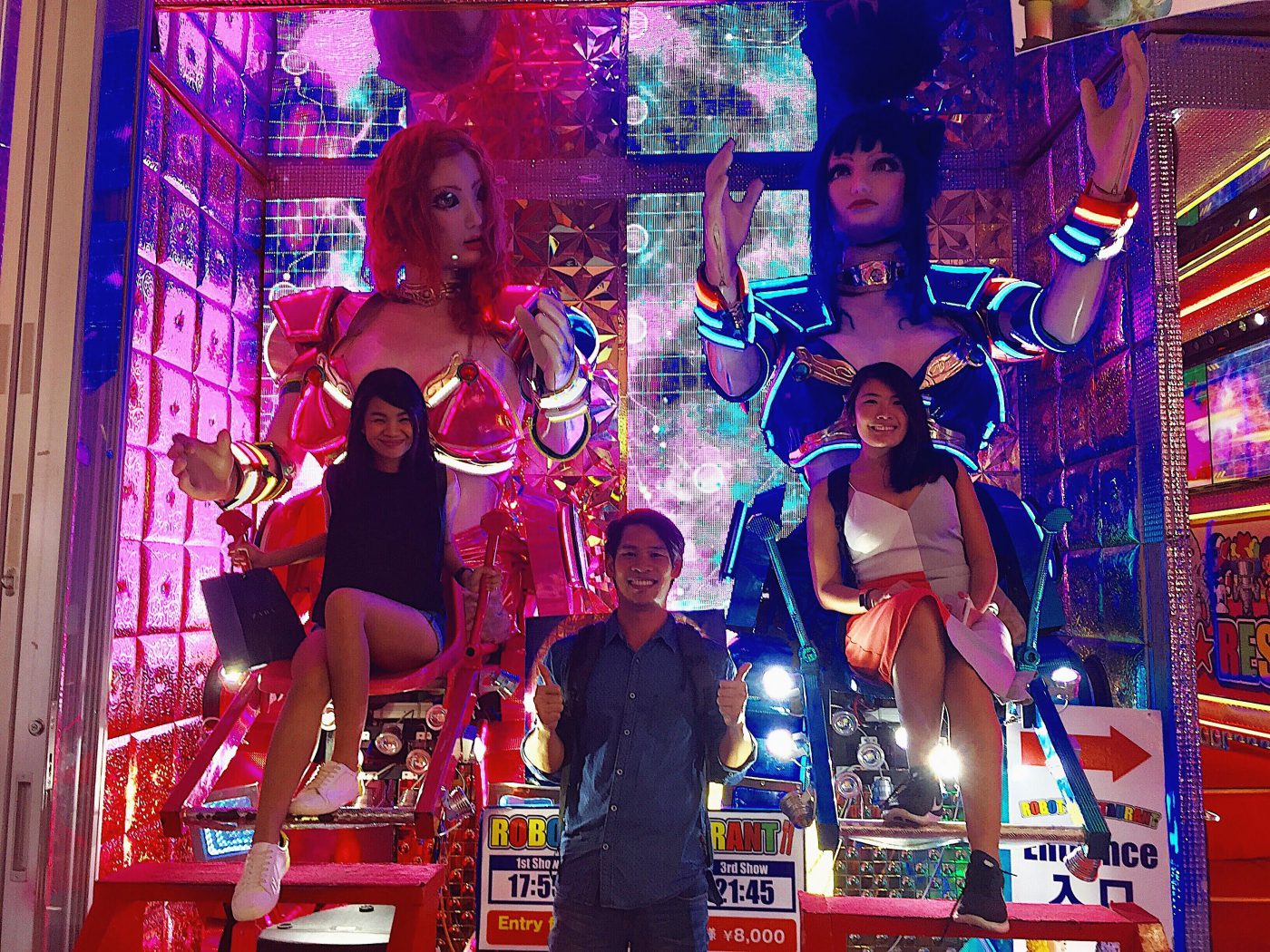
3. Golden Gai
After the show, you can head over to Golden Gai for some nightlife. This area was super cool! It was filled with tiny bars with different themes, so you can easily bar hop to your heart’s content – provided you are fine that each bar will have a cover charge of $5-10.
While Tokyo is generally safe, but Golden Gai might be an area where you want to be a bit more alert as the area could be tourist trappy and you might run into unsavory crowds. They also do not like photos taken within the area of Golden Gai. A couple iPhone shots are probably okay, but definitely do not go there and snap photos with a camera gear.
If you are staying out late, keep in mind the last train in Tokyo is just before midnight so you have to make sure you are on the train platform by then. Or else you will have to fork out some cash for the taxi ride back home.
4. Shinjuku Gyoen National Garden
However, if nightlife is not your thing and you’re visiting Shinjuku during the day, then you can stop by Shinjuku Gyoen National Garden for a peaceful stroll. The park is just a short walk from Shinjuku station.
Shinjuku Gyoen is especially popular during the Sakura season in spring and Momiji season in the fall. There is an entry fee of 500 yen for every adult, but kids 15 and under can enter for free. If you ask me, it’s worth every cent! You can use your IC card to enter the park or buy a ticket at the entrance.
The park has great amenities – clean restrooms, vending machines with hot and cold drinks, plenty of food options, snacks, and even Starbucks inside the park.
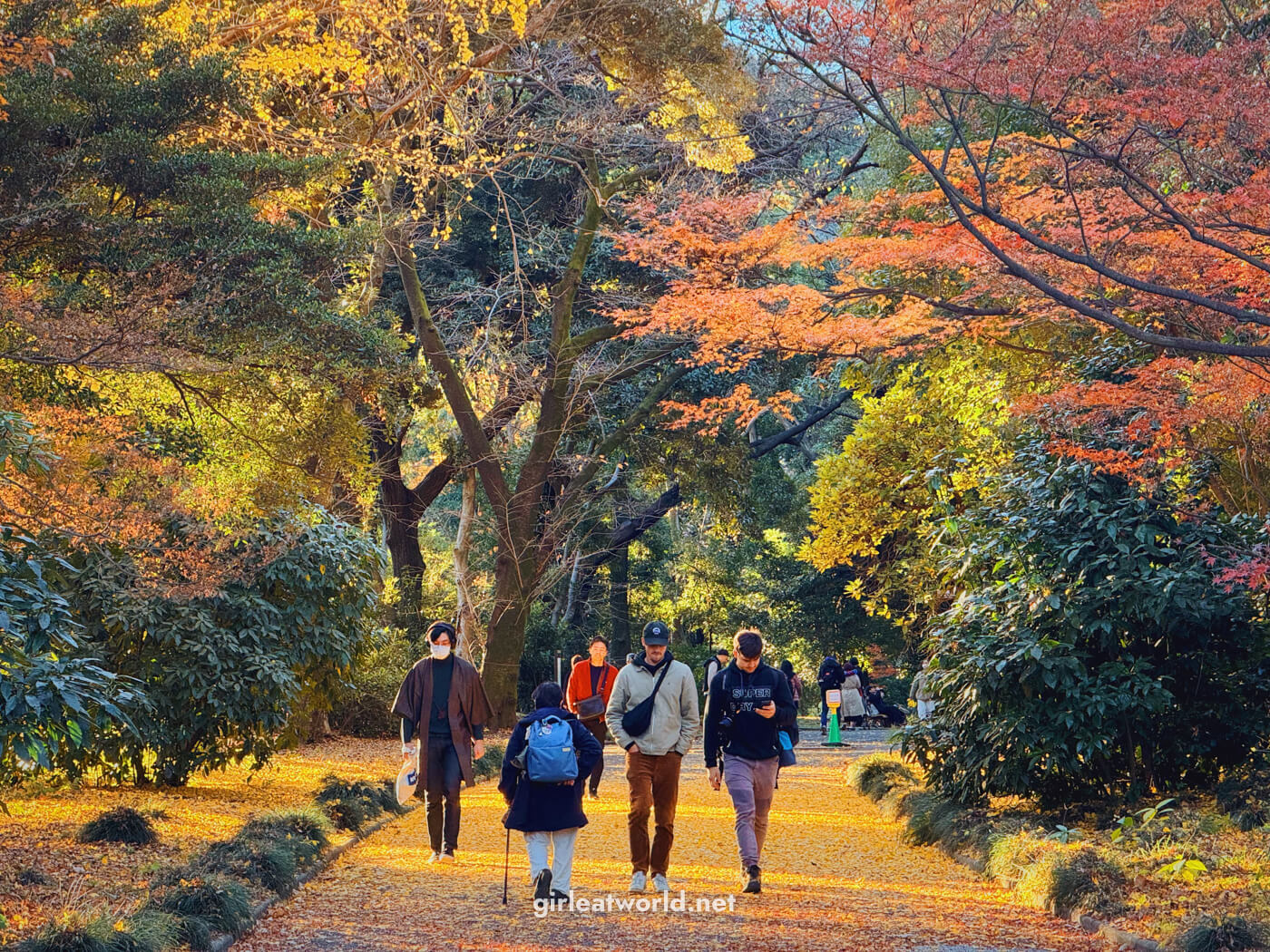
Where to eat/go in Shinjuku
- Tatsukichi ( maps ). We went for dinner based on a local Tokyo friend’s recommendation. They were quite packed during dinner so be prepared to wait. It’s an omakase-style restaurant, meaning they will just keep serving you whatever they are cooking until you ask for the bill. Their specialty is Kushiage – deep-fried vegetable/meat skewers – and although it might seem daunting and unhealthy to eat fried food for a meal, I swear all of them were good, super crispy, and not overly oily. With each skewer, the chef will tell you which sauce to use. If I remember correctly, we each spent S$50 after 10-12 skewers and 2 whiskey highballs.
- Tsukemen Gonokami ( maps )
- Tatsunoya Tsukemen

Day 5: Toyosu Market, Tsukiji Market, Ginza and Tokyo Station
1. tsukiji and toyosu market.
If you are a foodie like me, visiting the fish markets in Tokyo is a must. It’s not that they have the best sushi in Tokyo, but you can’t beat the atmosphere at the fish market. Fishermen arrive at the crack of dawn with their daily catch, and most importantly – the Tuna auction, where sushi tycoons have been known to bid crazy amounts of money for the best fish.
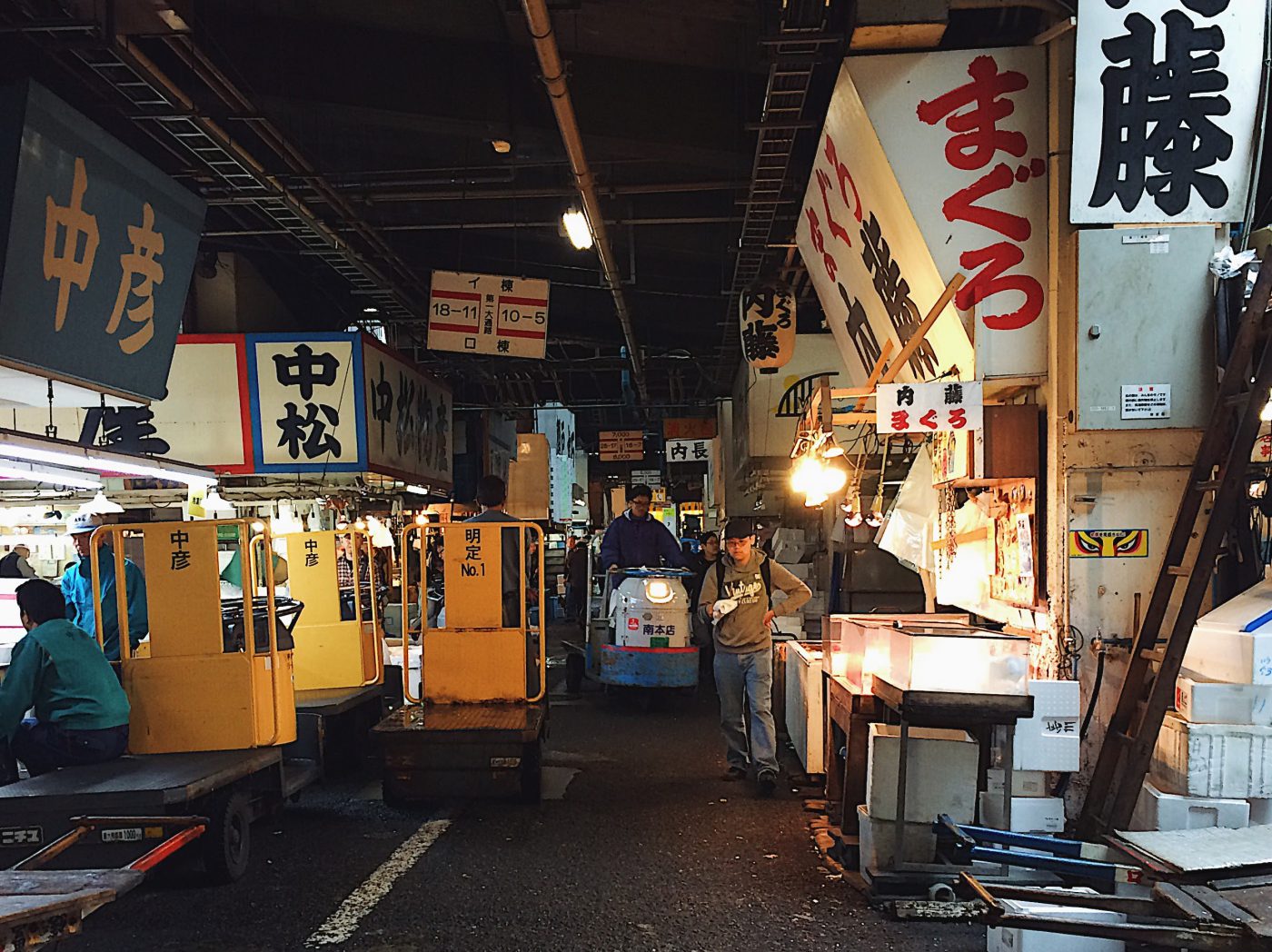
The center of this fishermen’s activity used to be Tsukiji Market, but as of October 2018, the tuna viewing and the wholesale market have been moved to Toyosu Market. I have not been to Toyosu yet (I heard it’s massive, sterile-looking, and modern compared to the old Tsukiji), but I reckon it’s still worth visiting both since they are not far apart.
Take note that the market is closed on Sundays and Japanese public holiday s, so check before you go. I tried to go during one of their public holidays and had to come back the next day.
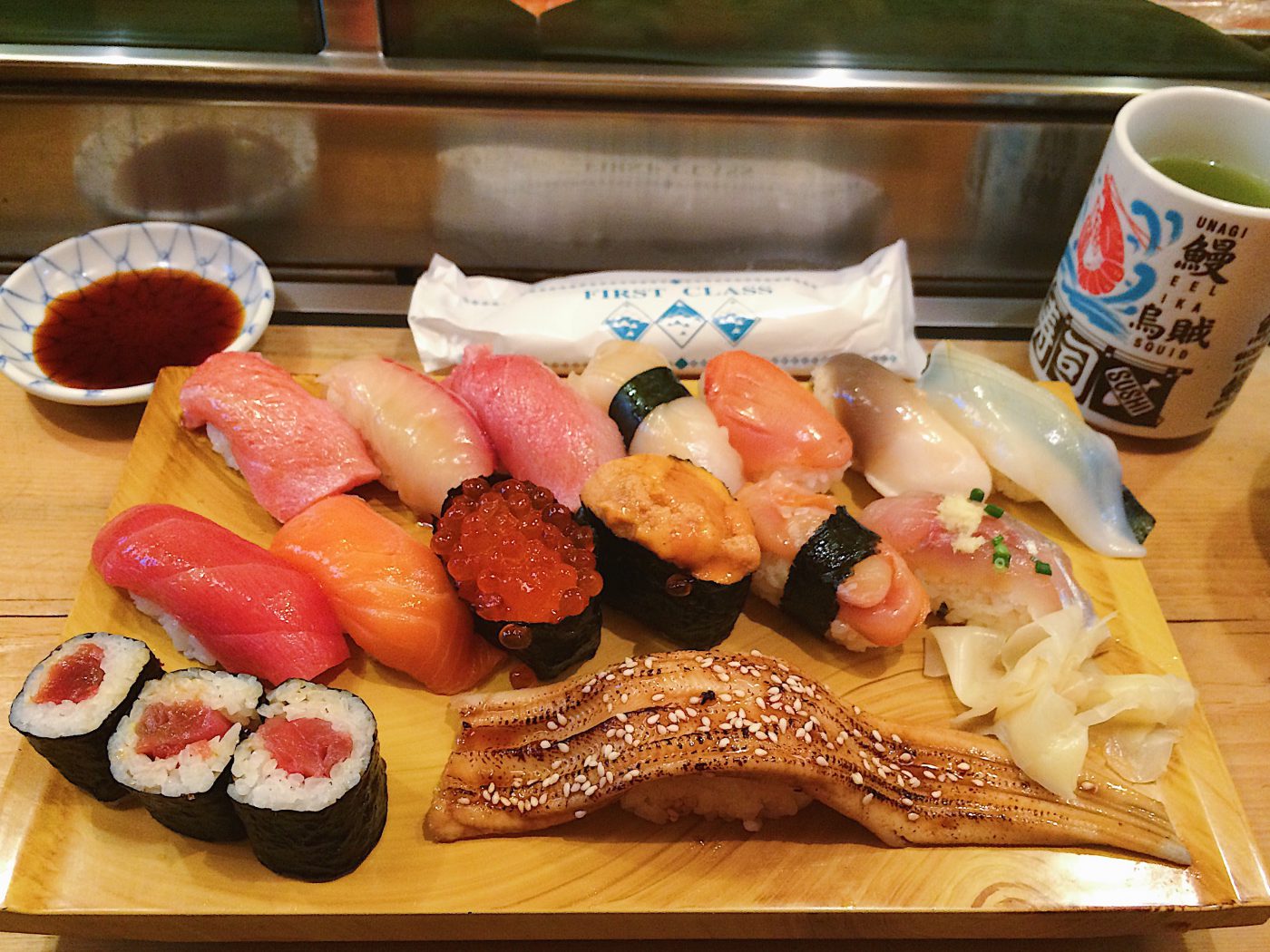
It can be an intimidating experience to visit these markets on your own. It’s a massive and very fast-paced market and the fishermen don’t like it when tourists come into the market in the morning when they’re busy with their job. If you want to see the Tuna auction, you’ll have to come very early at 5 AM. You can then watch the auction from a corridor above.
I recommend checking out the sushi stalls at the market in Toyosu or Tsukiji Outer Market. In terms of where to get your sushi, I know some blogs would recommend one sushi stall over another (Sushi Dai is a huge crowd’s favorite), but if you’re like me and don’t want to queue then just pick a random stall with the shortest queue. I did exactly this and it turned out just fine. You can either order a sushi set or do an omakase set, where the chef will serve you whatever sushi they can make with the day’s ingredients.
After your sushi breakfast, you can then go inside the market to see what’s on offer and perhaps eat even more.
2. Visit teamLab Exhibitions: teamLab Borderless and teamLab Planets
In the past decade, teamLab has established itself to be at the forefront of the digital interactive art scene. Their installations are always a delight to see and interact with. I’m lucky there is a permanent teamLab exhibition in Singapore , but I still made the time to check out their Tokyo exhibitions.
Tokyo Pass: The teamLab Planets is one of the attractions included in Tokyo Pass
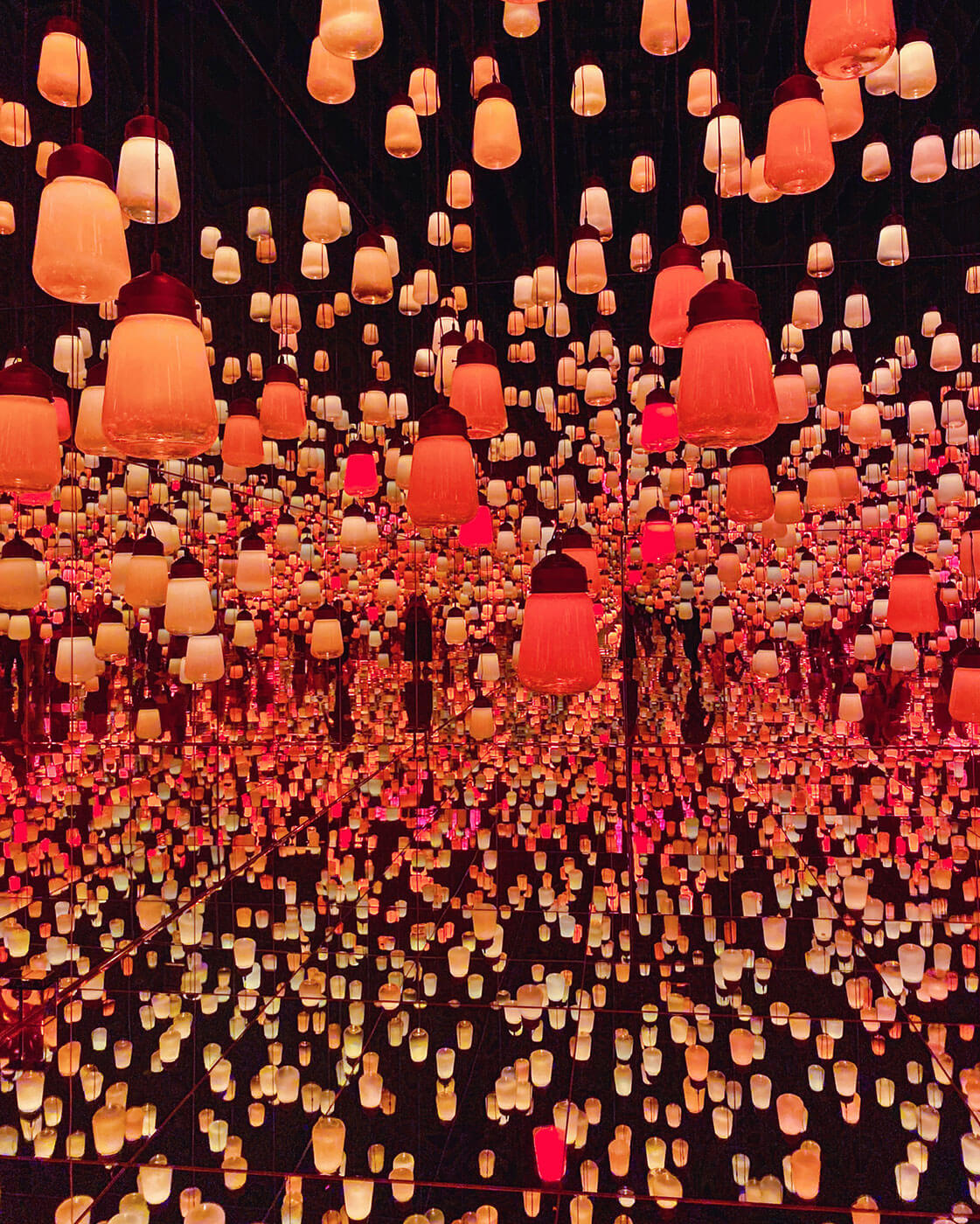
There are two teamLab exhibitions in Tokyo, teamLab Borderless and teamLab Planets . teamLab Borderless was temporarily closed from 2022 to 2023, but has reopened by February 2024 in the new Azabudai Hills area. teamLab Planets is still open with plans to close it in 2027, after which it might close down to move to another location as well.
Buy tickets ahead: These exhibitions are very popular, so you will want to purchase tickets and book timeslots for visiting teamLab Planets and teamLab Borderless ahead of time via Klook. It’s a direct QR code entry so you don’t need to buy tickets when you get there.
In terms of which one to visit – both of them share similar themes (interactive digital arts) but very different experiences. teamLab Borderless is probably more famous since they’re more visually appealing, but teamLab Planets are more interactive.
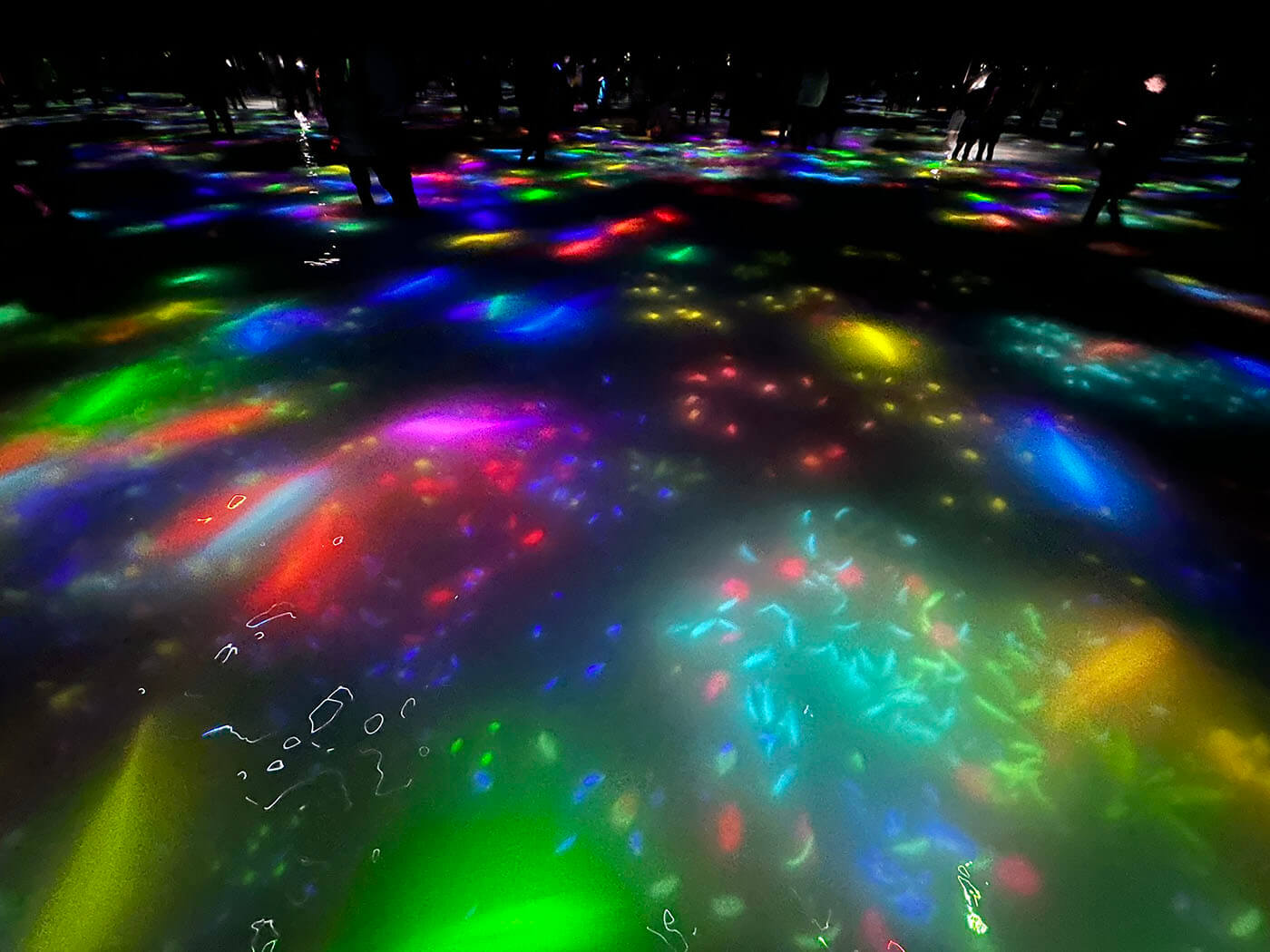
Both exhibitions are time-based, meaning you need to book a time slot to visit. I suggest picking a time when it’s off hours if you want to avoid the crowd – try going early when they first open. Weekends or public holidays are definitely a no-go. I happened to be there during peak time and spent 40 minutes lining up outside.
Alternatively, teamLab Planets is one of the attractions included in the Tokyo Pass , so it is cheaper if you get the pass.
Once done with the teamLab exhibition or the fish market, you can walk back in the direction of the train station and walk around Ginza for high-end shopping. For the lovers of Japanese clothing brands MUJI and Uniqlo , you’ll be happy to know that both Uniqlo and MUJI have their global flagship store located in Ginza, along with the famous MUJI hotel.
But if you want something a bit more historical, visit the Imperial Castle which is also nearby. Or, you could climb the Stairway of Success at Atago Shrine . Supposedly, the 86 steps represent the journey to success, and to this day, many would come to pray for their professional success at Atago Shrine.
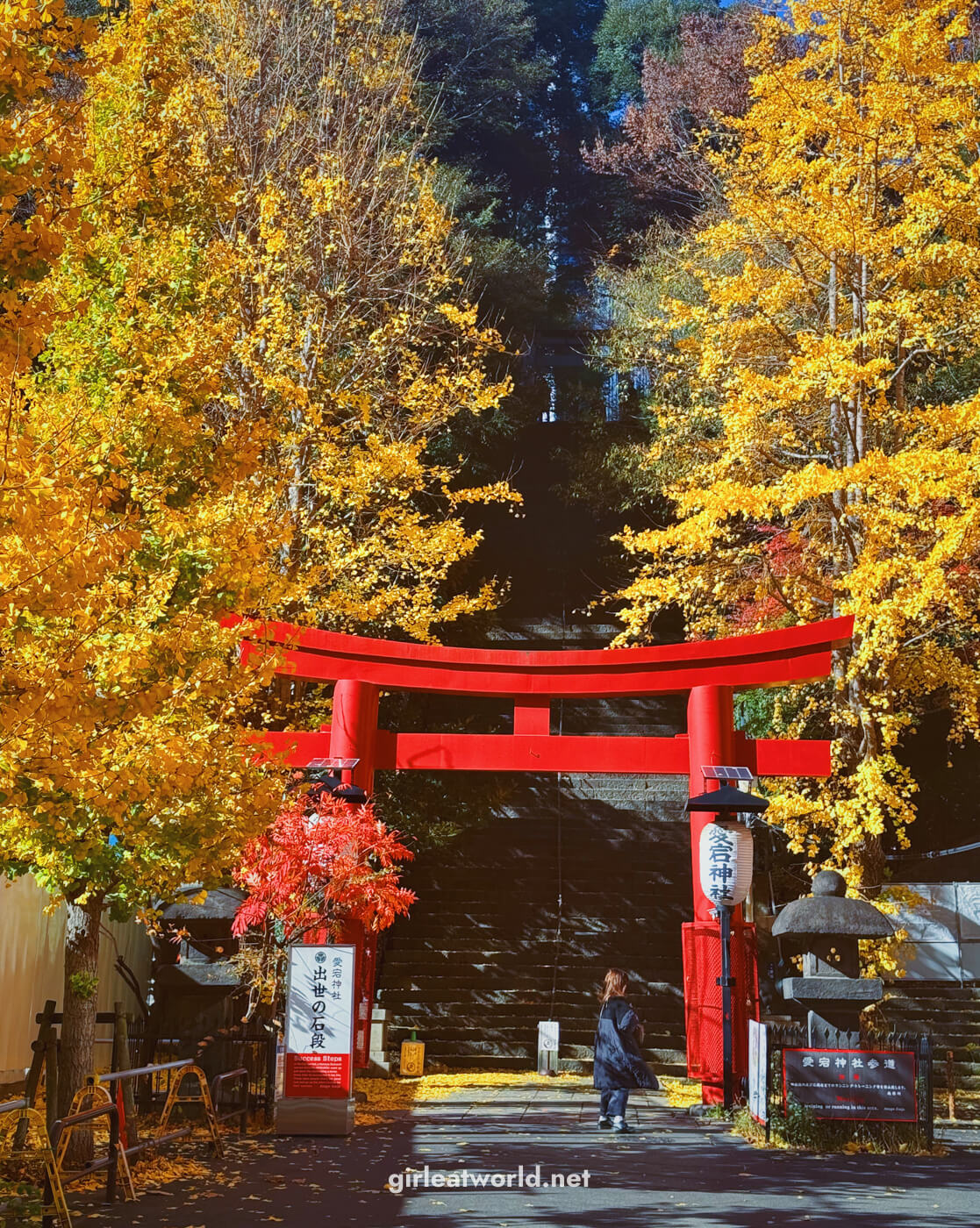
You can also visit Tokyo Station , which is only one station away from Ginza. It’s weird to be visiting a station, I know, but the BASEMENT of Tokyo station is seriously a gem. There is Tokyo Ramen Street , Tokyo Character Street , and Tokyo Food Street .
What might be of interest to most people is probably Tokyo Character Street, where you can find beloved characters like Hello Kitty, Pokemon, Studio Ghibli characters, etc. Take note most of the character shops close by 8:30 PM.
Also, Tokyo Station is an excellent place for omiyage (gift) shopping for stuff you can bring back home, so it’s great to hit up on your last day.
- Rokurinsha ( maps ) – This is located on the Ramen Street at Tokyo station. If you missed my description of Rokurinsha on Day 3, scroll up . I included it here again since it’s really a must-go for all foodies and it’s in the vicinity of this itinerary. You can also have this at Haneda Airport if you are flying out from there.
- Onigiriya Marutoyo at Tsukiji Market ( maps )
Short trips from Tokyo: Easy Day trips and excursions
What to mix up the Tokyo metropolitan city life with nature, temple visits, and countryside living? Good news for you! There are plenty of options that can be reached in just under 3 hours from Tokyo . These options are perfect for a short weekend trip, or even day trips for some of them.
You could visit Hakone , Nikko , Lake Kawaguchi , just to name a few.
➡️ Check it out: I’ve done a round-up of my recommended short-trip destinations from Tokyo here. You’ll find all the places I love that can be conveniently reached from Tokyo.

More things to do in Tokyo and places worth visiting
If you still have time to spend in Tokyo and wondering what else you can do, here are some of my recommendations for activities in Tokyo:
1. Take a Sunset Cruise around the Tokyo Bay
Symphony Cruise is a cruising company that runs multiple cruises around the Tokyo Bay. Starting from Hinode Pier, you’ll be able to take a 2-hour cruise while being served a 5-course fine dining meal. It’s a great way to spend an afternoon in Tokyo.
➡️ Dive deeper: Read my experience onboard their sunset cruise here
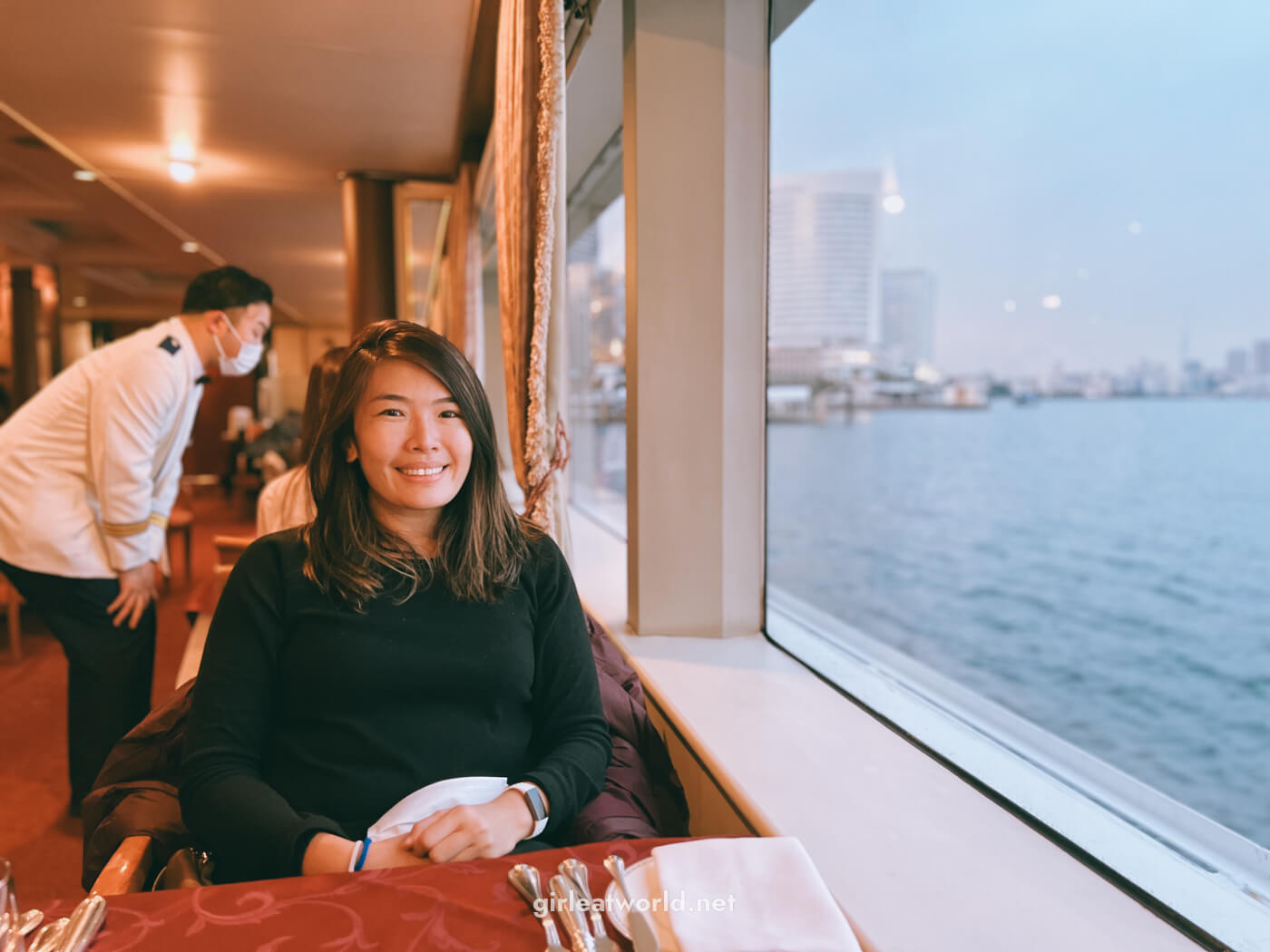
2. Go on a Ramen tour around Tokyo
You can’t come to Japan and not try ramen. If you’re a fan of this comforting noodle dish, definitely try this Tokyo Ramen Tour . I went on this tour during one of my visits to Tokyo. Although I’ve had plenty of ramen in my life, they were mostly Tonkotsu ramen (pork bone broth). I learned a lot about other types of ramen from Frank’s tour.
My tip? Come with an empty stomach. Seriously, because you’ll be trying many different types of ramen during your visit – up to 6 bowls of tasting-portion ramen. I was so stuffed (but happy) by the time we were done with the tour.
➡️ Book Tokyo Ramen Tour here
3. Eat Onigiri from any Japanese Konbini (Convenience Store)
Convenience stores (called “Konbini” in Japanese) are an integral part of Japanese cities. The Konbini’s that can be commonly found in Japan are Family Mart (Famima for short), Lawsons, 7/11, and Daily Yamazaki.
My fondest memory of Japan has always been going into a Konbini first thing in the morning to see what Onigiri they have that day. Onigiri is this triangle-shaped rice wrapped in seaweed and stuffed with various fillings, perfect to eat as a snack on the go. My personal favorite is the salmon onigiri. There is something magical about the combination of salmon, rice, and seaweed.
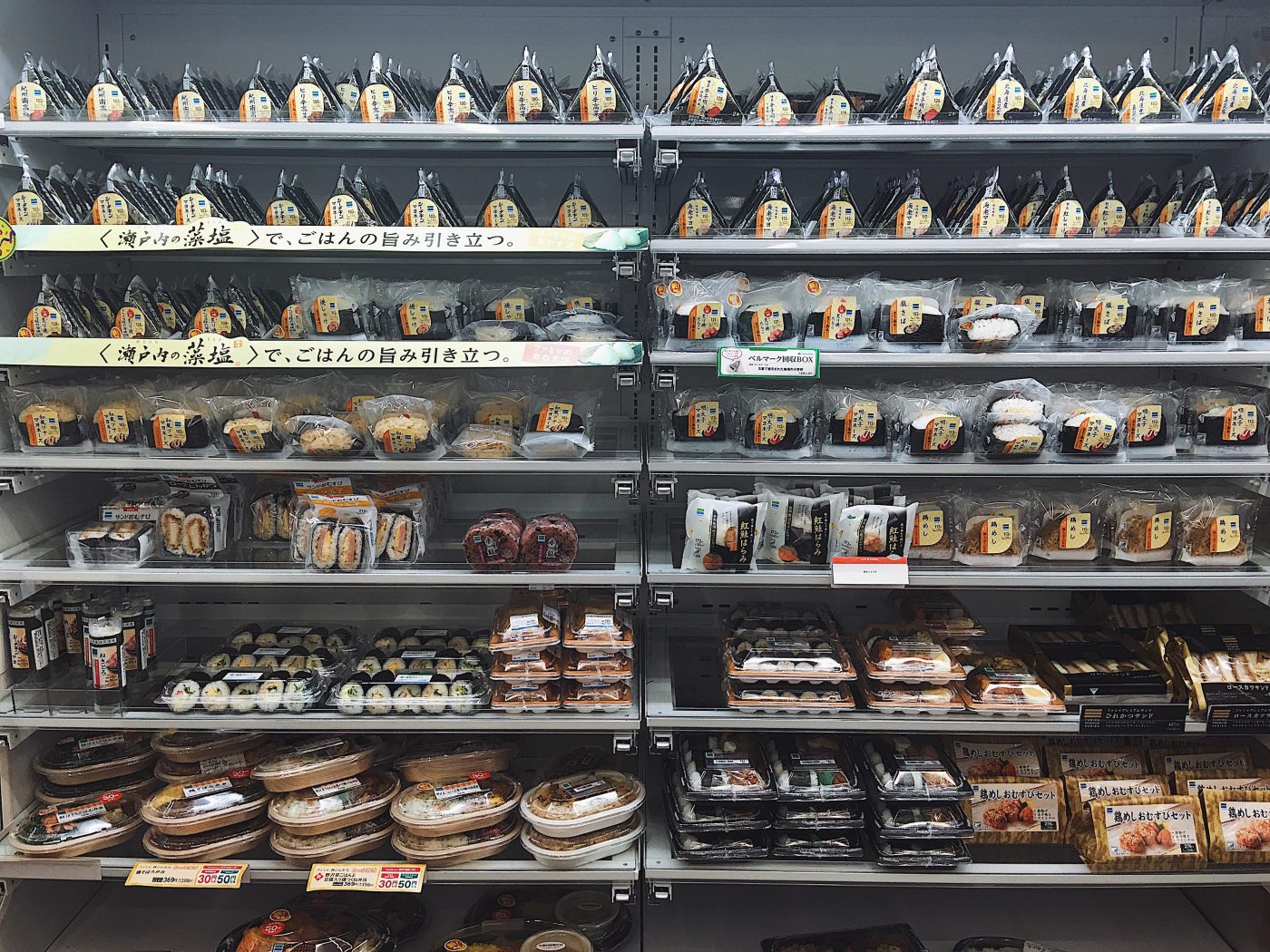
4. The original Midori Sushi at Umegaoka
Eating sushi while you are in Japan is undeniably a must-do. While staying at an Airbnb apartment in Tokyo, I got to know one of my roommates, a Japanese guy who kindly offered to drive me to his favorite local sushi joint. It’s called Midori Sushi – they are famous for being affordable yet offering high-quality food.

They have a few branches in Tokyo, but the original one is at Umegaoka and is located in a very local residential area. They are famous for shaping their nigiri such that the meat topping forms this very long “tail”, much longer than normal.
5. Visit Studio Ghibli Museum
Any Japanese anime fan must visit the Studio Ghibli Museum. I went here on my very first visit to Tokyo as I am a huge fan. The museum is located in Mitaka – not too far away from Shibuya. At the studio, you can see their early sketches, watch a short animation, and buy some Ghibli merchandise. It’s a bit small though so I would say you only need to set aside 2 hours for this museum.
Visiting Studio Ghibli Museum as an English-speaking tourist has gotten easier over the years. A few years ago, you could only get tickets in person at a Lawson’s branch and the instructions were all in Japanese. Lucky for you, these days Studio Ghibli tickets can be booked online (and in English too).
You can read here for instructions on how to obtain a ticket , but you still have to book this a month in advance and book for a specific day and time slot.
And yes, Studio Ghibli is popular and tickets DO sell out a month in advance. If it has sold out online, you can try getting them as part of a tour here:
- Mitaka no Mori Ghibli Museum
- Mitaka Ghibli Museum Tour
6. Shop Japanese Brands and a variety of stores
I love shopping for random goods while in Japan, especially for home goods. On my recent trip, I discovered LOFT at Shibuya and I was just blown away by the sheer amount of shopping you can do there! They sell everything and anything, from home goods, kitchen wares, stationeries, and clothing. Another similar shop is Tokyu Hands .
I also love checking out eclectic discount stores like Don Quijote and Daiso , guaranteed to be fun and easy on your wallet. They carry everything from snacks to home goods and skin care. Living in Singapore, we have a lot of Daiso and Donki stores, but the experience in Japan is still different.
If you like home goods, you might be interested to check out Nittori . They are like IKEA, but Japanese.
If you’re into shoes, you can’t miss ABC Mart , the best shop for kicks in Japan. They have regular ABC Mart, and ABC Mart Grandstage for more premium shoes. I bought some Nikes when I was in Tokyo – they are much cheaper than in Singapore.
And of course, you should check out the famous Japanese clothing brands like Uniqlo and MUJI , even if you have them in your home country. They are usually about 20% cheaper in Japan.
7. Visit the Lucky Cat temple in Gotokuji
Just a few stops away from Shinjuku, you can find a lovely neighborhood called Gotokuji , where you can find cat-themed items and pastries, as well as a temple filled with Maneki Neko figurines.
Read about my visit to Gotokuji Temple here
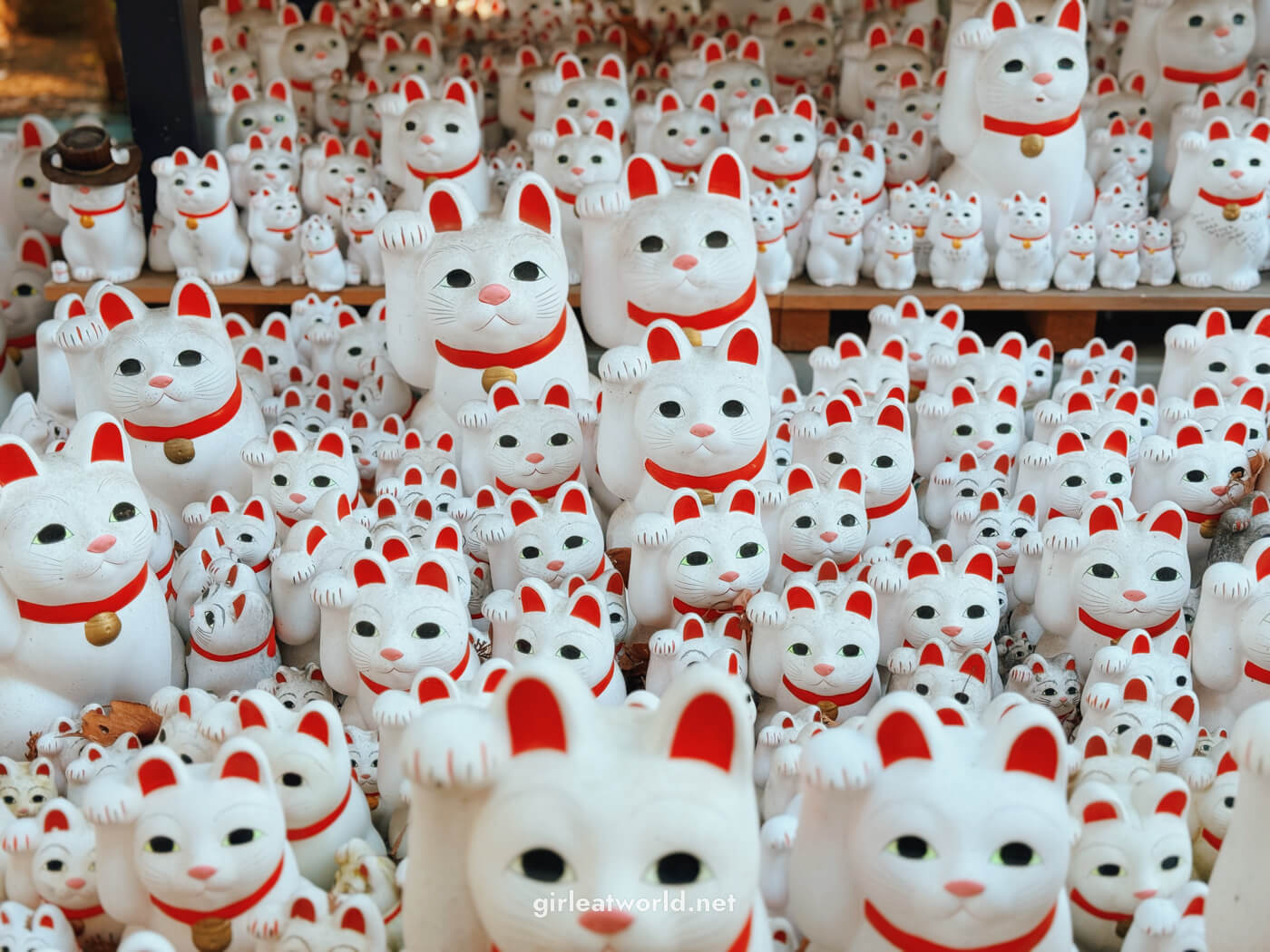
And even more places to visit
STILL looking for more places in Japan? Here are some of my Japan articles you might be interested in:
- Shanghai Food: What to eat at Shanghai’s food street Huanghe road
📌 Pin this post: This was a very long post. Click any of the images below to pin it to your pinterest board
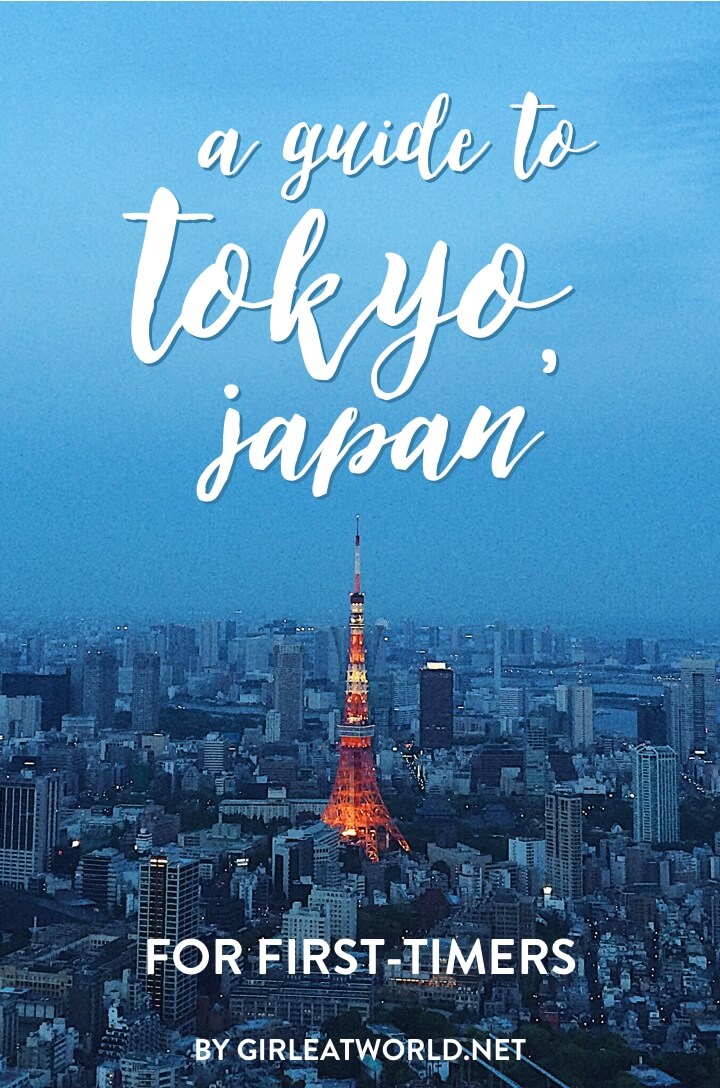
Alright, that was super long.
If you end up doing any of my itineraries, please leave a comment below and let me know how it went!
Also, if there is any information you want to know about visiting Tokyo, please do not hesitate to ask in the comments section below and I’ll try to answer them as fast as I can. I want your first visit to Tokyo to be as magical as possible.
Until next time 👋🏻
Are you planning a trip to Japan? I’ve written loads about the beautiful country. Check out the ‘Japan’ category of this blog for some travel inspiration.
125 Comments
- April 19, 2024
Great Itinerary, Thanks for sharing!
- April 8, 2024
Hi Melissa, Your blog was soooo helpful! Planning a trip to Tokyo in October for my birthday. Couple of questions, you mentioned that you were an anime fan, do you know of any other museums or cool places to visit for anime? I’m also a BIG Hello Kitty fan and wanted to visit Sanrio Puroland. What would be the best way to travel there and are there any other spots a Hello Kitty enthusiasts should go? Thanks in advance for your help!
Hey Trinette! I liked the Doraemon museum, especially if you’re a fan of the manga (not just anime). I haven’t been to Puroland but i imagine it would be a good place to go. Aside of that, look out for temporary exhibitions – when I went to Tokyo last time they had the Sailor Moon 30th anniversary exhibition which was really good for fans.
- March 14, 2024
Hi Melissa, Im just planning a trip to Tokyo. Ive loved reading your recomendations and all the useful informations you have provided. Im still very confussed on what trein pass I should buy. WE are planning a couple of days in Kyoto so I thought the JR rail pass would be smart. But travelling in Tokyo I understand they onky run a few trains. Should i get the additional IC card? Thank you
- March 15, 2024
Hey Kristin, yes I do recommend the IC Card since Tokyo Metro is more prevalent in Tokyo. If you have an iPhone, you can easily use the virtual IC Card via the wallet app and don’t need a physical IC Card. I have some tips here: https://girleatworld.net/virtual-ic-card-japan/
If not, you can try to get a physical IC Card when you’re in Japan, but there is a shortage in Tokyo. I recommend seeing if you can get an ICOCA card in Osaka or Kyoto.
- February 29, 2024
Hi Melissa,
Thank you for this extensive list! The 16-piece breakfast sushi you ate at Tsukiji looks incredible — do you happen to remember where this was?
Thank you in advance!!
Hey Angela, I honestly don’t remember :/ I just went to a random place at Tsukiji! But If you’re interested in a sushi platter like that, it’s very common.
- January 31, 2024
Hi Melissa, your post is really an enlightening read and made me relook at my plan for the 100000th time. I’d like your comment on my itinerary. I’m travelling with my husband and 3 kids 7, 11 and 13yo this coming late Feb – early March. Day 1- Arrive in Tokyo at noon. Stay at Shinjuku. Visit Shinjuku Gyoen Day 2- Sanrio Puroland, Ikebukuro Day 3- Mt. Fuji, Lake Kawaguchiko with private tour Day 4- Travel to Osaka via JR Hokuriku Arch Pass (Tokyo-Kanazawa-Osaka). Arrive by noon. Start 1.5 days Universal Studios pass. Day 5- Whole day Universal Studios Day 6- Travel back to Tokyo via JR Hokuriku Arch Pass. Arrive around 3pm. Stay at Asakusa. Sunset at Tokyo Skytree. Day 7- Kimono experience to Sensoji Temple, UENO PARK & National Museum of Nature and Science Day 8- Tsukiji Fish Market, Teamlabs planet, Ginza Day 9- Travel back to KL
We’re planning to get the Klook Greater Tokyo pass for most of the attractions, 72hr subway pass, and of course the 1.5 day USJ pass also from Klook. Question: 1. Do I still need to purchase a Welcome Suica? 2. I’ve done the math and I found that it’s cheaper to travel to Osaka and return to Tokyo via Hokuriku Arch Pass. But somehow i feel that we’re wasting time on the train with super early morning timing and not making full use of the pass by not going to at least Nagano for some powder action, or at least a short sightseeing around Kanazawa. Is there, any options cheaper and faster (longshot question here)?. Have you ever gone this route?
It’s our first time to Japan! I’d really appreciate your insight. Thanks in advance!
Hey Zaza 1. You don’t need a welcome suica if you have iPhone, bc you can just use the wallet app and add Suica there: https://girleatworld.net/virtual-ic-card-japan/ But if you dont use iPhone then yes you need suica card for the local travel within the city. Otherwise you’ll have to get a ticket for each travel. For your kids i think they can get kids Suica card at the station, You should try that since kids travel for less. 2. It is indeed a waste to not go to other parts of Japan, but given your itinerary is already packed, I am not sure how you’ll be able to fit more in. You will have to sacrifice some time in Tokyo.
- January 29, 2024
Hello Melissa,
My dad and I are visiting Japan for the first time. We are staying in Osaka because we are exploring mainly the Kansai region; however, we have an 8-hour layover in HND from about 5AM to 1:30PM on a Tuesday. What would you recommend us see or visit during our layover? Thank you!
P.S. Thank you so much for your blog posts! I have only read the Osaka Itinerary one because so far that is only what I really need, but I am sure they are all helpful!
Hey Inday, lucky Haneda is so close to the city! I would head to Tsukiji outer market for a sushi breakfast. Its only 30 mins by train. If you want the real fish market though, it’s been moved to Toyosu which isnt too far from Tsukiji as well. After, if you still have time you can stroll around Ginza then head back to Haneda
- January 7, 2024
Thanks, Melissa for your amazing blog. We are going to Japan soon and will spend 4 nights in Tokyo, 2 nights in Kyoto and another 3 nights in Tokyo. Should we invest in a 7 day JR Pass or buy return bullet train tickets to Kyoto and use the local trains when in Tokyo? Your advice is greatly appreciated. We are really only there to eat! Thanks
Hey, if you’re only going to Tokyo and Kyoto then JR Pass is not worth it. Just get the return ticket and use IC card for the local trains.
- October 22, 2023
Great informative blog Melissa! I’m going to Japan next month for the first time and this will be so helpful. We will be in Tokyo for 4 days, staying in the Shinjuku area, so your tips will be perfect. My daughter is pescatarian so wondering if you have any more vegetarian tips for where to eat? Also, have you written any blogs about Kyoto?
Hello fellow Melissa! Yes I do I have a guide for Kyoto as well: https://girleatworld.net/kyoto-guide/
You can see all my posts about Japan here: https://girleatworld.net/category/destination/asia/japan/
Re: vegetarian, unfortunately I am not one so I only have the one restaurant I’ve gone to (which is included in this blog post), However if my understanding of pescatarian is that she eats fish, then she would be fine in most restaurant. The most common animal product that I tell my vegetarian friends to watch out for is bonito, which are fish flakes and used in broth often. I assume your daughter will not have such issues?
- October 16, 2023
Hi Melissa, This is a great article that I might try to do on our first visit in Japan. I will be travelling with my wife and 2 kids and we’ll add a 2 day in Disneyland/Disneysea. I was wondering if you stayed in one place during all your days. Which city would you suggest if we have to add our disneyland days? thanks!
Hi Marvs, I just stayed at my original accommodation. Disney is pretty easy to get to via a train, so I don’t think you need to change.. I imagine it would be difficult to change accommodation with 2 kids. The best thing would be to stay at the Disney resort itself, but if you aren’t keen then the next best thing is to stay close to Maihama station, which takes you to Disneyland. I’ll add some recommended hotels in my Disneyland post 🙂
- October 17, 2023
Hi Melissa, Thank you so much for the info. I’ll read your Disneyland post to get more ideas. btw, I know I will be buying a lot of stuffs to take back home, but I would like to buy heavy on my last day. Which on the 5 days/location you suggest we do last so we can take a lot of shopping before we head back home? thanks!
Hey marvs, I would do either Day 4 (Shinjuku) or Day 5 since it is lighter in travel. Also, Ginza is a shopping district. The MUJI and Uniqlo store in Ginza is the flagship in Tokyo. So just depends what you want to get!
- October 14, 2023
Thanks for all your great ideas – looking forward to our first time in Japan next spring. By the way, they say on the teamLab website that “planets” has been extended to the end of 2027 due to popular demand. 🙂
Hey Lisa! Thanks for letting me know. I’ll update my post 😀
- October 4, 2023
Way too many exclamation points! I’m only on day 2 of the itinerary, and I’m exhausted by them already!!
Ha! you’re funny! okay, I’ve toned it down a bit!
- September 24, 2023
Your articles about Tokyo are super helpful for a Tokyo first timer. We’ll be traveling in November and I’m trying to read as much as I can to try and familiarize myself with Tokyo, Your articles are such a great help.
Do you have any article about going for a day tour to see Mt. Fuji (not climb it)? It will be a big help!
Thanks again.
Hey Val, thank you for the kind word! I do have a post on My Fuji, although it is not about a day tour. But you can still get an idea what you see there https://girleatworld.net/fuji-five-lakes-guide-itinerary/
- May 1, 2023
Helpful blog, Thanks!
- December 30, 2022
Hi Melissa!
I’m planning a trip for my two friends and I this summer to Tokyo and this was super helpful! Thank you so much for making everything so concise and detailed, your hard work really goes a long way, especially with first-time Tokyo travelers.
- December 26, 2022
Hello. How much did you budget for your trip?
- December 19, 2022
My son is heading to Tokyo
I see that you can buy JR passes in person @ certain locations
And was told our att phone will work ($15 a day)
Am I wrong?
Also the market you mention above has moved and been renamed … it’s now Toyosu market
- April 8, 2022
HI melissa, thanks for sharing your trip, i’m so amazed with Japan and the culture and i have a plan to visit there, reading your post really help me alot 🙂
- November 28, 2021
Great blog! Thanks for sharing informative and helpful content.
- November 15, 2021
Meu sonho é fazer esta viagem parabéns pelo conteúdo aqui João Brasil 🇧🇷
- July 30, 2021
Thank you so much for awesome blog and best content about Japan country, it is interesting and informative article, we really enjoyed so much your blog, we loved so much Japan food and we don’t forget the taste of sushi, we will be back again to Japan next year, and we wanted to visit other parts of this beautiful country.
- October 28, 2021
You definitely had an awesome time in Japan. I always hope one day, my family and I can go there so we can enjoy its wonders.
- June 3, 2021
Hi Melissa, my official trip is scheduled for 19th September, 21 for Japan, hopefully, it will work as planned. Could you suggest some Indian restaurants (if familiar) in Shinjuku (Tokyo). Thanks in advance.
- July 2, 2021
yes! You must go to Samrat! https://goo.gl/maps/tQicmaQ2msKmAwy5A
- October 11, 2020
This is one the best article i have ever seen in my life you are inspiration for youth keep continue these type of articles thank you.
- October 7, 2020
Great list Melissa, hopefully Covid / Corona is cured soon so people can get back to traveling and experiencing places like Tokyo!
- April 25, 2020
Perfect guide!
What a great article! As an old-timer in Tokyo (getting up to thirty years) I think travellers will find this article extremely helpful (and very accurate!).
- January 15, 2020
thank you, your article is very good
- November 22, 2019
Hi mell, I like your itinerary, :D. and I’m going to japan for the first time in april 2020.
can u advise about : 1. itinerary at osaka in 1 day? is it possible if I go to kyoto and kobe in 1 day?
2. If I wanna go to Tokyo, but I’m using night bus from osaka, can u tell me how? specially from USJ.
Thank you 😀
I have an Osaka Itinerary post here: https://girleatworld.net/osaka-itinerary-japan/ One day for Kyoto and Kobe is definitely NOT enough. Please see the post above Lastly I don’t have experience with night bus unfortunately so I can’t advise you there.
- December 15, 2019
Hi mel, Appreciate your advice if I spend 9 days 8 nights at Tokyo, going to hitachi seaside, mount Fuji, ashikaya wisteria park and Nikko next year May 20 , I will just need to buy suica card for my transportation only right? My round trip as airport is haneda. Thanks .
- December 17, 2019
Suica is normally good for local transport only. It cant be used on express trains so when you go to Hitachi, Nikko, Mount Fuji, etc you might need to get a separate train tickets for those. Take a look at JR Pass and see if it makes sense for you.
- November 17, 2019
I really enjoyed reading your Japan itinerary.
I will be flying to Japan in March2020 for the first time.. 😅
Questions to you:
1. Our flight will be arrive 1am midnight, will it be any transportation to the hotel? (2 adults & 2 kids – 9 & 13 years old) destination maybe to SHinagawa or Shimbashi ?
2. My japanesse friend suggested to find a hotel somewhere Shimbashi or Shinagawa, do u think they are far away from the city ?
3. We have 11 days in Japan, and i know the JR Pass is so expensive, do u think we should stay in Tokyo & surrounds (will go to Disneyland for sure )or should we go out of town ? Hiroshima etc..
4. Money wise, should we get the travel money as well ? i heard they dont accept many Credit card.
Thanking you in advance 😘
1. Which airport are you flying into? Haneda or Narita? In any case, you might need to pre-book a private transfer (I have a link above) since all trains would have stopped by then. It’s worth it since you are traveling in a large group. From Haneda there are some late night buses: http://www.haneda-airport.jp/inter/en/access/bus.html but they come very sporadically
2. I have stayed in Shinagawa. It’s convenient if you are close to Shinagawa station and if you are flying out of Haneda later on (only 20 mins by train). Shimbashi is also a great option as it is in the middle of most things.
3. Most people do Tokyo, Osaka and Kyoto so you should look into that for first time visit. I’d save Hiroshima for a second visit. I have a blog post on Osaka and Kyoto too! https://girleatworld.net/osaka-itinerary-japan/ If you want to save on JR, then I’d check out cities around Tokyo like Hakone (for a chance to view Mount Fuji) or Nikko (temples and UNESCO heritage area). You only need 5-7 days to explore Tokyo.
4. Yeah certain places are cash only but if you stay within Tokyo, you’ll find credit card accepted in most places (convenient store, hotes, etc). I’d get some cash ready, probably about 2,000-3,000 yen per person per day. Definitely check your bank and options to withdraw ATM since you probably don’t want to be traveling with that much money for 11 days.
- November 12, 2019
The most helpful write-up I’ve seen while researching for my trip. Thank you so much!
glad to be able to help 🙂
- September 9, 2019
As of 9/9/2019, it looks like none of the rail links from NrT to Tokyo are running or will be running for several days. Any suggestions how I can get into town-Ueno area? Thanks
Hey Tim, is this due to the typhoon? If so, you’ll have to follow what the officials say on ground – they will know best.
- August 26, 2019
Thank you Melissa for your helpful blog. I have traveled extensively on my own and this helps.
In November I will be in Tokyo for 5 days on my own. I lived there as a child.
1) Can you recommend a few ryokans or mid price small hotels in a few of the areas that are convenient for first time visitors? Not too noisy?
I would like to stay in an area with local stores and restaurants and away from steel, concrete, and high rises.
2) Is it best to stay near a station on the Yamanote Line?
Thank you!! Loren
Hey Loren, so glad a veteran traveler found this useful!
1. For Ryokan, I don’t know many in Tokyo itself but if you go to Hakone and Nikko, there are plenty. I have a little blurb on Hakone in this post. If you like quiet area, I suggest checking out Shimokitazawa or Daikanyama. They are quiet but still close enough to central Tokyo.
2. It’s not really necessary, Tokyo is so well connected that you won’t have too much trouble with commute, as long as you stay near a train station. One might be more convenient than others but for a 5 day trip it shouldn’t make too much difference.
- August 20, 2019
Hi there! I’m traveling to Tokyo in about a week for a five day stay. I plan to follow the itinerary you posted as much as I can.
1). What is the best way to get from Narita airport (terminal 3) to my hotel in Shinjuku? Do I take the Keisei Skyliner, and transfer at Nippori for a local JR line train to Shinjuku Station? Should I buy a round-trip Keisei Skyliner ticket so that I can use this same way on my return to Narita at the end of my trip?
2). I’ll be in Tokyo for nearly my entire stay. Is there a 5 day JR line pass I can buy?
Thanks in advance 🤗
1. Keisei Skyliner is the cheapest way to get to city, so yes you can take it to Nippori then transfer to local line to Shinjuku (20 mins) The other option is Narita Express, which takes you to Tokyo station and you can take the local line to Shinjuku for shorter time (13 mins), but it costs more. I personally would take the Skyliner.
2. If you are just staying in Tokyo, you don’t need a JR Pass. Just buy the SUICA card for train transfers.
- August 22, 2019
Thanks for the tips. I think I will use the Skyliner as you suggested. Some follow-up questions:
1). Should I buy this ahead of my trip and go to the Skyliner counter when I arrive for the actual pass? I hope the counter is open when I arrive around 6:30 am.
2). Should I buy/book my return Skyliner ticket ahead of time?
3). About the SUICA card, is it advisable to buy this at Narita airport upon my arrival or ahead of time?
4). Is there a 5-day SUICA pass or do I just top up as my balance runs low?
Thanks again!
Hey Maddy, 1. Buying ahead of time is cheaper so do that if you can. A voucher will be emailed to you right away and you can redeem from Skyliner ticket counter when you reach Narita. However, the counter is only open from 7AM onward. Assuming you have to go through immigration etc then you might just get to the counter right when they open. 2. That depends on your flexibility. I see the ticket is not sold as round trip package so you could just buy them later if you arent sure. 3. You can do both. Buying ahead of time saves you a little bit of money 4. I usually just top up as I go, I find this the easiest and fuss free. There are some passes that has unlimited pass, but as I mentioned in my post Japan runs on multiple different train companies, and the unlimited passes only work on certain lines.
- July 29, 2019
Melissa god bless you. Thanks a lot for creating such a simple & straight forward content. Its easy to understand. I love it and i love you! haha thanks alot.
Thank you for taking the time to leave this comment, Nisa!! Enjoy Japan
- July 28, 2019
Greetings from Denmark – we love your Tokyo guide and are very excited about going to Japan in about 3 weeks time. We have one question regarding the JR pass which we can´t seem to figure out:
We are primarily staying in Tokyo for a few days but are then travelling TO Kyoto – and BACK when we catch the flight home. And PERHAPS we will do a day-trip outside Tokyo, depends. So we a getting the SUICA card – but what about the JR pass, since it´s only back and forth between Tokyo and Kyoto and eventually 1-day trip??? What do you recommend?
A 7-day JR Pass costs about the same as regular round trip tickets for Tokyo – Kyoto, so its worth to get in my opinion. You can use it for the local JR trains too when you are in Tokyo and Kyoto, so it would save you some money instead of using SUICA balance. Each trip cost about 260-300 yen (depending on distance), and in my experience I use the train 3-4 times a day so that adds up to about 900-1200 yen a day. See this page for the price of Tokyo-Kyoto train: https://www.japan-guide.com/e/e2363.html
If you are in Japan longer than 7 days and you are getting the 7-day JR Pass, just make sure you don’t activate / use the JR pass until 7 days before you get on the train back to Tokyo – basically you need the JR pass to still be active for when you go to Tokyo->Kyoto and Kyoto->Tokyo.
Hope that helps!!
THANKS a lot! That was very helpful – we´ll purchase the JR tickets then and take care not to activate them too soon! 😀
- May 20, 2019
My husband and I visited Japan in January 2019. We are frequent travelers, but this was our first time there. We found ourselves referencing your various travel itineraries repeatedly throughout our trip (including your Tokyo and Osaka itineraries). Your transit tips were very helpful and we found we couldn’t go wrong when following your food recommendations (including suggesting we check out danielfooddiary.com). Definitely helped to make the trip amazing! And we were really glad to see you back in Japan again recently as we’re already planning a return trip and will definitely check out your updated info. Thanks for the awesome tips!
thank you so much for your kind words Kathleen! comments like yours are what keeps me motivated to maintain this blog. thank you for taking the time to come back and write this ❤️
- May 14, 2019
Hi, we are group of 5, will travel to narita by next week, and had a booking at narita airport hostel. Could you have any recommendations or suggestions for us.. which place is best to see near or around narita. Its our first time to go to Japan and your blog was really helpful. Thank you so much
Hey Mary, glad to hear the post is helpful! Unfortunately, I am not familiar with Narita area. I hope you’ll be going into the city?
- May 25, 2019
Narita San Temple and the awesome windy road that is directly Infront of the the temple is amazing to visit. Lots of shops and restaurants. I always go to this temple when I fly into Japan before heading out to Tokyo. The temple is very big and a local friend of mine said that’s where his highschool graduation took place.
- May 7, 2019
Great post! And informative. If I may add something here, I would say it is definitely possible for you to buy Japan SIM at the airport – Mobal offers affordable phone plans and English support. I would also recommend visiting Shibamata, an old quarter where “it’s tough being a man” was filmed – you need to change a lot of trains to get there if you are staying in central Tokyo or the West of Tokyo, but you may love the good and old days’ ambience there.
- April 7, 2019
Hi Melissa! Great post. Very helpful as I’ll be heading to Japan for 3 weeks later this month. We’ve already purchased and picked up a 21-day JR pass, but I’m wondering if we also have to purchase extra passes like the Hakone-Kamakura pass you mentioned? (Both of those places are on our itinerary) If so, where can these be purchased and does it have to be outside of Japan?
The JR pass can only cover the journey up to Odawara station, after which it switches to Odakyu line, which is why I recommend getting the Hakone pass as it offers discounts on the journey from Odawara to Hakone (or straight from Tokyo). I bought the pass in Japan, but it might be cheaper to buy through Klook link I have above. This pass does not have to be bought from outside of Japan. Find info about Hakone-Kamakura pass here – It has info about their office in Shinjuku
This detailed post is very helpful. I am travelling from 9th until 21st April to Tokyo. My husband will be woking so I will be mostly on my own. Please recommend anything you want as i am going to stay for 2 weeks.
- April 8, 2019
Aastha, you are going to have so much fun! Perhaps you can look into day trips to nearby Tokyo, such as Hakone, Yokohama, and Kamakura. I also recommend exploring the lesser known neighborhoods such as Daikanyama, Nakameguro, Ebisu, and Shimokitazawa. I have a quick write up on Daikanyama here: https://girleatworld.net/daikanyama-tokyo-guide/
You can also look into Tokyo Disneyland trip if that’s something that interests you.
- March 27, 2019
Does the JR pass include the cities we are visiting.. Dor it includes Haneda airport to Chiba when we arrive from Bangkok..
Tokyo to Hamamatsu – Yes Hamamatsu to Kyoto – Yes Kyoto to Tokyo – Yes
Haneda to Chiba you need to look it up yourself. I think it does not.
family of 3 traveling from Tokyo to Hakone to Hammamatsu to Kyoto then back to Tokyo, over 10 days.. is the JR pass feasible..? Does JR pass cover transport from Haneda airport to hotel nearby Disney, this is when we first arrive.. Thanks.. Richard
Hey Richard, it’s hard to say since it depends on how long you plan to stay in Kyoto. In general, most of the savings of JR pass comes from the city to city bullet train so I feel it would be good for your Kyoto – Hamamatsu – Tokyo transfers, but you need to compare the actual price difference depending on your plan.
Does JR pass cover Tokyo to Hakone fare..
Hey Richard, I think it only covers part of the way. You can use your JR Pass to reach Odawara, then from there Hakone can be reached by private Odakyu line, which is not part of JR.
- March 19, 2019
HI, good day to you
We are 4 adult will be travelling to Tokyo this mid May 2019. my questions as below:- Any hotels receommand (transfer from Haneda Airport around 12am mid night to shinjuku bus terminal or Tokyo City Air Terminal for us with some luggages
- February 26, 2019
Hi thank you for your post. Our family of four (kids 11 and 15) will be visitng Tokyo for the first time this coming May. We saw lots of affordable hotels in Ueno (3 min by foot from JR Ueno Station) that are new and spacious. Do you suggest this is a good base area for our 6 days? We are only planning to tour around Tokyo. I read somewhere that we might be wasting our time in transportation getting around the city (as opposed to staying in areas like Shinjuku, Tokyo Station or Shibuya.
Also for 6 days in Tokyo, can we just use Pasmo or Suica card in getting around the city? There is also a 3 day Tokyo city pass???
Thank you so much!
Hey Eyelett, Ueno is not too bad – if you don’t mind the 30 mins train ride to Shibuya and Shinjuku. Are you planning to spend many of your days there? There are things to see near Ueno too, like Akihabara and Asakusa.
For the 3 day pass, can you link me to the pass? You have to be careful bc sometimes they only include certain lines and does not include JR, which you’ll want if you’re staying near JR Ueno. If they don’t include JR then you’ll still need to pay with Pasmo/Suica. It’s usually around 260-320 yen per ride.
Thank you Melissa,
The 3 day pass is for the Tokyo Metro Subway. I read the link here:
https://jw-webmagazine.com/tokyo-subway-unlimited-pass-how-to-get-and-how-much-you-can-save-3ca0c6d36b84
Do I need to get both JR Pass and Tokyo Metro Subway Pass? If so, I read that there are different kinds of JR Pass? I am only interested for the one to use in the city, or is the Metro Subway enough to get around?
Hey Eyelett, that 3-day pass is only valid on Tokyo Metro and Toei lines. These are different than JR. That said, if you are planning to travel a lot by train in the first 3 days then I think it’s still worth getting. Each ride on Toei/Metro line is usually 200 yen so to make it worth it you just need to ride it at least 3 times a day.
Then, if you need to take a JR line then you can pay for it individually by either buying tickets each time at the ticket counter or use Suica.
For JR passes, these are only worth it if you are planning to get out of Tokyo since the savings are in the fact that you can take the longer ride bullet train between cities.
- February 23, 2019
Love your post! Thanks so much 🙂
Have a few questions for you : 1. Any suggested apps to download prior to trip? 2. Based on your blog post, you suggested to buy these beforehand: 1) JR Pass 2) Suica pass 3) Prepaid Sim / Router… did I miss anything else? 3. Did you go to Disneyland Tokyo during any of your trips? Any tips to share? 4. If we arrive Haneda Airport late and trains may have stopped running by then, would taxi be the only option to get into Tokyo?
Thanks again! Look forward to hear back from you x
Hey Ada 1) Definitely download a google translate pack for Japanese, just in case 2) yup, those should be good. I also suggest booking in advance if you want to visit Ghibli museum as they have limited tickets. And the Tokyo Disneyland ticket since you have to print those out in advance. 3) Not yet 🙁 It’s still in my to-do list! I have heard you should just buy directly from the Disney website though since it allows direct entry and you won’t have to pick up the ticket elsewhere. But you still have to print out the ticket no matter where you buy it from. 4) There is a night bus from Haneda to certain areas of Tokyo, but the coverage is very limited – click here for more information . Aside of this yeah you have to take the taxi I suppose – it won’t be cheap.
- February 25, 2019
thanks melissa!
- February 17, 2019
Dear Melissa,
Thank you for your advise, I am first time to Tokyo for Rugby World Cup 2019 in October. 1) For accommodation, any suggestion place to stay for 2 adults + 1 child? 2) Can you suggest place to visit in Osaka? How many days require?
Best regards, Ah Zul
1) Since you are a family, I would recommend looking through Airbnb for a one-bedroom apartment. This would be pretty small, but perfect for your family because you won’t have to share. Just make sure it’s close to a train station so you can get around easily. 2) For osaka, I have an entire blog post on it! https://girleatworld.net/things-to-do-in-osaka/ I recommend at least 3 days in Osaka.
- February 10, 2019
Hi!! I was planning to go to Japan in the middle of September (sept 16 – 30th). I was wondering if it would still be hot summer weather or if it would have already cooled down for the Autumn. Great post by the way and very easy to understand 😀
September will be pleasant weather. Probably just need a light jacket for night time. enjoy!!
- January 24, 2019
Thank you for writing a long and detailed blog. It is so helpful. We are planning to go in March mid during sakura season for the first time. I have 2 questions if you could help:
1) Will it be cold or hot during Cherry Blossom season? Tokyo, Kyoto and Osaka?
2) Are local train station included in JR rail pass? Specially in shinjuku area? I read its huge.
Best, Qurat ul ain
Hi Qurat, the cherry blossom season is in spring, so it won’t be too cold. A pleasant 20C days if i remember correctly! The JR rail pass can be used on JR trains, which includes some local trains. Shinjuku has some JR lines so you’ll be able to use them there.
- January 25, 2019
Thank you Melissa!
Forgot to say, I have a blog for cherry blossom season! https://girleatworld.net/sakura-season-japan-photos/
- January 14, 2019
Thank you for your advise, I ll change the schedule as per your advise, as I am first time to Tokyo and with the kids do you recommend that I am going to pick the local city tour at our arrival? thanks.
Best regards, Putu
I think Japan is pretty easy to do by yourself – why don’t you try first and see how it goes? If you need a tour then you can book on the second day
- January 11, 2019
Hello we are going for a 30th Birthday is there anywhere you would recommend going for dinner for a special occasion? Also how much spending money do you think you need a day? Look forward to hearing back Francesca
Hey Francesca! Happy birthday to the person celebrating. For daily allowance, I recommend having about $10-20 per meal and about $4-8 for transportation. As for 30th birthday recommendation, try walking around Daikanyama area ( https://girleatworld.net/daikanyama-tokyo-guide/ ) there are lots of nice restaurants you can try there. You can also try Zauo, a restaurant in Shibuya where you can fish for your own meal.
- January 8, 2019
Dear Author,
Thank you for your awesome testimony particularly for the first time traveler go to Japan, may your recommendation and advise to me if we go with family, wife and two kids of 10 and 12 years old.
Hi Putu, I think the above itinerary can still work for a family. Just make sure your kids are prepared to walk a lot! You might also want to check out disney sea in Tokyo.
- January 9, 2019
Hi Melissa Hie,
Thank you for your reply, my last query is beginning of July this year a convenient weather in Tokyo? As this the kids holiday in Indonesia.
Thanks and regards, Putu
It will be hot, but the same as Indonesia 🙂
- December 16, 2018
Loved your post. Just got back from a 10 day stay in Tokyo and I am in love with it!! We did everything on your list and some. Just wanted to update you on the Golden Dai area: Most of the little bars have cover charges between $5-10 so it didn’t make it convenient to go bar hopping. We just picked one and stayed the night…. it was great but would have enjoyed see each bar since they are unique to the owner. We would like to go back and visit more of the county side and the Cherry Blossom festival!
Hey Kris! Thank you so much for taking the time to come back and leave this comment. I’ll update the post with your information 🙂 (dunno how I could have forgotten that!) is there anything else I can do better?
- September 27, 2018
Gotta use your itinerary! 🙂 we’ll be in Japan in 2mos. time!
- June 2, 2018
Thank you soooo much for this!! It’s so nice that you grouped activities based on location. It’s gonna make it much easier to see all I want to see. Wish more bloggers did this.
- June 3, 2018
Thank you Zebeth! That was what I was thinking when I was visiting Tokyo, since I had limited time. So I made this guide 😀
- May 28, 2018
Enjoyed your Tokyo itinerary! Impressed that you made it to Shimokitazawa. It’s a great neighborhood and doesn’t show up on many “first time visitor” itineraries. You always can tell the difference between an itinerary from someone who spent a few days in Tokyo and someone like you who has visited several times for work and holiday alike.
On your next visit to Tokyo, you might also enjoy Jimbocho. It receives even fewer visitors than Shimokitazawa, but likewise is a great place to explore.
- May 29, 2018
Thank you for stopping by! I feel Shimokita is getting more and more popular these days, I guess because it was featured in Vogue as one of Coolest Neighborhoods in the world. But yeah, it’s definitely more low-key. I personally made it there due to a friend’s recommendation and I ended up loving it so much that I had to include it here 😀
Definitely will keep Jimbocho in mind for my next Tokyo trip. I love how your blog recommends not-so-common things to do around the world too!
- June 5, 2018
You’re quite welcome! Wasn’t aware of the Vogue mention for Shimokitazawa, but that is the kind of mention that will raise its profile, no doubt.
Thank you for the kind words about travelgasm, as well!
- December 14, 2017
Thank you for this post, it helped me out alot in planning my stay here in Tokyo and I managed to do everything I wanted :). My favourite places to eat were definitely Hiroki (they actually had an english menu too) and Asakusa were I tried tons of the little snacks (agemanju was delicious)
oooh nice! so glad hiroki has an english menu 😀
- December 5, 2017
I loved your post and all you colourful pictures! I was actually thinking of visiting Japan next but I was wondering which periods of the year you think are the best to visit? Also, could you let me know which camera do you normally use? Xxxxx Cheers!
- December 7, 2017
Definitely March to April for Sakura ( you can check out my Sakura post! :D) or November for the fall foliage (blog post coming soon). Avoid Summer as it’s usually hot and humid. I usually just use my iPhone to take picture – I’m not very fancy 🙂
- November 3, 2017
I agree with you that Tokyo is very safe for solo travelers. I was there alone and I enjoyed it. 3 days in Tokyo isn’t enough *sigh*
definitely not. I think 5 days is ideal, 4 is pushing it. Such an amazing city!
- November 1, 2017
Bless you, I swear. Thanks for this! If I ever blog about my Japan experience next year I’ll definitely credit your for a few of these things.
thank you! please let me know if you have any feedback on it too!
No worries, thanks Melissa!
- October 27, 2017
i love your travel blog! will save it for my future trip!!
- October 28, 2017
Thanks Nana, let me know if you do use the itineraries and if you have any feedback
Omg I am going to Tokyo for a Working Holiday in December and I am sooo excited! Your post couldn’t have had a better timing <3
WOW a work holiday?! So jealous! How long are you going to be there for?
1 year is planned if everything works out fine 🙂
Leave a Reply Cancel reply
Your email address will not be published. Required fields are marked *
Save my name, email, and website in this browser for the next time I comment.
- Meet the Team
- Work with Us
- Czech Republic
- Netherlands
- Switzerland
- Scandinavia
- Philippines
- South Korea
- New Zealand
- South Africa
- Budget Travel
- Work & Travel
- The Broke Backpacker Manifesto
- Travel Resources
- How to Travel on $10/day
Home » Asia » Japan » Tokyo
EPIC 4-DAY TOKYO ITINERARY (2024)
Tokyo is a city on everyone backpackers bucket list, it’s a city full of organized chaos, neon lights, and wonderful people.
Every part of this city is alive with intensity, unique art, ancient culture, knowledge, and memories of a lifetime waiting to be made! In Tokyo you are stepping into a somewhat ‘modern wonderland where giant robots sit beside ancient temples’. There are places in Tokyo that will astound you, enchant you and make you want to return again and again.
We have put together the best 4-day Tokyo itinerary, covering all of the must-visit sites, not-to-be-missed activities, and day trips that will knock your socks off! Be prepared for the most amazing city slicker adventure of your life! Our travel guide will take the stress off your planning, and help to make sure that you get the most out of your traveling experience of Japan’s most famous city.
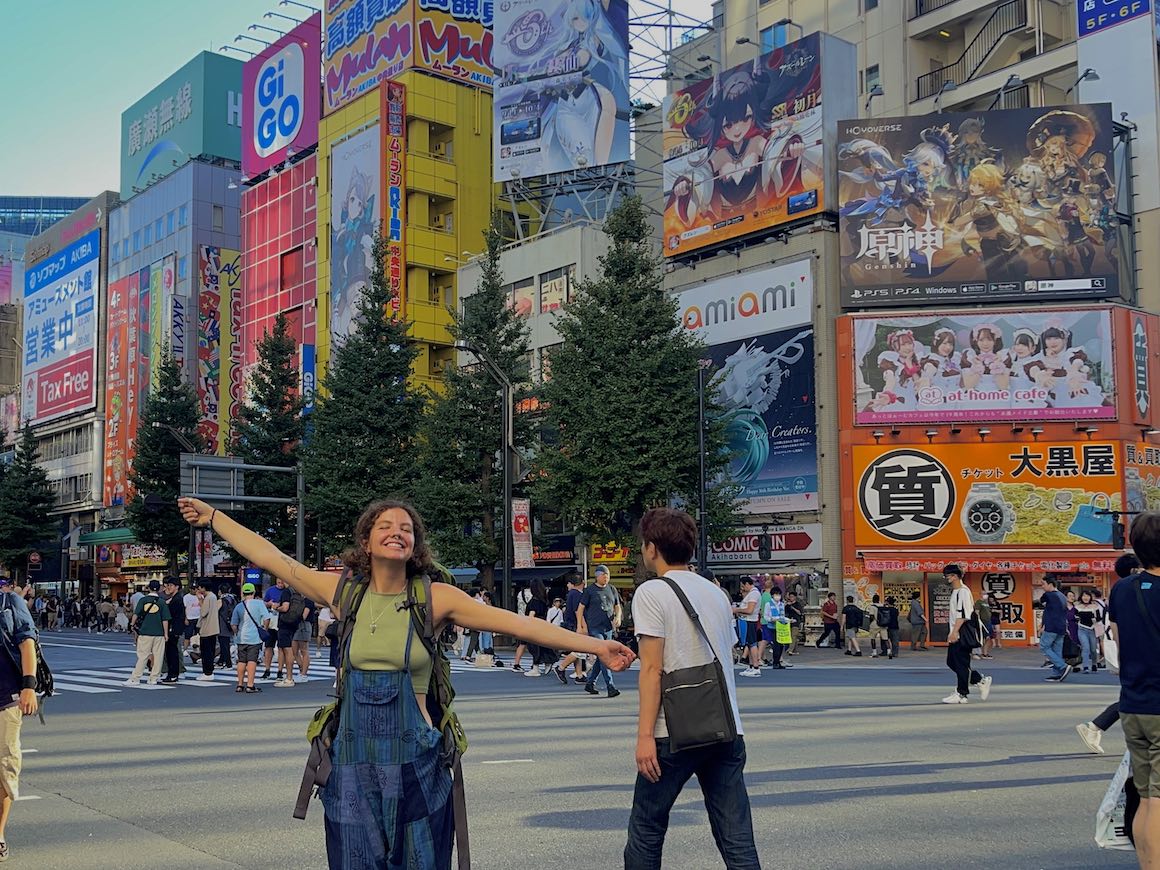
A Little Bit About this 4-Day Tokyo Itinerary
Where to stay in tokyo, tokyo itinerary day 1: ueno and akihabara, tokyo itinerary day 2: ginza and roppongi, tokyo itinerary day 3: asakusa and shibuya, tokyo itinerary day 4:, best time to visit tokyo, how to get around tokyo, planning a trip to tokyo – what to pack and prepare, faq on tokyo itinerary, final thoughts.
Make no mistake: Tokyo is an enormous megalopolis and one of the biggest and most expensive cities in the world . No matter if you spend 3 days in Tokyo or 3 years, there is no way that you will see everything that it has to offer. Whether you’re backpacking around Japan or on a holiday to this amazing country, you’ll want to plan things out properly.
Be that as it may, it is possible to spend your time in Tokyo wisely . With the right itinerary in hand, you’ll be able to get a healthy dose of the city without burning yourself out and losing attention.
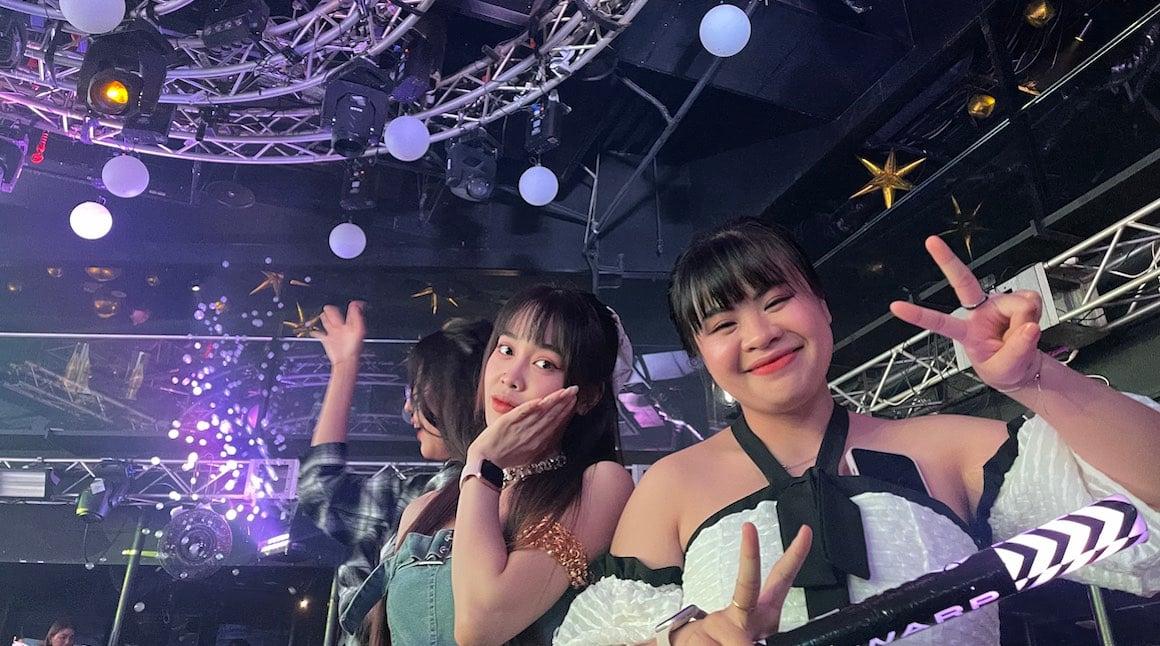
We’ve decided to spend three days in Tokyo, though it is definitely possible to spend more time here. If you’re in fact spending more time here and need some more ideas, we’ve included some additional things to do with an extra day after the itinerary sections.
Looking for accommodation for your trip? Check out our epic Tokyo Hostel Guide for the best places to stay!

Unlock Our GREATEST Travel Secrets!
Sign up for our newsletter and get the best travel tips delivered right to your inbox.
4-Day Tokyo Itinerary Overview
- Day 1 in Tokyo: Ueno Park Gardens , Museum of Nature and Science , Akihabara , Shinjuku
- Day 2 in Tokyo: Tsukiji Market , National Art Centre , Meiji Shrine , Kabukiza Theatre , Ginza
- Day 3 in Tokyo: Tokyo National Museum , Senso-Ji and Asakusa , Tokyo Skytree , Shibuya
- Day 4 in Tokyo: The Miraikan + teamLAB , Sumo Wrestling , Disneyland ,

With a Tokyo City Pass , you can experience the best of Tokyo at the CHEAPEST prices. Discounts, attractions, tickets, and even public transport are all standards in any good city pass – be sure invest now and save them $$$ when you arrive!
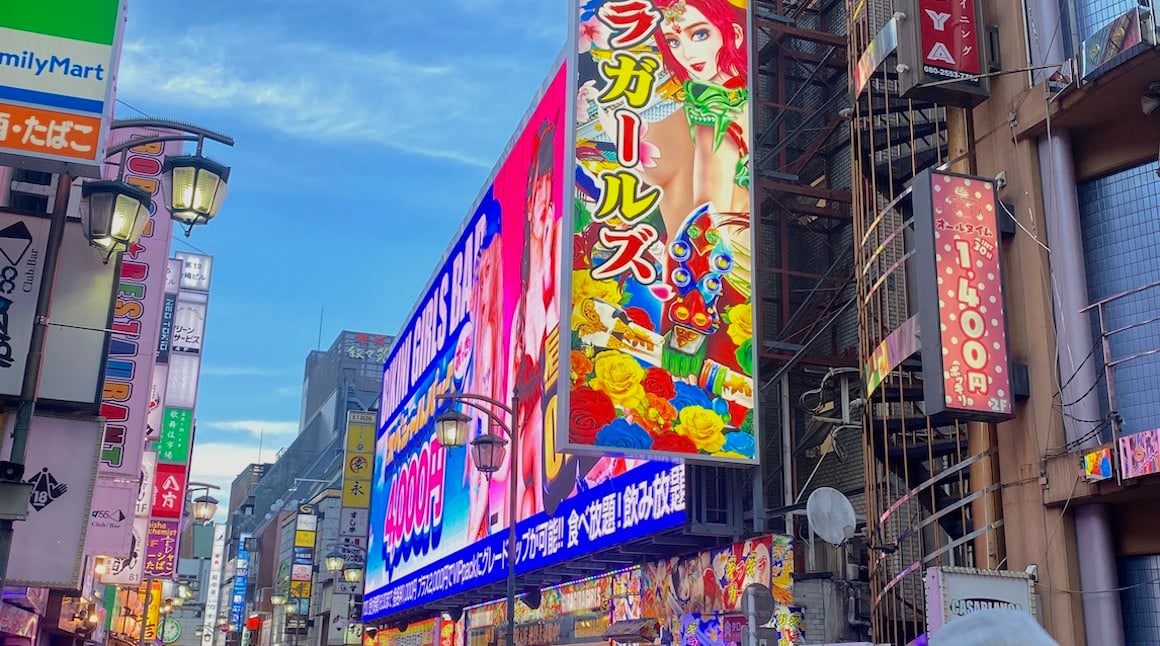
Tokyo’s neighbourhoods are innovative, modernized and yet still cultured. Mixing the old with the new, you will be spoilt for choice when it comes to finding an area that is right for your trip. Knowing where to stay in Tokyo will help make your visit to this awesome city stress-free!
Shibuya is the most popular of Tokyo’s neighbourhoods; it is buzzing with life and people going places. You will be forgiven for thinking you’re somehow in New York! Shibuya offers tourists a place to experience the vibrant life of Tokyo’s latest trends and the commercial scene. There are some lovely homestays in Tokyo and a fair few of them are here.
Akasaka is one of the major commercial centres of Tokyo and boasts so many fancy and more luxurious hotels, spas, and restaurants. Most of the best tourist attractions are found here, and you will never be bored when visiting this neighbourhood!
Ueno is the cultural centre of Tokyo and is full of fabulous concert halls, museums, fine arts, and plenty of traditional temples important to Tokyo’s history. One of the best places in this neighbourhood is Ueno Park where a dazzling number of trees of different varieties, and colours, stand proudly to be admired as you stroll past or sit down for a leisurely picnic.
Best Hostel in Tokyo – UNPLAN Shinjuku
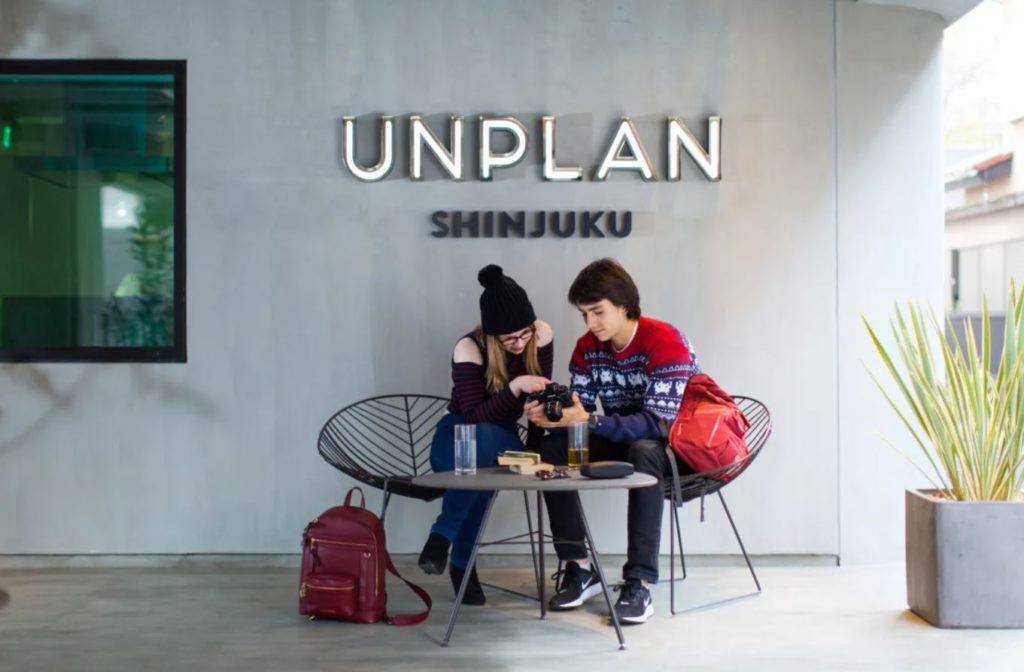
UNPLAN Shinjuku is most definitely one of the coolest hostels in Tokyo, and is perfect for everyone; groups, couples, or single backpackers. It’s flashy, modern, and pimped out for all a Tokyo backpacker needs. It’s easy to meet other enthusiastic travellers, with whom you can exchange memorable stories and enjoy your stay.
Best Airbnb in Tokyo – Cosy Roppongi apartment with balcony
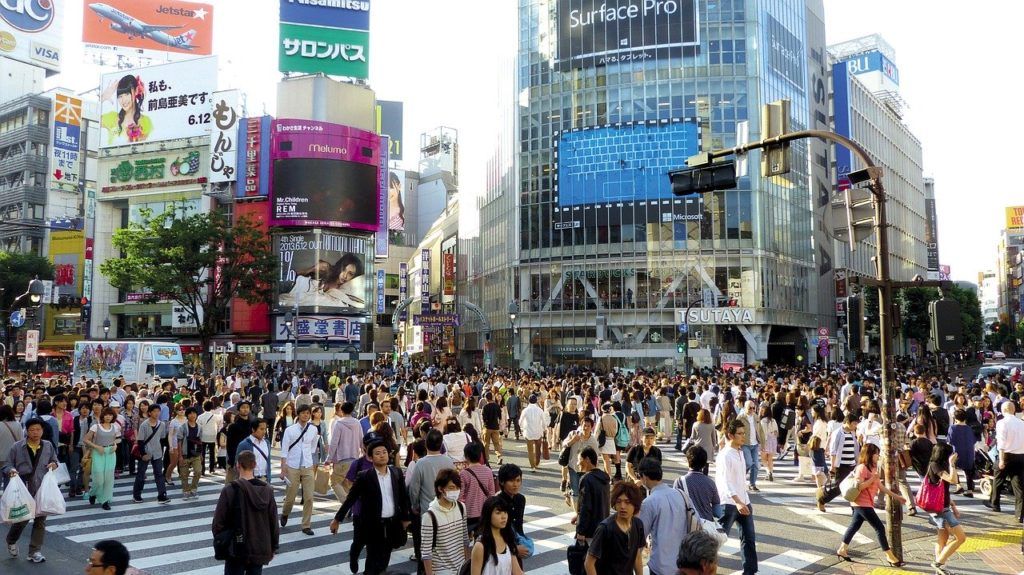
Take an apartment in Roppongi! Why?
It’s the best neighbourhood to stay in Tokyo for nightlife! Go out, wreck yourself, and go home to sleep it off. If you’re lucky enough to bring someone home, you got a sexy pad to sleep it off together.
Best Budget Hotel in Tokyo – Ueno Hotel
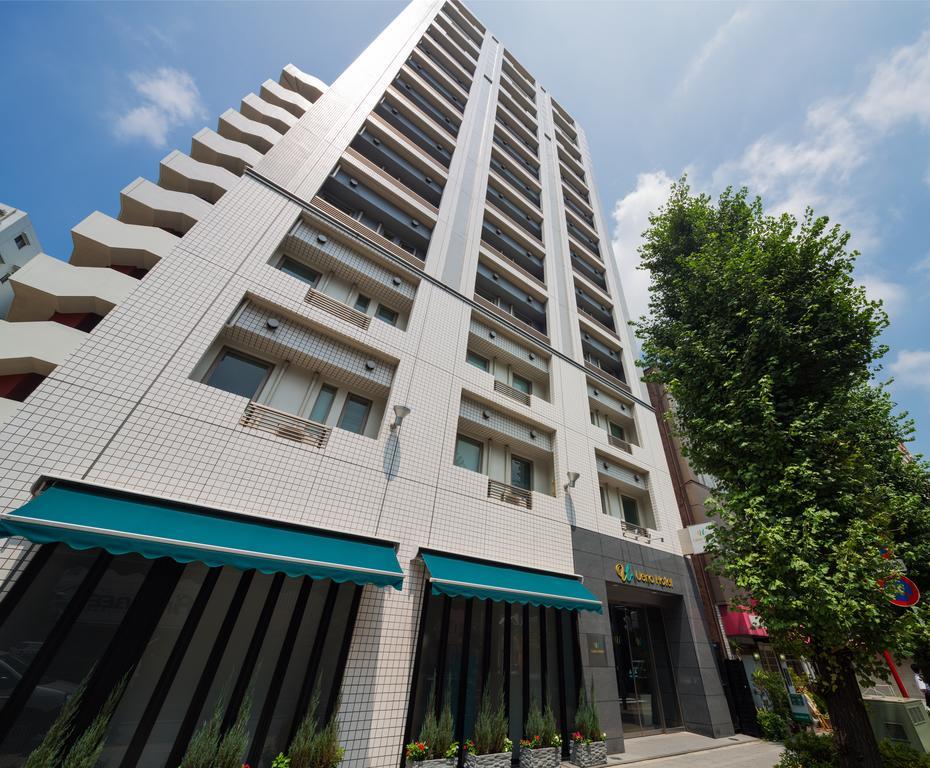
If you’re wanting to go easy on your bank balance, then look no further than Ueno Hotel for an affordable stay in a comfortable hotel. The service is excellent, and this hotel is within a 10-minute walking distance of The National Museum of Nature, The Science Museum and The Museum of Western Art.
Best Luxury Hotel in Tokyo – Royal Park Hotel
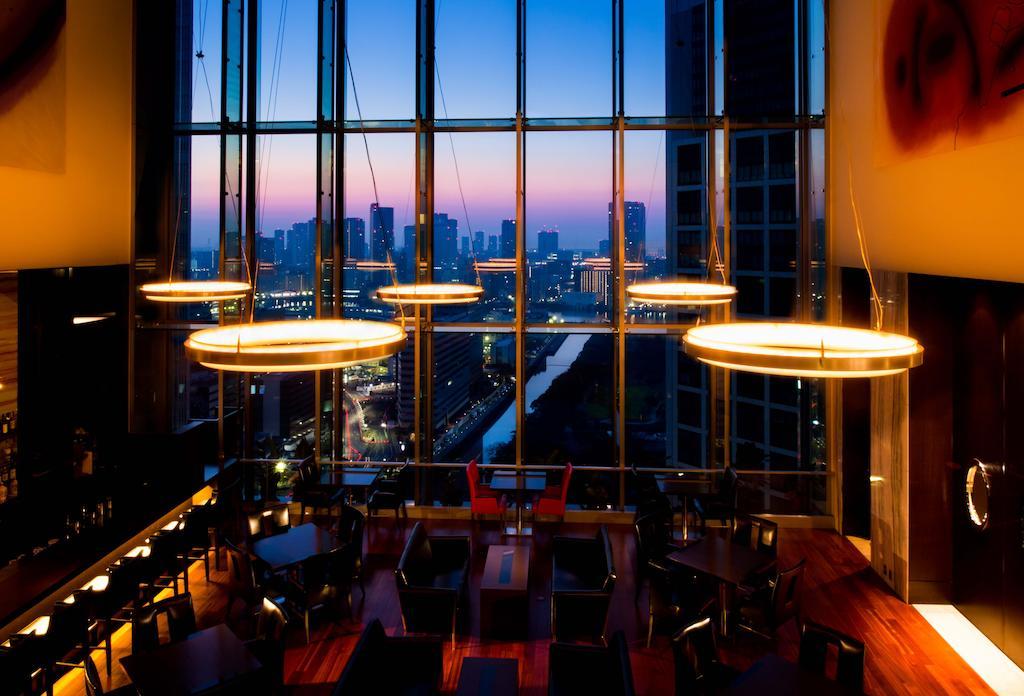
If 5-star accommodation and amazing views are what tickles your fancy, then the Royal Park Hotel in Akasaka, Roppongi, is the way to go. You will have easy access to the Shiodome Stations as well as simply having the extravagant experience of staying in one of Tokyo’s highest rated luxury hotels. The hotel restaurant is prided on their high-class cuisine, they provide spa facilities, and offer luxury lounges to relax in and mingle with other guests.
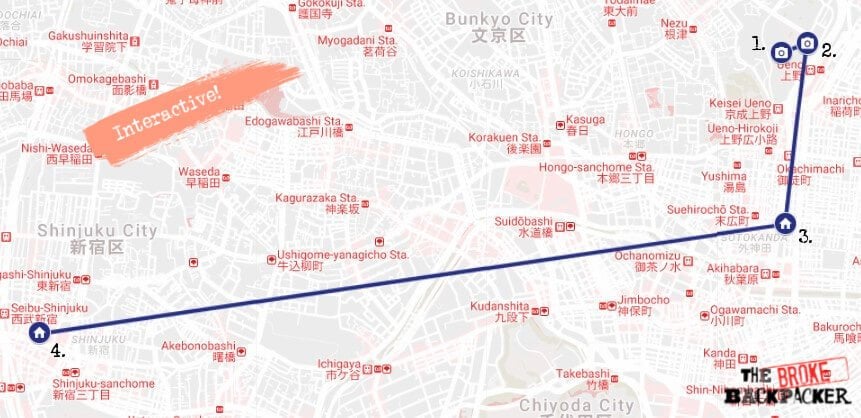
We kick off this Tokyo itinerary by visiting some of the most well-known attractions in the city e.g. Ueno and Shinjuku. It’s going to be a pretty mixed day today featuring both traditional and modern Japanese locations; by the end of it, you’ll be both exhausted and hungry for more!
10:00 AM – Ueno Park Gardens
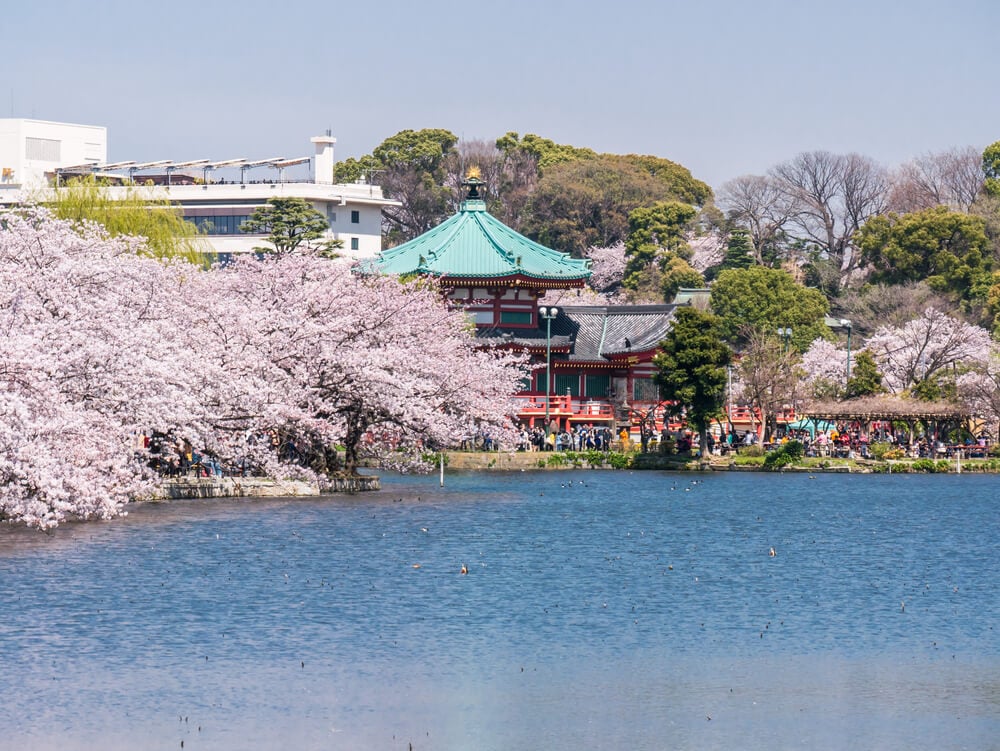
Built on the former grounds of the Keniji Temple near the centre of Tokyo, Ueno Park used to home the wealthiest and biggest family temple that ruled during the Edo Period.
After being destroyed during a battle the grounds have now become the most stunning western-styled park, and a statue of celebrated Samurai Saigo Takamori stands to commemorate the samurai that fought in Japan’s Meiji Restoration of the late 19th century.
The park still breathes exquisite grandeur and is arguably the most popular city park in the whole of Japan. There are peaceful ponds decorated with lotus flowers bobbing at their surface, temple halls, shrines, and rows of the most famous Tokyo Cherry Blossom trees.
Note that Ueno Park is massive! Make sure you don’t strain yourself whilst exploring these huge gardens. Take regular breaks to refresh and relax.
- Cost – ¥620 per adult ($5.50).
- How long should I stay here? 3 hours at least.
- Getting there – Take the train to Ueno Station, which is one of the busiest and most well-connected stations in Tokyo.
2:00 PM – National Museum of Nature and Science
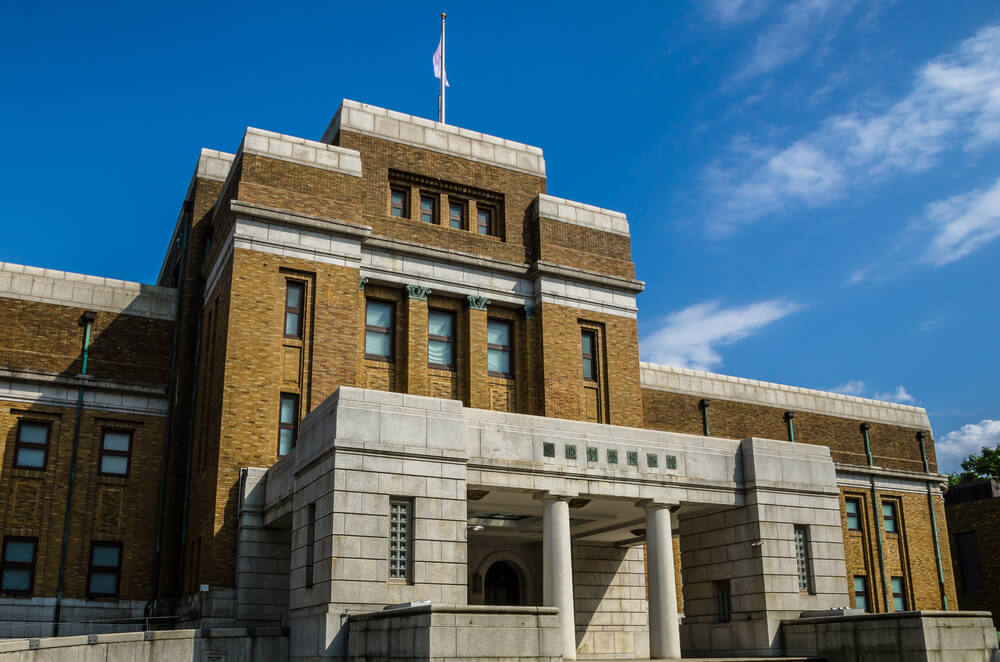
The National Museum of Nature and Science is one of the oldest museums in Tokyo, yet despite its age, this world-class institution is completely modern and has some really cool displays! You will be taken on a journey from the beginning of technological advancements in Tokyo (ie the wheel), right up to the very latest in robotics.
There are fascinating and fun interactive displays on space development explaining how our understanding of the universe has grown (ie, we no longer think it is been carried on a giant turtle).
Aside from the futuristic stuff, the Japan Gallery also hosts some impressive prehistoric dinosaur bones and there is a lovely display of ancient, traditional Japanese costume.
All the tech-savvy people will thoroughly enjoy the Global Gallery, where everything from vintage cars to high-tech technology is provided for you to admire.
If you’re looking for a place to eat before visiting the museum, head over to La Cocorico. This laid back yet still upmarket restaurant is famous for its rotisserie chicken, which has the most amazing crunchy crust and well-prepared tender meat. Both are located in Ueno Park.
- Cost – ¥620 ($5.50) per person.
- How long should I stay here? 2-3 hours.
- Getting there – The Museum is located in Ueno Park in the northeastern section. Simply walk.
5:00 PM – Akihabara
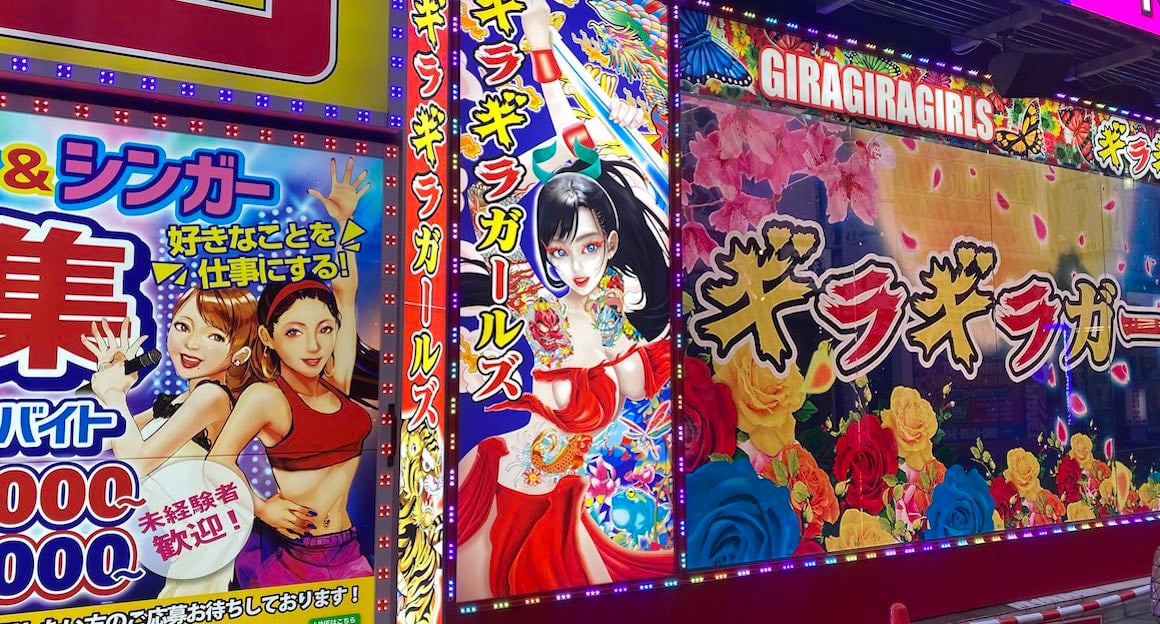
Akihabara is ground-zero for all things otaku ! We’re talking anime fanatics, comic book shops, blaring neon lights, and scantily-dressed milkmaids. All the eccentric stuff that people often associate with Tokyo.
Whilst it can feel a little strange walking around Akihabara, you should totally embrace it. This is a unique place to visit in Tokyo and is a great foil to the city’s more traditional areas, which there are many. Jump into an arcade, visit a sex shop (M’s first), and don’t be weirded about by those maids.
The best thing to do in Akihabara is to just wander around. Pop into an anime shop for a moment, browse the ubiquitous electronic stores, and then wander some more. Grab a drink or a quick snack at the legendary Gundam Cafe if you grew up watching the cartoon (90s kids unite!)
- Cost – Free if you’re just window shopping.
- How long should I stay here? 3-4 hours.
- Getting there – Take the train from Ueno Station to Akihabara Station. Multiple trains go in this direction. Travel time is about 5 minutes.
9:00 PM – Shinjuku
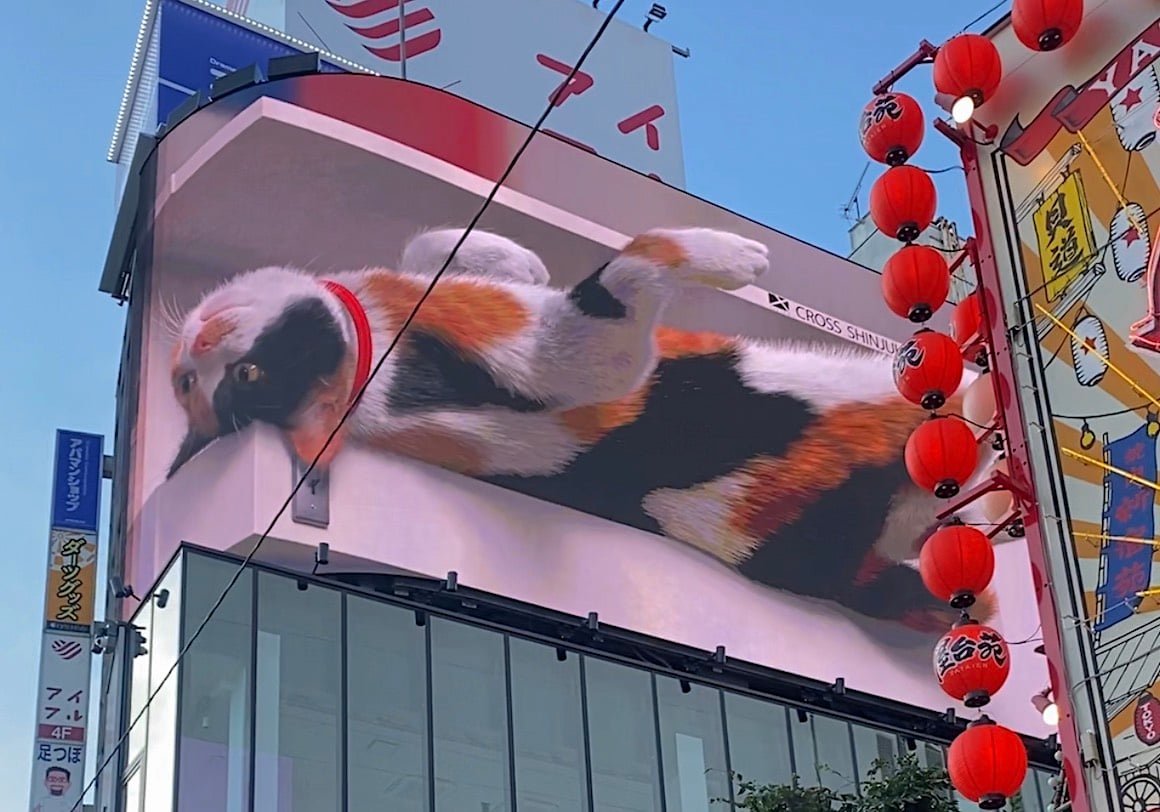
No trip to Tokyo is complete without visiting the perpetually shining Shinjuku district. With endless rows of neon signs, towering skyscrapers, and bustling crowds, this is quintessential Tokyo. It’s the stuff that anime is made of and reminds one immediately of tour-de-forces like Akira or Neon Genesis.
Shinjuku is also where you’ll find some of the best nightlife in Tokyo, including some of the most famous and notorious venues in the city.
The Robot Restaurant is a whole new world of entertainment! The show’s dance routine is prepared for months in advance, featuring pole dancing, singing, robot riding, drumming, and blasting pop music. This is one of the best ways to enjoy your time in Tokyo!
Be sure to drop by the Golden Gai corridor just down the street. This claustrophobic area is famous for its hole-in-the-wall bars that can barely fit a couple of people at a time. You could conceivably bar hop a dozen times and not make it 100 feet!
- Cost – A beer will be around $6. Stiffer drinks $8.
- How long should I stay here? As long as you want but it’s an early day tomorrow.
- Getting there – From Akihabara Station it’s a 20-minute train ride to the main station in Shinjuku. Shinjuku is a huge district though with lots of different places to depart from; travel times may vary.

Wanna know how to pack like a pro? Well for a start you need the right gear….
These are packing cubes for the globetrotters and compression sacks for the real adventurers – these babies are a traveller’s best kept secret. They organise yo’ packing and minimise volume too so you can pack MORE.
Or, y’know… you can stick to just chucking it all in your backpack…
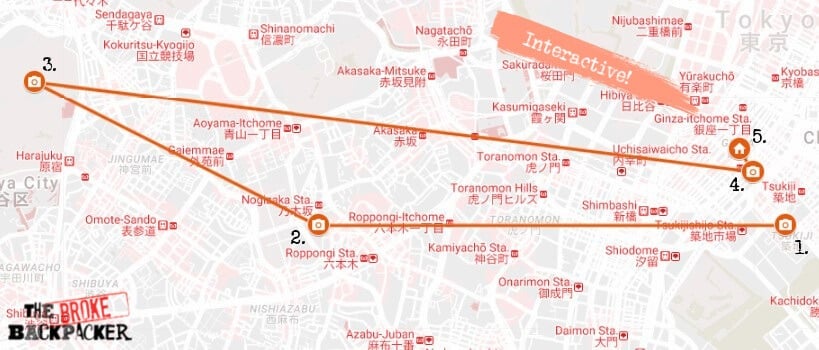
This is one of my favorite day trips in Tokyo and it’s going to be a looooonnngg day boys and girls. Hope you didn’t have too much fun in Shinjuku last night! Today we’re going to be visiting the legendary Shinjuku fish market plus a few other staples of Tokyo. It’ll be an early morning but also an early evening if you want.
8:00 AM – The Tsukiji Fish Market
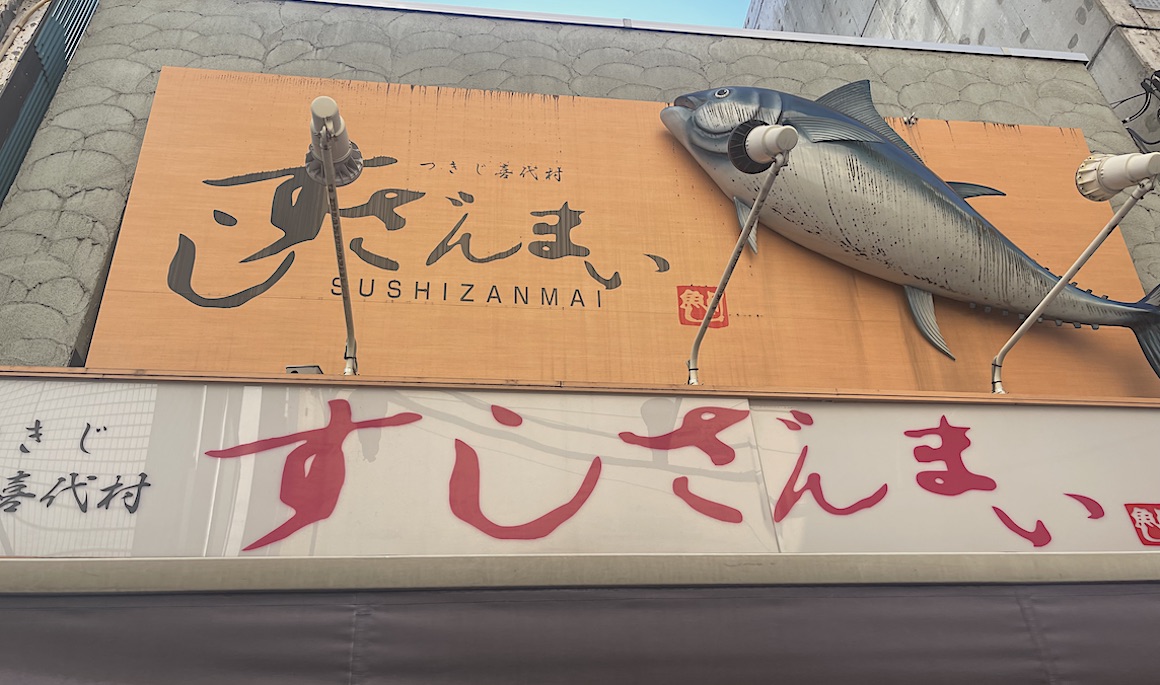
The Tsukiji Market is the biggest wholesale seafood market in the whole world, so you can expect mass crowds with a lot of bustling and bargaining. The fish market was first founded in 1935, so it has been around for quite some time and continues to captivate all food lovers!
If you enjoy fresh and tasty seafood, sushi, and amazing culinary tools, then there is literally nowhere else in the world that could provide you with such an unforgettable and satisfying experience such as the Tsukiji Market.
Unfortunately, it’s no longer possible to watch the infamous tuna auctions of Tsukiji. They were moved to the newer fish market, Toyosu, which is several miles away.
This market has appeared on every single online Tokyo bucket list! There is nothing like seeing what can happen when thousands of people from all over the world gather to celebrate their enthusiasm for seafood and cooking.
- Cost – Free to browse. Food prices vary.
- How long should I stay here? 3-4 hours. (It can take hours just to get some sushi!)
- Getting there – The nearest train station is at Tsukijishijo Station and it’s a 5-minute walk to the market.
11:00 AM – The National Art Centre
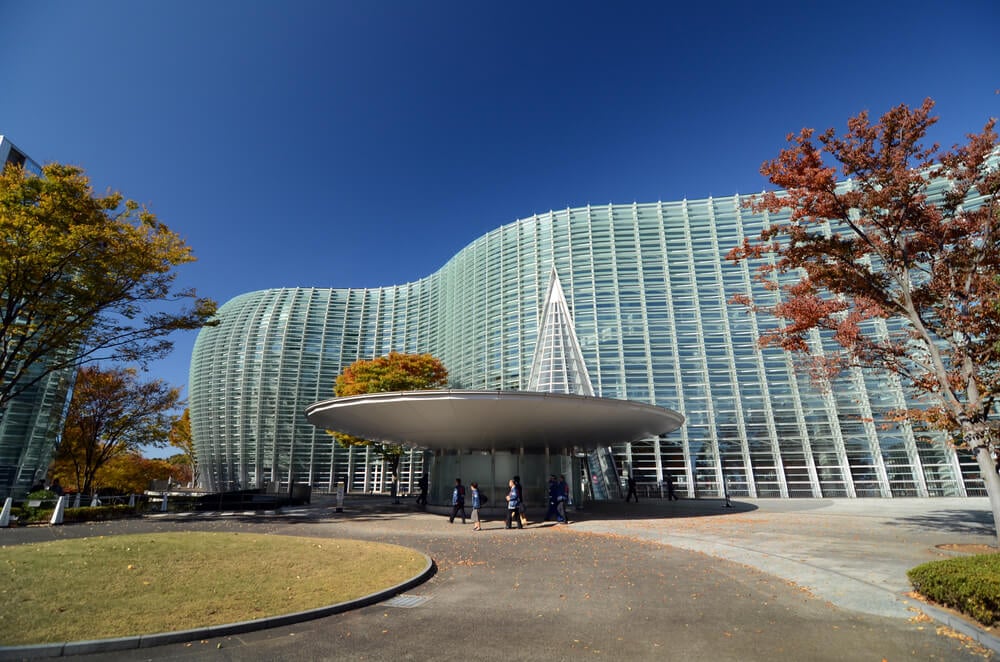
The National Art Centre has gained a huge reputation for being one of the best art museums in Japan. The museum hosts around 600 modern and ancient fine art paintings with a focus on presenting artwork from the 20th century.
This museum’s signature feature is its unique, curved-glass facade. Inside you’ll find exhibitions and paintings dating from 538 AD, ancient calligraphy, authentic samurai swords, and a bunch of national treasures such as the lacquer work from the old Horyu-Ji temple. Showcasing talent, emotion, depth, historical heritage, and unique perspective – this is a true masterpiece of a building and a world-class museum.
If you’re looking for a place to eat after the museum, consider looking around Jingumae neighbourhood. It’s about halfway to our next stop and features a lot of cool, funky cafes.
- Cost – ¥1500 ($13.00).
- How long should I stay here? Around 2 hours. Save time for lunch.
- Getting there – Take the Oedo Train from Tsukijishijo Station towards Daimon/Roppongi and get off at Roppongi Station. It’s about 20 minutes ride.
1:00 PM – The Meiji Shrine
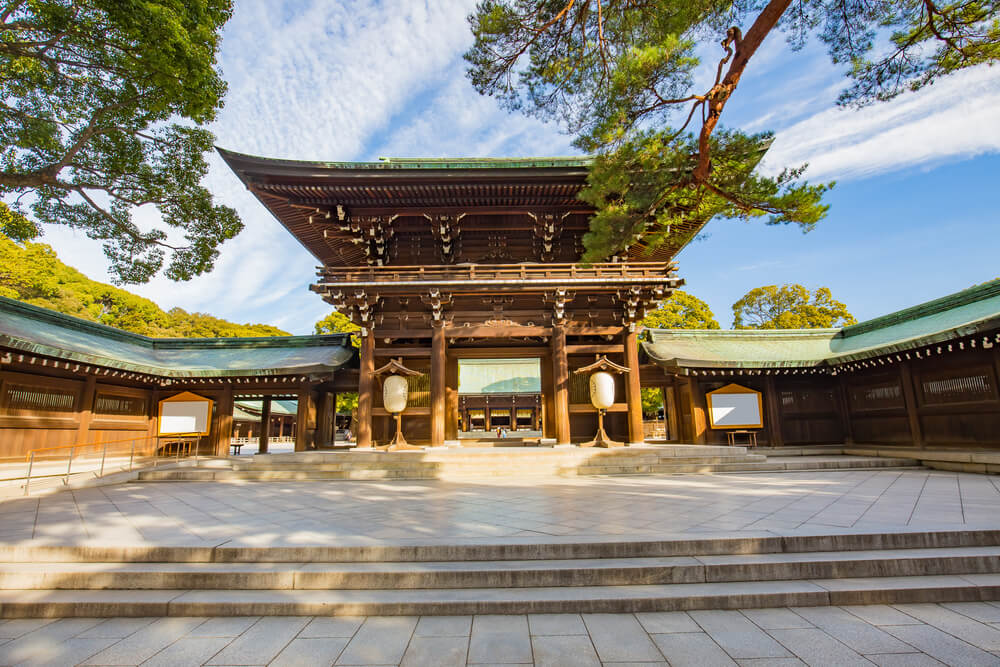
The shrine has become one of Tokyo’s most revered religious shrines, and it has a fascinating history. The shrine of Emperor Meiji and Empress Shken dates all the way back to 1915. The site is 175-acres of lush, old forest trees, with a dazzling amount of different species that will show you the glory of Japan’s indigenous plant life.
Included in this cluster of trees is the mysterious “wishing tree”, which is said to fulfil your deepest desires! Many tourists and locals write their wishes on a piece of paper and hang it onto the branches. If your wish does not come true then sorry, no refunds.
Meiji Shrine is glowing with majesty. Step into the Inner Precinct museum that still has all the original treasures of this royal ruler and his wife. Scenic doesn’t even begin to describe the Shine’s Inner Garden.
- Cost – ¥500 ($4.50).
- How long should I stay here? 2-3 hours.
- Getting there – You can take the Chiyoda Train from Nogizaka Station (25 minutes) though you may just be better off walking (35 minutes).
4:00 PM – Kabukiza Theatre
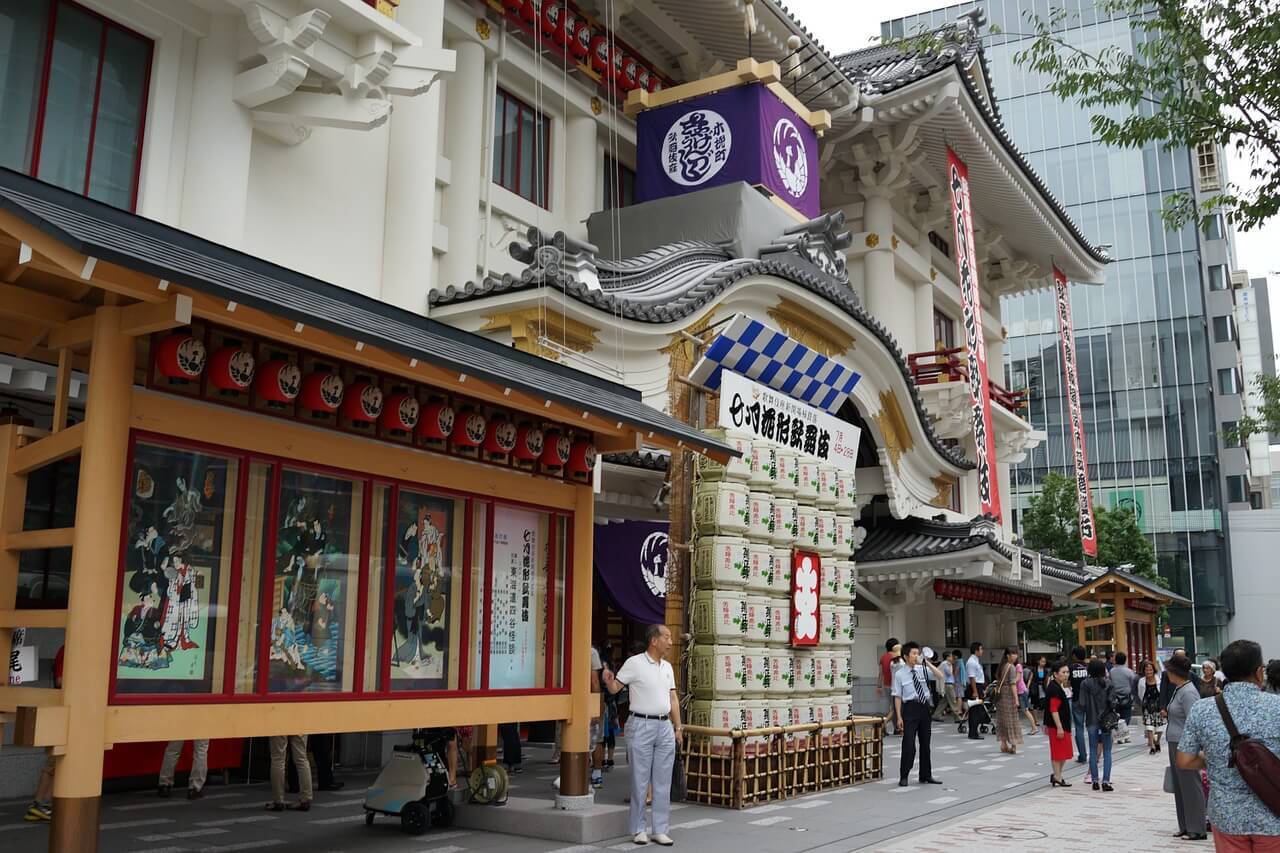
Kabukiza is the very biggest and most renowned theatre in Tokyo and some of the very best traditional shows in all of Japan happen here. A show here is sure to be a once-in-a-lifetime experience that will leave you walking away feeling thrilled!
Each show is designed to blow your mind with colourful costumes, magical sets, amazing backdrops, vibrant makeup, and incredible performers! The plays capture the essence of Tokyo’s culture in dramatic and humorous ways.
The overall architecture of the building is also breathtaking and has a tremendously exciting atmosphere! Here you can see the best shows in the whole of Tokyo in the most scenic venue.
Note that the vast majority of shows are in Japanese. Also, some shows can last an entire day depending on how epic the story is. We’ve only set aside enough time to see a short show or maybe a single act in this Tokyo itinerary so be sure to double-check what kind of kabuki is being performed before buying your ticket.
- Cost – Standard tickets are up to ¥20, 000 ($180). Single Act tickets are between ¥500-3000 ($5.00-28.00).
- How long should I stay here? Depends on which show you watch and how many acts. Each act is around an hour.
- Getting there – Take the Chiyoda Train from Harajuku Station and ride about 10 minutes before getting off at Hibiya Station. You’ll need to walk an additional 15 minutes to reach the theater.
9:00 PM – Ginza District
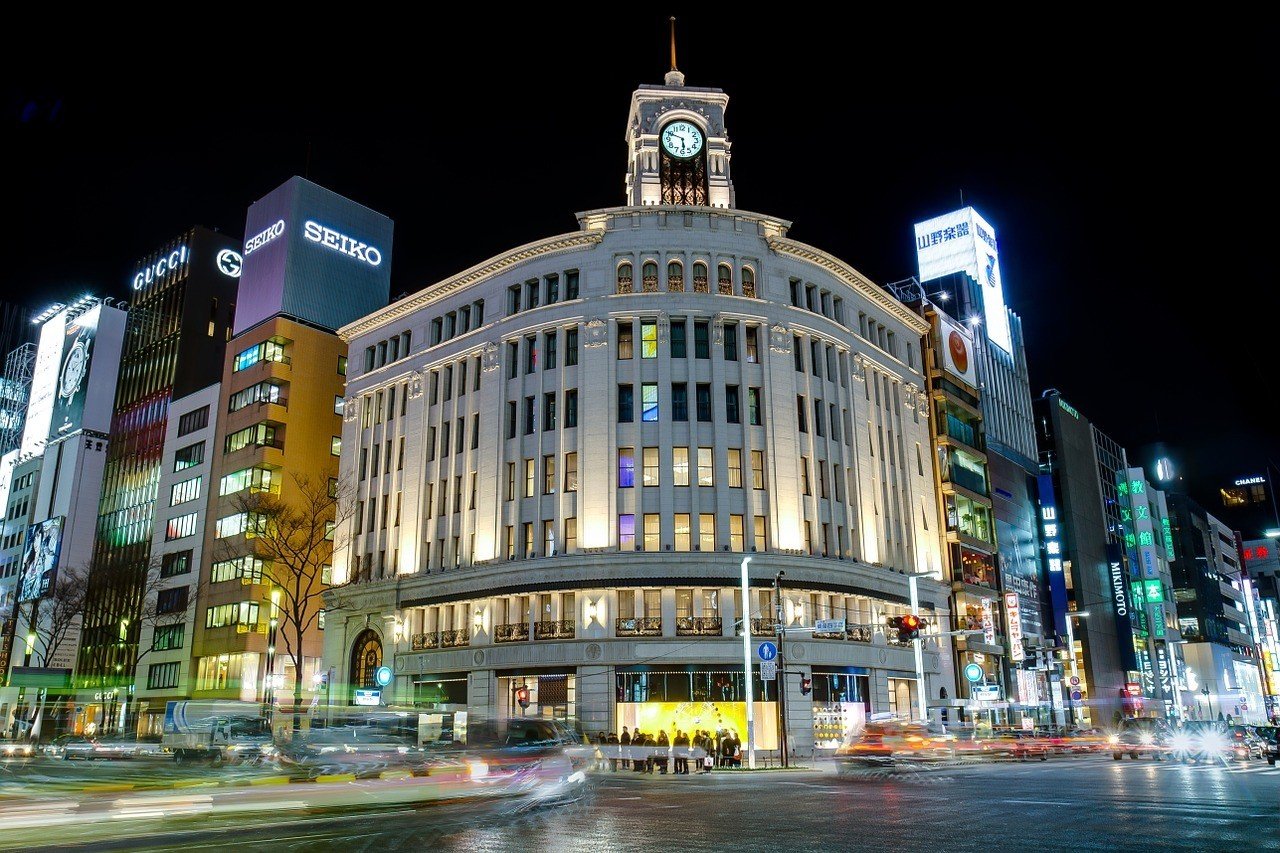
Ginza is a shoppers paradise and a very expensive one at that. The area hosts famous brand stores such as Dior, Louis Vuitton, Channel, Gucci, Armani, Cartier, among others, and the prices here are among the highest in the world! There’s really an endless amount of high-end fashion shops and just looking at the price tags is a show unto itself.
If you’re trying to save money while visiting Japan , there are also plenty of smaller-scale stores with traditional attire, cool clobber, and more affordable stuff. You can even find yourself an authentic Japanese kimono or treat yourself to some organic charcoal-infused beauty products.
It is not just clothing to be found here and there are over 200 art galleries for you to explore as well. The Pola Museum Art Annex is totally free to enter.
Finally, don’t forget to visit the famous Ginza Crossing, which is one of the most photographed slabs of asphalt in the world.
- Cost – Free to window shop.
- How long should I stay here? A couple of hours maybe.
- Getting there – If you went to the Kabukiza Theatre, you’ll already be in Ginza.
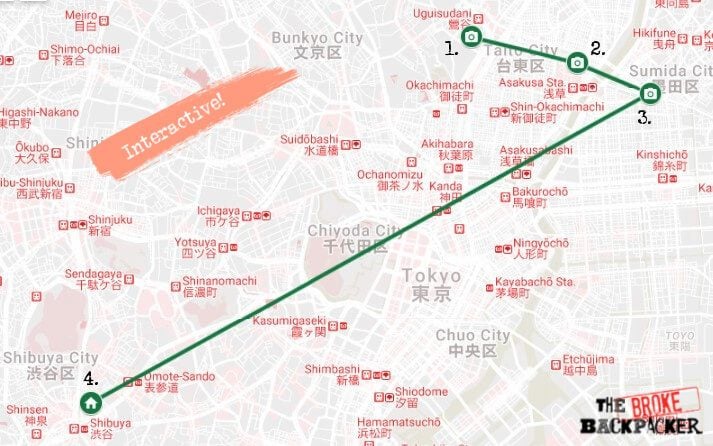
We wrap our 3-day Tokyo itinerary by visiting the last of the best. Like most other days, we’re going to get a heavy dose of traditional Japanese culture followed by some more contemporary attractions towards the end of the day. Today we get to visit Shibuya, which will be the highlight of the trip!
11:00 AM – National Museum of Tokyo
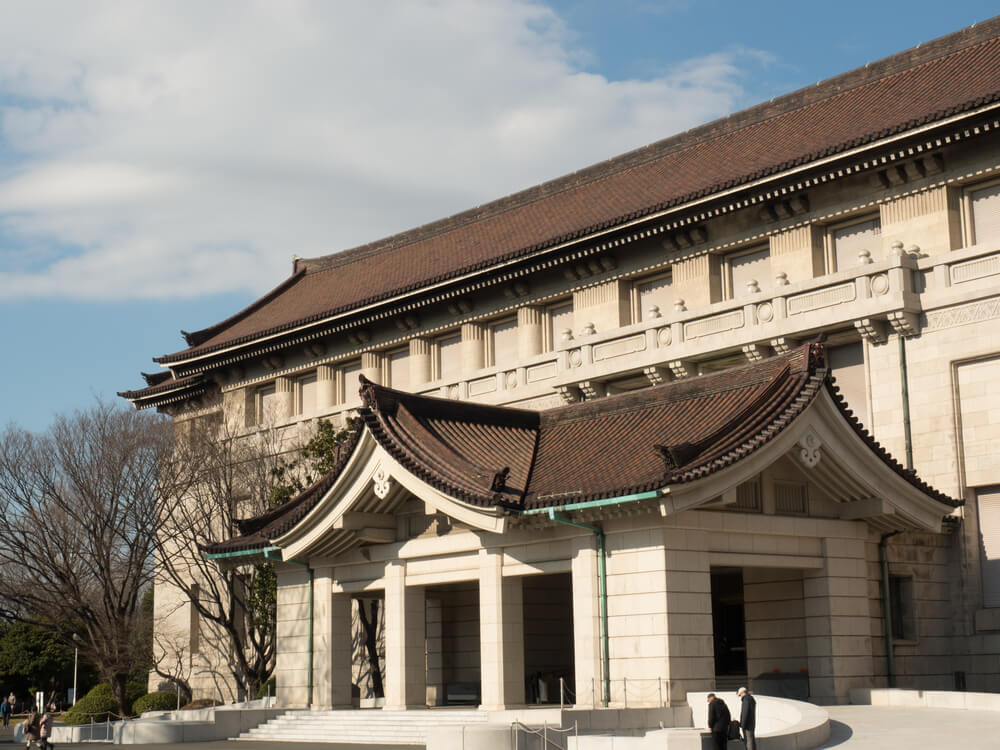
Tokyo’s National Museum is one of the largest and oldest in the country. This enormous museum, consisting of six buildings and countless exhibitions, is the place to be if you’re at all interested in traditional Japanese culture and history.
There are so many different kinds of artefacts to see here: samurai armour, calligraphy, antiquated buildings, imperial pomp, the list goes on. There are even tea ceremonies organized but they’re a bit less frequent. Visiting here for a few hours will round out our 3-day Tokyo itinerary very nicely. Hell, if you’re REALLY into Japanese history, you could easily spend the entire day here.
- Cost – ¥620 ($6.00).
- How long should I stay here? Around 2 hours.
2:00 PM – Senso-Ji and Asakusa
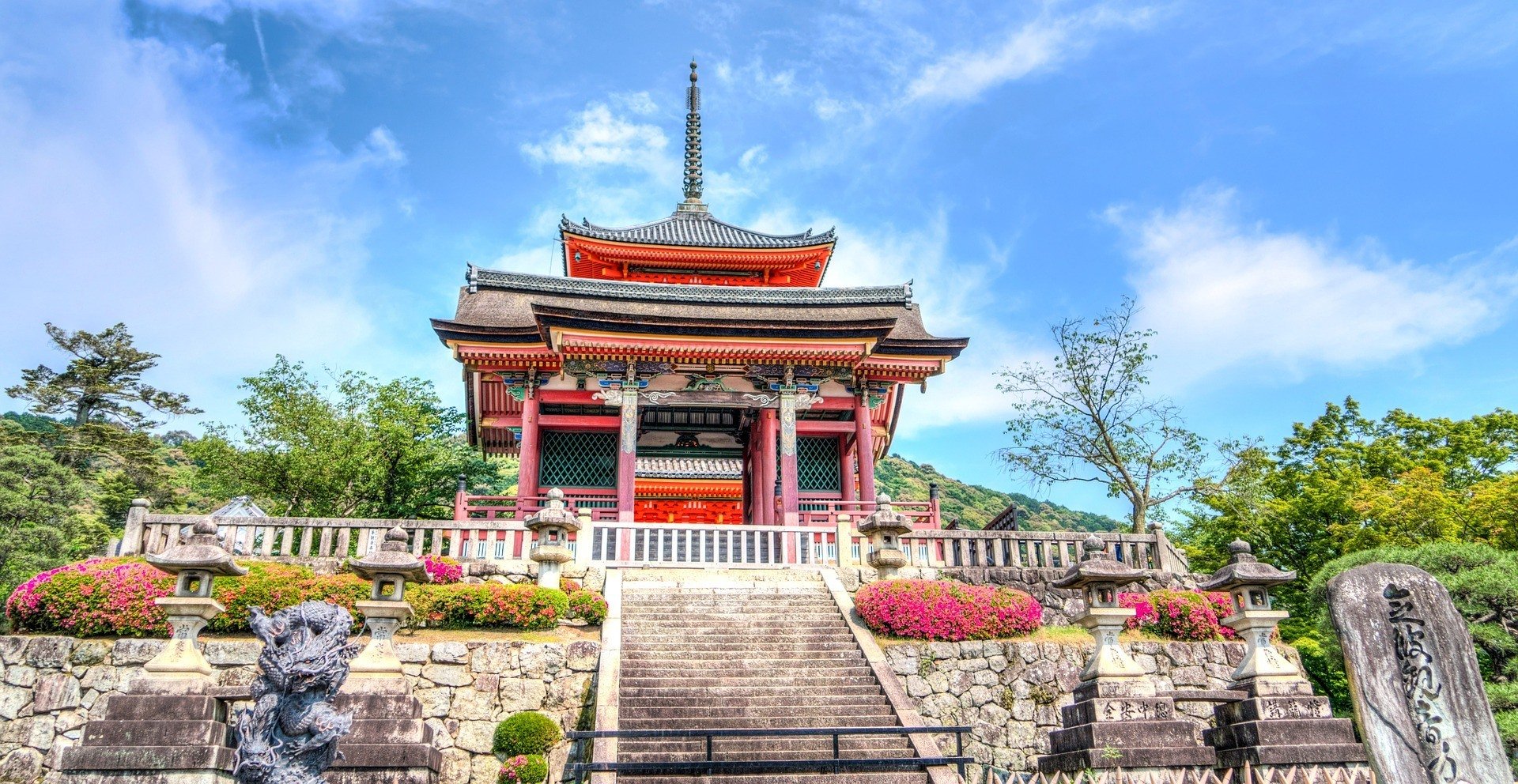
Sens-Ji is the largest and the most ancient Buddhist temple in the whole of Tokyo. It attracts locals and international travellers alike and is dedicated to the Bodhisattva of compassion, Guan Yin. There are beautiful shrines for you to admire, such as the Shinto Shrine, the Akasaka Shrine, and even an exquisite 5 story pagoda.
Strolling about this ancient temple will give you goosebumps! This is such a great way to begin your journey into Tokyo because you will have a firsthand experience of one of the most significant spiritual and historical landmarks in the city.
Be sure to grab a popular Ningyo Yaki from the many street stores selling these delicious sweet cakes filled with equally sweet red bean paste in Nakamise. Nakamise is adjacent to Sens-Ji and is full of a variety of traditionally sugary candies, snacks, and meals.
Once you’ve had your fill of the temple and have had a snack, feel free to wander around. The Asakusa neighbourhood in general is a good opportunity to experience a more traditional Tokyo.
- Cost – ¥500 ($4.50).
- How long should I stay here? 3-4 hours.
- Getting there – Walk from Ueno Park (25 minutes) or take the Ginza Train from Ueno Station, getting off at Asakusa Station (20 minutes).
6:00 PM – The Tokyo Skytree
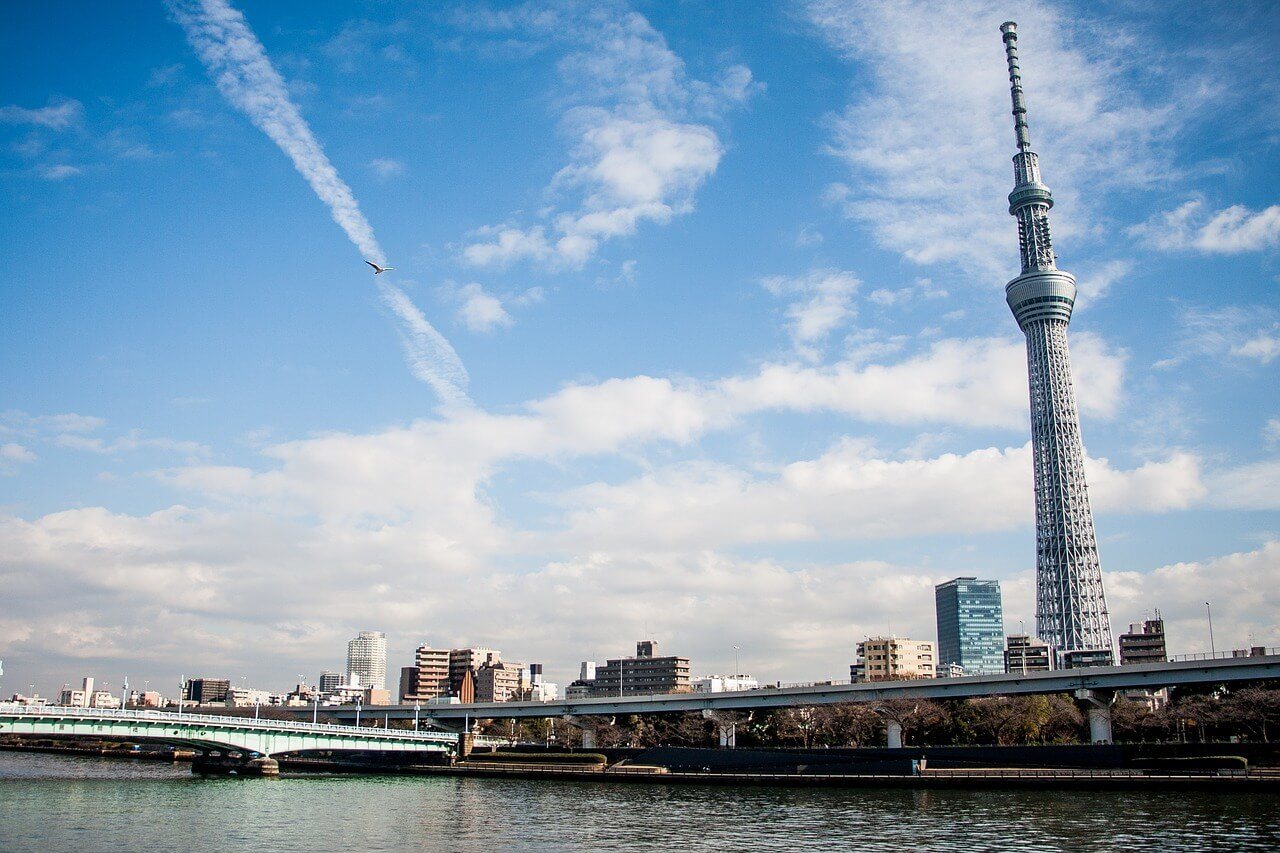
The Tokyo Skytree is one of the most raved tourist attractions in Japan and is a must-see. It is best experienced in the early evening or night as the enormous 634-meter observation tower sticks out like a multicoloured middle finger after sunset.
You can spot it miles away and might think it to be a rocket ship! But no, it is the city’s tallest structure, as well as the tallest free-standing tower in the world. Seeing this magnificent tower is something that must be done when spending a couple of days in Tokyo.
You don’t have to climb all the way to the top as there are viewing spots all the way up. However, if your stomach is steel and you think you can handle looking at Tokyo from high up, then be sure to venture the glass spiral staircase to the 450-meter point! The walls are completely made from glass and the view is epic.
If you want to splurge a bit, the 634 Musashi Restaurant is one of the most excellent in Tokyo, and it provides off the chart views whilst you enjoy fine cuisine. The food is French fusion and incorporates the older Edo age of Tokyo’s traditional style. The menu is constantly changing and upgrading, and the chiefs are world-class.
- Cost – ¥410-770 ($3.50-7.00) per person.
- How long should I stay here? 1-2 hours.
- Getting there – Walk from Asakusa (15 minutes) or take the Asakusa Train from Asakusa Station (10 minutes).
9:00 PM – Shibuya
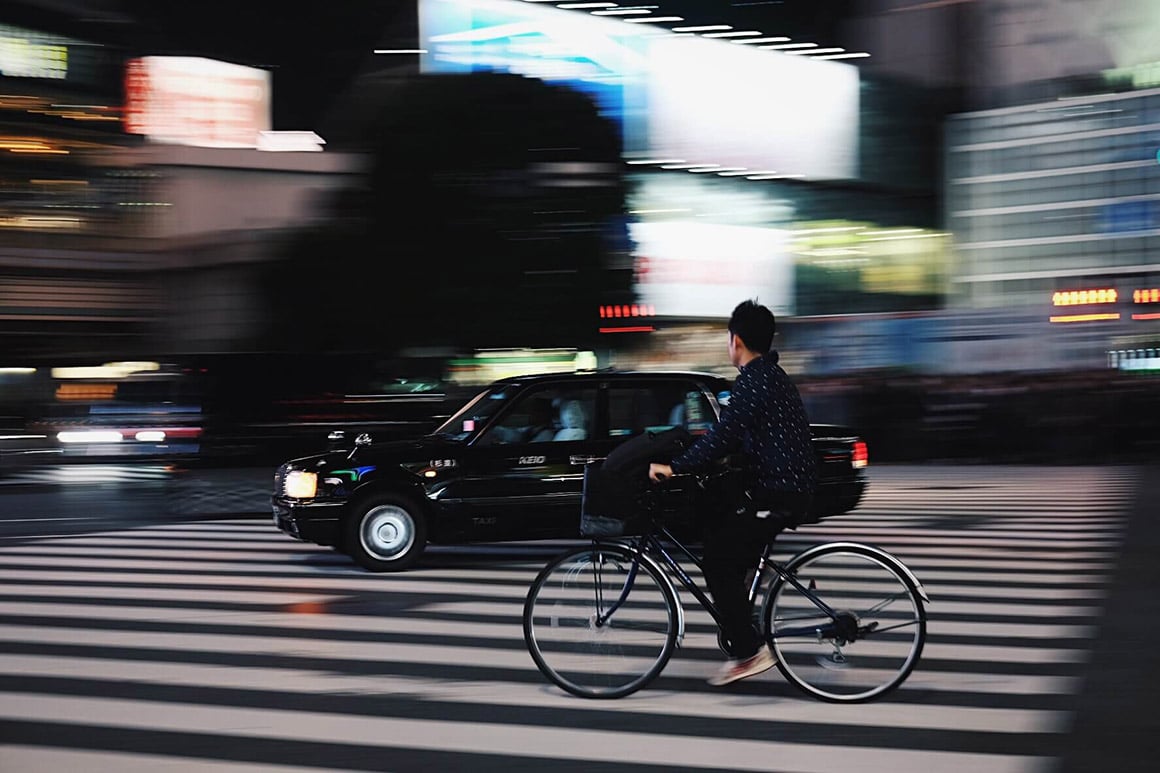
Shinjuku is often considered the beating heart of Tokyo and the most recognisable part of the city. So be it: Shibuya is the rebellious, cooler side of Tokyo! There are so many different neighbourhoods and so many different levels of cool here that every type of traveller will find what they are looking for.
Central Shibuya is very similar to Shinjuku in that both are more neon-tinged and are quite busy. Here you’ll also find Shibuya Crossing: another world-famous crosswalk in Tokyo. What Shibuya has going for it though is lots of variety in its neighbourhoods.
Daikanyama is a very upcoming and electric area that is often compared to Brooklyn, New York. Think brick buildings, large window fronts, and Euro-esque coffeeshops and you’ll have a good idea of Daikanyama.
Ebisu is a very laid-back and residential area that is better for a “quieter” night out. Most of the locals head to the tiny tachinomiya bars, which are packed next to one another and almost always standing room only.
Finally, there’s Harajuku , infamous for birthing Tokyo’s hyper-cute culture. We’re talking bright wigs, huge dresses, and an overuse of the peace sign with fingers. It’s another aspect of Tokyo that may be weird at first but eventually grows on you.
- Cost – Depends on how much you eat and drink.
- How long should I stay here? However late you want!
- Getting there – Take the Hanzoman Train from Oshiage Station. It’ll take you directly to Shibuya in 30 minutes.
Need a place quick? Here’s the best neighborhood in Tokyo
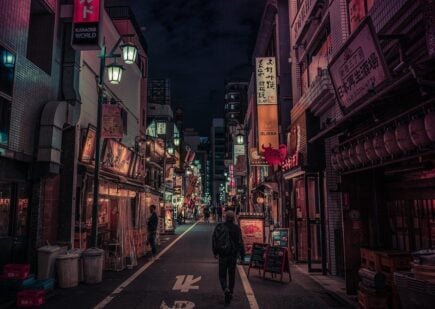
Centrally located and with a little bit of everything, Shinjuku offers the best overall experience making it one of the best places to stay in Tokyo for first-time travelers.
- Shop till you drop at places like Odakyu, Lumine, Beams Japan, and Takashimaya Times Square.
- Go bar hopping in Kabukicho.
- Soak up the views from the 45th-floor observation deck of the Tokyo Metropolitan Government Building.
Tokyo has an endless array of fun activities, scenic getaways, and magical spaces to offer. Here are some of the must-do and must-see things for you to do during your stay, whether you’re staying for a weekend in Tokyo or more than 3 days!
9:00 am – The Miraikan (The National Museum of Emerging Science and Innovation) + teamLab Borderless
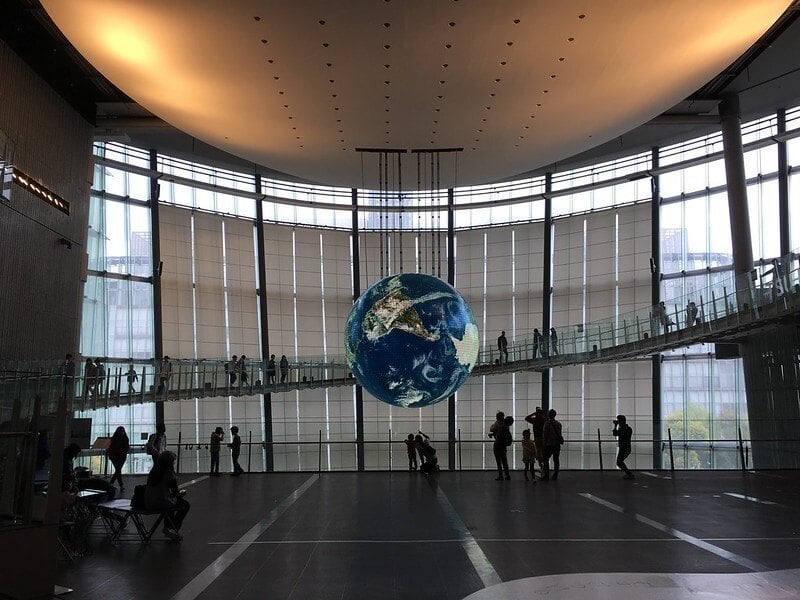
This magnificent museum has 7 floors, so it’s quite huge. Thankfully, each floor is clearly marked, and the stairs are easily located. The first floor offers a ‘symbol zone’ where you can view a high-resolution simulation of the globe, showing the geo-cosmos of how things have changed on the planet over the years.
You can see everything from population peaks to temperature dips and what has happened in-between! There is also a Special Exhibition Zone on the first floor, where some of the most fun and revolutionary displays are featured, such as the Pokémon Lab. If you haven’t fainted yet from absolute awe, then we commend you!
Interactive games and technology are provided on the third floor, all themed around robotics and internet advancements! The educational, yet very fun games make this Museum especially child-friendly.
On the 5th floor, there are themes based on the earth and the universe. Here you can learn about our advancements in understanding and learn about the earth’s natural disasters through high-tech models and displays.
Nearby is also Japan’s first-ever digital art museum: the teamLab Borderless Museum! This cutting edge space pushes against the boundary of traditional museums. Here you are immersed into a whole virtual world of interactive design. Completely stimulate your visual senses throughout the whole experience.
Both of these museums are exceptional, and if you didn’t like technology before them, then you will afterwards.
- Cost – Miraikan: ¥620/¥420 for adults/children. Borderless: ¥3000/¥1000 for adults/children.
- How long should I stay here? A half-day.
- Getting there – The nearest train station is Tokyo Teleport Station. It is served by the Rinkai Line.
Sumo Wrestling Match at Ryogoku Kokugikan
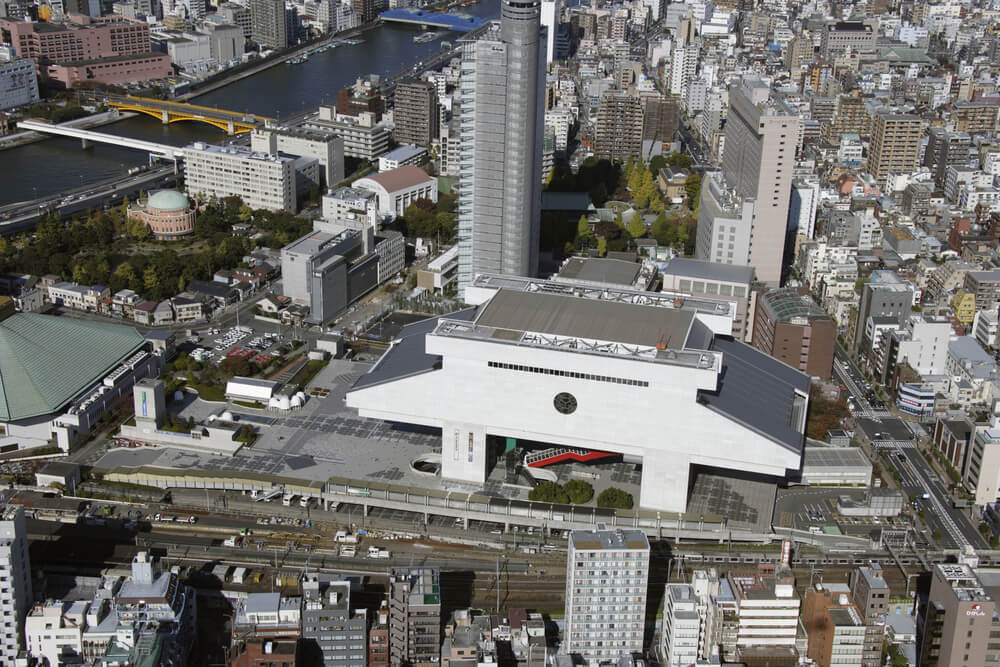
Sumo wrestling is revered as a national sport in Toky and Japan; it is very popular amongst the locals and creates a lot of hype. Ryogoku Kokugikan is the best and most famous indoor sumo wrestling hall in Tokyo and regularly holds large tournaments.
These tournaments go on for 15 days, 3 times a year (January, May, and September). Each wrestler is dressed in colourful attire, with their hair tied up in a traditional style at the top of their head (the ‘topknot’ is actually now very fashionable in the west).
The entire match is more like a cultural performance than an actual fight. It is thrilling to watch and very different from the WWE wrestling we know in the West. Also, there is no shortage of beer or snacks at these events so you can feast like a sumo wrestler yourself! It is a perfect way to spend snowy days in Tokyo.
This sport originated as a show for the Shinto gods. The matches take place on a dohyo , which is a big elevated ring made of clay then covered in sand. Each contest doesn’t last very long and sometimes they’re over in just a few seconds!
- Cost – ¥4000-9000 ($35-80).
- How long should I stay here? Has long as the match goes on.
- Getting there – The Chuo-Sobu Line stops at the station.
Tokyo Disneyland After Hours
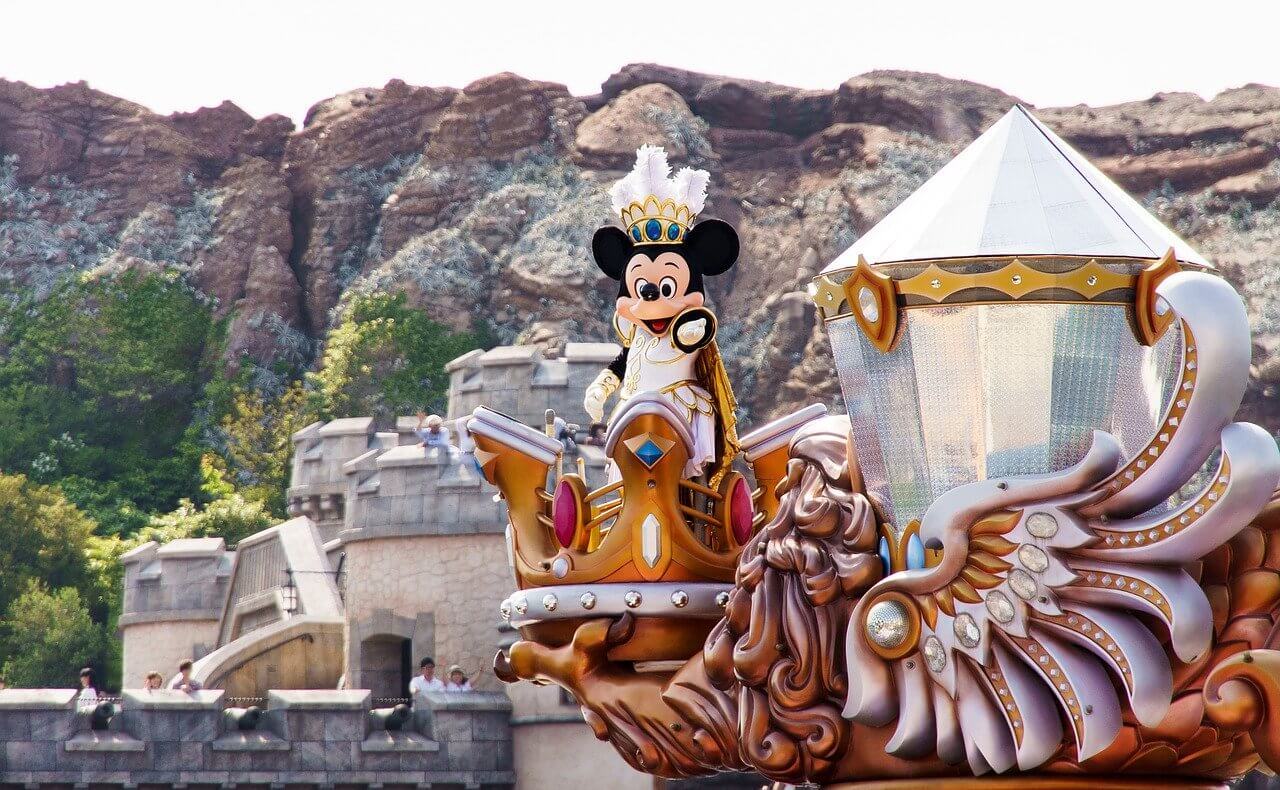
Tokyo is wild about pop culture and all things funky and fun so Disney is massive here. This amusement park opens at 18:00 and offers games, rides & memorabilia – all in the theme of Disney’s most loved films.
Imagine yourself dancing in Cinderella’s Castle all whilst under the clear blue skies of Tokyo! Surprisingly, this magical park isn’t as packed as you might assume, and you shouldn’t find yourself waiting in line for very long.
Choosing to go during the night also makes each ride just that bit more mysterious and adds to the joy! Kiddies rides, such as the Magical Carpet, transform into a true whole new world after hours! The excitement is never-ending and the thrill of this amusement park will be with you long after your trip in Tokyo has come to an end!
- Cost – ¥4200 ($37.50).
- Getting there – Take a hassle-free shuttle to Disneyland.

Stash your cash safely with this money belt. It will keep your valuables safely concealed, no matter where you go.
It looks exactly like a normal belt except for a SECRET interior pocket perfectly designed to hide a wad of cash, a passport photocopy or anything else you may wish to hide. Never get caught with your pants down again! (Unless you want to…)
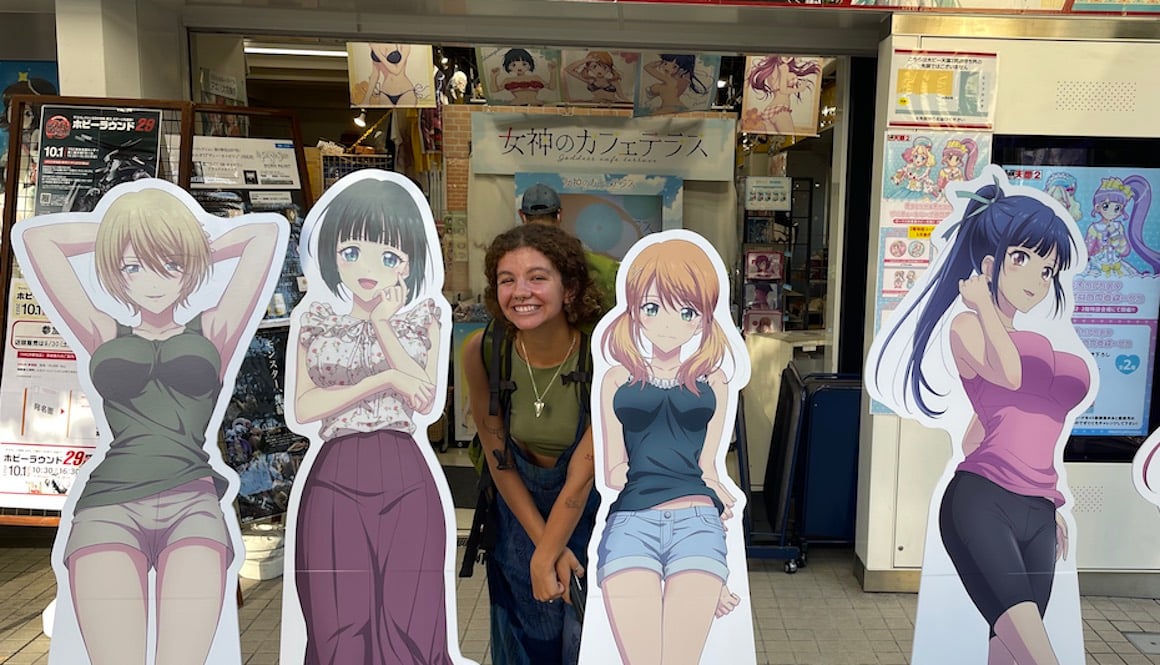
With a typically hot and tropical climate, Tokyo provides some of the most gorgeous clear skies and welcoming temperatures! You have the chance during spring to watch pink Cherry Blossoms blooming, to enjoy beautiful rainfall and sun during the summer, scenic snowfall during Winter, and clear skies with vibrantly coloured leaves during autumn.
All of Tokyo’s seasons are beautiful, but to get the best out of the weather, we suggest you visit during late spring or late autumn when Tokyo is most alive and incredible to see.
Tokyo is famous for having the very best and most high-tech subways in the world, so getting around this iconic city will be a wonderfully unique travelling story. The stations are broken into three major categories, the Metro Station subways, JR station trains , and private railways.
The train stations (as well as pretty much everywhere else in Tokyo) can get overwhelmingly busy, so we suggest that you be prepared for the hustle and bustle. Shinjuku Station in Shibuya is the place to go if you want to see for yourself the 3.6 million travellers that use this transit a day, but if you’re seeking a quieter railway then give a private station a try, like the Seibu Railways.
Note the Tokyo Metro gets busy to the point of comic absurdity during rush hours. If you are claustrophobic, avoid peak times.
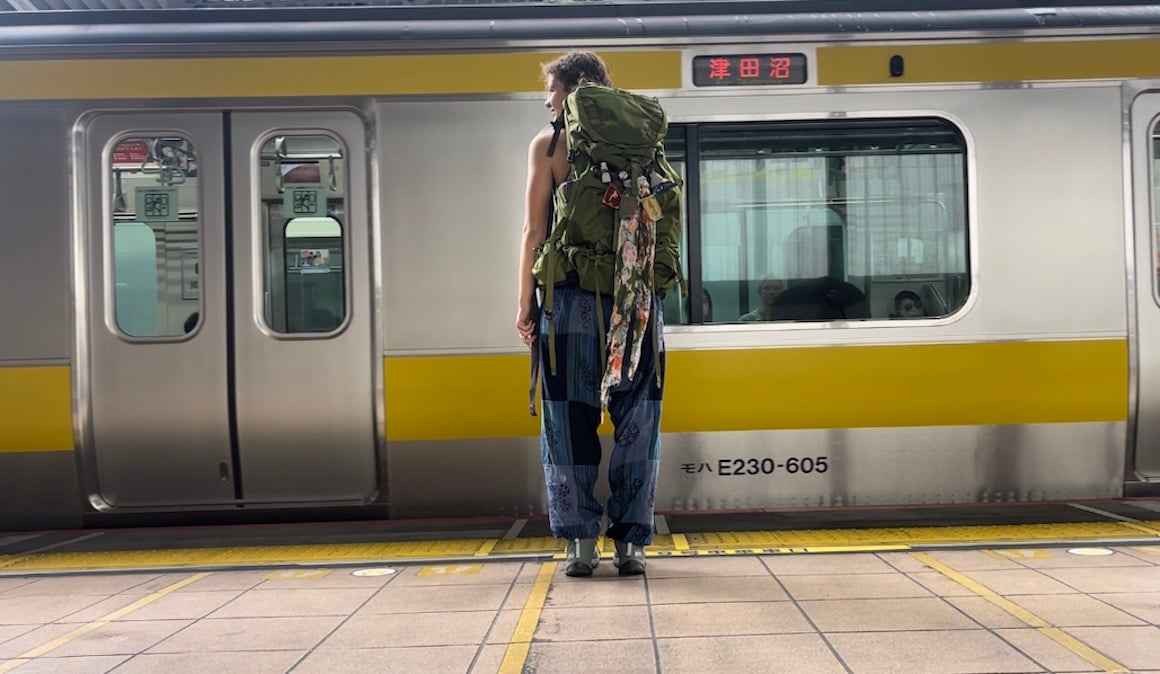
Besides the subways, which are the best and fastest way to get around Tokyo, you will also find taxis. Keep in mind that the taxis are expensive, so if you can walk to the place you’re wanting to go to, then that’s a much better bet unless of course, you’re swimming in cash.
Walking in Tokyo is an exciting and wonderful way to get around, provided you aren’t going to a place too far from your accommodation spot. You will get to take in the day to day street culture, whilst not missing out on the connecting, “in-between” bits of Tokyo that otherwise go overlooked.
Note that there are two international airports that serve Tokyo: Narita and Haneda . Both are located in completely different parts of the city so take note of where and when you arrive. Narita is the furthest from Tokyo.
As we mentioned before, Tokyo has a pretty diverse climate so you’ll need to pack accordingly. Take warm closes in the winter and lighter clothing in the summer when the city is hot and humid. Refer to our Japanese packing list for lots of advice on what to bring and what to wear while visiting.
Tokyo is known to be one of the safest metropolis cities that there is and crime is extremely rare. That said, there are certain general safe travel practices to be aware of whenever you leave home. We have also put together some safety tips for Tokyo that will help to keep you extra safe.
Don’t Forget Your Travel Insurance for Tokyo
ALWAYS sort out your backpacker insurance before your trip. There’s plenty to choose from in that department, but a good place to start is Safety Wing .
They offer month-to-month payments, no lock-in contracts, and require absolutely no itineraries: that’s the exact kind of insurance long-term travellers and digital nomads need.

SafetyWing is cheap, easy, and admin-free: just sign up lickety-split so you can get back to it!
Click the button below to learn more about SafetyWing’s setup or read our insider review for the full tasty scoop.
Find out what people want to know when planning their Tokyo itinerary.
How many days do you need for a full Tokyo itinerary?
You could spend weeks in Tokyo and discover something new every day! However, you can cover good ground in 3-5 full days.
What should you include on a 7 day Tokyo itinerary?
Don’t miss out on these top Tokyo highlights: – Ueno Park Gardens – Shinjuku – Tsukiji Fish Market – Meiji Shrine – Senso-Ji Temple
What are the best things to do in Tokyo with kids?
You can’t go wrong with a trip to the Miraikan Science Museum or Disneyland!
What is the best month to visit Tokyo?
September and October offer warm weather and see the smallest tourist crowds. April gets busy, but it’s the best month to see cherry blossoms.
This entertaining and exhilarating city is a massive metropolis! Arriving in Tokyo is something that will leave you awe-inspired, but with our complete travel guide, every day of your trip will be full of adventures.
Tokyo is a pioneer city. Constant growth and change make this city something that drives forward and pushes other places in Japan to do the same. You will return from Tokyo a changed person yourself.
This is sure to be a travelling memory that will be with you forever.
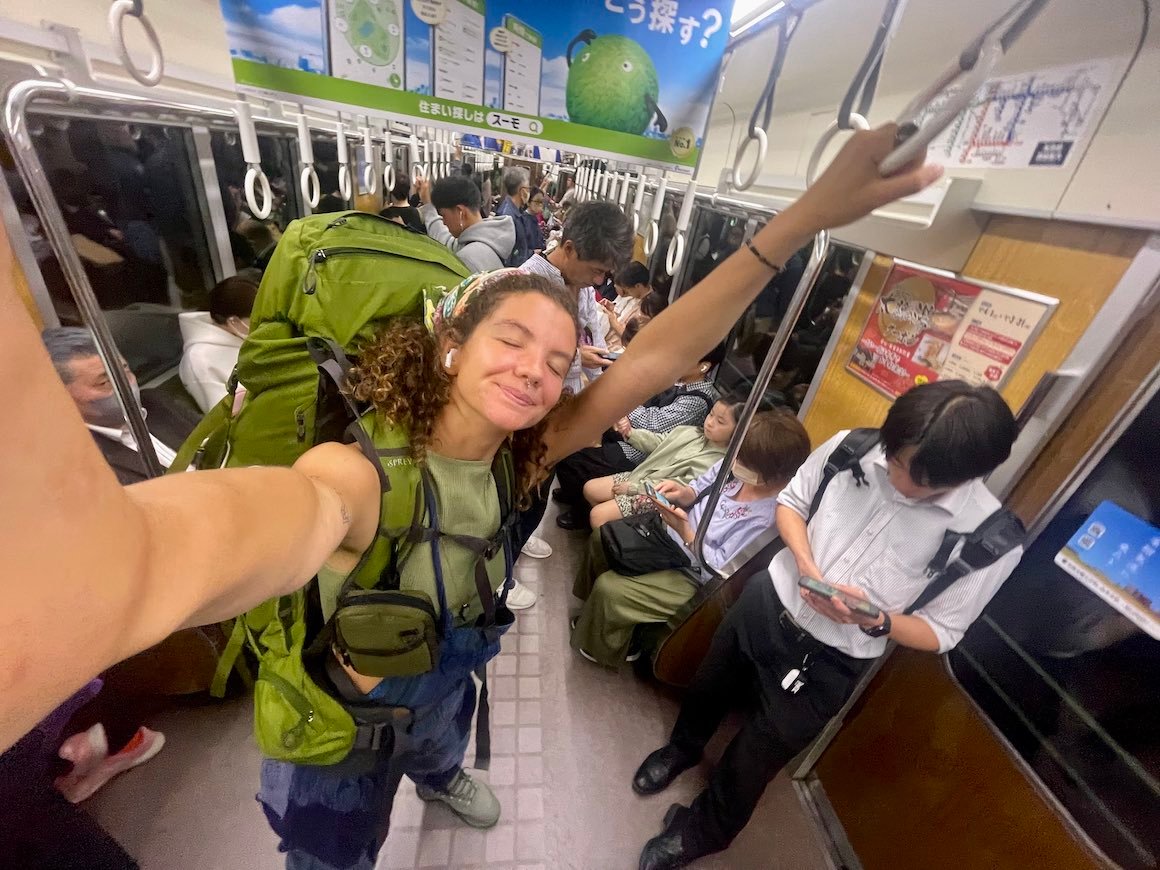
And for transparency’s sake, please know that some of the links in our content are affiliate links . That means that if you book your accommodation, buy your gear, or sort your insurance through our link, we earn a small commission (at no extra cost to you). That said, we only link to the gear we trust and never recommend services we don’t believe are up to scratch. Again, thank you!
Share or save this post

Leave a Reply Cancel reply
Your email address will not be published. Required fields are marked *
Save my name, email, and website in this browser for the next time I comment.
Notify me of followup comments via e-mail.
Suggested walks and itineraries
At least two full days are required to get a taste of Tokyo , and at least a week is needed to get to know Japan's capital city a little bit more intimately.
Suggested full-day schedules
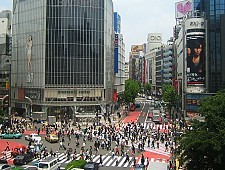
Western Tokyo Full Day
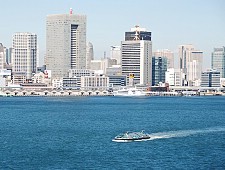
Asakusa and Odaiba Full Day
Suggested half-day schedules.
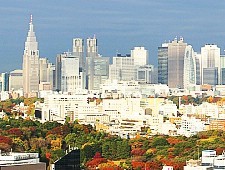
Shinjuku Half Day
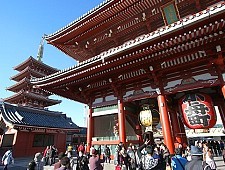
Asakusa Half Day
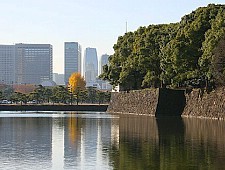
Imperial Palace and Ginza Half Day
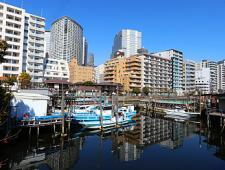
Shinagawa Half Day
Suggested side trips.
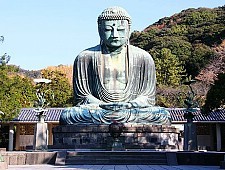
Kusatsu Onsen
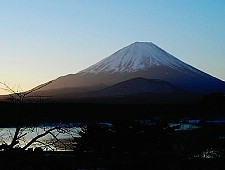
Fuji Five Lakes
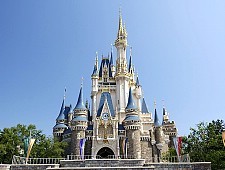
Tokyo Disney Resort
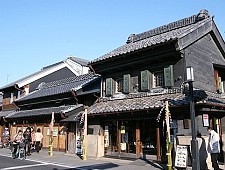
Questions? Ask in our forum .
Hotels around Tokyo
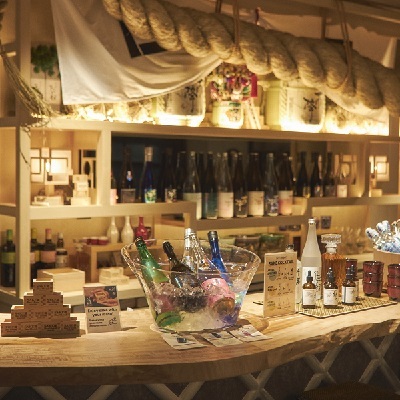
Experiences around Tokyo


- 2 Weeks for Couple
- 2 Weeks for Family
- Thailand Lantern Festival
- Indonesia(Bali)
- South Korea
- China (HK, Taiwan)
- Itinerary Ideas
- Asia Highlights Travel Reviews
- Thailand Travel Reviews
- Vietnam Travel Reviews
- Cambodia Travel Reviews
- Japan Travel Reviews
- Myanmar Travel Reviews
- China Travel Reviews

How to Plan Your First Trip to Tokyo in 2024/2025
Tokyo, the capital of Japan, combines history and modernity perfectly. It is the top destination for travelers to experience as a birthday/graduation gift, annual trip, or bucket list trip, especially for families with teenagers and couples.
Tokyo offers unique experiences suitable for everyone , such as a ninja experience, admiring the iconic Mount Fuji, having fun in anime shops and theme parks, staying at a traditional ryokan, and visiting traditional shrines.
In this article, we'll explain everything you need to know for planning a trip to Tokyo, including how to budget, when you should visit, top things to do, and more.
- 1. Top 5 Things to Do in Tokyo
- 2. How Long to Spend in Tokyo
- 3. How Much Does a Tokyo Trip Cost?
- 4. Best Times to Visit Tokyo
Discover real reviews of Highlights Travel Family 's best-rated service across trusted platforms.
Top 5 Things to Do in Tokyo
Plentiful experiences and charming attractions await you in Tokyo, and we know that it can be hard to choose what you want to do. Below are some of our suggested activities in and around Tokyo, based on our experience of traveling and planning vacations in the city.
1) Visit shrines and temples to experience the traditional side of Tokyo
Except for the modern buildings, Tokyo boasts many representative shrines and temples with a long history that are worth visiting. Century-old Senso-ji and Meiji Shrine are attractions you should not miss. Take a rickshaw ride or walk through Asakusa district to feel the old vibe of Tokyo, where you can explore and pray at the most atmospheric Shinto site in Tokyo — Meiji Shrine, surrounded by towering trees.
2) Immerse yourself in a ninja experience in Tokyo
Ninjas are often depicted in movies and anime around the world. In Tokyo, you have the opportunity to experience a fun-filled activity that is popular with kids and adults. You could suit up in a classic ninja outfit and learn about ninja culture, techniques, and weapons from an instructor, immersing yourself completely in the experience.
3) Soak up the anime atmosphere to fulfill your anime dream
Tokyo is a paradise for anime lovers. It's the perfect place to fulfill your children's interest in anime. A variety of family-friendly anime theme parks, such as the Pokémon Center, Tokyo Disneyland, and J-World, could captivate you with anime characters and fully immerse you in a fun atmosphere. You could also enjoy yourself in all kinds of anime cafés that offer interesting food based on anime characters.
You can just tell us your preferences and requirements and our Japan travel consultant will customize a tour for you.
4) Stay at a Japanese-style ryokan with an onsen in Hakone
Hakone, located about 2 hours from Tokyo, is a popular destination known for its ryokans (old-style inns) with onsens (hot-spring baths) and picturesque scenery. Staying at a traditional Japanese-style ryokan is definitely one of the top things to do near Tokyo. Not only can you relax in a hot spring, but also you can sleep on a tatami and enjoy a high-class kaiseki meal to top off your experience.
5) Appreciate iconic Mount Fuji
Mount Fuji, the symbol of Japan, is best appreciated from Lake Kawaguchi, located about 2 hours away from Tokyo. Various activities allow you to immerse yourself in the breathtaking scenery of Mount Fuji and provide unforgettable experiences, such as light hiking, taking a cable car ride, and biking.
How Long to Spend in Tokyo
Ideally, you should spend at least 2 full days experiencing the best of Tokyo. To discover more of Tokyo and visit popular places around it, such as Hakone and Lake Kawaguchi, you would need an extra day or two. If you have a vacation of 7–10 days, you could explore Kyoto or Osaka too.
3–5 Days in Tokyo
With 3–5 days in Tokyo, you could explore the major highlights, have some authentic experiences, and enjoy an in-depth Tokyo trip.
Day 1: Explore Meiji Shrine and Asakusa to experience the old vibe of Tokyo, take a stroll around the anime center in Akihabara, and dress up like a ninja to experience ninja techniques and weapons.
Day 2: Buy unique anime products exclusively available in Japan at the Pokémon Center, walk through the bustling Shibuya Crossing, enjoy a breathtaking view of the city from the iconic Tokyo Tower, and experience making sushi by hand in a local's home.
Day 3: Head to Hakone to enjoy a picturesque rural view and spend a night at a Japanese-style ryokan with onsen baths. Experience traditional Japanese accommodation by sleeping on a tatami, sampling high-end kaiseki, and relaxing in a hot spring.
If your time permits, we suggest you add one day to go to Kawaguchiko to visit the magnificent Mount Fuji or have fun at Tokyo Disneyland.
7 Days in Japan
One week in Japan is not a long time but it's enough to cover the highlights of two cities. On a 7-day trip, it's perfect to spend 3 days in both Tokyo and Kyoto, the two must-see cities in Japan.
Here is the suggested itinerary, for inspiration:
- Days 1–3: Tokyo (Asakusa, Meiji Shrine, Pokémon Center, ramen-making, and a ninja experience)
- Days 4–6: Kyoto (Fushimi Inari Shrine, geisha, kimono wearing, and a ryokan)
- Day 7: Departure
9–10 Days in Japan
If you have a longer vacation and want to explore the best of Tokyo, Kyoto, and Osaka, then this itinerary is perfect for you. Spending 5 days in the Tokyo area, 3 days in Kyoto, and 1 day in Osaka would allow you to have a richly-varied, highlight-filled trip in Japan.
Here is the hand-picked itinerary, for inspiration:
- Days 1–3: Tokyo (Asakusa, Pokémon Center, a ninja experience, sushi-making, and Tokyo Disneyland)
- Days 4–5: Hakone (stay at a ryokan with onsen)
- Days 6–8: Kyoto (afternoon tea with geisha, trying on a kimono, a tea ceremony, and feeding deer in Nara)
- Day 9: Osaka (Dotonbori district and sampling street food)
How Much Does a Tokyo Trip Cost?
A private tour in Tokyo includes 4-star hotels, a full-day itinerary, tickets for attractions, a private car, and a private guide.
- For a family (3–5 people): a private tour costs approximately $350–500 per person per day
- For a couple: prices start at approximately $450 per person per day
Our Japan expert will customize your trip based on your requirements, and make the most of your money.
Best Times to Visit Tokyo
Tokyo can be visited all year round as each season provides various benefits and charming views.
The best times to visit Tokyo, when the weather is pleasant and the views are attractive, are in spring (March to May) to enjoy the incredible scenery of cherry blossoms and in autumn (September to November) to appreciate the colorful autumn foliage.
Summer (June to August) is hot and humid in Tokyo, with an average daily high of 31°C (88°F). Summer is the festival season in Tokyo, offering an opportunity to enjoy lively festivals and fireworks celebrations. June is a better time for families to spend their summer vacation as it is cooler and less crowded than July and August.
Winter (December to February) in Tokyo is cold and dry with a daily high of about 10°C (50°F). Nothing is better than staying at a traditional Japanese-style ryokan with an onsen to enjoy the snowy scenery in winter. Christmas and New Year are the busiest times to travel to Tokyo. Hotels and flights are easily booked up. Be sure to plan ahead and make reservations at least 3–6 months in advance.
Get Inspired with Some Popular Itineraries
At Asia Highlights, we create your kind of journey — your dates, your destinations, at your pace. You can have any trip tailor made for your travel.
More Travel Ideas and Inspiration
Sign up to our newsletter.
Be the first to receive exciting updates, exclusive promotions, and valuable travel tips from our team of experts.
Why Asia Highlights
Where can we take you today.
- Middle East
- African Safari
- Travel Agents
- Loyalty Program
- Our Differences
- Privacy Policy
Address: Building 6, Chuangyi Business Park, 70 Qilidian Road, Guilin, Guangxi, 541004, China
Tokyo in 7 Days: The Ultimate Itinerary for First-Timers
BY Pelago by Singapore Airlines
11 MAR 24 . 6 MIN READ . GUIDES
Must-Visit Places in Tokyo for First-Timers
Are you planning for the best 7-day Tokyo itinerary for an epic vacation to Japan? If so, you’re in the right place.
In this guide, we’ll discuss the best places to visit in Tokyo in a week and the ideal durations to stay at each location, whether you are travelling solo or with family.
That said, it’s time to explore our recommended 7-day Tokyo itinerary through the list below. Trust us, you’ll have the best time of your life!
Day 1: Explore Shinjuku Day 2: Visit Meiji Shrine, Harajuku & Shibuya Day 3: A Magical Day Out in Tokyo Disneyland Day 4: Visit Ueno, Ameya Yokocho, Asakusa, and Tokyo Skytree Day 5: Day Trip from Tokyo to Mt. Fuji Day 6: Have Fun at DisneySea Day 7: Tokyo To Osaka Road Trip
1. Day 1: Explore Shinjuku
Izakaya food tour in shinjuku, tokyo.
Alright, let’s kick off your Tokyo adventure with a bang on Day 1!
First stop: Shinjuku, the bustling heart of the city. Here’s the game plan: you’re going to dive into the enchanting Shinjuku Gyoen National Garden as your first port of call.
View this post on Instagram A post shared by Raphaël Spezzotto-Simacourbe (@rsimacourbe)
It’s not your average park, mind you. This place is like a natural oasis right in the middle of Tokyo, something of a rarity.
Picture this: Japanese, English, and French gardens, all beautifully manicured and surrounded by a whopping 20,000 trees. Talk about escaping the hustle and bustle of it all.
Now, for to spend the afternoon, swing by the Tokyo Metropolitan Government Building for some killer city views.
View this post on Instagram A post shared by Tiffany (@tiphnie)
If you’re lucky and the weather’s on your side, you might just catch a glimpse of the majestic Mount Fuji. And hey, why not pop over to the Hanazono Shrine while you’re at it too.
View this post on Instagram A post shared by Lisa (@lisainjapan)
You can jot down your deepest desires on a wooden board there. Who knows, maybe the universe will grant your wishes.
And since you’re in Shinjuku, how about some dinner with a view? Head over to Kabukicho, the neon-lit district of Tokyo, and find an izakaya .
View this post on Instagram A post shared by ᴅɪxᴏɴ ᴋᴡᴀɴ / ᴋᴋʟ (@dixonkwan)
Picture this: you’re chowing down on delicious Japanese food while gazing out at the mesmerising sea of neon lights. That would make a perfect start to your Tokyo trip.
3. Day 3: A Magical Day Out in Tokyo Disneyland
Get ready for the Disney magic, folks, because Day 3 is all about Tokyo Disneyland – a must-visit for any Japan newbie!
View this post on Instagram A post shared by 책육아하는 유주엄마 ⸝⸝ (@yoonemy_)
This place is an absolute gem, and no Tokyo itinerary is worth its salt without a stop here.
So, for your third day in Tokyo, explore seven different themed lands, meet up with your favourite Disney characters, try as many rides as possible, watch multiple shows, and click tons of pictures for a memorable day out at Disneyland.
Opening Hours: Open daily, 8am to 10pm
Tip: Book the tickets in advance to skip queues and dive straight into the magic!
4. Day 4: Visit Ueno, Ameya Yokocho, Asakusa, and Tokyo Skytree
Tokyo skytree observation deck.
Day 4 in Tokyo is a splendid mix of tradition and scenic beauty. Your first stop is Ueno Park, a slice of pure natural beauty.
If you’re lucky enough to be here in spring, you’ll be treated to a jaw-dropping display of cherry blossoms . It’s like stepping into a dream!
View this post on Instagram A post shared by xinxinmei (@jxinxinmei)
Next up, go off to the Kiyomizu Kannon-do Temple – an ancient gem dating all the way back to 1631.
This place is not just a temple; it’s a masterpiece in itself. And guess what? It’s one of Tokyo’s oldest temples, so you’re basically stepping back in time.
Now, prepare those taste buds because it’s time to dive into Ameya Yokocho – a treasure trove of local goodies. You name it, they’ve got it, from snazzy clothes to cosmetics and the most delectable ramen and ice creams. Don’t forget to snag some fresh produce, spices, and all sorts of mouthwatering dried foods while you’re at it.
View this post on Instagram A post shared by ライアン 存在 (@ryanexists)
In the afternoon, hit up Asakusa, the mecca of traditional Tokyo.
Here, you’ll get a real taste of old-school Tokyo vibes: Sensoji Temple, Asakusa Denboin-Dori, Nakamise Shopping Street, Shin-Nakamise Shopping Street, and the Asakusa Culture Tourist Information Center.
View this post on Instagram A post shared by (ヤナ)yanasnap Tokyo 📸 (@yanasnap)
Each one of these places is like a time machine, taking you on a journey to Tokyo’s rich past.
Now, here’s the cherry on top of the day: a visit to the Tokyo Skytree for a sunset that’ll steal your heart. The Tembo Deck and Tembo Galleria are the stars of the show here. Get ready to be dazzled by the views as day turns into night.
View this post on Instagram A post shared by Michelle Coral (@shelski98)
5. Day 5: Day Trip from Tokyo to Mt. Fuji
Mount fuji and hakone day tour from tokyo.
Day 5 is perfect if you’re a nature lover. By now, you’ve already familiarised yourself with the city, so it’s time to take a trip out of it. Next, a day tour of the legendary Mount Fuji!
This towering icon is Japan’s pride and joy, and trust us, its scenic beauty is next level.
View this post on Instagram A post shared by Dash Living Japan (@dashliving.jp)
But first, head up and bliss out to hot springs 2,300 meters above sea level in Hakone.
Other pit stops you won’t want to miss include Lake Kawaguchiko and Oshino Hakkai, both part of the Fuji Five Lake (富士五湖, Fujigoko) region.
View this post on Instagram A post shared by k i k i \富士山への愛が止まらない/ (@kiki_fujisan)
And for all you thrill-seekers, the Komagatake Ropeway is a must-go. It’s your golden ticket to capturing Mount Fuji’s magnificence from above in Hakone National Park.
6. Day 6: Have Fun at DisneySea
Tokyo disneysea tickets 1-day pass.
Day 6 is for you to fulfil your childhood dreams at Tokyo DisneySea ! This place is pure magic, especially if you’ve got kiddos in tow, but trust us, the fun isn’t just for them, obviously.
We’re talking thrilling roller coasters and a whole buffet of rides that cater to every taste.
View this post on Instagram A post shared by 赵征洋 (@_inflatablez_)
Now, let’s talk about the themed areas. You’ve got the Mediterranean Harbor, the Mysterious Island, Mermaid Lagoon, Arabian Coast, Lost River Delta, Port Discovery, and the American Waterfront. Each one is like stepping into a different world, and trust us, you won’t want to leave.
And here’s where it gets even better – spectacular shows that’ll leave you in awe, unique attractions that’ll make you scream with delight, shopping that’ll drain your wallet (in a good way!), and dining options that’ll satisfy your taste buds like nothing else.
Address: Tokyo DisneySea, 1-13 Maihama, Urayasu, Chiba 279-8511, Japan ( Map )
Opening Hours: Open daily, 9am to 10pm
7. Day 7: Tokyo To Osaka Road Trip
Umeda sky building & kuchu teien observatory ticket in osaka.
Get ready, road trippers, because Day 7 and the final leg of your Tokyo trip is all about hitting the highway. One great idea is to take a day trip from Tokyo to Osaka.
First stop the Osaka Castle. This place is like a historical time capsule, and the architecture alone is jaw-dropping. We’re talking about a real-life castle, folks!

Next on the hit list is Shin-Sekai – a neighbourhood that’s a blast from the past. It’s a fascinating blend of old-school vibes and modern coolness.
And then, prepare to have your mind blown by the Umeda Sky Building . This skyscraper is not just any skyscraper; it’s like something out of a sci-fi movie. The views from the top are out of this world!
View this post on Instagram A post shared by KOSUKE (@kosuke_pht)
View this post on Instagram A post shared by 김효천 (@hyo1000e)
Get ready to savour kushikatsu (those fried skewers are to die for), and trust us; you can’t leave without trying takoyaki (octopus fritters). Wash it all down with some ice-cold draught beer or rice wine, and you’re good to go.
Tip: Don’t forget to try Okonomiyaki, the street food dish Osaka is known for. You can easily find it at Mizuno — a 60-year-old, family-operated gem that stands out from the rest with timeless flavours and uniqueness.
Other Cool Activity Recommendations for an Epic Tokyo Trip:
8. unleash your inner ninja and samura, musashi clan elite ninja and samurai experience.
Unleash your inner ninja in Tokyo! Don an authentic ninja-gi outfit and dive into your ninja training. Master ancient skills such as meditation, Kuja-Kiri, and Embu.
Discover ninja weapons like blowguns and shurikens. Learn five techniques, including stealth steps and bokken sword skills. Lastly, wrap it up with a ninja photoshoot to strike your best pose.
9. Stuff Yourself Silly at Tsujiki Outer Market
Tokyo foodrink tour: tsukiji market and asakusa.
Experience Tokyo’s dynamic food scene on an exciting food and drink tour! Start by exploring the bustling Tsukiji Market, where fresh produce and seafood come to life.
Then, take a guided walk through the historic Asakusa area, immersing yourself in Japanese culture. Your knowledgeable guide will share fascinating insights about local traditions and customs.
10. Experience Tokyo Skytree's Observation Deck & Tembo Galleria
Tokyo skytree observation deck and tembo galleria combo.
The iconic Tokyo Skytree stands tall as Japan’s highest structure. Don’t miss its breathtaking Observation Deck that grants stunning city views.
Explore the lower deck at 350 meters, with wide windows, eateries, and shops. Head onto the Tembo Galleria, a spiral glass-and-steel ramp offering unparalleled 450-metre-high views.
11. Expert-led Sake Tasting With a Shinjuku Sommelier
Sake tasting with a sommelier in shinjuku, tokyo.
Indulge in a 2-hour sake-tasting session with a certified sake sommelier in Shinjuku’s Nishi Ogikubo. You’ll learn brewing techniques, its history, and its many varieties.
Taste six premium brands, create a personalised tasting chart, and pair your sake with local snacks, at one of Tokyo’s best sake tasting experiences .
12. Gain New Insights Through at teamLab Planets Tokyo
Japan teamlab planets tokyo tickets (direct entry).
At teamLab Planets Tokyo , feel the art with your whole body through the “Body Immersive” experience. Explore the exhibition areas of the museum with creative artworks, wade through water installations, and get mesmerised by the visual extravaganza around you.
Commonly Asked Questions
How much does it cost to eat in tokyo.
The cost of eating in Tokyo depends on the restaurant, the location, and eating preferences. Local eateries or street food stalls can cost around ¥500 to ¥1,500 (approximately $5 to $15), while fine dining places charge upwards of ¥10,000 (approximately $100) or more per person.
Where can I find a variety of street food all in one place in Tokyo?
In Tokyo, one of the best places to experience a variety of street food all in one place is at Ameya-Yokocho Market. You’ll find street stalls that sell everything from takoyaki and okonomiyaki to yakisoba and korokke .
Is travelling in Tokyo safe at night?
Tokyo is generally considered a safe city to travel at night. However, avoid showing off expensive items like jewellery or electronics.
What are the cultural etiquettes one should follow?
Remove your shoes when entering someone’s home or certain traditional places. When dining, it’s polite to say “ itadakimasu ” before eating and “ gochisousama deshita ” after finishing. Also, avoid talking loudly on public transportation and avoid eating while walking.
What’s the best time to visit Tokyo?
The best time to visit Tokyo depends on what you want to experience, as each season has its charm and uniqueness. Consider your preferences for weather, festivals, and activities when planning your trip.
You might also like
15 best places to hike in singapore to escape the city.
28 APR 24 . 4 MIN READ . GUIDES
9 Best Halal Cafes in Singapore You Must Try At Least Once
How you can navigate bangkok's bts skytrain like a pro, ultimate guide to solo travel in bali for female adventurers.
- Media & Industry
- Meetings & Events
- Select Language 简体中文 繁體中文(香港) 繁體中文(臺灣) India (English) Bahasa Indonesia 한국어 ภาษาไทย Tiếng Việt Singapore (English) Philippines (English) Malaysia (English) Australia/New Zealand (English) Français Deutsch Italiano Español United Kingdom (English) Nordic countries(English) Canada (English) Canada (Français) United States (English) Mexico (español) Português العربية Japan(日本語) Global (English)
- India (English)
- Bahasa Indonesia
- Singapore (English)
- Philippines (English)
- Malaysia (English)
- Australia/New Zealand (English)
- United Kingdom (English)
- Nordic countries(English)
- Canada (English)
- Canada (Français)
- United States (English)
- Mexico (español)
- Global (English)
- Fujiyoshida
- Shimonoseki
- Ishigaki Island
- Miyako Island
- Kerama Island
- Tokyo Island
- Koka & Shigaraki
- Hida Takayama
- Ginza, Nihonbashi
- Beppu & Yufuin (Onsen)
- Ginzan Onsen
- Nagasaki Islands

- Kumano Kodo
- Shikoku Karst
- Amami Oshima
- Hachimantai
- Omihachiman
- Aizuwakamatsu

- Diving in Japan
- Skiing in Japan
- Seasonal Flowers in Japan
- Sustainable Outdoors
- Off the Beaten Track in Japan
- Scenic Spots
- World Heritage
- Home Stays & Farm Stays

- Japanese Gardens
- Japanese Crafts
- Temple Stays
- Heritage Stays
- Festivals and Events
- Theater in Japan
- Japanese Tea Ceremony
- Cultural Experiences in Japan
- Culture in Japan

- Local Cuisine Eastern Japan
- Local Cuisine Western Japan
- Local Street Food
- Japan's Local Ekiben
- Japanese Whisky
- Vegetarian and Vegan Guide
- Sushi in Japan Guide
- Japanese Sake Breweries

- Art Museums
- Architecture
- Performing Arts
- Art Festivals
- Japanese Anime and Comics
- Japanese Ceramics
- Local Crafts

- Scenic Night Views
- Natural Wonders
- Theme Parks
- Samurai & Ninja
- Iconic Architecture

- Wellness Travel in Japan
- Japanese Ryokan Guide
- A Guide to Stargazing in Japan
- Relaxation in Japan
- Forest Bathing (Shinrin-yoku)

- Experiences in Japan
- Enjoy my Japan
- National Parks
- Japan's Local Treasures
- Japan Heritage
- Snow Like No Other
- Wonder Around Japan

- Visa Information
- Getting to Japan
- Airport Access
- COVID-19: Practical Information for Traveling to Japan
- Anime Tourism
- Countryside Stays
- Accessible Tourism
- Hokkaido Great Outdoors
- Scenic World Heritage in Tohoku
- Shikoku’s Nature and Traditions
- Southern Kyushu by Rail

- Traveling by Rail
- How to Travel by Train and Bus
- JR Rail Passes
- Scenic Railways
- Renting a Car
- Sustainable Travel in Japan
- Travel Brochures
- Useful Apps
- Online Reservation Sites
- Eco-friendly Accommodation
- Luxury Accommodations
- Traveling With a Disability
- Hands-free Travel
- How to Book a Certified Tour Guide
- Volunteer Guides
- Tourist Information Center

- Japanese Manners
- Spring in Japan
- Summer in Japan
- Autumn in Japan
- Winter in Japan
- Cherry Blossom Forecast
- Autumn Leaves Forecast

- Japan Visitor Hotline
- Travel Insurance in Japan
- Japan Safe Travel Information
- Accessibility in Japan
- Vegetarian Guide
- Muslim Travelers
- Safety Tips

- JAPAN Monthly Web Magazine
- Arts & Cultures
- Nature & Outdoor
- Festivals & Events
- Insider Blog
- Things to do
- Local Guides
- Food & drink
- Traditional
- Hokuriku Shinetsu

My Favorites
${v.desc | trunc(25)}
Planning a Trip to Japan?
Share your travel photos with us by hashtagging your images with #visitjapanjp
Kanto Tokyo High rise, fast-paced and neon-lit, Tokyo is as futuristic as it is historical
- Destinations
As Japan’s capital and the world’s most populous metropolis, Tokyo offers tradition and innovation, and unlimited opportunities to eat, shop and explore
Tokyo is located on Tokyo Bay in the Kanto region of Honshu, Japan’s largest island. The closest airport airports are Haneda officially known as Tokyo International Airport, and Narita Airport , Japan's largest international airport. Tokyo is known for its fashion and shopping, from the trendy shopping districts of Harajuku and Shibuya , to the luxury flagships of Ginza . Shinjuku is the thriving business district; a mix of gleaming skyscrapers and atmospheric back streets with tiny bars. Asakusa is the heart of Tokyo’s downtown, with ancient temples and traditional stores. Tokyo is a foodie paradise with more Michelin-starred restaurants than any other city in the world, along with hundreds of cheap and delicious ramen shops. Tokyo Weather Tokyo has mild spring weather, followed by hot and humid summers punctuated with typhoons. Autumn in Tokyo is cool and fresh, followed by cold, dry winters. Snow is rare but has been known to fall in the first few months of the year. The one week forecast for Tokyo is an accurate guide to the weather for the coming week.
How to Get There
- Exploring Tokyo's dizzying array of restaurant and dining options, from theme cafes to haute cuisine
- Checking out the latest electronics, games and gadgets at Akihabara, the home of technology and anime culture
- Experiencing vibrant youth culture in Harajuku and Shibuya, the trend capitals of Tokyo
- Visiting Tokyo' s most famous temple, Sensoji, before ferrying down the Sumida River and learning the role the city's waterways played in Edo-era Tokyo
Recommended for You
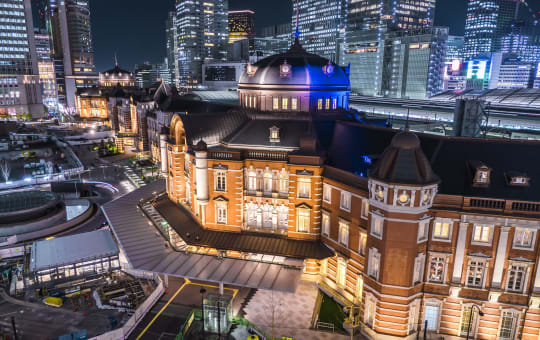
Cherry Blossoms
Forecast of first bloom
24 Mar 2024
Forecast of full bloom
30 Mar 2024
Explore Tokyo by Area

Trending Attractions in Tokyo
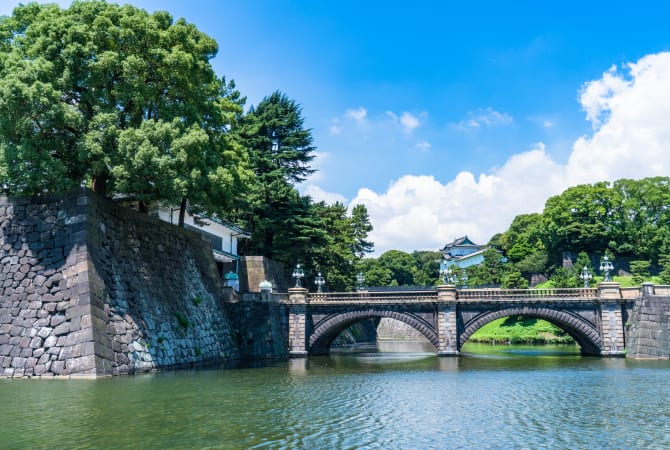
Local Specialties
Tokyo Pattern-Dyed Fabrics
The beauty of Tokyo Komon is in its subtlety. The fabric appears to be a solid color from a distance but up close a delicate pattern is revealed through repeated dots and tiny lines. Once worn by high-ranking samurai, komon is now prized for its beauty and the skills required in its production.

Tokyo Dyed Silk
Elegance and sophistication define the subtle designs of Tokyo Yuzen kimonos, still produced in the city today. This technique of dyeing and hand-painting silk dates back over 300 years, and is unique in that the entire process from design to completion is handled by a solitary artist, allowing for wonderful individuality.
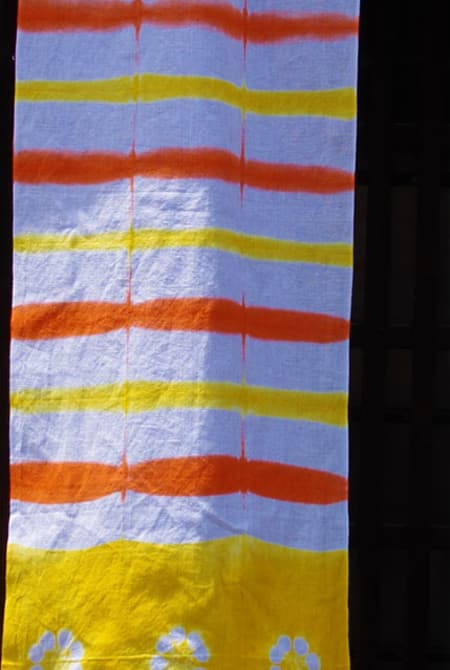
Fukagawa-Meshi
Fukagawa-meshi combines clams, miso and leeks to make a warming, flavorful soup that is poured over a bowl of rice. Clams and leeks are first boiled together to create a rich, briny broth, before miso is then added. The resulting soup and clams are then poured over a bowl of white rice. Fukagawa-meshi is typically eaten with chopsticks so don't be afraid to pick up the bowl and slurp. Outside of the Fukagawa district of Tokyo, this dish can be hard to find.
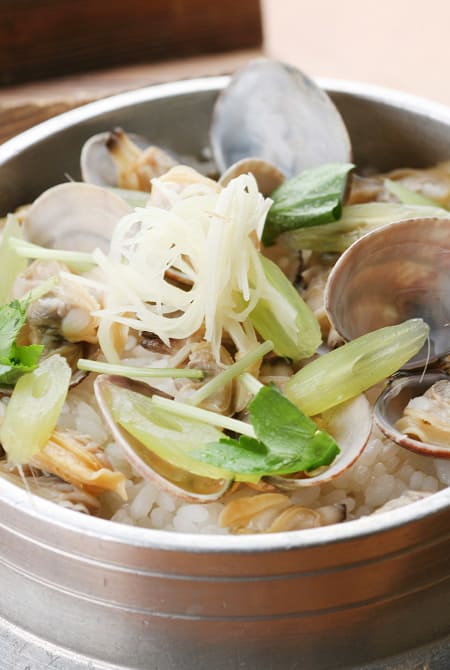
Murayama Oshima Pongee Silk
Prized for making beautiful, natural, lightweight kimonos, Musashi-Murayama Tsumugi is a blend of silk and cotton dyed in a unique process known as itajime, where the threads are bound to a wooden board and splashed with color. The result is a distinctive blurred effect in blues and browns.

Tokyo Shamo
A breed of chicken imported to Japan from Thailand as gamecocks. As a delicacy, Tokyo shamo yield an oil-rich cut of chicken that is perfect for grilling yakitori style.
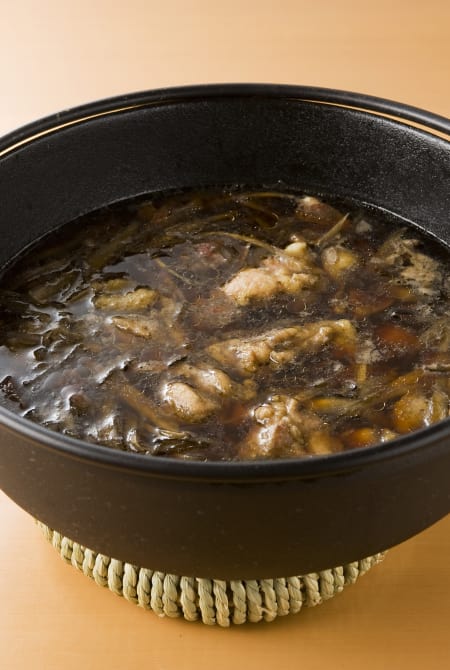
A savory pancake made of finely chopped cabbage, flour, egg and dashi. Other ingredients such as pork, shrimp and octopus are added according to your tastes. Monjayaki has more dashi in its batter than its Kansai cousin, okonomiyaki, giving it a melted cheese texture.
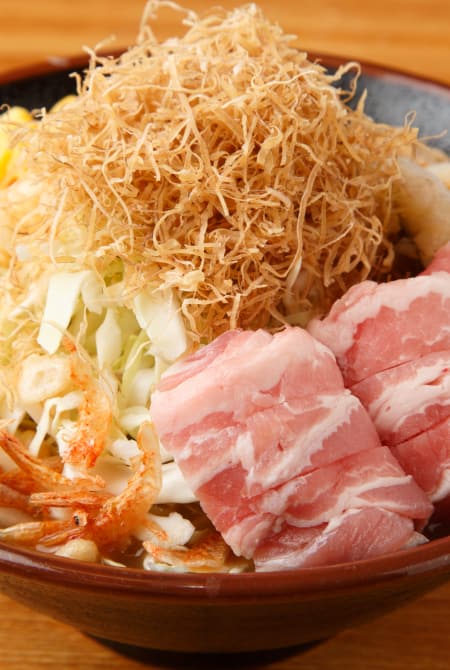
Edomae Sushi
The style of sushi most familiar worldwide. As Edo, which is now Tokyo, became wealthier, sushi became a less formal, faster style of dining. Busy Tokyoites simply sat down at the counter and called out their orders to the nearest itamae—the chefs.
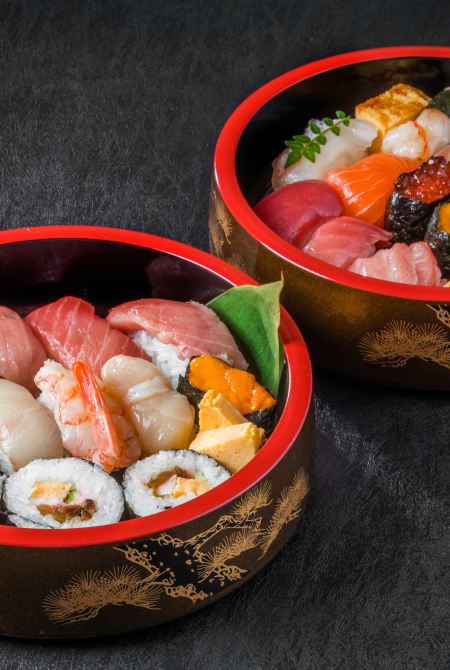
Japanese Swords
Japanese swords are revered for the strength and beauty of their blades as well as the “spirit of the samurai” history they represent. Regarded as works of art more than as weapons, superb examples of these swords can be viewed at the Japanese Sword Museum in Sumida, Tokyo.
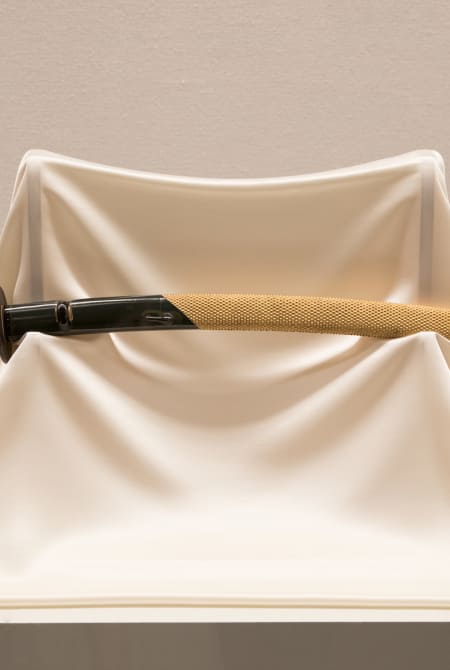
Edo Cut Glass
Originally made in Edo—present-day Tokyo—kiriko is decorated entirely with precision cuts. Exquisite patterns characterize these statement pieces, making this cut glassware a perfect addition to any bar set.
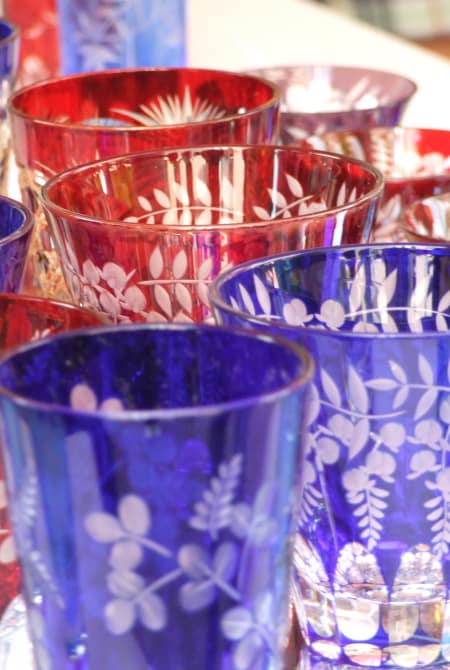
Seasonal Highlights
See the city take on a gentler appearance as the plum blossoms and cherry blossoms flower. Stretch out on a mat, drink sake and eat Japanese dumplings under the blooms at Shinjuku Gyoen, Yoyogi, Ueno or Inokashira parks. Parks have different rules and regulations so make sure to check before visiting.
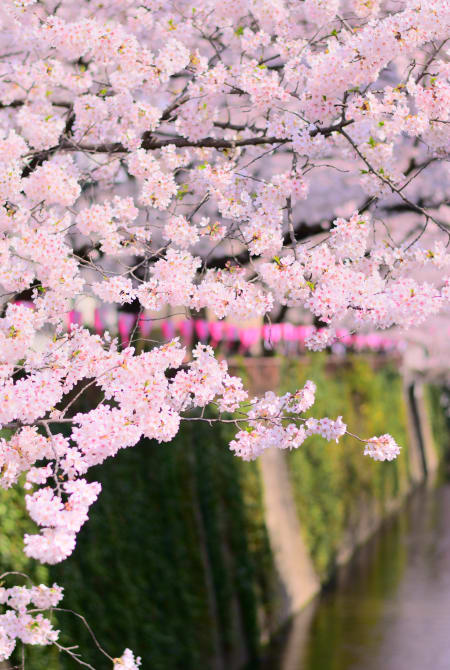
Enjoy one of Japan's largest fireworks displays at the Sumida River. Head for Mt. Takao for its seasonal beer garden and to see some fireflies.
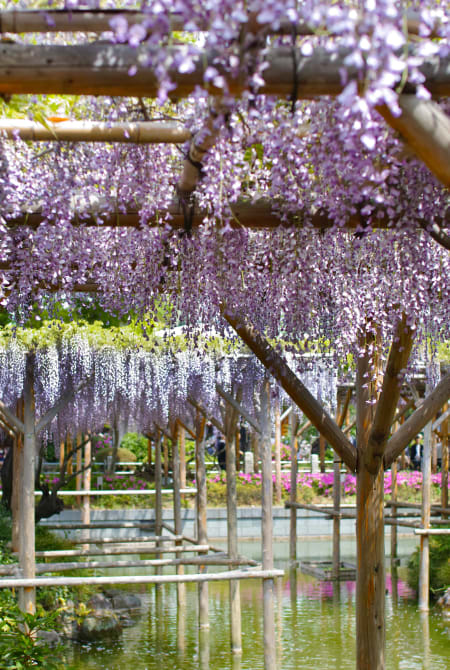
Visit gardens such as Koishikawa Korakuen, or hike the Okutama mountains for fantastic fall foliage. Temperatures cool but the event calendar heats up with the Tokyo Game Show and Tokyo International Film Festival.
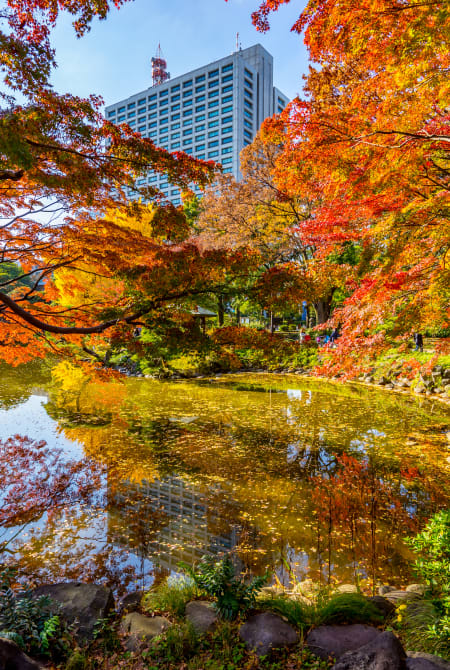
Winter illuminations appear throughout the city, ice-skating rinks open and revelers crowd shrines and temples such as Sensoji Temple and Meiji-jingu Shrine for New Year pilgrimages and festivities.
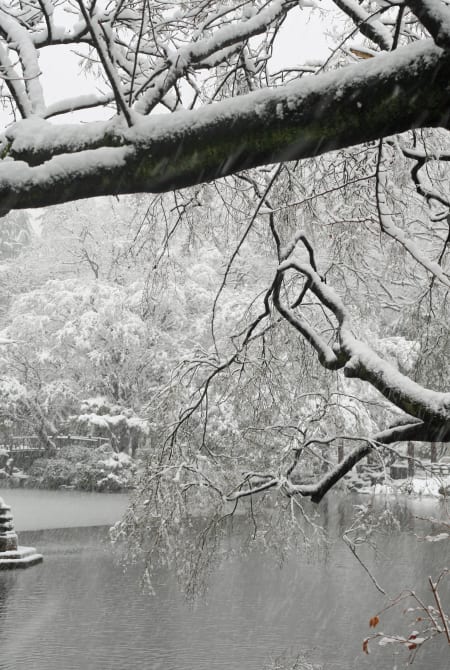
Related Links
Search for accommodation in Tokyo
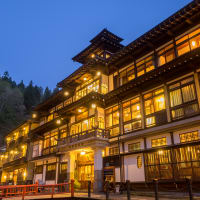
How to get to Haneda Airport

BONDS HOUSE and Sakura Cross Hotel take in those stranded by COVID-19, provide you a place to feel safe for free
Explore Nearby Prefectures
Please Choose Your Language
Browse the JNTO site in one of multiple languages
- Car Rentals
- Airport Transfers
- Attractions & Tours
- Bundle & Save
- Destinations
- Trip.com Rewards
The Ultimate Guide to Planning Your Trip to Tokyo: Cost, Budgeting, and Tips

by Trip.com
March 13, 2024

Sensō-ji / Source: Trip.com
👉 In this article, we will break down the costs associated with a trip to Tokyo, offer tips for budgeting, and provide helpful suggestions to help you make the most of your trip.
Overview of 6-day 5-night Trip to Tokyo Cost
Here's a breakdown of the estimated expenses for a 6-day 5-night trip to Tokyo:

Ueno-Koen / Source: Trip.com
Best time to visit Tokyo 🌸
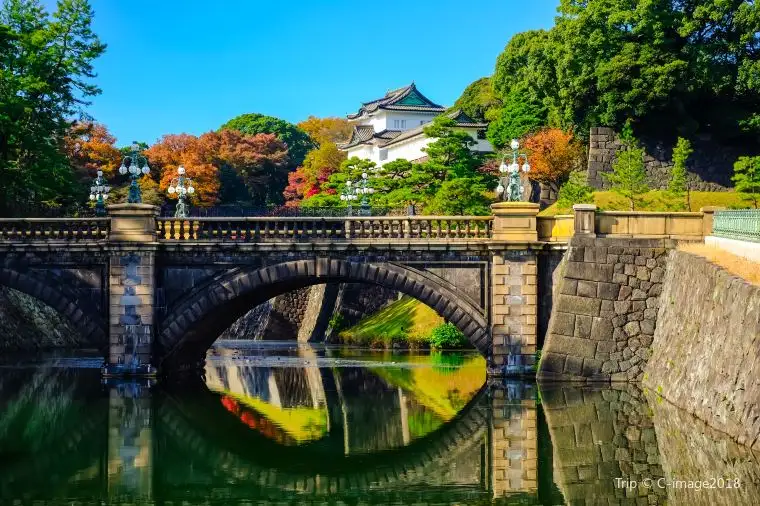
Imperial Palace / Source: Trip.com
- The spring months of March, April, and May are popular with tourists because of the famous cherry blossom season. During this time, the city is covered in pink and white blossoms, and many parks and gardens have special events and festivals to celebrate the season.
- Summer in Tokyo can be hot and humid, with temperatures reaching over 30°C. However, this is also the time when many traditional Japanese festivals, such as the Sumida River Fireworks Festival and the Mitama Matsuri at Yasukuni Shrine, take place.
- Autumn is another popular time to visit Tokyo because of the beautiful autumn foliage. The leaves change colors in the parks and gardens, creating a breathtaking view. The weather during autumn is mild and pleasant, making it a perfect time to explore the city.
- Winter in Tokyo can be chilly, with temperatures sometimes dropping below freezing. However, winter is also the time when the city is decorated with Christmas lights, and many winter festivals take place, such as the Odaiba Rainbow Bridge Illumination and the Tokyo Midtown Winter Illumination.
Accommodation

Conrad Tokyo / Source: Trip.com
Best Hotels in Tokyo
Hotel new otani tokyo garden tower, imperial hotel, tokyo, intercontinental tokyo bay, an ihg hotel, tokyo dome hotel, the prince park tower tokyo - preferred hotels & resorts, lvx collection, business travel, hotel gracery ginza, mitsui garden hotel ginza premier, tokyo prince hotel, quintessa hotel tokyo ginza, super hotel premier tokyo-eki yaesu chuo-guchi, family friendly, mitsui garden hotel ueno - tokyo, henn na hotel tokyo asakusa tawaramachi, rakuten stay tokyo asakusa, daiwa roynet hotel ginza premier, hotel keihan tsukiji ginza grande, top 5 tokyo hotels.
1. Mandarin Oriental, Tokyo
- Address: Nihonbashi Muromachi 2-1-1 Chuo-ku, Tokyo.
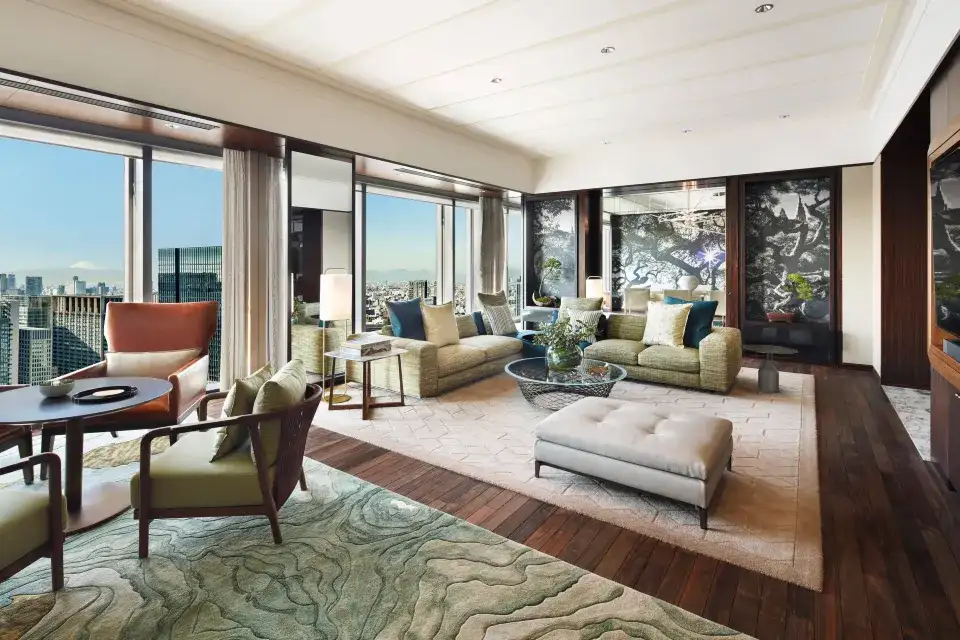
Mandarin Oriental, Tokyo / Source: Trip.com
Mandarin Oriental Tokyo
Airport pickup service
Pets allowed
Check Availability
2. Park Hyatt Tokyo
- Address: 3-7-1-2 Nishi Shinjuku, Shinjuku-ku, Tokyo.

Park Hyatt Tokyo / Source: Trip.com
Park Hyatt Tokyo
Swimming pool
3. Aman Tokyo
- Address: 1-5-6 Otemachi, Chiyoda-ku, Tokyo.
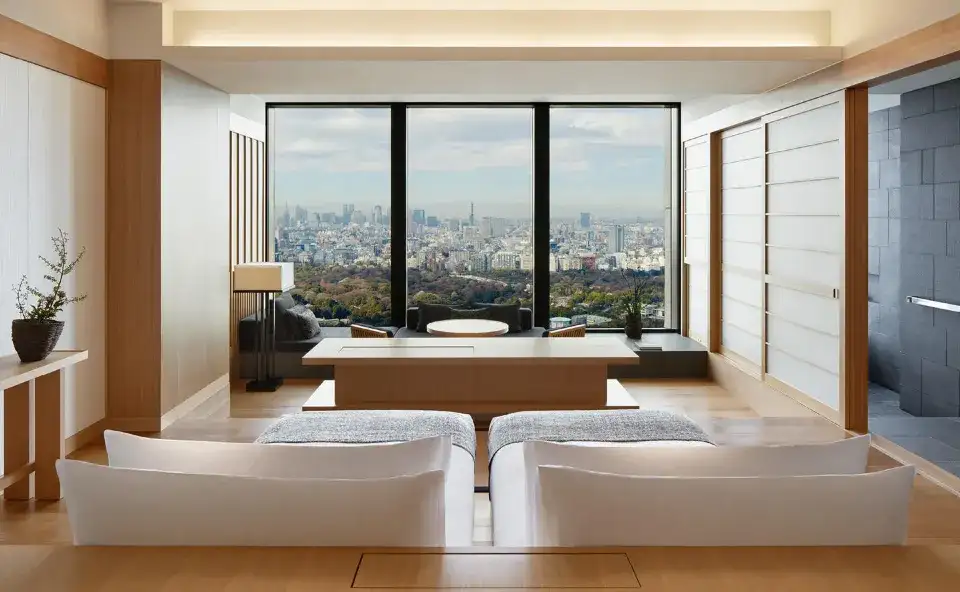
Aman Tokyo / Source: Trip.com
4. The Peninsula Tokyo
- Address: 1-8-1 Yurakucho, Chiyoda-ku, Tokyo.

The Peninsula Tokyo / Source: Trip.com
The Peninsula Tokyo
5. The Ritz-Carlton, Tokyo
- Address: Tokyo Midtown, 9-7-1 Akasaka, Minato-ku, Tokyo.

The Ritz-Carlton, Tokyo / Source: Trip.com
The Ritz-Carlton, Tokyo
👉 Each of these hotels offers a unique experience, from modern luxury to traditional Japanese aesthetics. No matter which one you choose, you are sure to have an unforgettable stay in Tokyo.
Transportation
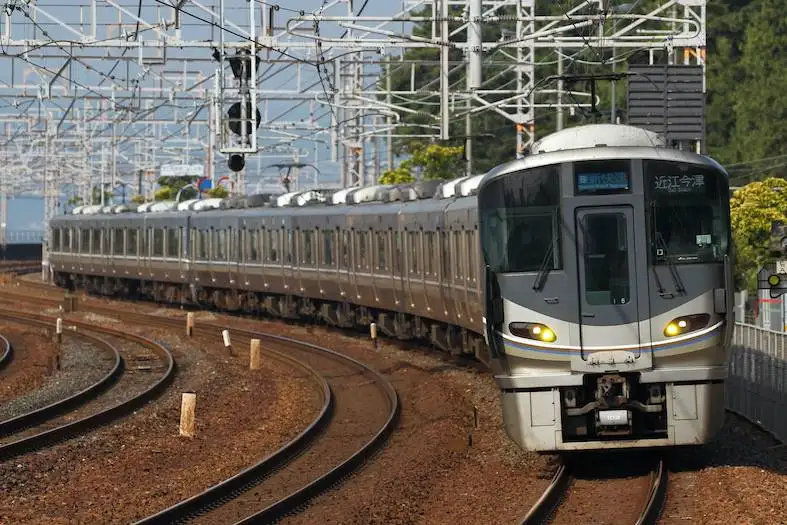
JR West Rail Pass / Source: Trip.com
👉 The cost of transportation in Tokyo varies depending on the mode of transportation you choose and how far you need to travel. Here are some estimated costs for transportation in Tokyo :
- Train/Subway : The Tokyo Metro subway system and Japan Railways (JR) trains are the most popular modes of transportation in Tokyo. The cost of a single ride ranges from 160-320 yen depending on the distance traveled. A day pass for unlimited rides on the Tokyo Metro costs 600 yen, while a day pass for unlimited rides on JR trains and Tokyo Metro costs 1,590 yen.
- Bus : Buses are another option for getting around Tokyo, especially if you're traveling to a destination not accessible by train or subway. The cost of a single ride on a Tokyo city bus is 210 yen, and a day pass for unlimited rides costs 500 yen.
- Taxis : Taxis are convenient but more expensive than other modes of transportation. The initial fare is 410 yen, and the cost per kilometer ranges from 80-90 yen depending on the time of day.
- Bicycle : Renting a bicycle is an affordable way to get around Tokyo, with daily rental rates ranging from 1,000-1,500 yen.
Transportation Tips in Tokyo
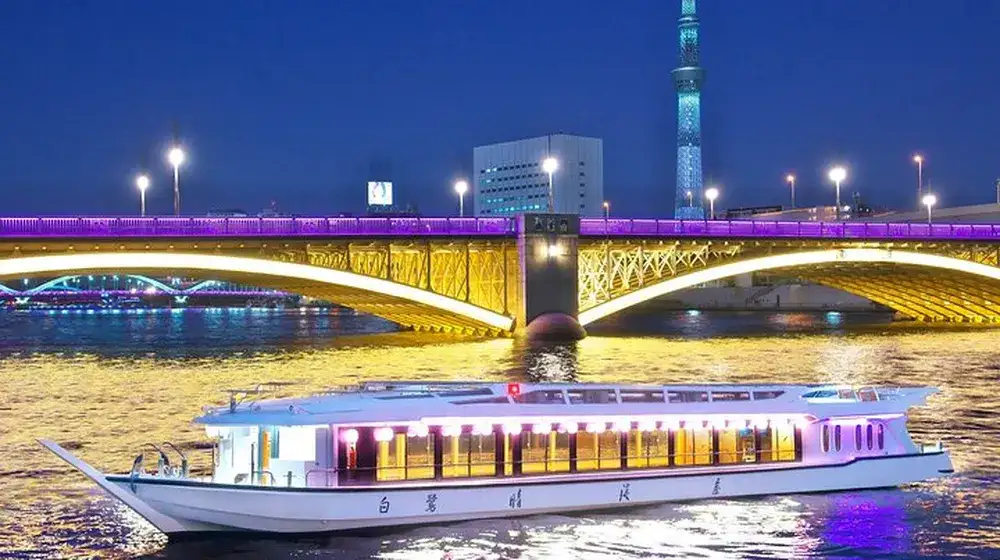
Cruise Around Odaiba, Sumidagawa and Tokyo Tower / Source: Trip.com
- Get a Suica or Pasmo card: These are prepaid smart cards that can be used on trains, subways, buses, and even some taxis in Tokyo. They are a convenient and cost-effective way to get around the city. You can purchase them at vending machines or ticket counters at train stations.
- Take advantage of the subway system: Tokyo's subway system is extensive and efficient, with signs and announcements in English as well as Japanese. The subways can get crowded during rush hour, but they are generally reliable and can get you to most destinations in the city.
- Use Google Maps or other navigation apps: Tokyo's streets can be confusing, but using navigation apps like Google Maps can help you find your way. They can also give you information on train and bus schedules and fares.
- Consider taking a taxi: Taxis can be expensive in Tokyo, but they are a good option if you're in a hurry or traveling with a group. Look for taxis with a red light on the dashboard, which indicates they are available.
Food and Drink
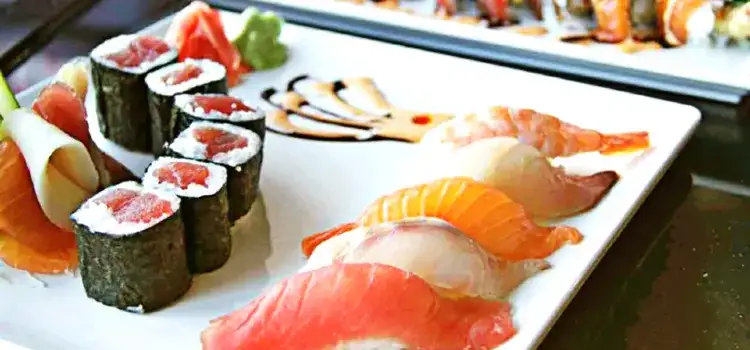
Activities and Entertainment in Tokyo
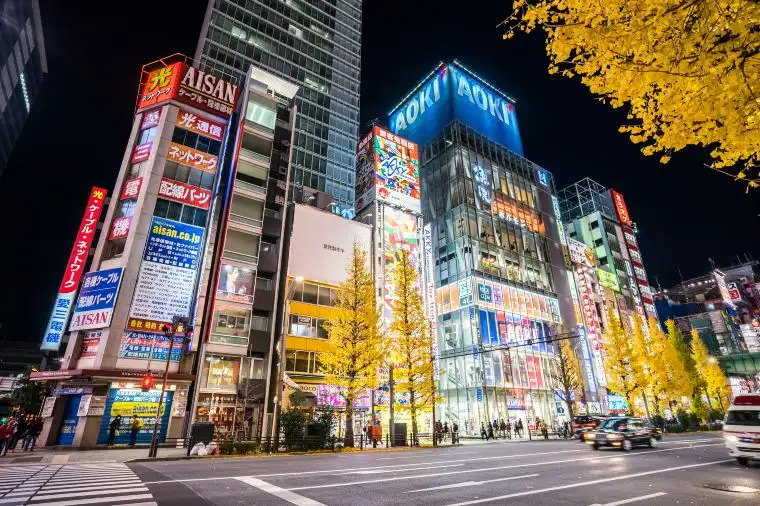
Akihabara / Source: Trip.com
Top 5 Things to do in Tokyo
1. Robot Restaurant
- Address: 1-7-1 Kabukicho, Shinjuku, Tokyo
- Price: 8,000-10,000 yen per person
2. Tokyo Disneyland
- Address: 1-1 Maihama, Urayasu, Chiba
- Price: 7,800 yen per adult, 6,800 yen per child
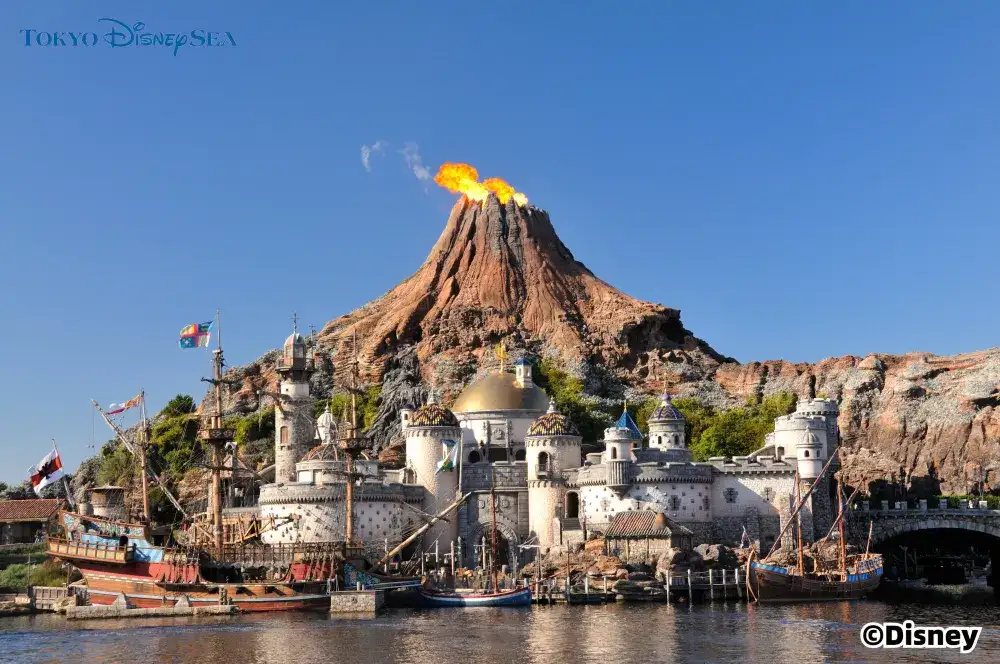
Tokyo DisneySea
3. Tsukiji Fish Market
- Address: 5 Chome-2-1 Tsukiji, Chuo, Tokyo
- Price: Free to enter, prices vary for food and products
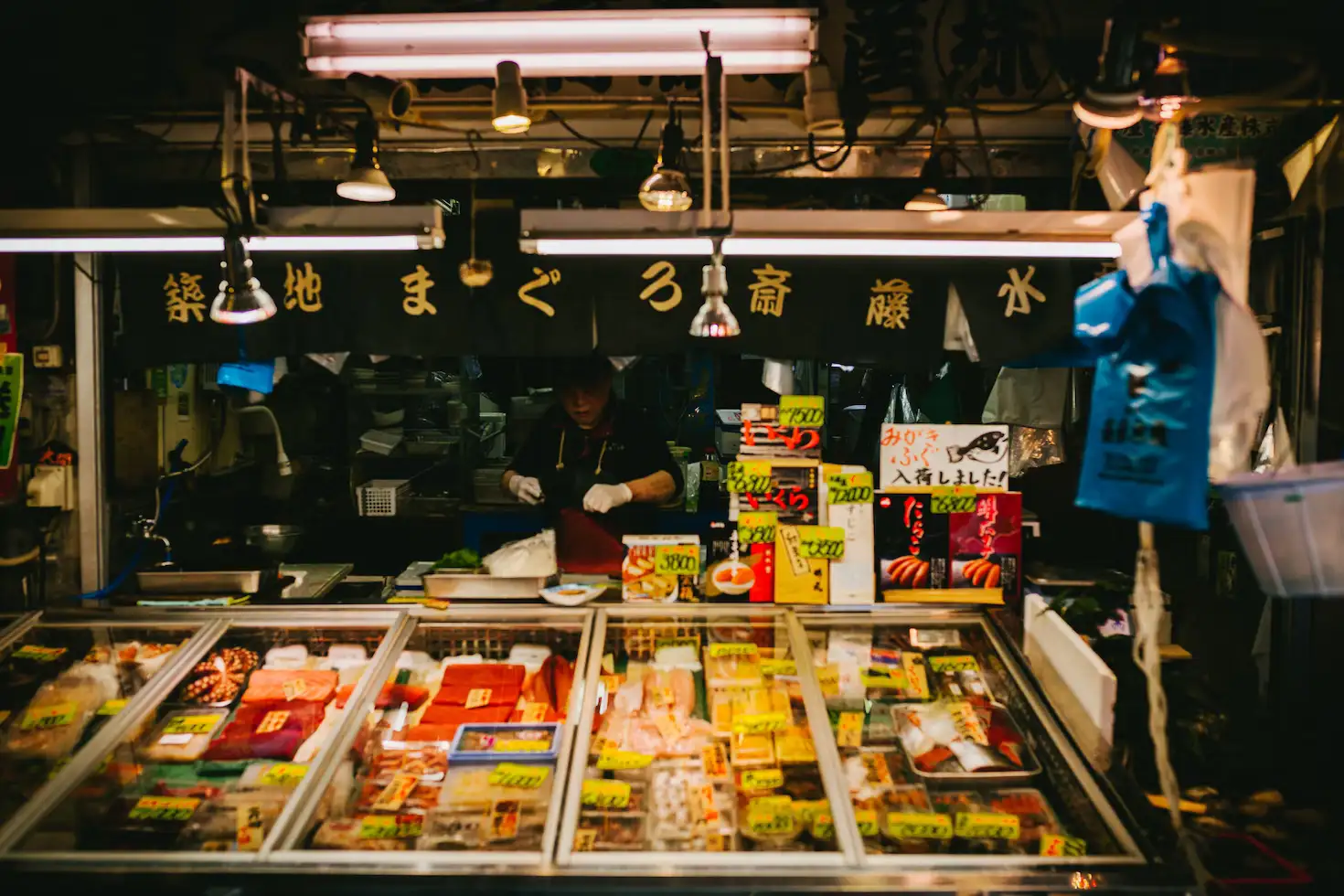
Tsukiji Fish Market / Source: Karsten Gohm@Unsplash
4. Tokyo Skytree
- Address: 1-1-2 Oshiage, Sumida, Tokyo
- Price: 3,000 yen per person for the observation deck
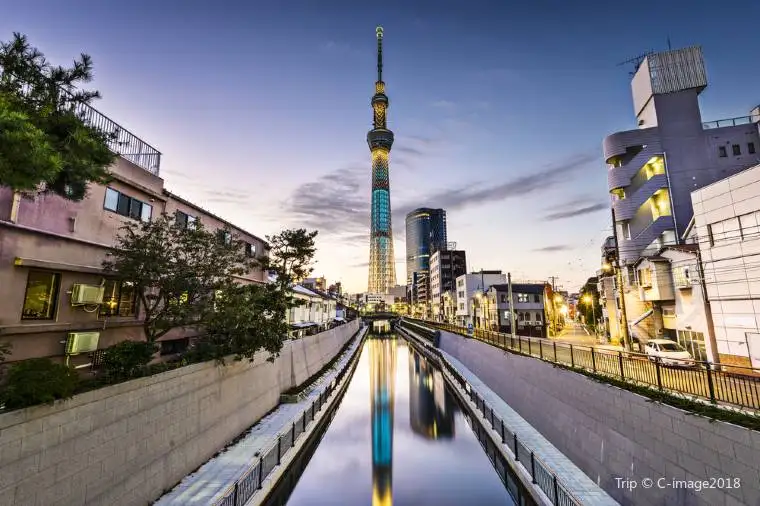
Tokyo Skytree / Source: Trip.com
5. Meiji Shrine
- Address: 1-1 Yoyogikamizonocho, Shibuya, Tokyo
- Price: Free to enter, donations are welcome
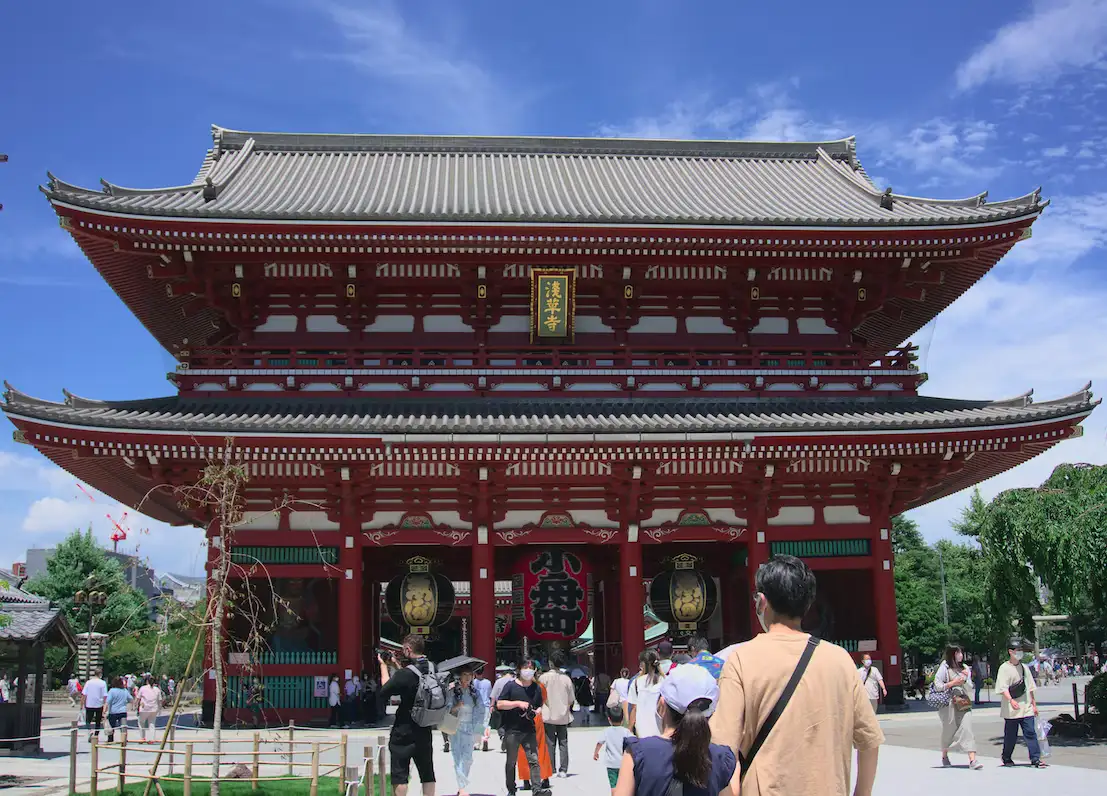
Meiji Shrine / Source: Aniket Hande@Unsplash
👉 Keep in mind that prices and availability may vary depending on the time of year and other factors, so it's always best to check ahead of time and book in advance when possible.
Other Travel Expenses

Roppongi Hills / Source: Trip.com
1. Travel insurance:
2. sim cards or wi-fi rental:, 3. visa fees:.
👉 By considering these additional expenses when planning your trip to Tokyo, you can avoid any unpleasant surprises and enjoy your trip to the fullest.
Top 10 Free Attractions in Tokyo
- Meiji Shrine - Located in Shibuya, this beautiful Shinto shrine is dedicated to Emperor Meiji and Empress Shoken. Visitors can walk through the beautiful forested park surrounding the shrine and participate in traditional rituals such as writing wishes on wooden prayer plaques. (Address: 1-1 Yoyogi Kamizono-cho, Shibuya-ku, Tokyo 151-0052)
- Tsukiji Fish Market - The largest fish market in the world, Tsukiji offers visitors a unique glimpse into the world of Tokyo's seafood trade. While the famous tuna auction has moved to a new location, visitors can still wander the market's bustling stalls and sample fresh seafood. (Address: 5 Chome-2-1 Tsukiji, Chuo City, Tokyo 104-0045)
- Ueno Park - This massive park in central Tokyo offers a variety of free attractions, including several museums, a zoo, and beautiful cherry blossom viewing spots in the spring. (Address: Uenokoen, Taito City, Tokyo 110-0007)
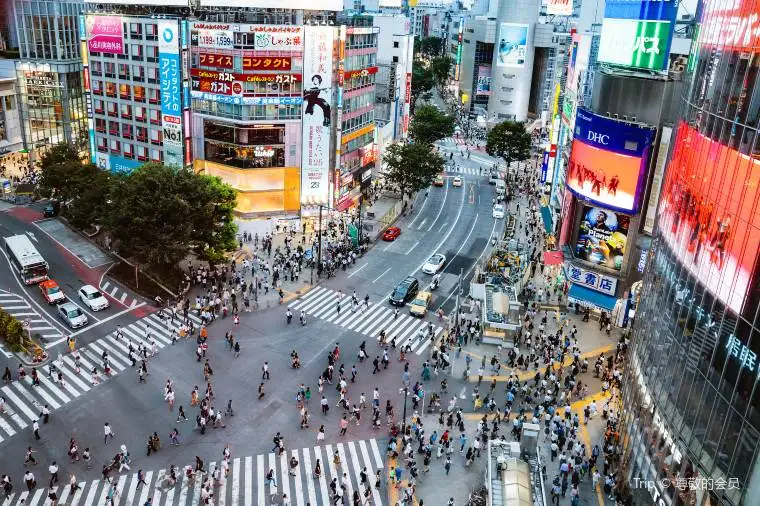
Shibuya City / Source: Trip.com
- Yoyogi Park - Located next to Meiji Shrine, this park is a popular spot for picnics, sports, and people-watching. Visitors can enjoy free performances by musicians and street performers on the weekends. (Address: 2-1 Yoyogikamizonocho, Shibuya City, Tokyo 151-0052)
- Imperial Palace East Garden - Located in the heart of Tokyo, this garden offers visitors a peaceful escape from the hustle and bustle of the city. Visitors can stroll through the beautiful gardens and view the remains of Edo Castle, the former residence of the Tokugawa shoguns. (Address: 1-1 Chiyoda, Chiyoda City, Tokyo 100-0001)
- Takeshi ta Street - This pedestrian-only street in Harajuku is a popular spot for shopping and people-watching. Visitors can enjoy the colorful street fashion and try local snacks such as crepes and cotton candy. (Address: 1 Chome Jingumae, Shibuya City, Tokyo 150-0001)
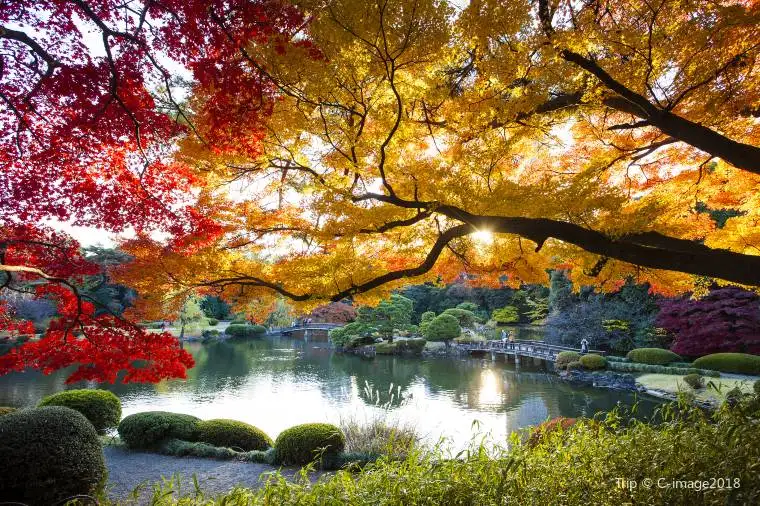
Shinjuku Gyoen National Garden / Source: Trip.com
- Hachiko Statue - This famous statue in Shibuya commemorates the loyal dog Hachiko, who waited at the Shibuya Station for his owner every day for years even after his owner's death. Visitors can take a photo with the beloved statue and learn more about the touching story. (Address: 2 Chome-1 Dogenzaka, Shibuya City, Tokyo 150-0043)
- Kanda Myojin Shrine - This beautiful shrine in the Akihabara district is dedicated to the gods of business and education. Visitors can participate in traditional rituals such as purifying themselves with smoke and writing wishes on wooden prayer plaques. (Address: 2 Chome-16-2 Sotokanda, Chiyoda City, Tokyo 101-0021)

Odaiba / Source: Trip.com
- Tokyo Metropolitan Government Building - This iconic building in Shinjuku offers free observation decks on the 45th floor, providing stunning views of the city. Visitors can also enjoy a free guided tour of the building's architecture and history. (Address: 2 Chome-8-1 Nishishinjuku, Shinjuku City, Tokyo 163-8001)
- Odaiba is a man-made island located in Tokyo Bay and is a popular destination for tourists and locals alike. It offers a wide range of activities and attractions, from shopping to entertainment and even a beach .
Tips for Saving Money in Tokyo
1. Use public transportation
- As mentioned earlier, Tokyo has an extensive public transportation system. Using public transportation is not only cost-effective, but it is also a great way to experience the city like a local.
2. Eat like a local
- Eating like a local is a great way to save money on food costs. Consider trying budget-friendly options, such as ramen, sushi, and convenience store food.
3. Visit free attractions
- Tokyo has several free attractions, such as parks and temples. Visiting these attractions is not only budget-friendly, but it is also a great way to experience the local culture.
4. Shop at thrift stores
- Tokyo has several thrift stores and flea markets that offer unique items at a fraction of the cost of new items.
Useful Tips to Save Money at Trip.com
- Sign up for Trip.com's rewards program to earn points for future discounts and promotions.
- Check for daily deals and flash sales on the website or mobile app.
- Use Trip.com's Price Match Guarantee to ensure you're getting the best deal possible.
- Book flights and hotels together as a package to save money.
- Use promo codes and coupons found online or through Trip.com's newsletter.
- Use Trip.com's free cancellation policy to book early and secure lower prices without worrying about changing plans.

Tokyo Tower / Source: Trip.com
How much does it cost to fly to Tokyo from the United States?
What is the average cost of accommodation in tokyo, how much money should i budget for food and drink in tokyo, are there any free attractions in tokyo, do i need to purchase travel insurance for my trip to tokyo.
Tokyo Travel Cost
- 1. Overview of 6-day 5-night Trip to Tokyo Cost
- 3. Accommodation
- 4. Transportation
- 5. Food and Drink
- 6. Activities and Entertainment in Tokyo
- 7. Other Travel Expenses
- 8. Top 10 Free Attractions in Tokyo
- 9. Tips for Saving Money in Tokyo
- 10. Useful Tips to Save Money at Trip.com
- 11. Conclusion
<h3>Trending Searches</h3>
Popular Content
- Trip to Chile cost
- trip to Rishikesh cost
- costa rica trip cost
- Climate in Vietnam
- Philippines trip cost
- Trip to Greenland cost
- Trip to Ukraine cost
- what to pack for singapore
- weekend getaways in colorado
- Trip to Dominican Republic cost
Popular Attractions
- Things to Do at Disneyland Paris
- disney locations
- tokyo disneyland tickets
- Shanghai Disneyland Tickets
- universal studios japan tickets
- blizzard beach water park
- disney california adventure park
- disney's hollywood studio
- tokyo disneysea
- Hangzhou Hello Kitty Park
- Maijishan Grottoes
- Shanghai Natural History Museum
- Mabul Island
- Sichuanda Theater
Connectivity
- Germany esim
- eSIM Hong Kong
- Israel eSim
- Saudi Arabia esim
- best china travel apps
- eSIM Malaysia
- eSIM Singapore
- china payments app
- China Taxi App
Getting Around
- Haruka Express
- JR pass airport transfer
- narita express
- Eurail Pass Discount
- Customer Support
- Service Guarantee
- More Service Info
- Website Feedback
- About Trip.com
- Terms & Conditions
- Privacy Statement
- About Trip.com Group
Other Services
- Investor Relations
- Affiliate Program
- List My Property
- Become a Supplier

10 Best Budget Hotels In Tokyo (Near JR Yamanote Line!)
T okyo is full of amazing accommodation options, from high-end luxury hotels to budget-friendly hostels/capsule hotels to quaint and homey Airbnb experiences. It’s almost too hard to settle on just one!
If you’re planning a trip to Tokyo on a budget, there’s one major money-saving tip I want to share with you that’ll help you trim down your accommodation choices.
In order to make the most of your time in this bustling city, you’ll want to stay near the JR Yamanote Line . This train line connects many of Tokyo’s most popular neighborhoods and attractions, making it easy to get around quickly and efficiently.
By staying near the Yamanote Line, you’ll save time transporting back and forth, you’ll save money on unnecessary train/bus tickets, and you’ll be able to spend more time exploring all that Tokyo has to offer!
In this post, I’ll share some of the best budget-friendly hotels along the JR Yamanote Line, so you can focus on what matters most — plan your perfect Tokyo travel itinerary !
This post may contain affiliate links. You won’t be paying a cent more, but in the event of a sale, the small affiliate commission I receive will help keep this blog running/pumping out useful and free content. Thanks a lot!
Got a bit more budget to play around with? If so, you might like some of these other hotels along the JR Yamanote line , providing the same level of convenience from the train stations but MORE space and MORE amenities!
Best Budget Hotels In Tokyo Near JR Yamanote Line
Tokyo in a nutshell.
Here’s a quick overview of all the useful info you need to plan an awesome trip!
When To Go : Spring (March to May) for cherry blossoms, Summer (June to August) for festival season, Fall (September to November) for epic fall foliage.
Where To Stay : Choose a hotel along the JR Yamanote Line for the most convenience. We’ll get into all of this in this post!
Nearest Airport : Narita International Airport (NRT) and Haneda Airport (HND). NRT is 60 kilometers (37 miles) east of Tokyo’s city center. HND is 14 kilometers (9 miles) south of Tokyo’s city center.
How to Get Around : Public transportation all the way. Don’t even think about renting a car in Tokyo! If you plan on traveling across Japan, a Japan Rail Pass can save you a lot of money on transportation. The pass allows unlimited travel on Japan Railways (JR) trains, buses, and ferries for a set period of time.
Must-Do’s : Immerse yourself in all the digital art at TeamLab Planets , feel the Disney magic at Tokyo Disneyland or DisneySea , eat a crepe in the Harajuku district , try vending machine ramen and conveyor belt sushi , spend your early jet-lagged hours at Tsukiji Fish Market .
Before You Go :
- Read up on all our tips on how to do Japan on a budget
- Consider getting the Klook Pass Tokyo — you’ll get up to 48% off your tickets to Tokyo’s popular attractions, including Tokyo Disney, teamLab Planets, Legoland, Sanrio Puroland, Shibuya Sky Deck, and more. Choose from 6+ different combinations, and add on activities based on what you like to do!
‘Hello’ and ‘Thank You’ in Japanese :
- Hello: こんにちは (Konnichiwa) or おはようございます (Ohayou gozaimasu) in the morning or こんばんは (Konbanwa) in the evening
- Thank You: ありがとうございます (Arigatou gozaimasu)
Currency : the Japanese yen (¥) – click for current conversion rates
What Is The JR Yamanote Line?
The JR Yamanote Line is a train line in Tokyo that circles around the city’s central districts. It is one of the most convenient and popular train lines for visitors to Tokyo, as it connects many of the city’s top landmarks and attractions.
For first-time visitors to Tokyo, the JR Yamanote Line is a great way to get around the city and explore its many neighborhoods and districts. The line stops at many of Tokyo’s major train stations, including Tokyo Station, Shinjuku Station, Shibuya Station, and Ueno Station, making it easy to transfer to other train lines and explore different parts of the city.
As an example, if you were to stay by Shibuya Station and wanted to go to Shinjuku (a district that you’ll definitely end up in at some point during your trip), it would take approximately 5-10 minutes on the JR Yamanote Line. Easy!
However, if you were to stay along another train line or had to bus to the nearest subway station, you’ll need to transfer to the JR Yamanote Line to get to Shinjuku. This could take considerably longer, depending on the distance between your starting station and the nearest Yamanote Line station.
Plus, that doesn’t even take into consideration the time it takes to get off your first train and transfer to your next train!
To save yourself the logistical headache of having to worry about bus/train transfers, AND to save both money and time, opt to stay at a hotel as close to a JR Yamanote Line train station as possible!
Which Tokyo Neighborhood Should You Stay In?
Before we dive into all the hotels that are along the JR Yamanote Line, you’re going to want to have a good understanding of where in Tokyo you want to base yourself.
Tokyo is a humongous city, and you’re going to find a wide variety of different districts, from bustling neighborhoods with vibrant nightlife to peaceful areas with quiet parks and temples. With so many options, it can be overwhelming to decide what area to stay in during your trip to Tokyo.
In this section, we’ll explore the top four neighborhoods we recommend to first-timers in Tokyo and explain why they’re great areas for you to stay in.
Best for: first-timers, solo travelers, couples, foodies, people who want to be in the center of all the action, shopping and nightlife
Shinjuku is one of the most popular neighborhoods in Tokyo, and for good reason. It’s known for its always-buzzing nightlife, shopping, and entertainment. Shinjuku Station is one of the busiest (and most well-connected) train stations in the world, making it easy to get around the city from here.
Among the dozens and dozens of mega department stores you can enjoy, one of the top attractions in Shinjuku is the Tokyo Metropolitan Government Building , which offers breathtaking views of the city from its observation deck. The area is also home to Shinjuku Gyoen National Garden , a beautiful park with over 20,000 trees and a traditional Japanese garden.
Foodies will love Shinjuku for its many dining options , ranging from Michelin-starred restaurants to street food stalls. The area is also home to Golden Gai , a network of narrow alleys lined with tiny bars and restaurants that offer a unique glimpse into Tokyo’s nightlife .
Shinjuku is a great neighborhood for solo travelers, people who want to be in the center of all the action, and people looking for nightlife. Families may also enjoy the area, but should be mindful of the crowds and noise.
20 Top Things To Do In Shinjuku, Tokyo’s High-Energy District
Best for: first-timers, solo travelers, couples, foodies, nightlife and shopping
Shibuya is another popular neighborhood in Tokyo that’s known for its shopping, dining, and nightlife. It’s home to the famous Shibuya Crossing , one of the busiest intersections in the world.
One of the top attractions in Shibuya is Yoyogi Park , a beautiful green space that’s perfect for picnics and relaxing. The park is also home to Meiji Shrine , a popular Shinto shrine that attracts millions of visitors each year.
Foodies will love Shibuya for its seemingly endless dining opportunities! The area is also home to many trendy cafes and bars.
Shibuya is a great neighborhood for people looking for nightlife and shopping. Similar to Shinjuku, families may also enjoy the area but should be mindful of the crowds.
Pro Tip: If you are set on staying in Shinjuku or Shibuya, be prepared to pay a bit more for accommodation/lodging. It’s one of the most popular areas to stay in!
Best for: shopping and luxury hotels
Ginza is a high-end shopping district in Tokyo that’s known for its luxury boutiques and department stores. It’s also home to many high-end restaurants and cafes. For the most part, you can expect high-end everything here!
The area’s main drag, Ginza Dori , is like Tokyo’s Champs Elysees — their luxury shopping street. Along the street, you’ll find lots of shops, boutiques, restaurants, and cocktail bars conveniently located within the many skyscrapers.
One of the top attractions in Ginza is the Kabuki-za Theatre , which is known for its traditional Japanese kabuki performances. The area is also home to several art galleries and museums, including the Mitsui Memorial Museum and the Tokyo Gallery .
Foodies will love Ginza for its many high-end dining options, including Michelin-starred restaurants.
In fact, there are more Michelin-starred restaurants in Ginza than anywhere else in Tokyo. Ever heard of the popular 2011 documentary Jiro Dreams of Sushi ? One of the most famous restaurants in Tokyo, Sukiyabashi Jiro, holds 3 Michelin stars and is located right in Ginza.
Ginza is a great neighborhood for people looking for high-end shopping and dining experiences. Families may also enjoy the area, but should be mindful of the high prices.
Tokyo Station / Marunouchi Area
Best for: travelers who plan on taking day trips
The Tokyo Station / Marunouchi Area is another great district to stay in. It’s home to one of the busiest train stations in Tokyo. Because most Shinkansen trains leave from this station, staying around here is especially convenient and effortless if you want to take day trips outside of Tokyo.
From Tokyo Station, you can easily travel to any part of the city quickly (likely without the need to transfer to another train or bus). From Tokyo Station, Shibuya is 25 minutes away, Shinjuku is 15 minutes away, and Ueno is just 5 mins away — no transfer required for any of them!
Food lovers will love Tokyo Station for its many restaurants, department store food courts, cafes and dessert shops.
Should you choose to stay around here, some of the top attractions near Tokyo Station is the Imperial Palace , which is the residence of the Emperor of Japan. The area is also home to several museums and galleries, including the Mitsubishi Ichigokan Museum and the National Museum of Modern Art .
You’ll also be pretty close to the neighborhoods of Akihabara (manga, arcades, and electronics haven) and Ginza (luxury shopping).
Having said that, the downside of staying in this area is that you will have to take the train to get to Tokyo’s must-see attractions such as Shinjuku Gyoen National Garden, Yoyogi Park, Shinjuku/Shibuya districts, Harajuku district, etc.
Still, being based around Tokyo station is super convenient, especially if you plan on taking day trips to farther away destinations like Hakone, Yokohama, Tokyo DisneySea / Disneyland Tokyo , or any of the other theme parks near Tokyo .
Best for: families, travelers on a budget, people who like public parks and value quiet neighborhoods
Ueno is a vibrant neighborhood in Tokyo that’s known for its cultural attractions and outdoor spaces. It can be best described as being quieter than other districts, convenient, family-friendly, and budget-friendly!
Ueno is home to Ueno Park , one of the largest parks in Tokyo, which is famous for its cherry blossom trees and museums.
One of the top attractions in Ueno is the Tokyo National Museum , which houses the largest collection of Japanese art in the world. The area is also home to the Ueno Zoo , which is known for its giant pandas.
Foodies will love Ueno for its many street food stalls and traditional Japanese restaurants. The area is also home to Ameya Yokocho , a bustling shopping street that’s perfect for souvenir shopping.
To give you a sense of its location, Ginza is 12 minutes away and Tokyo station is just 8 minutes away. However because it is further east, Shibuya and Shinjuku are 28-30 mins away by train.
All in all, Ueno is a great neighborhood for families and people looking for a more cultural experience in Tokyo. Solo travelers may also enjoy the area for its lively outdoor atmosphere.
Pro Tip: If you’re planning on taking day trips that lie north of Tokyo (Nikko, Nagano, etc), then staying in Ueno can be a great idea. Most Shinkansens heading north typically stop at the Ueno Station.
10 Budget-Friendly Hotels Near Tokyo’s JR Yamanote Line
Landabout tokyo.
6-minute walk from Uguisudani Station on JR Yamanote Line (near Ueno area)
Landabout Tokyo is a great bang-for-your-buck hotel for budget travelers who want a comfortable and convenient place to stay while exploring Tokyo. This hip little hotel offers affordable prices without sacrificing comfort or convenience, making it the perfect choice for travelers on a budget.
Designed for comfort, all guestrooms offer a range of amenities to ensure a restful night. Rooms at the hotel are equipped with linen service, blackout curtains and air conditioning, and some rooms even come with extra design features such as a balcony or terrace.
Packing light is possible at LANDABOUT TOKYO thanks to the hotel’s laundromat keeping your clothes clean.
Another one of the standout features of Landabout Tokyo is its location. The hotel is located on the JR Yamanote line, giving guests easy access to popular neighborhoods like Shibuya, Shinjuku, and Harajuku.
In terms of attractions that are within walking distance, you’ve got the likes of Ueno Park, Ueno Zoo, and Tokyo Metropolitan Art Museum all a few steps away!
The Millennials Shibuya
3-minute walk from Shibuya Station on JR Yamanote Line
The Millennials Shibuya is a unique and innovative capsule hotel located in the heart of Tokyo’s vibrant Shibuya neighborhood. The Millennials Shibuya’s location in the Shibuya neighborhood makes it close to famous attractions including Meiji Jingu, Shibuya Crossing and Hachiko.
Unlike traditional hotels, capsule hotels offer a unique and minimalist experience, where guests sleep in small, individual capsules instead of traditional hotel rooms.
The hotel is perfect for solo travelers and budget travelers who want to meet new people and make friends during their stay. In fact, 20% of the hotel floor area is dedicated to shared spaces: high-tech co-working spaces, kitchens, play zones, dining areas and bar counters that are available 24 hours a day!
The hotel’s communal areas make it so easy to socialize and connect with other travelers from around the world. They also have free coffee and beer (at certain hours)!
Every day at The Millennials Shibuya begins with a delicious in-house breakfast. A memorable night with your travel companions can be had without going far, at the hotel’s very own nightclub.
For the ultimate convenience, you can even have groceries delivered to your room at The Millennials Shibuya, with their exclusive service. Do you prefer to cook your own meals? Then you’ll love the in-house shared kitchen.
MIMARU TOKYO SHINJUKU WEST
5-minute walk from Shinjuku Station on JR Yamanote Line
For those of you traveling in groups of 4 or more, a great accommodation option could be MIMARU TOKYO SHINJUKU WEST , which features budget-friendly apartment-style living spaces.
This hotel is perfect for families or other larger groups who want to stay together and enjoy comfortable yet affordable accommodations while still in the middle of all the action in the bustling district of Shinjuku!
Unlike traditional hotels, MIMARU TOKYO SHINJUKU WEST offers a unique and spacious experience, where guests can enjoy a private apartment-style room with all the amenities they need. Each room comes equipped with a kitchenette, private bathroom, comfortable bedding, and other creature comforts such as air conditioning, a fridge, a microwave, an electric teapot, and a bidet.
You can choose between rooms with Japanese-style beds or Western-style beds, as well as rooms with single beds or bunk beds. There are lots of options at various price points to fit any type of travel style and budget!
The hotel’s prime location in the heart of Shinjuku makes it the perfect base for exploring Tokyo’s top landmarks and attractions. It’s close to several well-known attractions and is a 10-minute walk from Kumano Shrine, 0.6 miles from Yamano Hall, and an 8-minute walk from Lumine Shinjuku 1.
MIMARU TOKYO UENO NORTH
3-minute walk from Ueno Station on JR Yamanote Line
Much like the MIMARU property listed above, MIMARU TOKYO UENO NORTH offers very similar rooms and amenities with the only main difference being its location and price. If you’d rather stay in the Ueno neighborhood, the Ueno North location is just the apart-hotel you’re looking for!
One huge plus of choosing this one over the Shinjuku property? The price. Ueno accommodations typically cost a bit less than those in Shinjuku.
If this hotel and its location caught your eye but you’re finding that the room type you want has sold out, you’re not totally out of luck because there are a few other Mimaru properties nearby you can check out:
- MIMARU TOKYO UENO EAST : 3-minute walk from Ueno Station
- MIMARU TOKYO UENO INARICHO : 5-minute walk from Ueno Station
Sotetsu Fresa Inn Tokyo Kanda
4-minute walk from Kanda Station on JR Yamanote Line (in Tokyo Station area)
If staying on the eastern side of Tokyo is more your vibe, Sotetsu Fresa Inn Tokyo Kanda is a perfect home base for you. Firstly, the hotel is only a short walk to the heart of Akihabara, the famous electronics and anime district, and Tokyo Station, the city’s main transportation hub.
Being close to Tokyo Station is particularly convenient, as it allows you to take day trips to nearby destinations such as Yokohama, Kamakura, and Nikko with ease. Additionally, Tokyo Station is a major transportation hub, with several train lines and subway lines connecting to different parts of the city.
The property is also super close to popular shopping places such as Chuo Dori, Kai House Japanese Cooking Class Tokyo, and Chomp Chomp, as well as popular restaurants such as Kanda Yabu Soba, Ramen Restaurant Tanaka and Isegen.
While the rooms are more compact than others on this list, they come with everything you need to have a comfortable stay in Tokyo.
Asakusa Kokono Club Hotel
12-minute walk from Asakusa Station (along Ginza Line)
Asakusa Kokono Club Hotel is a wonderful hotel in the lovely Asakusa area, about 7-8 minutes’ walk from the nearest subway station. While this one is not located on the Yamanote line, you are in the iconic Asakusa district!
Previous guests love the hotel’s more intimate location in the heart of Asakusa, one of Tokyo’s most historic and charming neighborhoods. The hotel is within walking distance of many of the area’s top landmarks and attractions, including the famous Senso-ji Temple and the bustling Nakamise shopping street.
In terms of sizing, this one’s considered really spacious by Tokyo standards.
The hotel’s rooms are very stylish and have practical interior design. Rooms come with amenities such as comfortable beds, free coffee/tea in the room, a flat-screen TV, comfortable bedding, and a private bathroom with a shower and complimentary toiletries. Some rooms also have a balcony with views of the city!
The hotel’s common areas are well-designed and offer a range of amenities for guests to enjoy. The hotel has a rooftop terrace with great views of the city, as well as a communal lounge and kitchen area where guests can socialize and prepare their own meals.
One of the standout features of Asakusa Kokono Club Hotel is its commitment to sustainability and eco-friendliness. The hotel uses renewable energy sources and eco-friendly products wherever possible, making it a great choice for travelers who want to minimize their environmental impact.
Hotel Matsunoi
1-minute walk from Shin-Ōkubo Station on JR Yamanote Line (in the Shinjuku area)
If you happen to be traveling to Tokyo alone, Hotel Matsunoi has got you and your accommodation needs covered.
Hotel Matsunoi is a great hotel for budget travelers and solo travelers who want a simple and convenient place to stay while exploring Tokyo. It’s nothing fancy, but you do get your own room (which is perfect if you’re looking for more privacy than what a hostel or capsule hotel can offer).
Hotel Matsunoi offers both double rooms and single rooms, making it a great option for solo travelers who want to save money without having to pay for a double occupancy room. The single rooms are cozy and well-appointed, with all the amenities you need for a comfortable stay.such as a desk, a flat-screen TV, and free toiletries.
Popular points of interest near the accommodation include the Koizumi Yakumo Memorial Park, Inari Kio Shrine, Yodobashi Church, Korea Museum, Okubo Park and Meotogi Shrine. All in all, this one’s a great choice for its price and location.
UNDER RAILWAY HOTEL AKIHABARA
2-minute walk from Akihabara Station on JR Yamanote Line
The Under Railway Hotel Akihabara is in an excellent location when it comes to distance from the train station. As the name suggests, it’s literally under the railway, situated on the same street as Akihabara Station.
Although the room sizes may be smaller than your average hotel, the hotel offers fair prices, making it suitable for single travelers or couples traveling lightly.
While there is going to be some noise from passing trains, the hotel provides earplugs to help mitigate any disturbances.
And on the plus side, the hotel’s proximity to the train station allows for easy access to nearby food options — many of them are open late too!
Overall, this one’s a great option for those who prioritize location and affordability over spacious accommodations. You’re barely going to be in the room anyway, right?
Book And Bed Tokyo Shinjuku
6-minute walk from Shinjuku Station on JR Yamanote Line
Book And Bed Tokyo Shinjuku is an amazing budget-friendly accommodation option in Tokyo if you’re looking for hip hostel vibes!
This centrally-located hotel is perfect for budget-conscious travelers who want to experience something new and unique during their trip to Tokyo.
One of the standout features of Book And Bed Tokyo Shinjuku is its unique design and concept. The hotel features a range of capsule-style beds that are built into bookshelves, creating a cozy and comfortable space for guests to sleep and relax.
The hotel’s communal areas, including a shared lounge and library, make it easy to socialize and connect with other travelers from around the world.
Book And Bed Tokyo Shinjuku is also a great option for budget travelers who want to save money on food and drinks. The hotel has a small cafe that serves coffee and light snacks, as well as a communal kitchen that guests can use to prepare their own meals!
Akihabara Bay Hotel (Female Only)
2-minute walk from Akuhabara Station on JR Yamanote Line
The Akihabara Bay Hotel is a female-only capsule hotel that’s perfect for backpackers, solo travelers, or light travelers on a budget.
The capsules are clean and cozy and feature convenient amenities like control panels for lighting and fans, as well as shelves and phone charging outlets. Worried about loud sounds during the night? Don’t be. The sleeping area (in true Japanese fashion) is generally pretty quiet atmosphere during the night.
Guests have access to bathrooms and shower rooms, but just note that the toilets may be on different floors than the showers. The showers are set up with individual cubicles and provide all the necessary toiletries. There are also sinks available for hair drying and doing your makeup.
For under $60 per night, you really can’t beat it!
Are APA hotels any good?
I’ve stayed at an APA hotel twice in my life. There are a few things consistent about these hotels: they’re cheap and in convenient locations, but the rooms are never the cleanest and the rooms are SMALL. Even as a solo traveler with 1 suitcase, you’ll feel squished. Traveling as 2+? Good luck.
Recently, I also learned about the major controversies surrounding the CEO and his wild racial/political views ( here and here ). At this point, I avoid APA hotels.
Where To Stay In Tokyo: Frequently Asked Questions
Where is the best area to stay in tokyo on a budget.
Asakusa and Ueno are great areas to stay in Tokyo on a budget. These areas offer affordable accommodation options, great food, and easy access to many of Tokyo’s top landmarks and attractions.
Where should first-timers to Tokyo stay?
First-timers to Tokyo should consider staying in the Shibuya or Shinjuku neighborhoods. These areas offer a great mix of shopping, dining, and entertainment options, as well as easy access to many of Tokyo’s top landmarks and attractions.
While a lot of the hotels in these neighborhoods are going to be a bit pricier than in other areas, there are hidden gems (found in this post!) that are perfect for budget travelers!
Which is better: Shinjuku or Shibuya?
Both Shinjuku and Shibuya are great neighborhoods to stay in Tokyo, and which one is better depends on your personal preferences.
Shinjuku is known for its incredible nightlife, shopping, and endless dining options. It’s also home to Tokyo’s red-light district, Kabukicho, which can be appealing or not, depending on your preferences.
Shibuya is known for its trendy fashion boutiques, cafes, and restaurants. There’s absolutely no shortage of shopping here!
If you value nightlife , nothing can beat Shinjuku’s night atmosphere! If you value shopping , Shibuya has a wider range of options. And for food , both Shibuya and Shinjuku are amazing — they are the two most competitive gourmet areas, where you can find pretty much anything you want!
They are both relatively close to each other (just a few train stops away), so I’d say you really can’t go wrong with either.
Japan Travel Insurance
This is a no-brainer. When traveling internationally, be sure to get yourself some travel insurance.
I’ve heard of too many unfortunate experiences where friends and family have had baggage lost/stolen, hotels canceled, or have had unexpected medical emergencies while traveling where they’ve had to cut their trips short.
True story alert — in 2022, my partner even had his shoulder completely dislocated while surfing in Mexico, resulting in a $950 USD emergency room bill that we had to pay out of pocket for! Not fun… and most definitely not cheap.
Without travel insurance, you would have to pay out of pocket for these mishaps. This is why I get travel insurance for all my international trips now!
One of the best budget-friendly travel insurances for those traveling outside their home country is SafetyWing .
SafetyWing Insurance provides coverage for unexpected illness or injury, including eligible expenses for hospital, doctor or prescription drugs. This means that if you get ill or injured, THEY will cover the medical expenses.
In addition, it provides emergency travel-related benefits such as:
- emergency medical evacuation – very much needed if you like to go hiking or backpacking in the wild .
- travel delay
- lost checked luggage
- adventure sports coverage (add-on) – so you can rappel down waterfalls, cave dive, mountain bike, scuba dive, etc. with peace of mind.
- electronics theft (add-on) – get reimbursed if your laptop, phone, camera or other electronics get stolen.
Click here to price out how much travel insurance would be for your trip .
Planning Your Trip To Japan?
Here are some of our other Japan travel guides to help you plan an incredible trip!
- 15 Best Hotels In Tokyo Near JR Yamanote Line (With Map)
- 2 Days In Tokyo, Japan: Best Things To Do With Your Time
- The Perfect 5-Day Itinerary In Tokyo, Japan
Tokyo Travel Tips: 50 Things To Know Before You Go
10 other cities worth visiting near tokyo, japan.
- 20 Best Things To Do In Tokyo At Night
- 18+ Best Attractions In Tokyo For Anime Lovers
- Disney Tokyo vs. DisneySea: Which One Is Right For You?
- 10 Of My Favorite Cheap Eats In Tokyo, Japan
- 10 Best Tattoo-Friendly Onsens Near Tokyo, Japan
The Perfect Kyoto Itinerary: 5 Days In Kyoto, Japan (+ Nara and Osaka)
- 2 Days In Kyoto: The Ultimate Kyoto Highlights Itinerary
- 7 Best Ryokans In Kyoto To Truly Feel Relaxed
- Osaka Day Trip From Kyoto: Best Things To Do In Osaka, Japan
- Where To Stay In Osaka, Japan: Neighborhood Guide
Japan In General
- Japan On A Budget: 45 Essential Tips For An Affordable Vacation
- Best Of Japan: The Perfect 2-Week Itinerary For First-Timers
- 18 Popular Foods To Try In Japan
- 15 Amazing Onsen Towns In Japan To Visit On Your Next Trip
Other Posts You’ll Love:
21 fun and exciting things to do in tokyo at night, best of tokyo: the perfect 5 days in tokyo, japan.
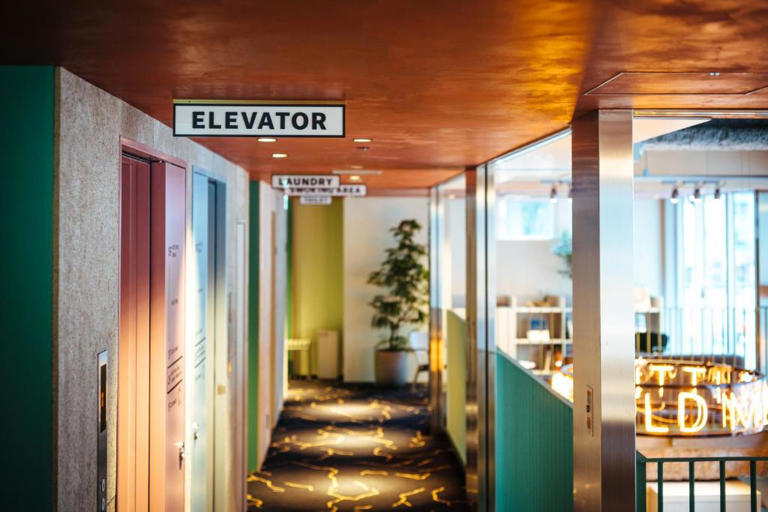
- Kanto Tourism
- Kanto Hotels
- Kanto Bed and Breakfast
- Kanto Vacation Rentals
- Flights to Kanto
- Kanto Restaurants
- Things to Do in Kanto
- Kanto Travel Forum
- Kanto Photos
- All Kanto Hotels
- Kanto Hotel Deals
- Things to Do
- Restaurants
- Vacation Rentals
- Travel Stories
- Rental Cars
- Add a Place
- Travel Forum
- Travelers' Choice
- Help Center
Advise needed: Disneyland, Hakone.. how to plan - Kanto Forum
- Asia
- Japan
- Kanto
Advise needed: Disneyland, Hakone.. how to plan
- United States Forums
- Europe Forums
- Canada Forums
- Asia Forums
- Central America Forums
- Africa Forums
- Caribbean Forums
- Mexico Forums
- South Pacific Forums
- South America Forums
- Middle East Forums
- Honeymoons and Romance
- Business Travel
- Train Travel
- Traveling With Disabilities
- Tripadvisor Support
- Solo Travel
- Bargain Travel
- Timeshares / Vacation Rentals
- Japan forums
- Kanto forum

This is really the trip for kids and main interest is to is to Disneyland and Hakone (prefer overnight with 2 children in tow). One of my concern is how to manage the trip to Hakone with the luggages as we will likely to going by train and the advice is to just bring an overnight bag. Another question is does it make sense to go disneyland first, then Hakone then back to Tokyo for the remaining duration or should do Hakone first then disneyland later? Lastly any other recommendation for places to visit for children? Interest.. cars , pokemons, marvels, sanrio.
My apology for the lengthy message and thank you in advance on the suggestions.
4 replies to this topic

TDR - better visit on weekdays to avoid overly long lines. Buy advance TDR tickets if possible.
https://www.japan-guide.com/e/e3016_tickets.html
In Tokyo, also check out the re-opened teamLab Borderless , Harry Potter Studio, Ghibli museum etc.
Hakone - an o/n would suffice for most travellers.
In Japan , use luggage delivery service to send luggage to hotels 1 day in advance.
http://www.japan-guide.com/e/e2278.html
Since Disney is your priority, I highly recommend staying in the resort for a few days. It gives you a total Disney experience of immersion. It's also very convenient to have a room where you can go back and rest whenever you want, especially when you have 2 small kids.
In addition to the places already mentioned, go to a Pokemon Center and cafe if you can get a reservation.

https://www.hakonenavi.jp/international/en/
https://www.odakyu.jp/english/romancecar/
https://en.puroland.jp/language/
- Hierarchy: Mimaru, Monday, Minn, MyStays, Sakura 2:02 am
- Where to stay area/hotels for family of 6? 1:59 am
- Best Shinkansen from Tokyo Station to Kyoto Station 1:43 am
- Gora Hanaougi or Yoshimatsu or Hakone Kyuan 1:42 am
- Izu peninsula 1:27 am
- Flowers in May? 1:17 am
- Spending Money 13 days (Australia family) 1:08 am
- Express bus to Oshino Hakkai 1:04 am
- Sashiko shopping 12:59 am
- Vegetarian Ryokan for Family 11:44 pm
- What would you do/where would you stay for 24 hours in Tokyo 10:26 pm
- Train peak hour? 10:21 pm
- Travel to Kyoto first then return back to Tokyo from S F? 6:26 pm
- Boarding pass to re-enter security at Haneda yesterday
- Kusatsu Onsen best ryokan 8 replies
- Best teppanyaki/sushi 3 replies
- Japan Rail Pass and travelling by train from Tokyo 7 replies
- Hiroshima to Mount Fuji/Kawaguchi-ko 3 replies
- Public transportation from Haneda airport 23 replies
- Suica card or Pasmo Card 7 replies
- Owakudani to view Mount Fuji? 9 replies
- Just got switched to haneda airport. Anything open at 5 am? 3 replies
- Cycling along Arakawa river? 2 replies
- Tempura Shop in Tokyo, Yokohama 8 replies

COMMENTS
Fun things to do in Tokyo by booking in advance. DAY 2: Shibuya & Harajuku (including Shibuya Sky) DAY 3: Shinjuku. DAY 4: Asakusa & Akihabara Electric Town. DAY 5: North Eastern Tokyo (including Tokyo SkyTree) DAY 6: Southern Tokyo: Ginza, Minato & Odaiba (including teamLab Planets/Borderless) OPTIONAL: Day trip to Hakone to see Mt Fuji. More ...
Public Holidays. Arriving in Tokyo can be both a thrilling and bewildering experience—especially if it's your first visit. In order to get around as smoothly as possible, make sure to familiarize yourself with the basics. Follow the links below to find out how to get a Travel IC card, which is the easiest method to pay for transit in the city.
Useful resources for first timers. Check all the dos and donts for when you are planning your first trip to Japan.; Learn what to pack for Japan to ensure you have the perfect wardrobe for every season.; When planning your first trip to Tokyo, it's a good ideal to check the best time to visit Japan.Remember that cherry blossom season is a lot busier and more expensive.
On Day 7 of your Tokyo itinerary, take a day trip to Hakone or Kawaguchiko - hot spring towns offering fabulous views of Mount Fuji. ... Things to remember while travelling to Tokyo. Plan your Tokyo itinerary based on climate and weather conditions. Check the weather forecast each morning for a pleasant experience.
Planning Your Trip . Best Time to Visit: The spring is a beautiful time to see cherry blossoms blooming around the city, which typically happens in March and April. Language: Japanese Currency: Yen (110 yen equals about $1) Getting Around: Tokyo has an extensive transit network with local subways and regional trains that can take you anywhere you need to go.
This Tokyo itinerary has got exactly what you need to help plan your trip! Tokyo is a sprawling city that connects modernity with deep Japanese tradition, which shines through in its rich history, fascinating attractions, and cosmopolitan neighborhoods. From its mouth-watering food to its beautiful architecture and parks, the Japanese capital ...
4-Day Tokyo Itinerary. Four days in Tokyo gives you enough time to see the city and make one day trip out of the city. My four-day Tokyo itinerary is the best way to make use of four days in this incredible city. 5-Day Tokyo Itinerary. Five days in Tokyo allows for an awesome experience of the city and time for a daytrip out of the city.
Plan on the go with our free travel app. With Wanderlog's mobile travel planner on Android and iOS, access and edit your trips wherever you go — even while offline. Keep your places to visit, flight/hotel reservations, and day-by-day itineraries for your trip to Tokyo in our web and mobile app vacation planner.
This itinerary has been designed to cover specific sections of the city and groups attractions on each day to reduce travel time and backtracking. Here's a summary breakdown of this Tokyo Itinerary: Day 1: Harajuku and Shibuya. Day 2: Gotokuji Temple, Shimokitazawa and Shinjuku. Day 3: Asakusa & Akihabara.
Take day trips to Nikko, Kamakura and/or Mt. Fuji. Tokyo's such a massive city that you could spend four whole days here (or even longer) and still not see everything. However, getting out of town can provide you essential context. Many travelers hear north to Nikko, a shrine town nestled deep in the mountains of Tochigi prefecture.
Day 2: Meiji Shrine, Harajuku and Shibuya. Day 3: Tokyo Disneyland. Day 4: Ueno, Ameya Yokocho, Asakusa, and Tokyo Skytree. Day 5: Take a Day Trip to Mt Fuji from Tokyo. Day 6: DisneySea. Day 7: Tokyo Metropolitan Government Building and Odaiba. Tokyo Itinerary 7 Days Map. The Most Efficient Way to Travel Around Tokyo.
Sensoji Temple (also known as Asakusa Kannon) is the oldest Buddhist temple in the whole of Tokyo. It dates back to the year 645. Legend says that the temple has been build for the goddess of mercy, Kannon. More than 30 million people visit the temple every year, so you can expect it to be a little busy.
Whether you have three days in Tokyo or five full days to explore, this itinerary can work for just about any trip length—it really just depends on your preferred pace. - Day 1: Tsukiji Fish Market & exploring Akihabara. - Day 2: Temples and the famed "kitchen street". - Day 3: Shibuya Crossing & Harajuku girls.
However, if you've never been before and don't know where to start, don't worry. We've put together the perfect 4-day Tokyo itinerary for first-time visitors. From visiting popular tourist spots to sampling delicious Japanese food, this fun-filled guide has it all! Get Your Guide. DAY 1. TeamLab Planets.
Here is how the system works: Tokyo Pass: A 72-hour subway ticket (for Tokyo Metro and Toei line) can be bought as an add-on to Tokyo Pass, making it cheaper than paying for a single train fare each time. 1. Using Local Trains with IC cards (SUICA or PASMO) Local trains in Japan run on IC (Integrated Circuit) Cards.
Photo: @audyscala. Table of Contents Show. A Little Bit About this 4-Day Tokyo Itinerary. Where to Stay in Tokyo. Tokyo Itinerary Day 1: Ueno and Akihabara. Tokyo Itinerary Day 2: Ginza and Roppongi. Tokyo Itinerary Day 3: Asakusa and Shibuya. Tokyo Itinerary Day 4: Best Time to Visit Tokyo.
Conveniently set in the Edogawa district of Tokyo, 7 Rooms Hotel & Cafe is situated 1.3 km from Furukawa Shinsui Park, 1.5 km from Gyosen Park and 1.6 km from Ukita Park. The 2-star hotel has air-conditioned rooms with a private bathroom and free WiFi. The property is non-smoking and is located 700 metres from Subway Museum.
On a 7-day trip, it's perfect to spend 3 days in both Tokyo and Kyoto, the two must-see cities in Japan. Here is the suggested itinerary, for inspiration: Days 1-3: Tokyo (Asakusa, Meiji Shrine, Pokémon Center, ramen-making, and a ninja experience) Days 4-6: Kyoto (Fushimi Inari Shrine, geisha, kimono wearing, and a ryokan) Day 7: Departure.
Build your perfect trip to this city. Tokyo, the dynamic capital of Japan, seamlessly blends tradition with innovation. Tokyo Tower overlooks bustling districts, while Asakusa's historic charm and Meiji Shrine's serenity offer cultural richness. Shibuya Crossing and Akihabara showcase the city's fast-paced energy and futuristic spirit.
Day 1: Explore Shinjuku. Day 2: Visit Meiji Shrine, Harajuku & Shibuya. Day 3: A Magical Day Out in Tokyo Disneyland. Day 4: Visit Ueno, Ameya Yokocho, Asakusa, and Tokyo Skytree. Day 5: Day Trip from Tokyo to Mt. Fuji. Day 6: Have Fun at DisneySea. Day 7: Tokyo To Osaka Road Trip. 1.
It's also a good idea to learn a few basic Japanese phrases before you go, such as "hello" (konnichiwa), "thank you" (arigatou gozaimasu), and "excuse me" (sumimasen). 4. Tokyo is shockingly clean. During your trip, you probably won't see a single piece of trash on the ground. Really!
As Japan's capital and the world's most populous metropolis, Tokyo offers tradition and innovation, and unlimited opportunities to eat, shop and explore. Tokyo is located on Tokyo Bay in the Kanto region of Honshu, Japan's largest island. The closest airport airports are Haneda officially known as Tokyo International Airport, and Narita ...
Embark on a 6-day adventure through the bustling cityscapes of Tokyo and the scenic beauty of Yokohama. Begin your journey in the serene Shinjuku Gyoen National Garden, a green oasis amidst the urban sprawl, before diving into the characteristic neighborhood of Shinjuku City, where a full day of exploration awaits.
In summary, the estimated cost of a 6-day 5-night trip to Tokyo can range from $1,690 to $3,760, depending on various factors such as the type of accommodation, activities, and dining options. However, being flexible and planning ahead can help save money and make the trip more affordable. Tokyo 6-Days Itinerary.
Internet access in Tokyo. The best way to use your mobile phone in Tokyo is by renting a Japanese SIM which will allow you to use the Internet both to browse and use apps and to make calls via VOIP. These are special cards designed for tourists and do not allow calls or SMS due to the law on terrorism but are very much needed for the Internet.
Afterward, hop on the Hakone Ropeway for a bird's-eye view of the surrounding valleys and volcanic landscapes. The ropeway leads to Owakudani, a crater formed by the eruption of Mt Hakone over 3,000 years ago. Try their famous kuro tamago — eggs boiled in natural sulfurous waters, turning the shells black. It's said that eating one will extend your life by 7 years!
If you're planning a trip to Tokyo on a budget, there's one major money-saving tip I want to share with you that'll help you trim down your accommodation choices.. In order to make the most ...
Dear all. Need your expert advice to help plan a trip. Looking to travel to Tokyo end of August for about 7 to 8 days. we are family of 4 with 2 kids aged 6. Planning to fly into Haneda and for the duration of the trip we will be relying on Public transport. This is really the trip for kids and main interest is to is to Disneyland and Hakone ...
28 likes, 3 comments - superscientific on April 26, 2024: "Rabbit R1 Tokyo travel planning demo! Will this be your travel agent in the future? Check out this example ...
Cozy loungewear, cushions and more themed to Tokyo DisneySea Fantasy Springs Hotel. And last, but not least, there's even merch themed to the brand-new Tokyo DisneySea Fantasy Springs Hotel! For those staying at the hotel, find exclusive postcard sets featuring Mickey Mouse and Minnie Mouse to document your adventures, loungewear, scarves and ...